Forums
- Forums
- Axis And Allies Forum
- General Discussion
- Aviation News
Aviation News
Post a reply
- Go to Next topic
- Go to Welcome
- Go to Introduce Yourself
- Go to General Discussion
- Go to Screenshots, Images and Videos
- Go to Off topic
- Go to Works in Progress
- Go to Skinning Tips / Tutorials
- Go to Skin Requests
- Go to IJAAF Library
- Go to Luftwaffe Library
- Go to RAF Library
- Go to USAAF / USN Library
- Go to Misc Library
- Go to The Ops Room
- Go to Made in Germany
- Go to Campaigns and Missions
- Go to Works in Progress
- Go to Juri's Air-Raid Shelter
- Go to Campaigns and Missions
- Go to Works in Progress
- Go to Skinpacks
- Go to External Projects Discussion
- Go to Books & Resources
-
11 months ago
 Main AdminU.S. Air Force Airmen prepare an F-22A Raptor before a flight during Exercise Pitch Black 2024 at Royal Australian Air Force (RAAF) Base Tindal, Australia, July 15. Exercise Pitch Black 24 is a regular large-scale training activity that supports each participating nation’s own sovereign security objectives, and collectively contributes to the wider peace and stability of the Indo-Pacific. (U.S. Air Force photo by Tech. Sgt. Andrea Posey)
Main AdminU.S. Air Force Airmen prepare an F-22A Raptor before a flight during Exercise Pitch Black 2024 at Royal Australian Air Force (RAAF) Base Tindal, Australia, July 15. Exercise Pitch Black 24 is a regular large-scale training activity that supports each participating nation’s own sovereign security objectives, and collectively contributes to the wider peace and stability of the Indo-Pacific. (U.S. Air Force photo by Tech. Sgt. Andrea Posey)_Base_Tindal_Australia_July_15..jpg?width=1920&height=1080&fit=bounds)
U.S. Air Force Staff Sgt. Austin Diaz, 27th Expeditionary Fighter Generation Squadron crew chief, starts up a stored energy system to supply air to an F-22A Raptor during Exercise Pitch Black 2024 at Royal Australian Air Force (RAAF) Base Tindal, Australia, July 15. Exercise Pitch Black 24 is a regular large-scale training activity that supports each participating nation’s own sovereign security objectives, and collectively contributes to the wider peace and stability of the Indo-Pacific. (U.S. Air Force photo by Tech. Sgt. Andrea Posey)_Base_Tindal_Australia_July_15..jpg?width=1920&height=1080&fit=bounds)
A B-52H Stratofortress takes off in support of exercise AGILE WARBIRD at at Minot Air Force Base, North Dakota, July 15, 2024. Agile Combat Employment exercises like these sharpen Airmen’s ability to mobilize quickly and ensure they are prepared to operate Minot bombers from anywhere at a moment’s notice. (U.S. Air Force photo by Senior Airman Alexander Nottingham)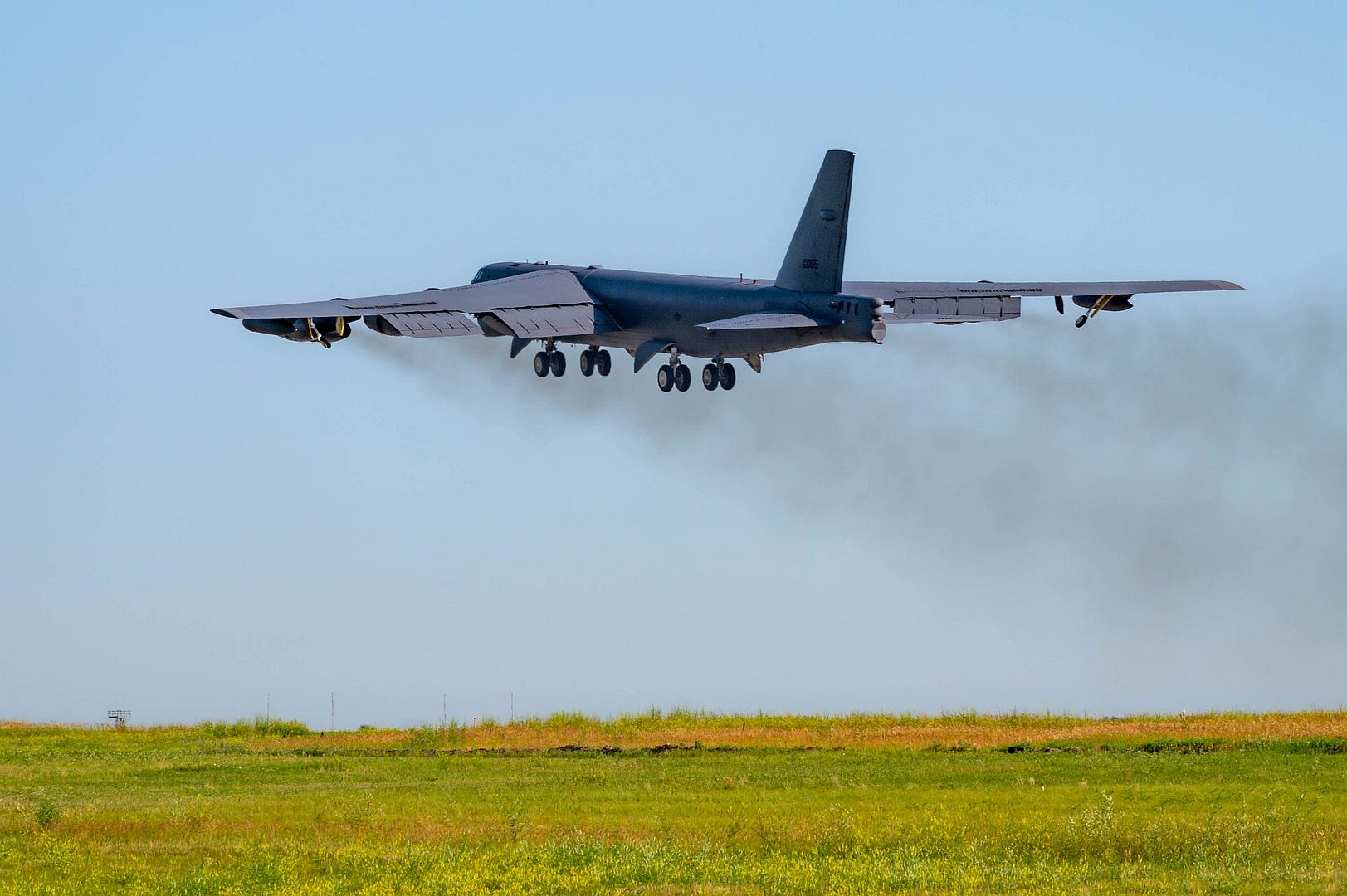
A B-29 Superfortress "Doc" aircraft taxis during 2024 Wings Over Whiteman Air Show at Whiteman Air Force Base, Mo., July 14, 2024. WOW is a biennial air show hosted at Whiteman AFB. Through air shows and flyovers, the U.S. Air Force aims to excite and inspire the public while showcasing the elite skills Air Force pilots possess. (U.S. Air Force photo by Tech. Sgt. Anthony Hetlage)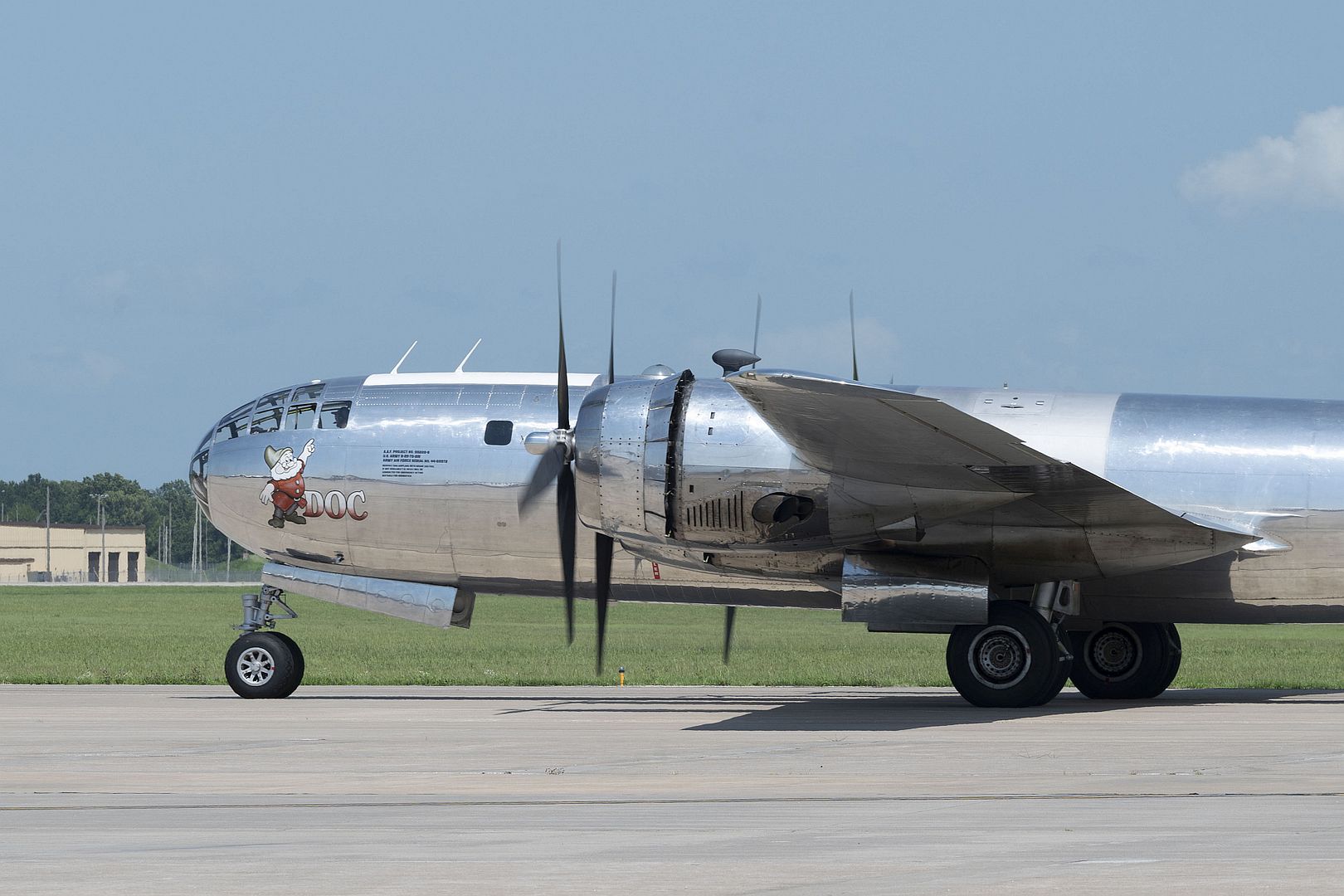
An F-35C Lightning II assigned to the "War Hawks" of Strike Fighter Squadron (VFA) 97 receives fuel from a KC-135 Stratotanker assigned to the 927th Air Refueling Wing, RIMPAC 2024 Detachment. Twenty-nine nations, 40 surface ships, three submarines, 14 national land forces, more than 150 aircraft and 25,000 personnel are participating in RIMPAC in and around the Hawaiian Islands, June 27 to Aug. 1. The world's largest international maritime exercise, RIMPAC provides a unique training opportunity while fostering and sustaining cooperative relationships among participants critical to ensuring the safety of sea lanes and security on the world's oceans. RIMPAC 2024 is the 29th exercise in the series that began in 1971. (U.S. Navy photo by Chief Mass Communication Specialist Paul Seeber)_97_receives_fuel_from_a_KC-135_Stratotanker_assigned_to_the_927th_Air_Refueling_Wing.jpg?width=1920&height=1080&fit=bounds)
DUBAI, United Arab Emirates, July 16, 2024 /PRNewswire/ -- Boeing [NYSE: BA] and Emirates SkyCargo today announced an order for five additional 777 Freighters as the operator again picks the world's most capable twin-engine freighter to meet growing cargo demand. The new purchase takes Emirates' order book to 245 Boeing widebody airplanes, including 10 777 Freighters.
Emirates SkyCargo is the cargo division of Emirates, the world's largest international airline. Its investment in the 777 Freighter will boost main deck cargo capacity 30 percent by 2026. In all, Emirates' freighter fleet will grow to 17 airplanes – including 777 Freighters, 777 converted freighters and 747 Freighters.
"Demand for our world-class product and services is growing exponentially, further amplified by Dubai's Economic Agenda which aims to double foreign trade and reinforce the city's position as a global trading hub. This investment in additional Boeing 777 capacity enables us to cater to customer demand and marks a step forward on our long-term strategic growth plan," said His Highness Sheikh Ahmed bin Saeed Al Maktoum, Chairman and Chief Executive, Emirates airline and Group. "The next phase of our strategy will include a full assessment for our future freighter fleet reviewing all aircraft options to ensure we are best equipped to respond to the evolving demands of the market and reaffirming our confidence in the role of airfreight and, more specifically, Emirates SkyCargo, in global trade."
The 777 Freighter can fly further (9,200 kilometers / 4,970 nautical miles) and carry more freight (102 metric tons / 112 tons) than any other twin-engine cargo jet. This range and payload capability allows operators to offer more long-range, nonstop flights to connect markets such as the Middle East with the U.S. and Europe – linking critical high-value cargo markets without refueling.
"We are honored that Emirates SkyCargo, renowned for operational excellence and innovation, has once again selected the Boeing 777 Freighter to extend the reach of its global network," said Stephanie Pope, president and CEO of Boeing Commercial Airplanes. "We deeply value Emirates' trust in the Boeing widebody family and are committed to supporting their long-term strategic growth plan."
As the market leader in cargo airplanes, Boeing provides more than 90% of the worldwide dedicated freighter capacity, including new production and converted airplanes. The 777 Freighter is the company's best-selling freighter airplane of all time with more than 265 deliveries to date.
As a leading global aerospace company, Boeing develops, manufactures and services commercial airplanes, defense products and space systems for customers in more than 150 countries. As a top U.S. exporter, the company leverages the talents of a global supplier base to advance economic opportunity, sustainability and community impact. Boeing's diverse team is committed to innovating for the future, leading with sustainability, and cultivating a culture based on the company's core values of safety, quality and integrity. Boeing's relationship with the Middle East extends back to 1945. Since then, Boeing has established a number of offices across the region including in Riyadh, Dubai, Abu Dhabi, Doha and Kuwait. Join our team and find your purpose at boeing.com/careers.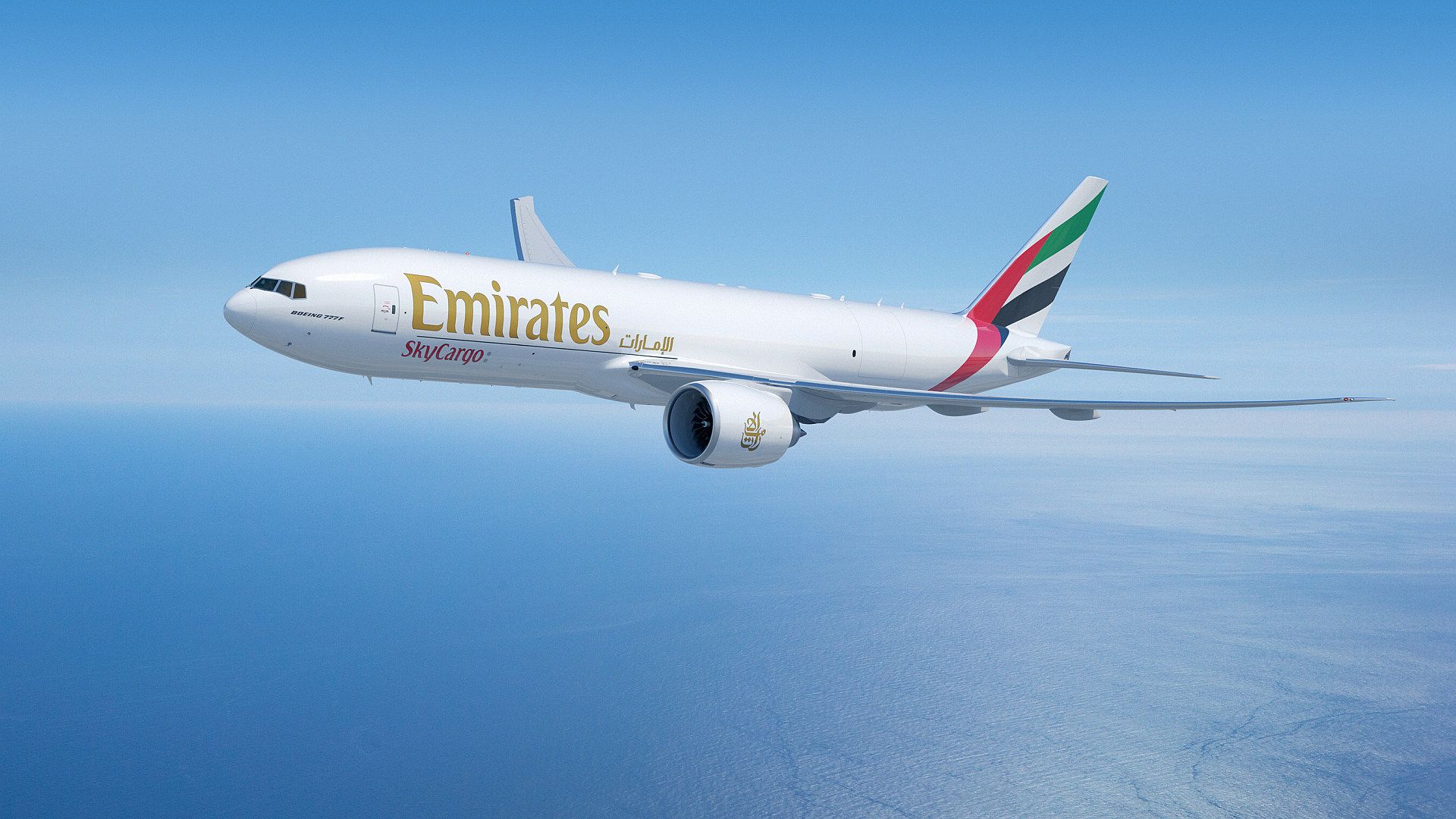
The Italian Airforce have begun the first wave of takeoffs at, the international exercise Pitch Black 2024 in Darwin, Northern Territory, Australia.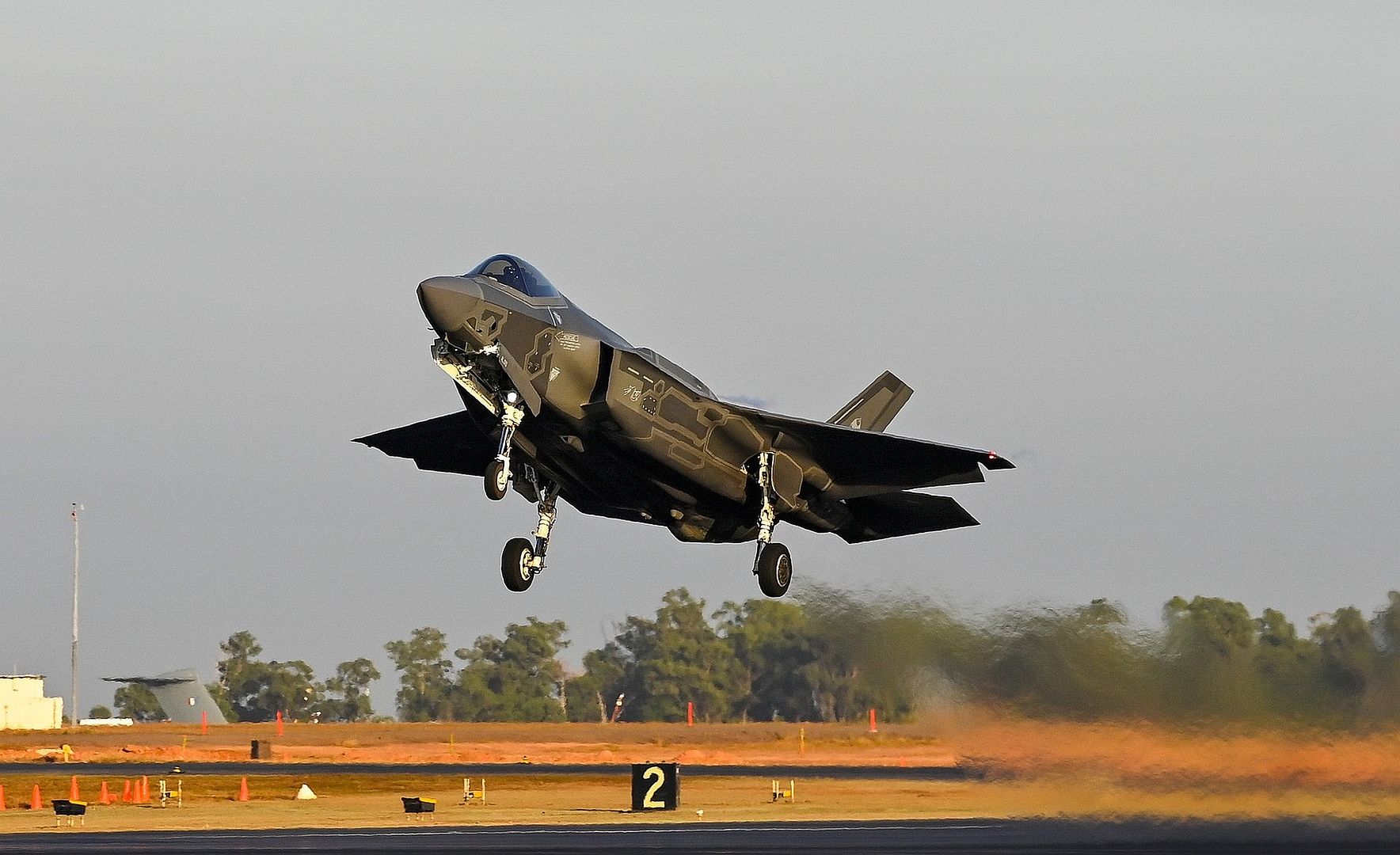
A completely new environment for the Aeronautica Militare being called to confront an unknown context and very different - in many ways - from those in which it is normally used to operate, not only in Italy but also in Nato scenarios.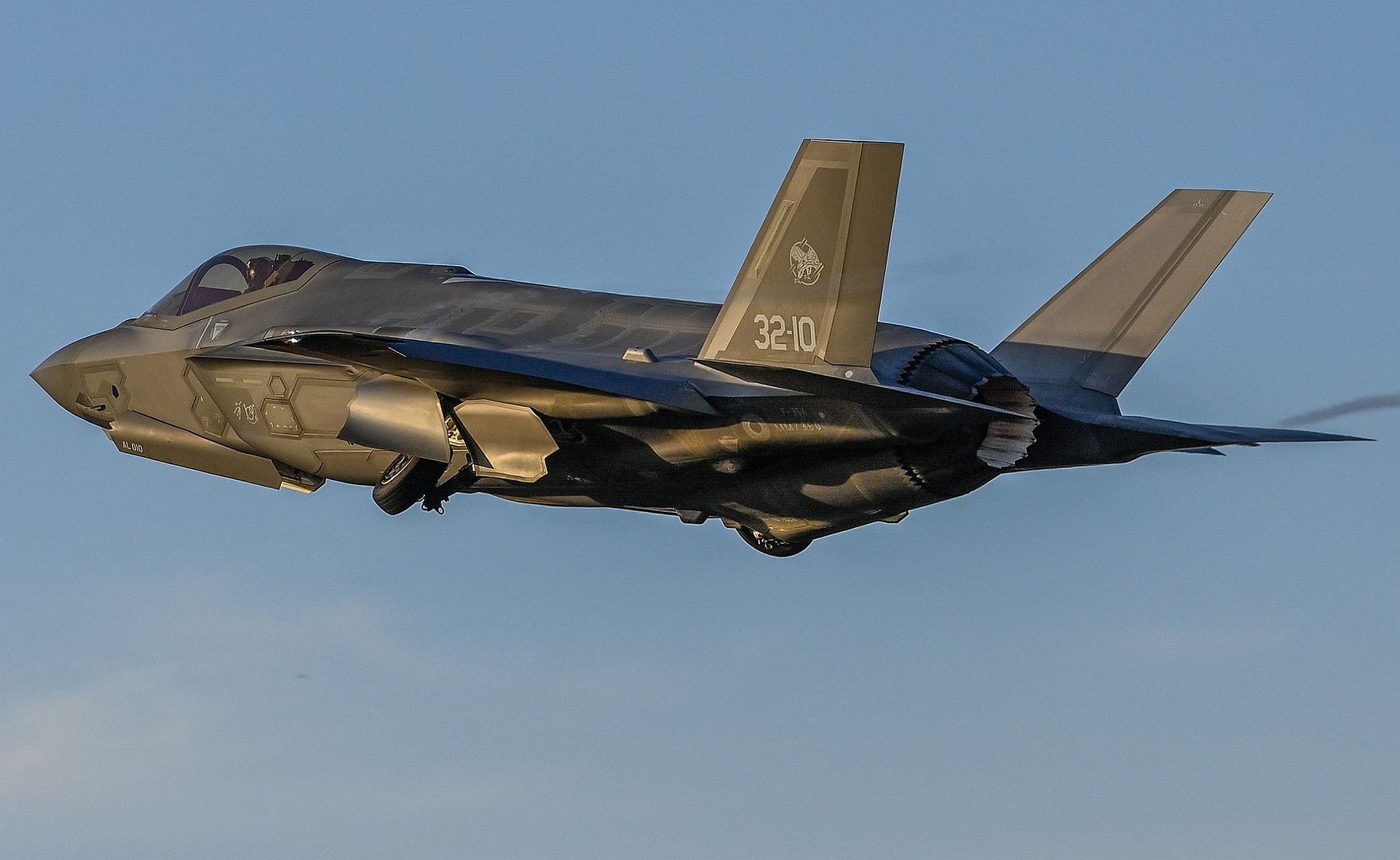
The Pitch Black 2024 is basically divided into 3 weekly blocks with different varieties, daytime, evening and nighttime.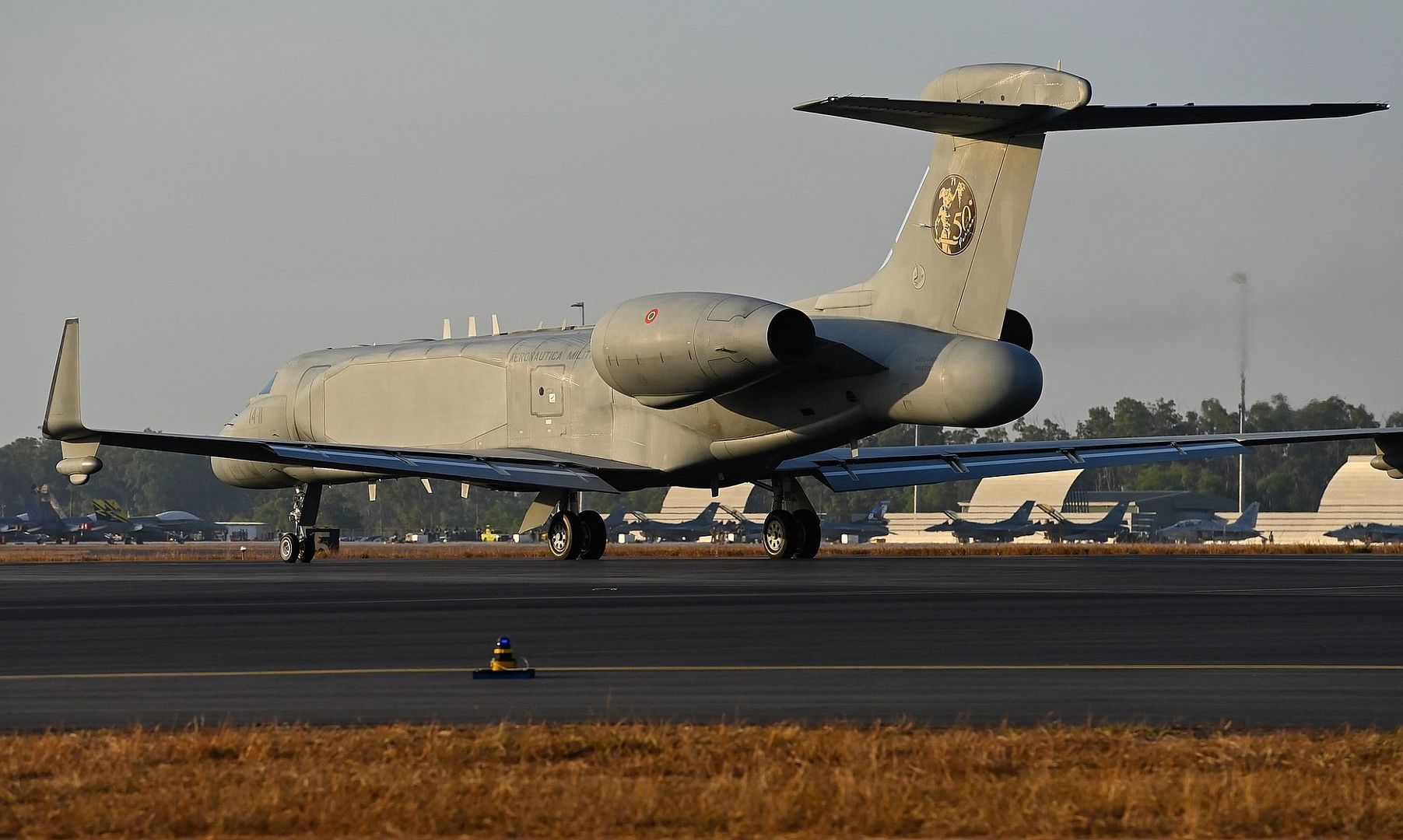
At the beginning, the flying activity is finalized, mainly, to familiarize yourself with the environment and local procedures, measuring also with aircraft and unusual "competitors". In the following weeks, however, the military Air Force missions will be Large Force Exercise, i.e. training activities involving a large number of aircraft.
(Photos courtesy of the Aeronautica Militare)
-
11 months ago
 Main AdminLegend-class cutter USCGC Midgett (WMSL 757) hosts a multi-ship interdiction and boarding exercise with Italian Navy offshore patrol vessel ITS Montecuccoli (P 432), who fast-roped a boarding team of seven onto Midgett simulating an at-sea boarding of a suspected arms smuggling vessel during Exercise Rim of the Pacific (RIMPAC 2024), July 15, while underway in the Pacific Ocean. Twenty-nine nations, 40 surface ships, three submarines, 14 national land forces, more than 150 aircraft, and 25,000 personnel are participating in and around the Hawaiian Islands, June 27 to Aug. 1. The world’s largest international maritime exercise; RIMPAC provides a unique training opportunity while fostering and sustaining cooperative relationships among participants critical to ensuring the safety of sea lanes and security on the world’s oceans. RIMPAC 2024 is the 29th exercise in the series that began in 1971. (U.S. Coast Guard photos by David Lau)
Main AdminLegend-class cutter USCGC Midgett (WMSL 757) hosts a multi-ship interdiction and boarding exercise with Italian Navy offshore patrol vessel ITS Montecuccoli (P 432), who fast-roped a boarding team of seven onto Midgett simulating an at-sea boarding of a suspected arms smuggling vessel during Exercise Rim of the Pacific (RIMPAC 2024), July 15, while underway in the Pacific Ocean. Twenty-nine nations, 40 surface ships, three submarines, 14 national land forces, more than 150 aircraft, and 25,000 personnel are participating in and around the Hawaiian Islands, June 27 to Aug. 1. The world’s largest international maritime exercise; RIMPAC provides a unique training opportunity while fostering and sustaining cooperative relationships among participants critical to ensuring the safety of sea lanes and security on the world’s oceans. RIMPAC 2024 is the 29th exercise in the series that began in 1971. (U.S. Coast Guard photos by David Lau)_July_15.jpg?width=1920&height=1080&fit=bounds)
_July_15-1.jpg?width=1920&height=1080&fit=bounds)
An F/A-18F Super Hornet from the “Fighting Redcocks” of Strike Fighter Squadron (VFA) 22 launches from the flight deck of the aircraft carrier USS Nimitz (CVN 68) July 16, 2024. Nimitz is underway conducting routine operations. (U.S. Navy photo by Mass Communication Specialist Seaman Anthony Lagunes)_22_launches_from_the_flight_deck_of_the_aircraft_carrier_USS_Nimitz_(CVN_68)_July_16_2024..jpg?width=1920&height=1080&fit=bounds)
An F/A-18F Super Hornet from the “Fighting Redcocks” of Strike Fighter Squadron (VFA) 22 launches from the flight deck of the aircraft carrier USS Nimitz (CVN 68) July 16, 2024. Nimitz is underway conducting routine operations. (U.S. Navy photo by Mass Communication Specialist Seaman Anthony Lagunes)_22_launches_from_the_flight_deck_of_the_aircraft_carrier_USS_Nimitz_auA3ZvuQ5X8v2pn5XvNLPi.jpg?width=1920&height=1080&fit=bounds)
Spanish Air and Space Force soldiers from the 14th Wing perform routine maintenance on a Spanish Air Force Eurofighter Typhoon during Arctic Defender 24 at Eielson Air Force Base, Alaska, July 16, 2024. AD24 is a component of Pacific Skies 24, a months-long deployment hosted by the German Air Force. Germany, France and Spain are partners in the trinational Future Combat Air System, and as the first stop in their deployment, AD24 is used to conduct realistic, total force combat training to maintain a free and open Indo-Pacific region through mission readiness and deterrence. (U.S. Air Force photo by Airman 1st Class Jarrett Smith)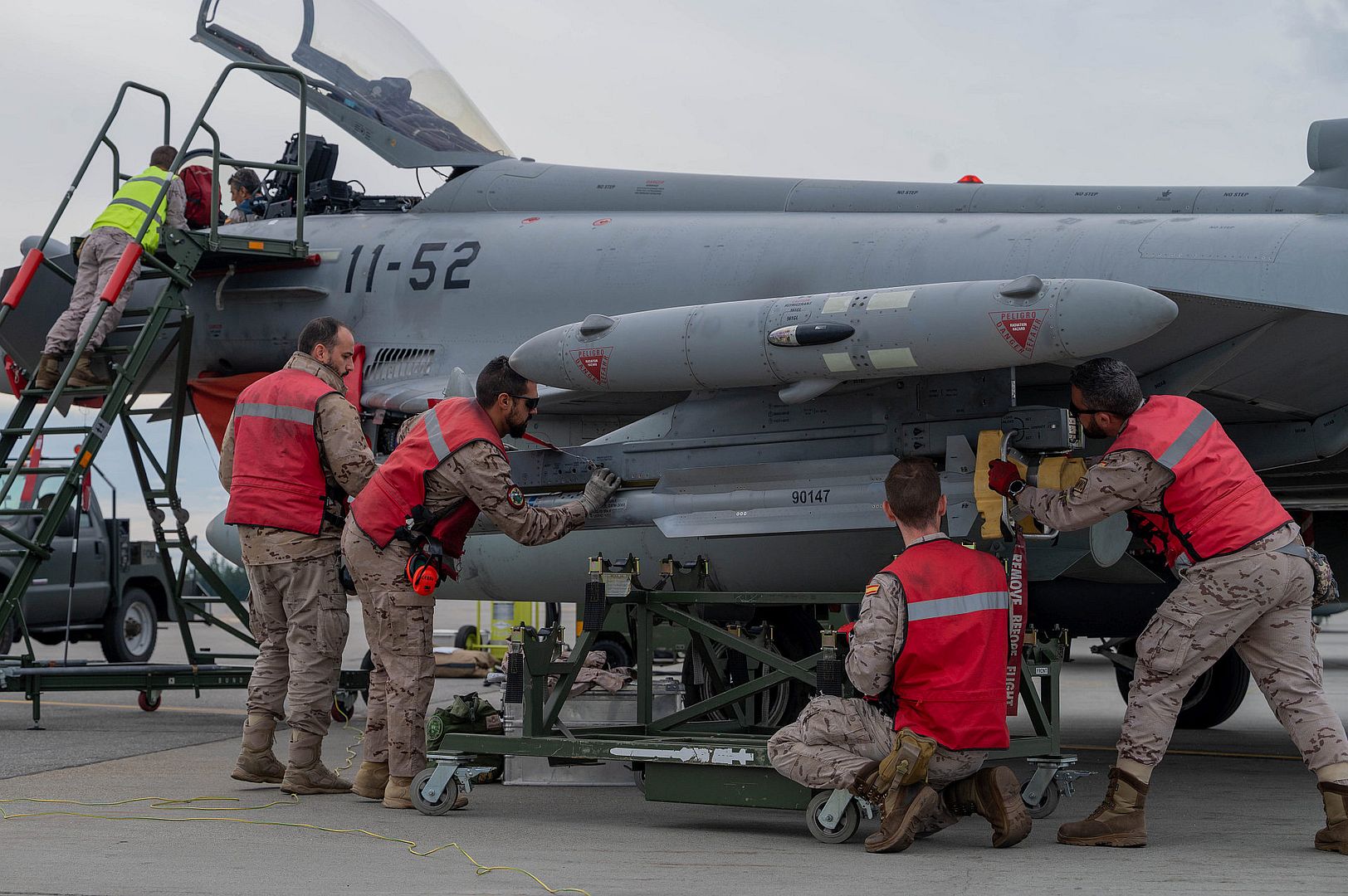
An F-22A Raptor taxis to the flightline during Exercise Pitch Black 2024 at Royal Australian Air Force (RAAF) Base Tindal, Australia, July 15. Exercise Pitch Black 24 is a large-scale training activity that supports each participating nation’s own sovereign security objectives, and collectively contributes to the wider peace and stability of the Indo-Pacific. (U.S. Air Force photo by Tech. Sgt. Andrea Posey)_Base_Tindal_Australia_July_15..jpg?width=1920&height=1080&fit=bounds)
An F-22A Raptor taxis on the flightline during Exercise Pitch Black 2024 at Royal Australian Air Force (RAAF) Base Tindal, Australia, July 15. The U.S. Joint Forces have an enduring commitment to a free and open Indo-Pacific across all domains for the security and wellbeing of our nation and the international community. (U.S. Air Force photo by Tech. Sgt. Andrea Posey)_Base_Tindal_Australia_July_15..jpg?width=1920&height=1080&fit=bounds)
U.S. Air Force Airmen and leadership alongside Bulgarian leaders and air force members pose for a group photo at Bezmer Air Base, Bulgaria, July 16, 2024. The 31st Fighter Wing is integrating within the Bulgarian Air Force ahead of their acquisition of 8 F-16s from Lockheed Martin expected in 2025. (U.S. Air Force photo by Airman 1st Class Synsere Howard)
Portuguese Air Force Maj. Miguel Pousa, 506th Squadron commander, exits a PAF KC-390 Millennium aircraft during cold load training at Ramstein Air Base, Germany, July 15, 2024. During the training, U.S. and Portuguese service members tested the cargo capabilities of the KC-390 aircraft by loading an M142 High Mobility Rocket System.(U.S. Air Force photo by Airman Dylan Myers)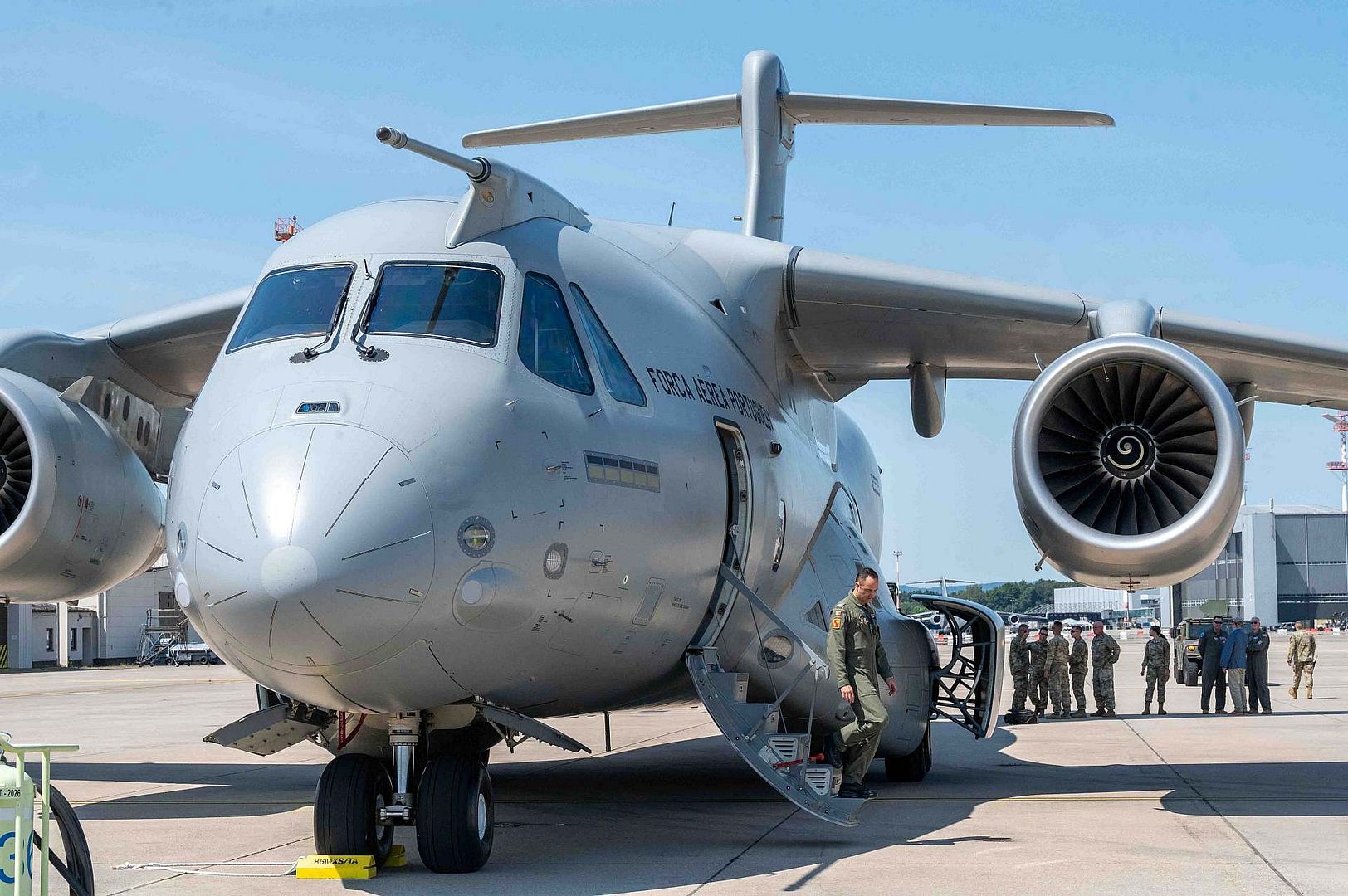
A B-52H Stratofortress assigned to the 69th Bomb Squadron taxis at Fairchild Air Force Base, Washington, July 15, 2024. Four B-52’s arrived from Minot AFB to Fairchild AFB for Agile Combat Employment integration event, Agile Warbird. This training event is for routine purposes to increase unit readiness, as staying sharp and agile requires constant training and diverse integrations. (U.S. Air Force photo by Senior Airman Morgan St Marks)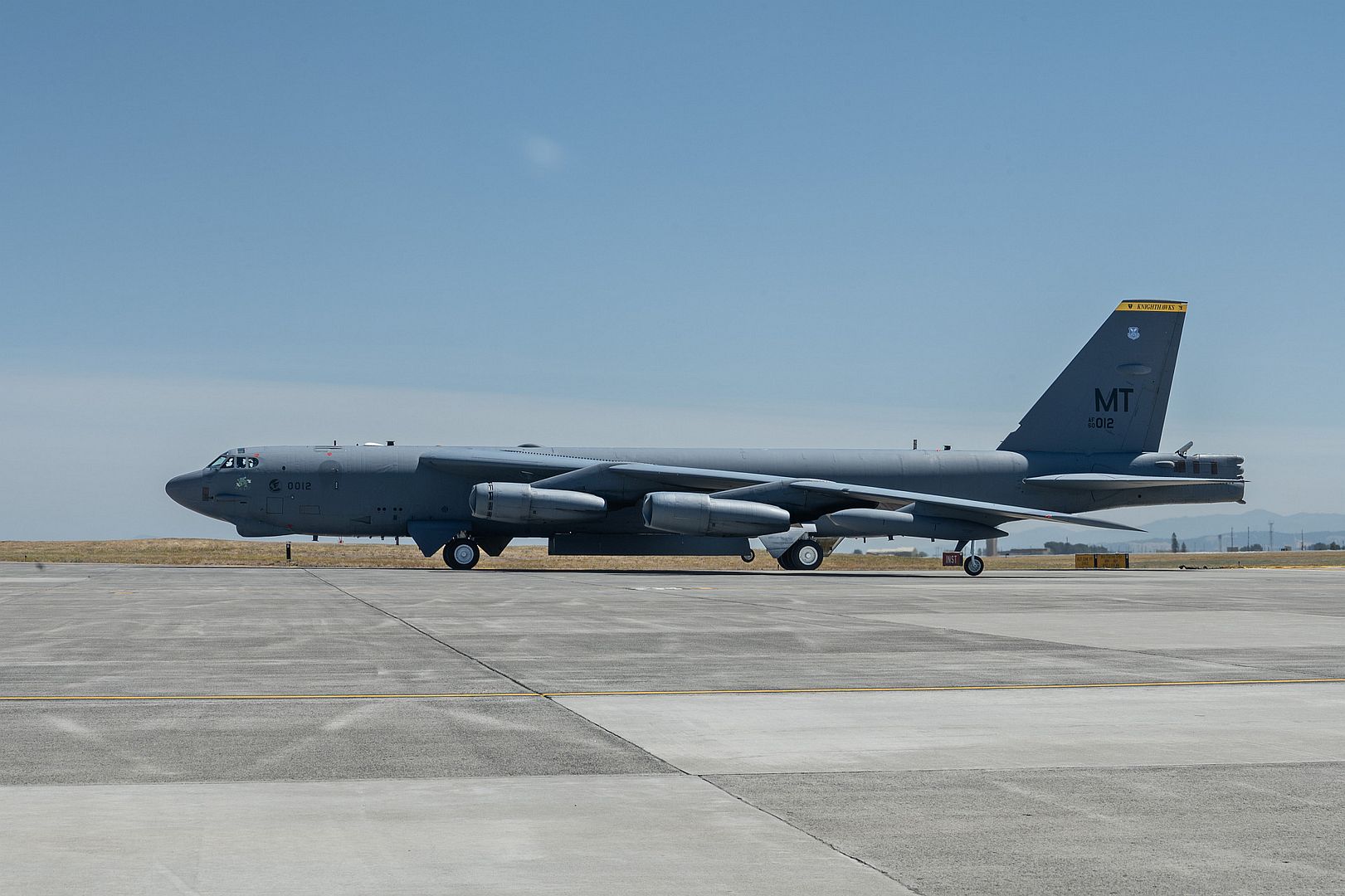
A B-52 Stratofortress assigned to the 23rd Bomb Squadron at Minot Air Force Base, North Dakota, sits on the apron at Dyess Air Force Base, Texas, July 15, 2024. The aircraft are operating out of Dyess while upgrades are being made to the Minot runway, showcasing their ability to operate at forward locations. (U.S. Air Force photo by Airman 1st Class Emma Anderson)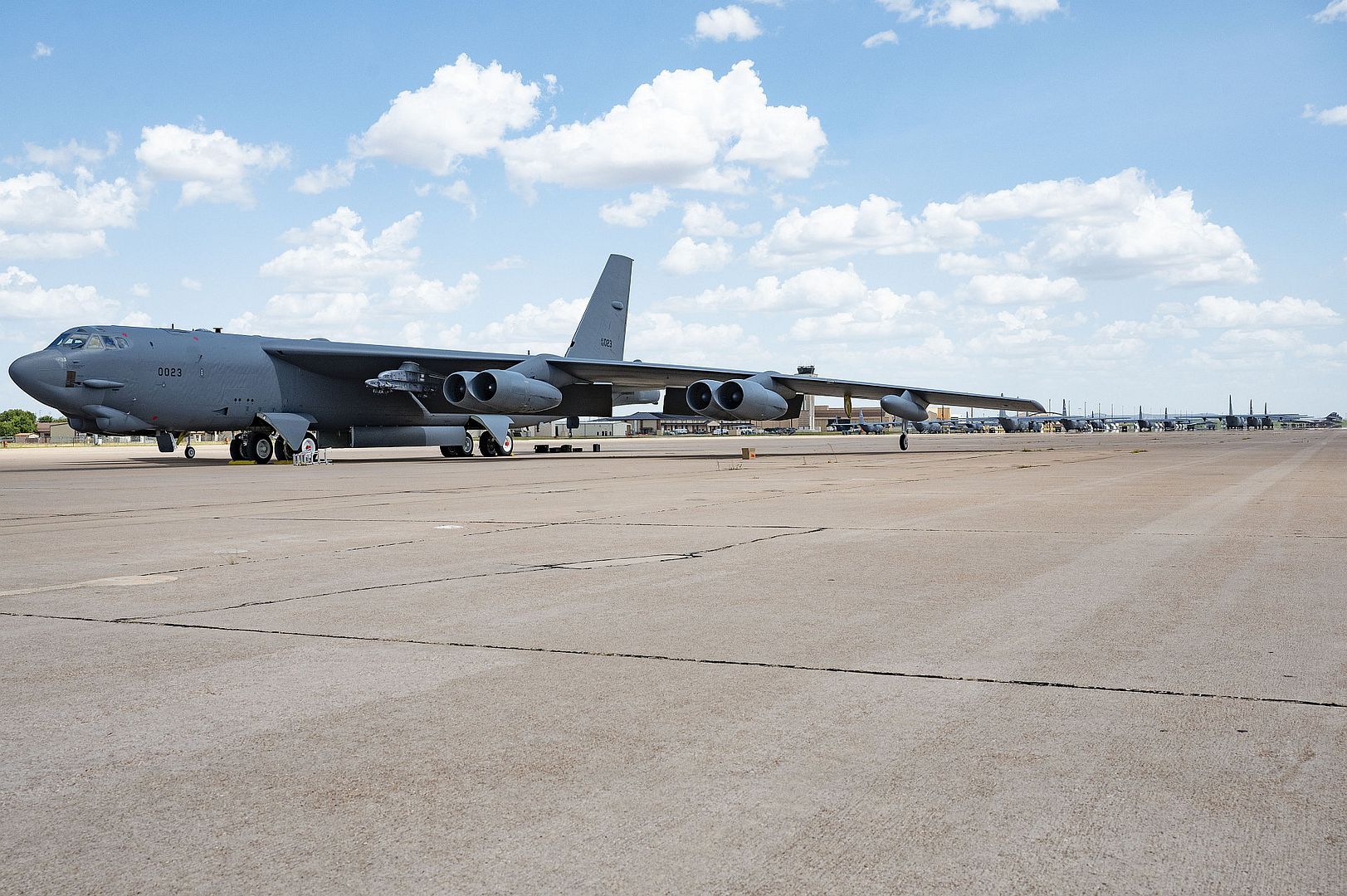
A Bulgarian C-27J Spartan is loaded and prepared for take-off at Aviano Air Base, Italy, July 16, 2024. This is
the first time a Bulgarian C-27J Spartan has landed, loaded and transported official U.S. cargo and personnel.
C-27J Spartans can be configured for transport, maritime patrol, search and rescue or command and control operations.
(U.S. Air Force photo by Tech. Sgt. Justin Carnahan)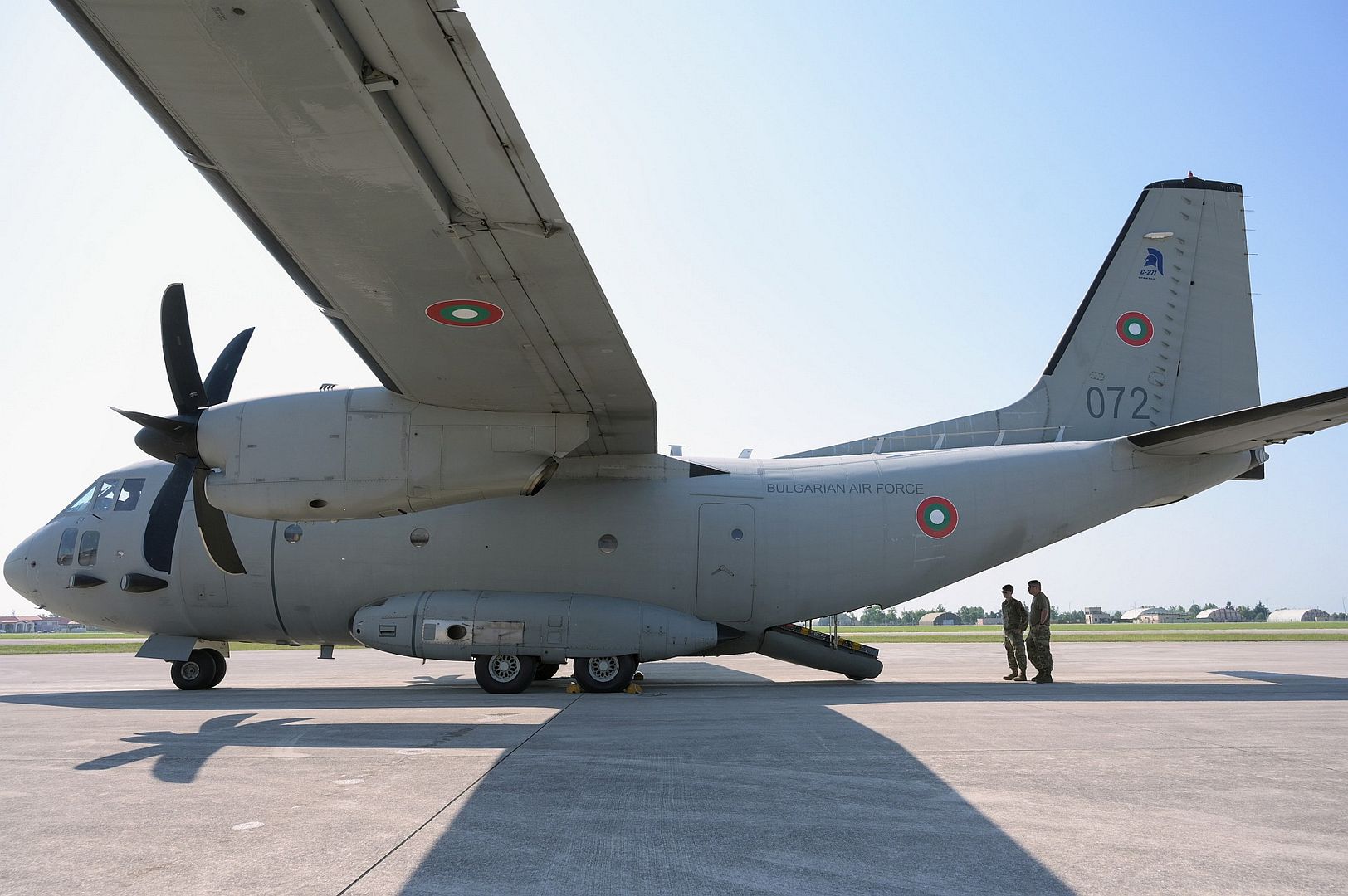
The B-2 Spirit introduced a new era of stealth technology and strategic deterrence 35 years ago when it completed its maiden flight on July 17, 1989..jpg?width=1920&height=1080&fit=bounds)
More than three decades later, in partnership with the U.S. Air Force, Northrop Grumman continues to integrate groundbreaking technology into the B-2 that equip it for tomorrow’s fight, today. The B-2 program recently achieved a major milestone by providing the bomber with its first fieldable, agile integrated functional capability called Spirit Realm 1 (SR 1). SR 1 provides mission critical capability upgrades to the communications and weapons systems via an open mission systems architecture, directly enhancing combat capability and allowing the fleet to initiate a new phase of agile software releases.
“We are rapidly fielding capabilities with zero software defects through the software factory development ecosystem and further enhancing the B-2 fleet’s mission effectiveness,” said Jerry McBrearty, director and B-2 acting program manager, Northrop Grumman. “The agile framework methodology within SR 1 directly supports the Air Force’s initiative to adapt new capabilities in the aircraft, executing the mission today.”
SR 1 features new displays and flight hardware and updates enhancing the B-2’s survivability. SR 1 was fully developed inside the B-2 Spirit Realm software factory that was established through a partnership with Air Force Global Strike Command and the B-2 Systems Program Office. The successful integration of the Spirit Realm software factory led the B-2 to become the first legacy nuclear platform to utilize the Department of Defense’s DevSecOps processes and digital toolsets.
“Our implementation of software factory is opening new doors for the B-2 to carry future weapons and advanced capabilities that will further strengthen our country’s strategic deterrence,” said Colonel Frank Marino, senior materiel leader, B-2 systems program manager, U.S. Air Force.
Spirit Realm leverages integrated digital tools to design, manage, build and test B-2 software more efficiently than ever before. The tools can also link with other legacy systems to enable more rapid testing and fielding and help identify and fix potential risks earlier in the software development process. The program successfully demonstrated its agile software development capabilities in both flight and lab software by rapidly deploying a software update to the integrated test facility where the software could be verified and ultimately loaded onto the aircraft.
As the battlespace evolves, Northrop Grumman continues to outpace the threat by delivering new capabilities in partnership with the U.S. Air Force..jpg?width=1920&height=1080&fit=bounds)
NEW ORLEANS, July 16, 2024 /PRNewswire/ -- Boeing [NYSE: BA] has provided NASA with the second core stage of the Space Launch System (SLS) rocket. Built at NASA's Michoud Assembly Facility (MAF), the core stage is designed to send the Artemis II crew to lunar orbit for the first time in 50 years.
The Boeing-built rocket stage, which is the largest component of the Artemis II mission, will be loaded onto the Pegasus barge and transported 900 miles to NASA's Kennedy Space Center. Once there, it will be integrated with the other Artemis II components, including the upper stage, solid rocket boosters, and NASA's Orion spacecraft inside the Vehicle Assembly Building. This integration is a crucial step in preparation for the Artemis II launch, scheduled for 2025.
"Boeing-built products helped land humankind on the moon in 1969, and we're proud to continue that legacy through the Artemis generation," said Dave Dutcher, vice president and program manager for Boeing's SLS program. "Together, with NASA and our industry partners and suppliers, we are building the world's most capable rocket and paving the way to deep space through America's rocket factory in New Orleans."
The delivery of Core Stage 2 signifies a major achievement in the development of the SLS rocket. This core stage, measuring over 200 feet tall and powered by four RS-25 engines, alongside two solid-fueled booster rockets, will provide the 8.8 million pounds of necessary thrust to propel Artemis II and future missions into space.
SLS is the only rocket capable of carrying crew and large cargo to the moon and beyond in a single launch. Its unmatched capabilities will deliver human-rated spacecraft, habitats, and science missions to the moon, Mars and beyond.
As a leading global aerospace company, Boeing develops, manufactures and services commercial airplanes, defense products and space systems for customers in more than 150 countries. As a top U.S. exporter, the company leverages the talents of a global supplier base to advance economic opportunity, sustainability and community impact. Boeing's diverse team is committed to innovating for the future, leading with sustainability, and cultivating a culture based on the company's core values of safety, quality and integrity. Join our team and find your purpose at boeing.com/careers.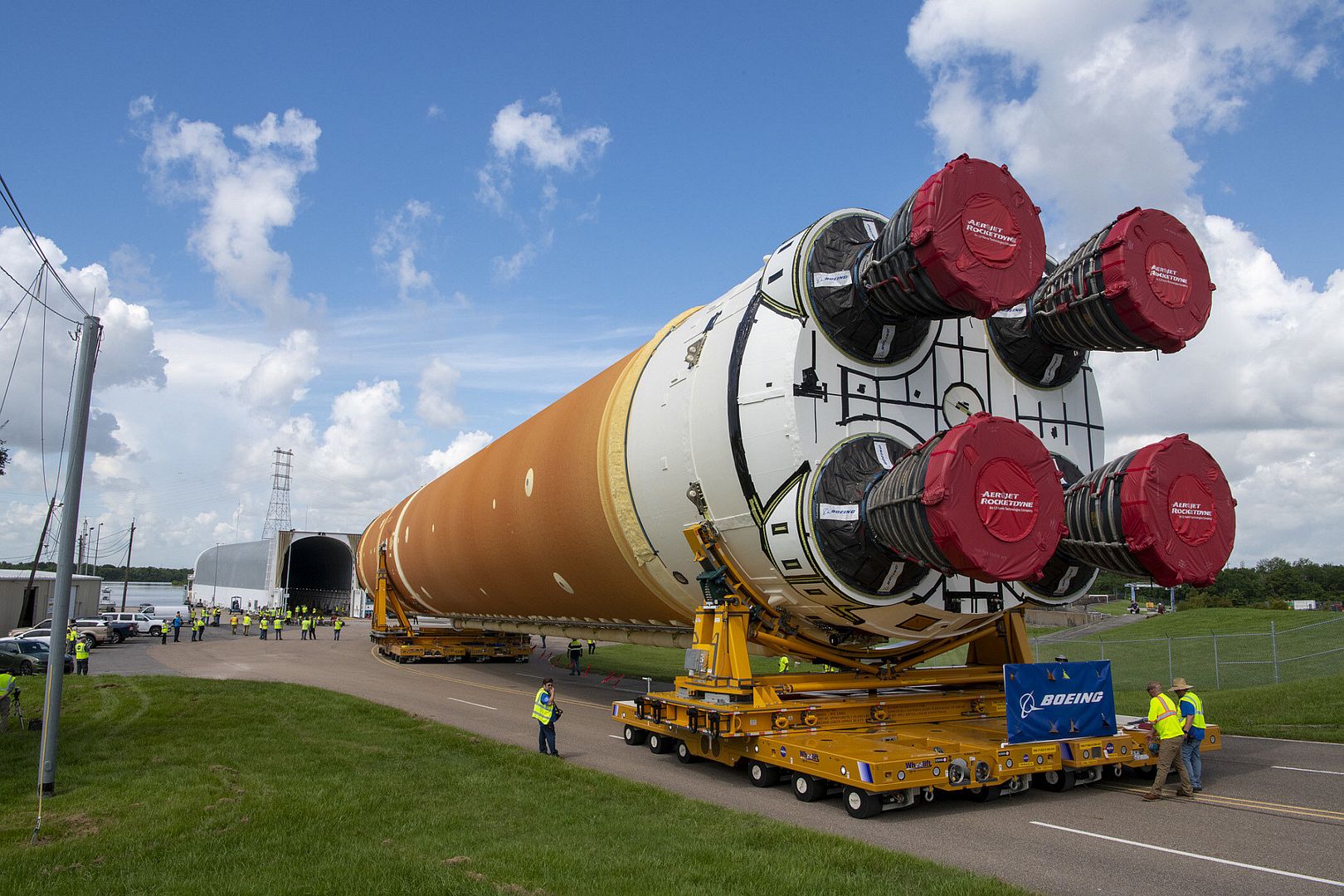
RAF aircraft begin major exercise in Australia.
RAF Typhoons and a Voyager have begun flying sorties as part of Exercise Pitch Black in Australia.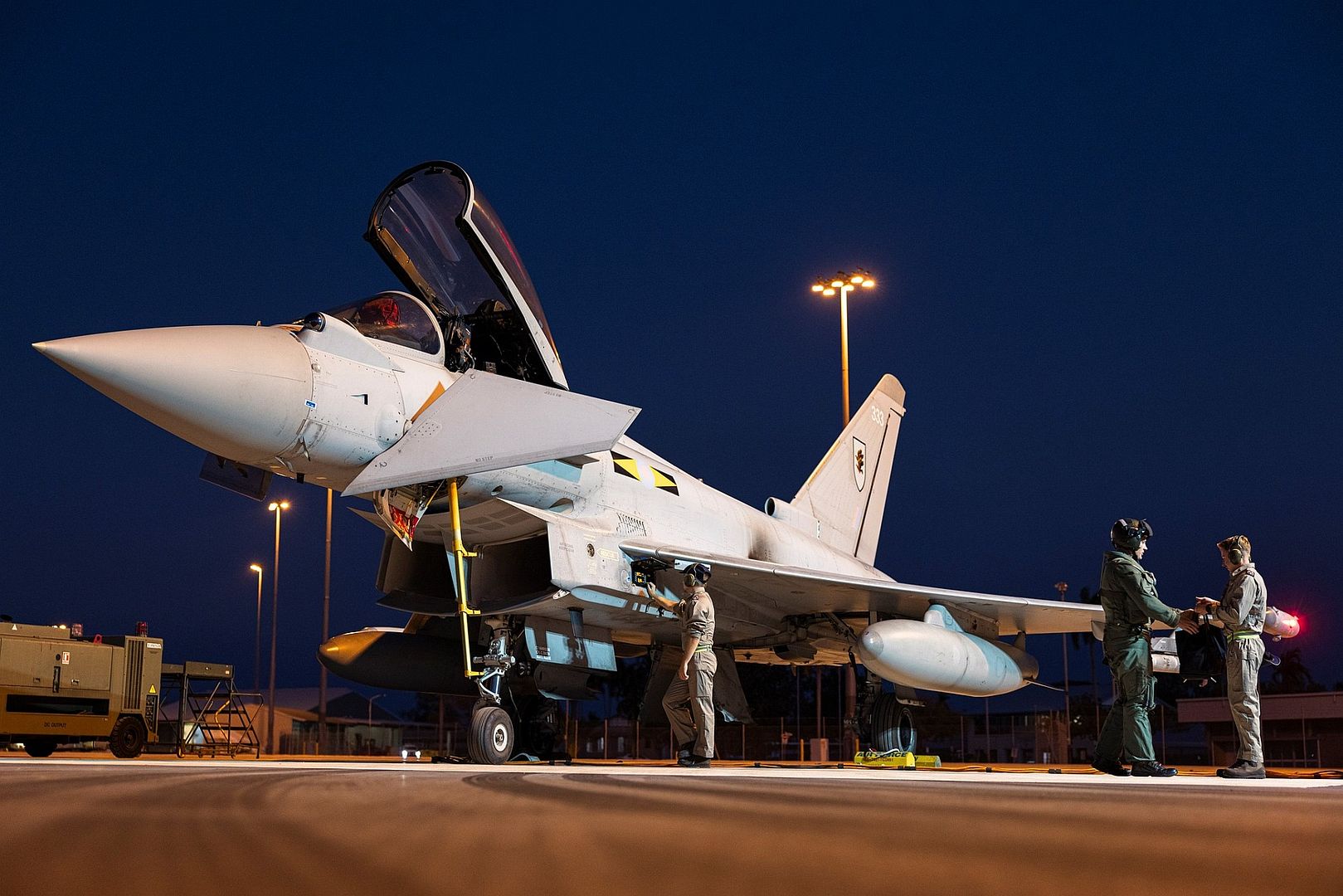
The six Typhoons from XI (F) Squadron, from RAF Coningsby, are currently based at Royal Australian Air Force Base Darwin with the Voyager aircraft from RAF Brize Norton’s Air Mobility Force operating from Royal Australian Air Force Base Amberly.
Exercise Pitch Black began on the 12th July 2024 and will run until 2nd August 2024. Held every two years, Exercise Pitch Black focuses on large scale air missions involving significant numbers of international aircraft and will be the largest in its 43-year history with 20 nations, over 140 aircraft, and up to 4,500 personnel deployed on the exercise.
Wing Commander Robertson said, “The training offered by Exercise Pitch Black is almost unique due to the expanse of Australia, giving pilots exposure to new challenges such as the increased range of operations and sheer number of adversary aircraft that can fit into the vast training airspace. Giving our respective nations a chance to integrate at this detailed, tactical level across all trades and professions strengthens our relationships and ensures interoperability in the future.’’
The exercise was preceded by Exercise Griffin Strike, a 9,000 mile trail from the UK undertaken jointly with the French Air and Space force in a display of long range air power projection.
For the RAF, a significant benefit of Exercise Pitch Black is providing experience in how to deploy over great distances and sustain air operations at range in the Indo-Pacific, whilst working with partner nations in order to foster stronger ties.
(Photos courtesy of the RAF)
-
11 months ago
 Main AdminThe 910th Airlift Wing’s first C-130J-30 Super Hercules aircraft is marshalled to its arrival ceremony, on July 16, 2024, at Youngstown Air Reserve Station, Ohio. The C-130J-30 landed to a standing ovation from the media, distinguished visitors and Reserve Citizen Airmen. The C-130J-30’s arrival is the first of a three-year conversion from the unit’s current C-130H Hercules fleet to the newer airframe model. (U.S. Air Force photo by Staff Sgt. Dylan Bigelow)
Main AdminThe 910th Airlift Wing’s first C-130J-30 Super Hercules aircraft is marshalled to its arrival ceremony, on July 16, 2024, at Youngstown Air Reserve Station, Ohio. The C-130J-30 landed to a standing ovation from the media, distinguished visitors and Reserve Citizen Airmen. The C-130J-30’s arrival is the first of a three-year conversion from the unit’s current C-130H Hercules fleet to the newer airframe model. (U.S. Air Force photo by Staff Sgt. Dylan Bigelow)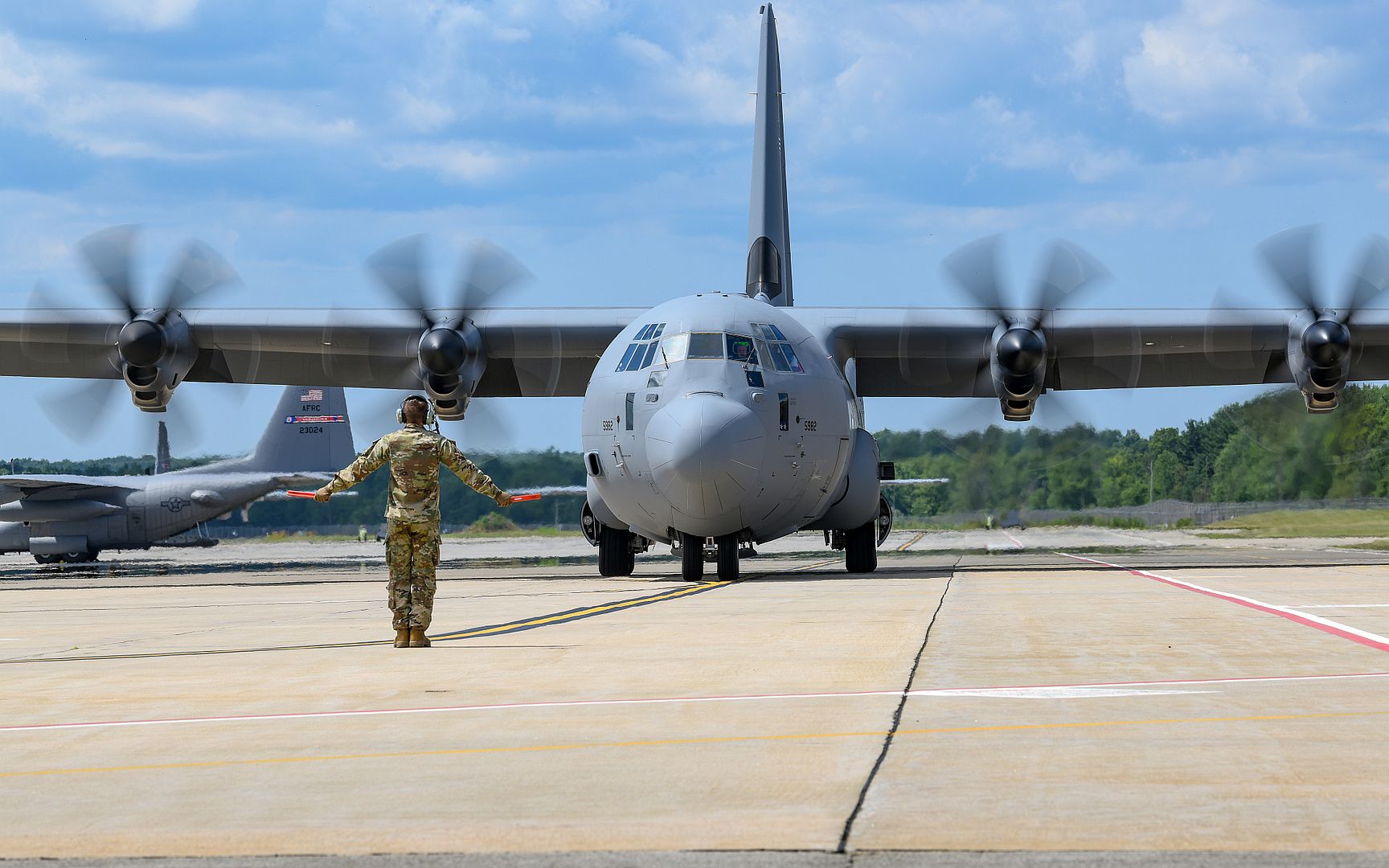
The United States Air Force Test Pilot School’s research division, in partnership with the 586th Flight Test Squadron at Holloman AFB and NASA’s Armstrong Flight Research Center recently conducted a flight test campaign verifying the use of the new AgilePod. Dubbed “Have STRAINger Things,” the tests verified the AgilePod’s utility for rapid airborne experimentation, aimed at reducing lead times and costs that traditionally hinder flight-testing efforts. (Courtesy photos)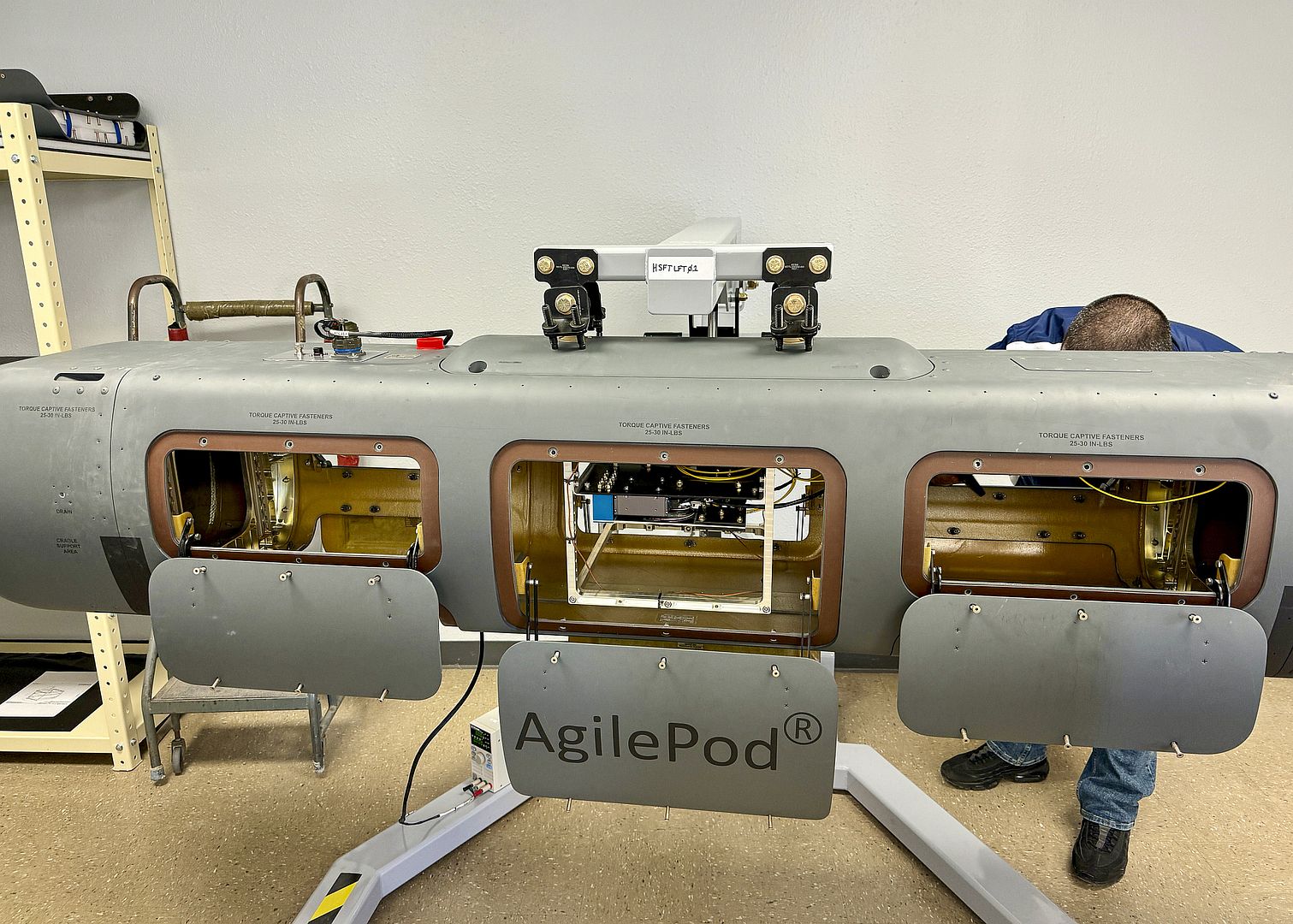
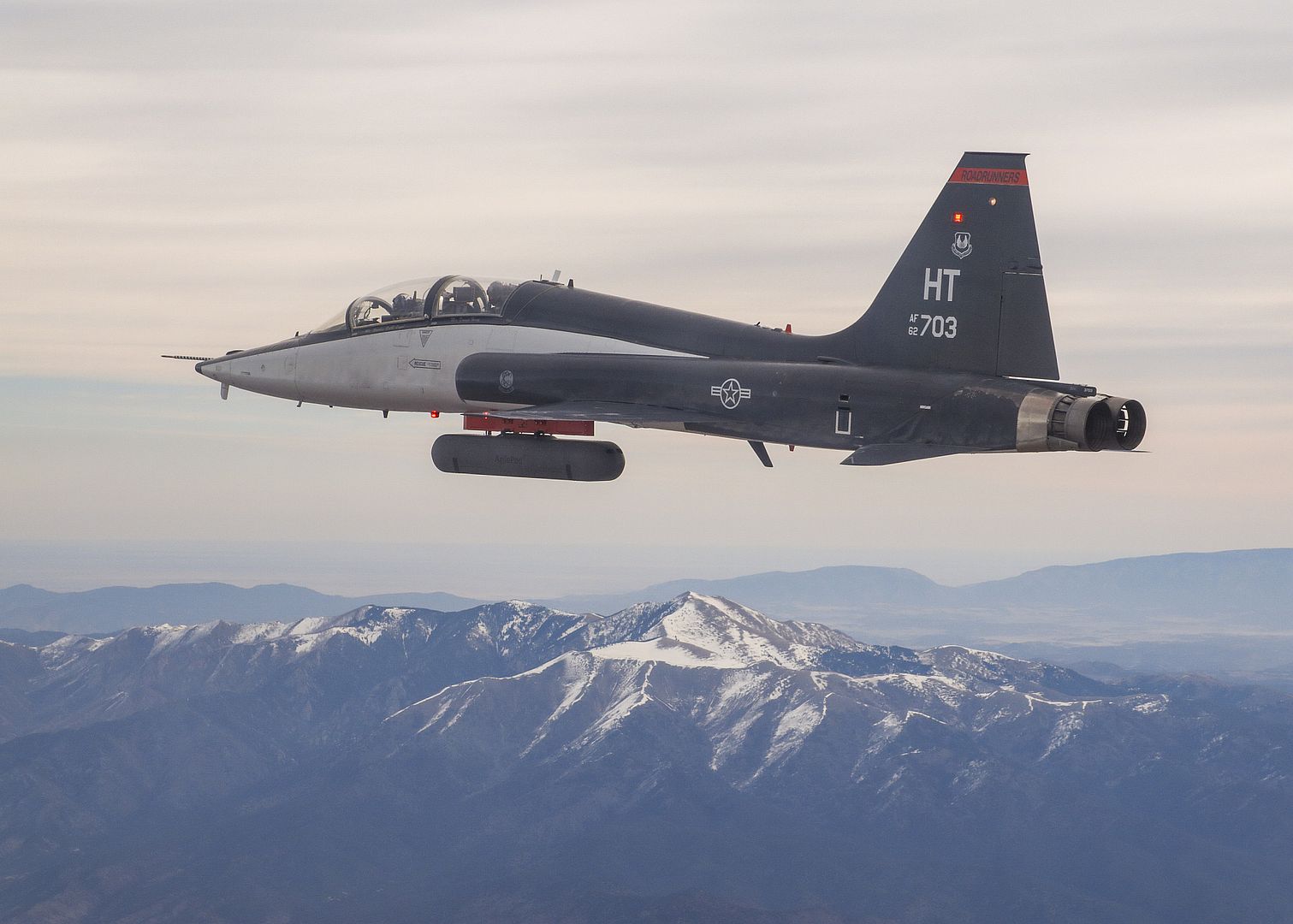
NORFOLK, Va. (July 17, 2024) - The ceremonial aircraft of Helicopter Sea Combat Squadron (HSC) 9 is displayed on National Tattoo Day in the squadron's hangar onboard Naval Station Norfolk. HSC-9 Sailors designed the MH-60S to showcase tattoos that symbolize naval traditions and past deployments. (U.S. Navy photo by Lt. Jacob Ryan/Released)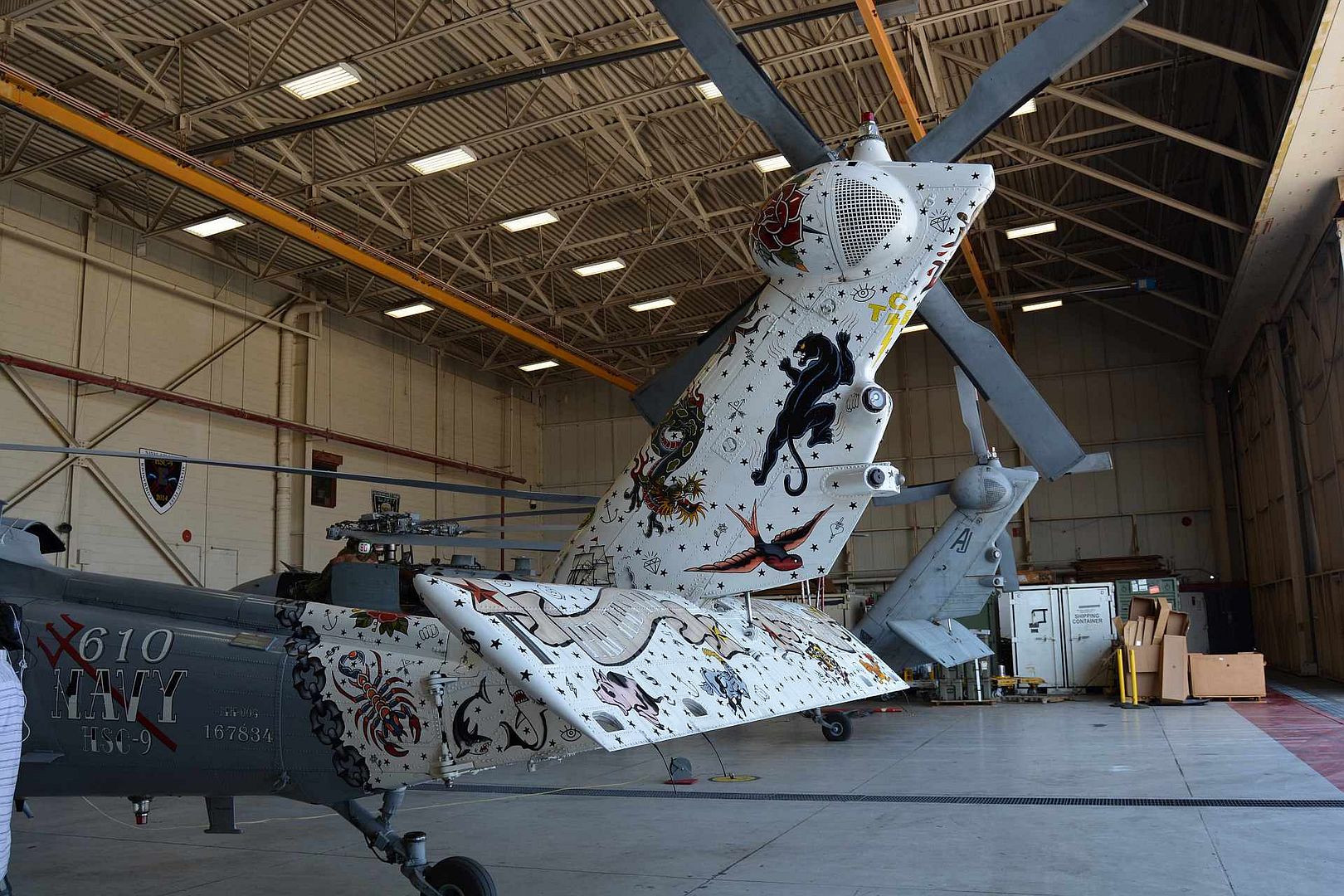
A CMV-22B Osprey from the “Titans” of Fleet Logistics Multi-Mission Squadron (VRM) 30 flies near the aircraft carrier USS Nimitz (CVN 68), July 17, 2024, in the Pacific Ocean. Nimitz is underway conducting routine operations. (U.S. Navy photo by Mass Communication Specialist 3rd Class Peter K. McHaddad)_30_flies_near_the_aircraft_carrier_USS_Nimitz_(CVN_68)_July_17_2024_.jpg?width=1920&height=1080&fit=bounds)
NH90 NATO Frigate Helicopter comes in to land onboard the Royal Netherlands Navy De Zeven Provincien-class frigate HNLMS Tromp (F803) while participating in Exercise Rim of the Pacific 2024 July 15. Twenty-nine nations, 40 surface ships, three submarines, 14 national land forces, more than 150 aircraft and 25,000 personnel are participating in RIMPAC in and around the Hawaiian Islands, June 27 to Aug. 1. The world's largest international maritime exercise, RIMPAC provides a unique training opportunity while fostering and sustaining cooperative relationships among participants critical to ensuring the safety of sea lanes and security on the world's ocean. RIMPAC 2024 is the 29th exercise in the series that began in 1971. (Royal Netherlands Air Force photo by Sergeant-majoor Cristian Schrik)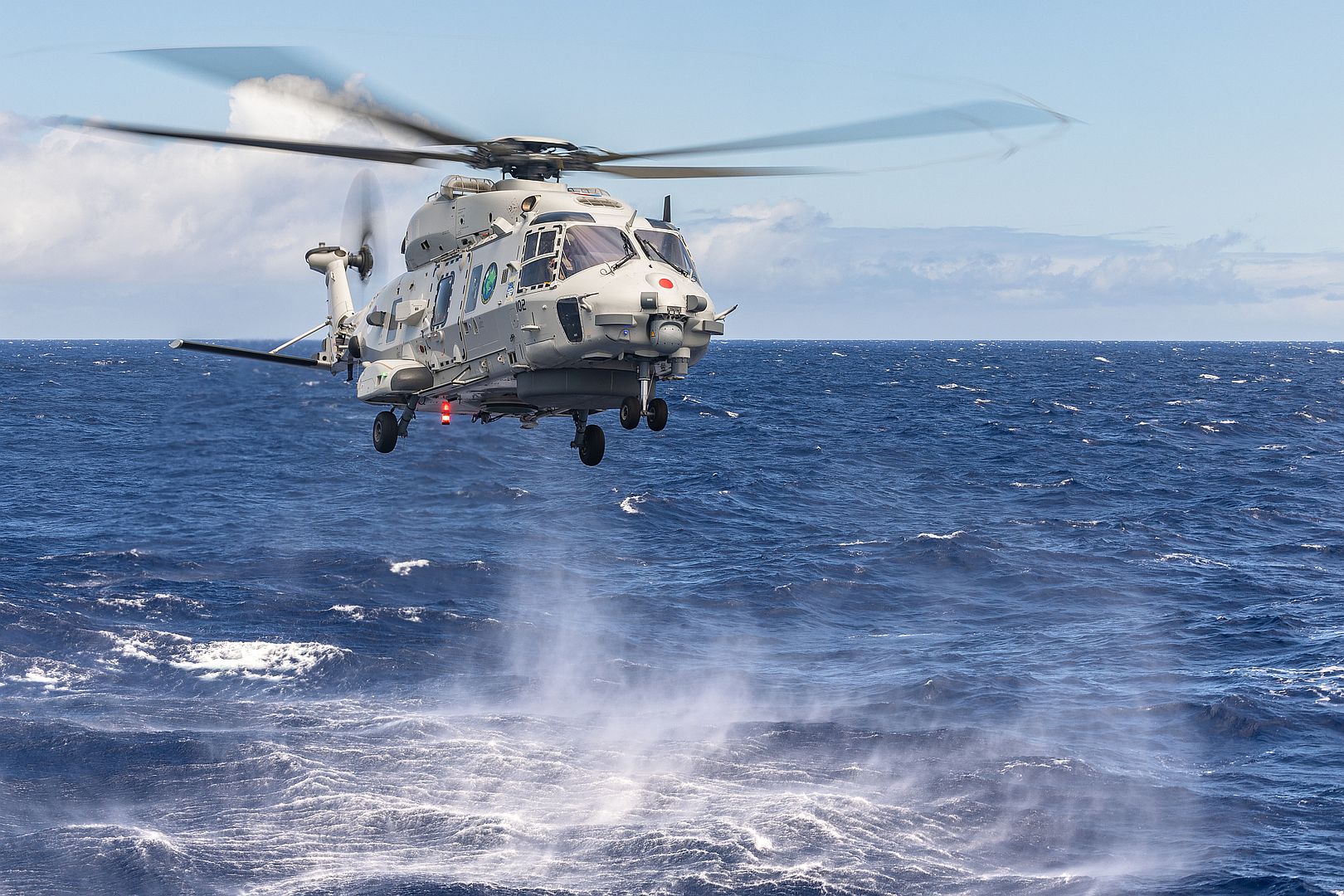
NAVAL AIR STATION WHIDBEY ISLAND, Washington (July 13, 2024) E/A-18G Growlers, assigned to the "Zappers" of Electronic Attack Squadron (VAQ) 130, return home to Naval Air Station Whidbey Island, Washington, July 13,2024, after a deployment with the Dwight D. Eisenhower Carrier Strike Group. The Dwight D. Eisenhower Carrier Strike Group returned to homeport after a nine-month deployment to the U.S. 5th and 6th Fleet areas of operations to support maritime security, promote regional stability and deter aggressions. (U.S. Navy Photo by Mass Communication Specialist 1st Class William Sykes)_130_return_home_to_Naval_Air_Station_Whidbey_Island_Washington_July_13_2024.jpg?width=1920&height=1080&fit=bounds)
An F-15C Eagle assigned to the 125th Fighter Wing performs a training sortie at Jacksonville Air National Guard Base, Florida, July 11, 2024. The F-15 Eagles are leaving the 125th FW near the end of 2024, representing another step in the 125th FW’s transition to the F-35 Lightning II. The unit expects to receive the first batch of F-35 aircraft in early 2025. (U.S. Air National Guard photo by Senior Airman Brooke Keisler)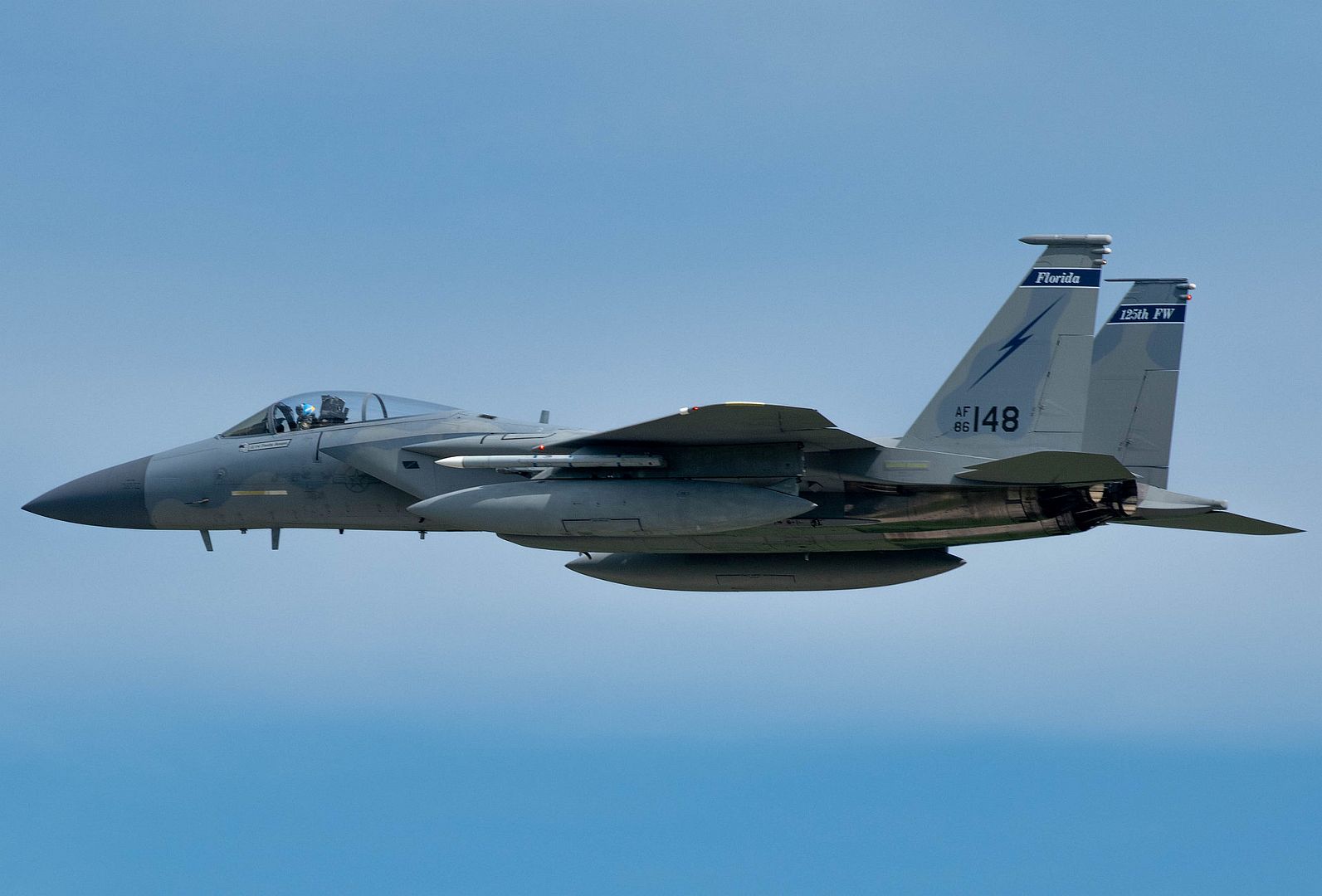
Two RAF Poseidons have joined others from Australia, India, New Zealand and the United States on Exercise #RimPac24 in Hawaii.
Over 25,000 personnel from 29 nations are participating in the world's largest international maritime exercise. This unique training opportunity is helping to strengthen and reinforce international relationships while demonstrating our commitment to a free and open Indo-Pacific.
(Photos courtesy of the RAF)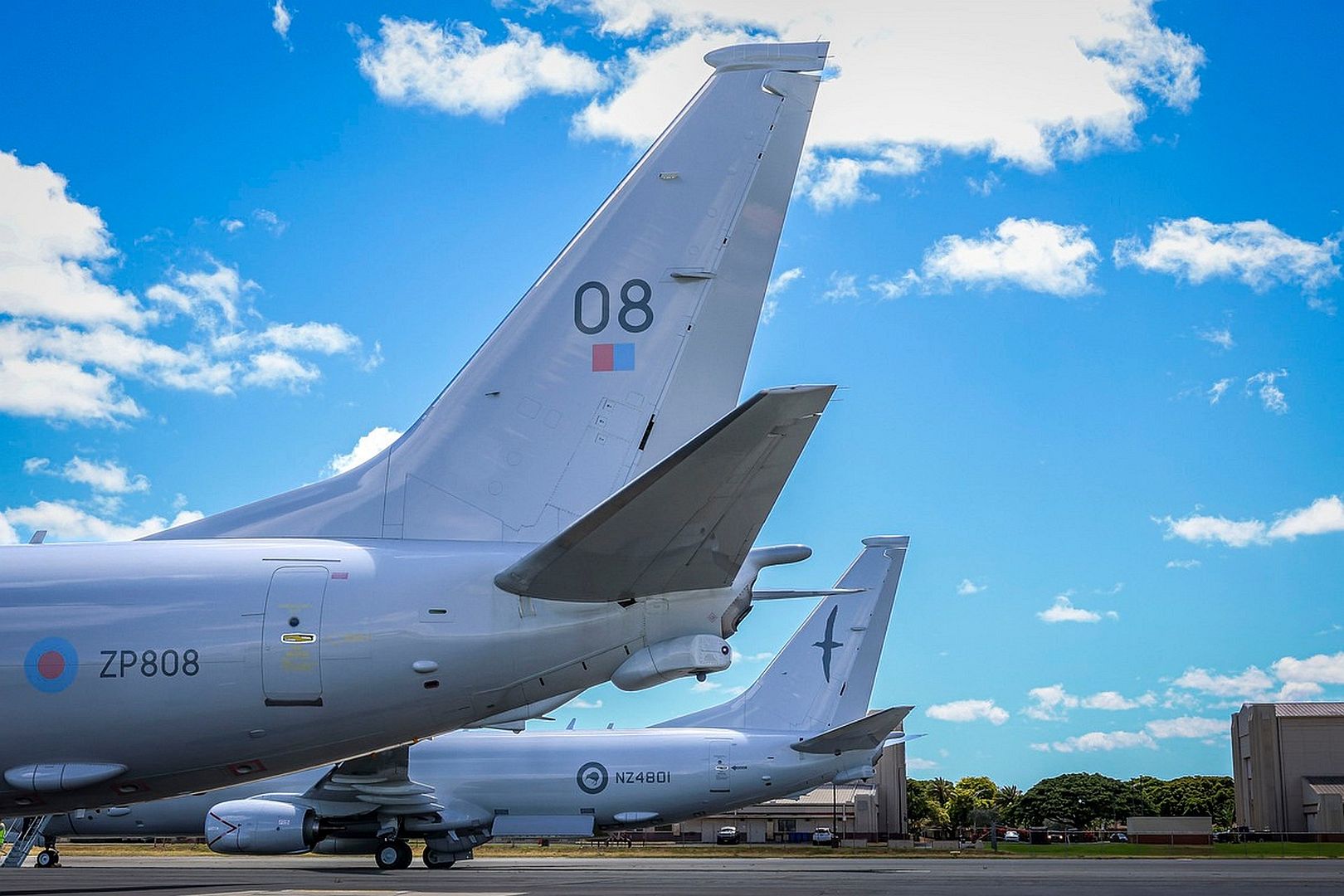

-
11 months ago
 Main AdminA U.S. Air Force F-22A Raptor assigned to the 27th Expeditionary Fighter Squadron takes off for a local sortie during Exercise Pitch Black at Royal Australian Air Force Base Tindal, Australia, July 17, 2024. This year’s iteration of Pitch Black is the largest in the exercise’s history, and the scale of cooperation will help maintain a region that is secure, open, prosperous, and resilient. (U.S. Air Force photo by Staff Sgt. Spencer Tobler)
Main AdminA U.S. Air Force F-22A Raptor assigned to the 27th Expeditionary Fighter Squadron takes off for a local sortie during Exercise Pitch Black at Royal Australian Air Force Base Tindal, Australia, July 17, 2024. This year’s iteration of Pitch Black is the largest in the exercise’s history, and the scale of cooperation will help maintain a region that is secure, open, prosperous, and resilient. (U.S. Air Force photo by Staff Sgt. Spencer Tobler)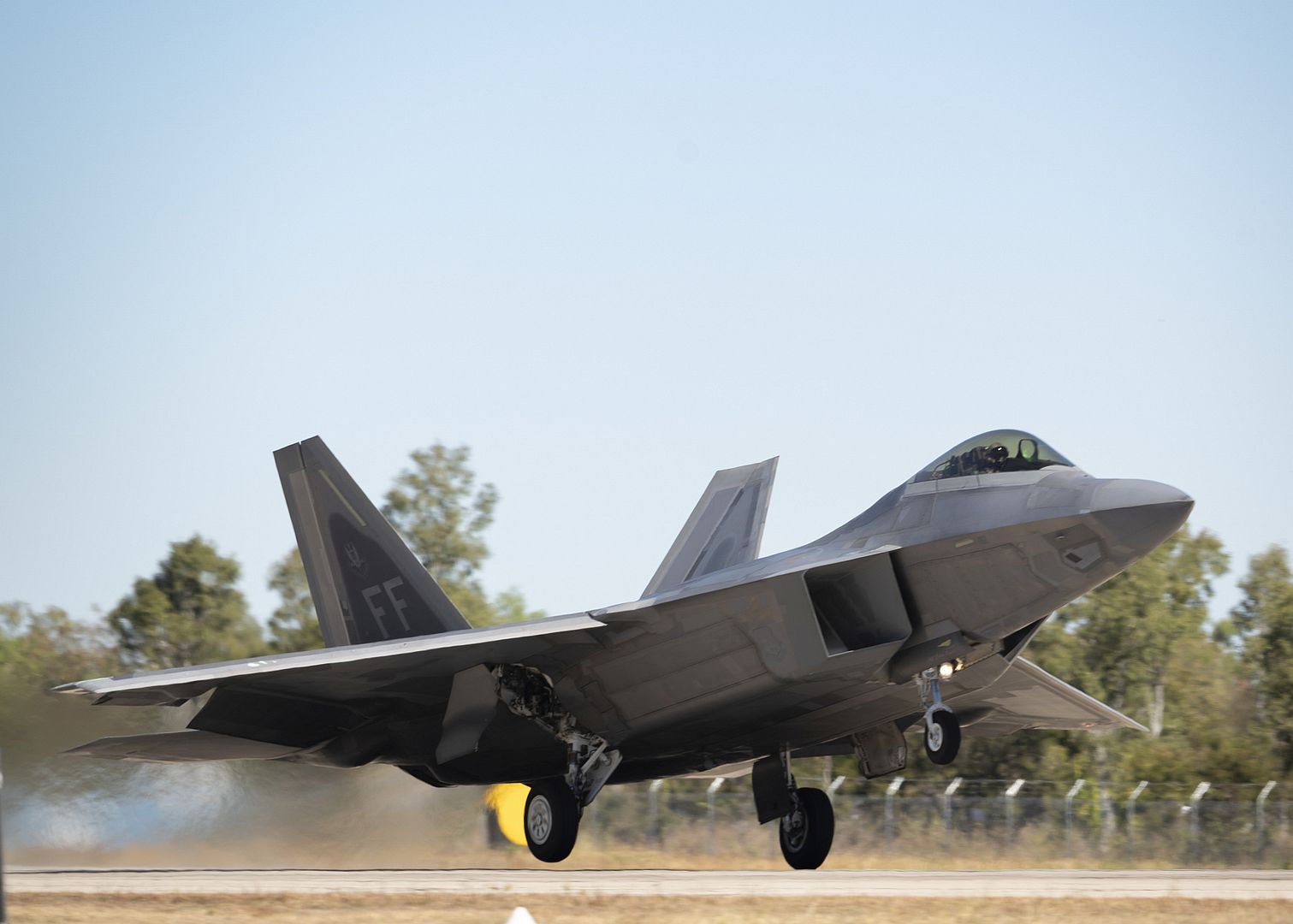
The U.S. Air Force Thunderbirds arrive at Joint Base Elmendorf-Richardson, Alaska, July 18, 2024. The demonstration team will perform this weekend during the Arctic Thunder Open House. (U.S. Air Force photo by Airman 1st Class Hunter Hites)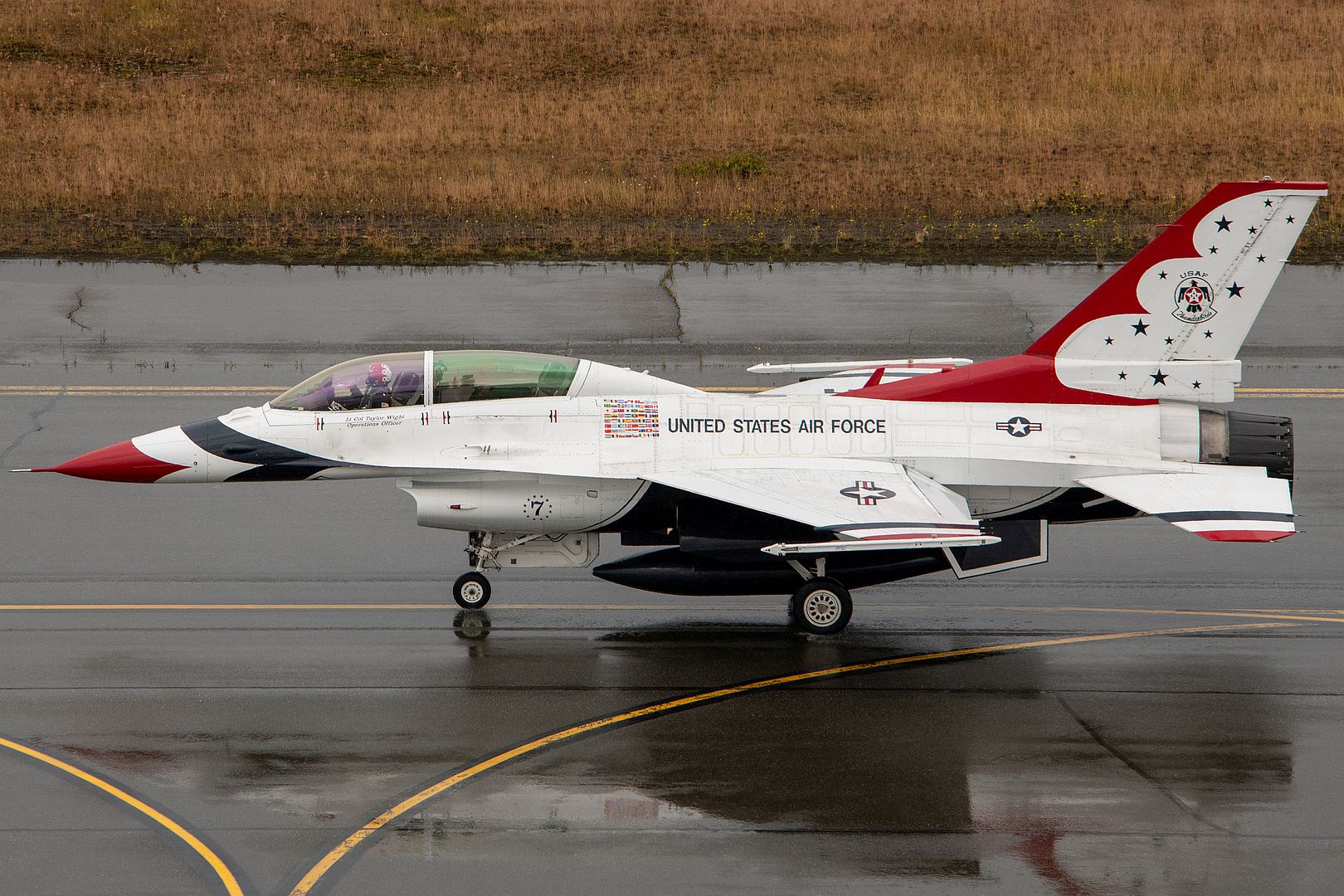
A U.S. Air Force B-1B Lancer attached to the 7th Bomb Wing, Dyess Air Base, Texas, prepares to be refueld by a KC-135 Stratotanker with the 927th Air Refueling Wing, Florida, during exercise Rim of the Pacific (RIMPAC) over the pacific ocean, July 18, 2024. Twenty-nine nations, 40 surface ships, three submarines, 14 national land forces, more than 150 aircraft and 25,000 personnel are participating in RIMPAC in and around the Hawaiian Islands, June 27 to Aug. 1, 2024. The world's largest international maritime exercise, RIMPAC, provides a unique training opportunity while fostering and sustaining cooperative relationships among participants critical to ensuring the safety of sea lanes and security on the world's oceans. RIMPAC 2024 is the 29th exercise in the series that began in 1971. (U.S. Air Force photo by Master Sgt. Chris Hibben)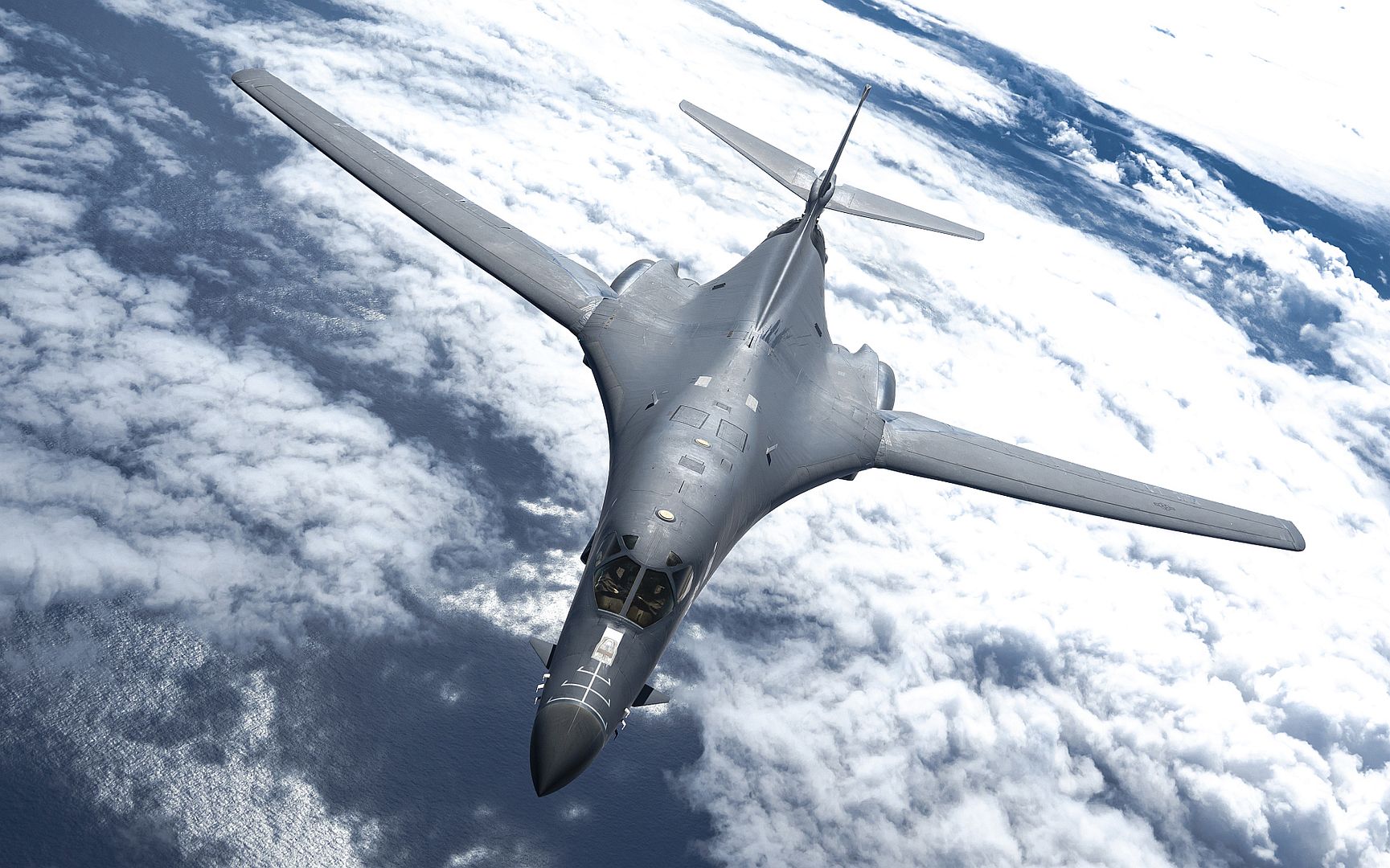
A U.S. Navy FA-18F Super Hornet flies near a U.S. Air Force KC-135 Stratotanker with MacDill Air Force Base, Florida, after being refueled near Joint Base Pearl Harbor-Hickam, Hawaii, during Exercise Rim of the Pacific (RIMPAC) 2024, July 18. Twenty-nine nations, 40 surface ships, three submarines, 14 national land forces, more than 150 aircraft and 25,000 personnel are participating in RIMPAC in and around the Hawaiian Islands, June 27 to Aug. 1. The world’s largest international maritime exercise, RIMPAC provides a unique training opportunity while fostering and sustaining cooperative relationships among participants critical to ensuring the safety of sea lanes and security on the world’s oceans. RIMPAC 24 is the 29th exercise in the series that began in 1971. (U.S. Air Force photo by Staff Sgt. Tiffany A. Emery)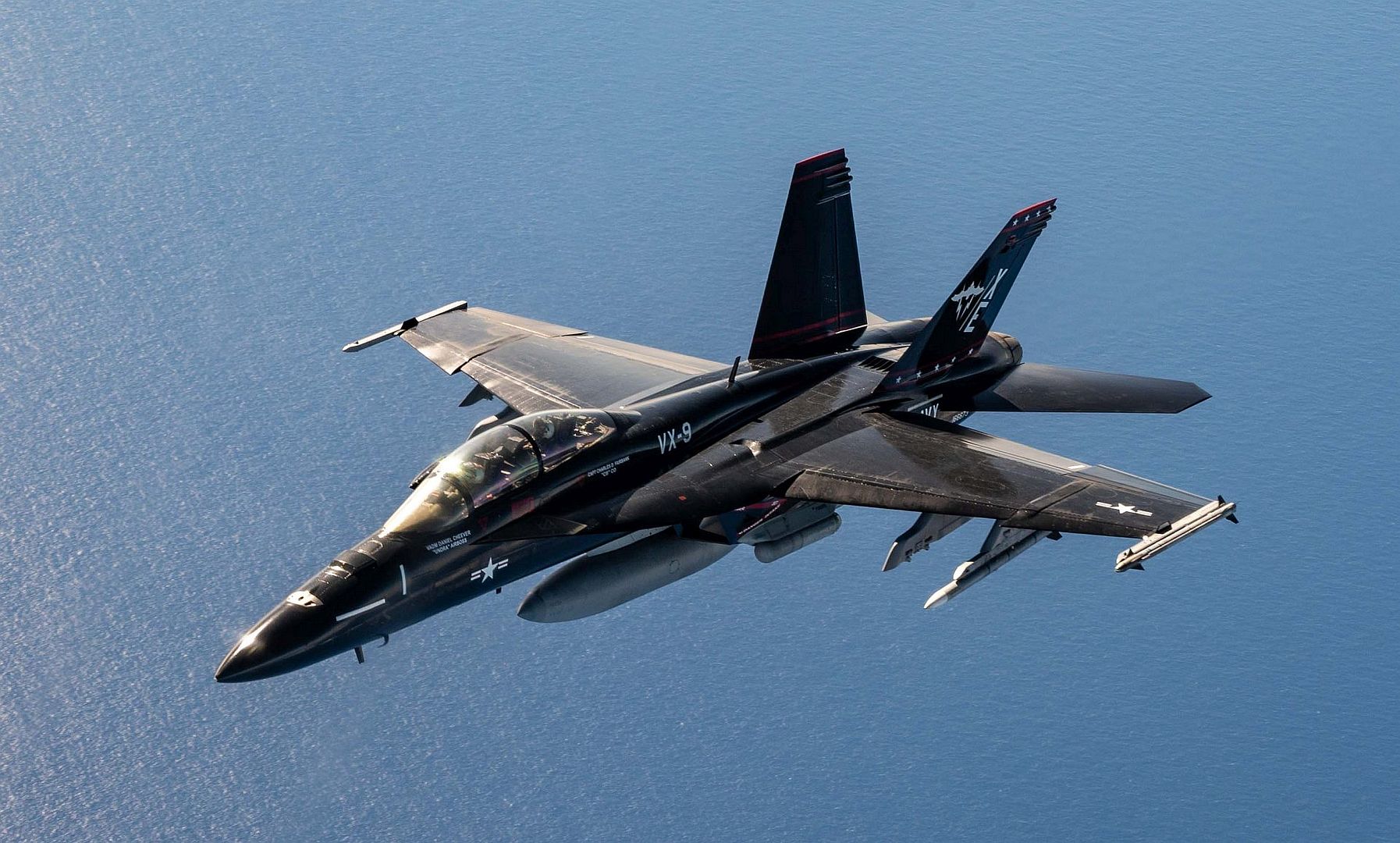
A CMV-22B Osprey from the "Titans" of Fleet Logistics Multi-Mission Squadron (VRM) 30 flies near the aircraft carrier USS Nimitz (CVN 68) July 17, 2024. Nimitz is underway conducting routine operations. (U.S. Navy photo by Mass Communication Specialist 2nd Class Carson Croom)_30_flies_near_the_aircraft_carrier_USS_Nimitz_(CVN_68)_July_17_2024..jpg?width=1920&height=1080&fit=bounds)
A Royal Netherlands Navy NH90 NATO Frigate Helicopter performs anti-submarine warfare mission from Royal Netherlands Navy De Zeven Provincien-class frigate HNLMS Tromp (F803) while participating in Exercise Rim of the Pacific 2024, July 17. Twenty-nine nations, 40 surface ships, three submarines, 14 national land forces, more than 150 aircraft and 25,000 personnel are participating in RIMPAC in and around the Hawaiian Islands, June 27 to Aug. 1. The world's largest international maritime exercise, RIMPAC provides a unique training opportunity while fostering and sustaining cooperative relationships among participants critical to ensuring the safety of sea lanes and security on the world's ocean. RIMPAC 2024 is the 29th exercise in the series that began in 1971. (Royal Netherlands Air Force photo by Sergeant-majoor Cristian Schrik)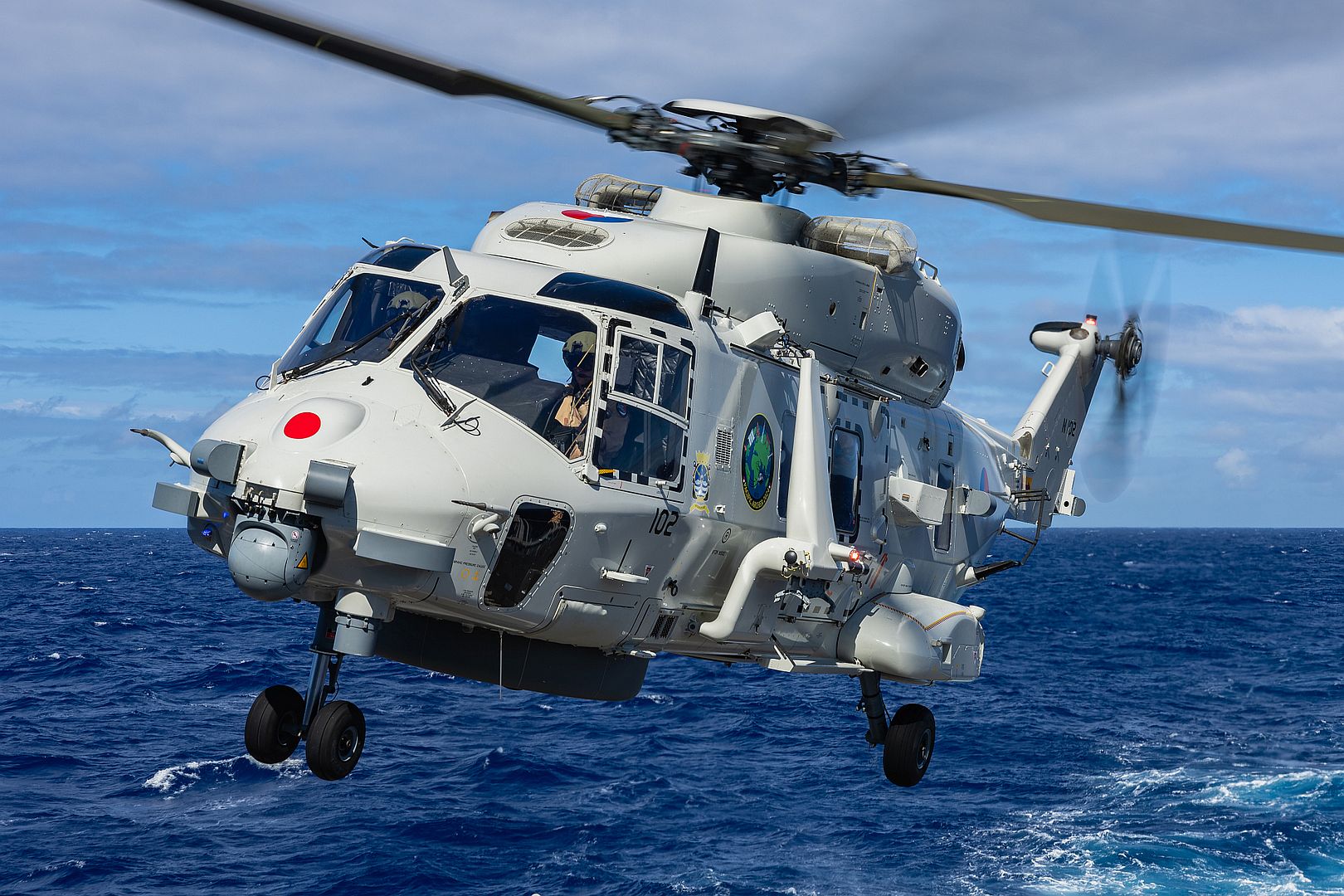
German Navy MK88A Sea Lynx helicopter landing onboard Royal Netherlands Navy De Zeven Provincien-class frigate HNLMS Tromp (F803) while participating in Exercise Rim of the Pacific 2024. Twenty-nine nations, 40 surface ships, three submarines, 14 national land forces, more than 150 aircraft and 25,000 personnel are participating in RIMPAC in and around the Hawaiian Islands, June 27 to Aug. 1. The world's largest international maritime exercise, RIMPAC provides a unique training opportunity while fostering and sustaining cooperative relationships among participants critical to ensuring the safety of sea lanes and security on the world's ocean. RIMPAC 2024 is the 29th exercise in the series that began in 1971. (Royal Netherlands Air Force photo by Sergeant-majoor Cristian Schrik)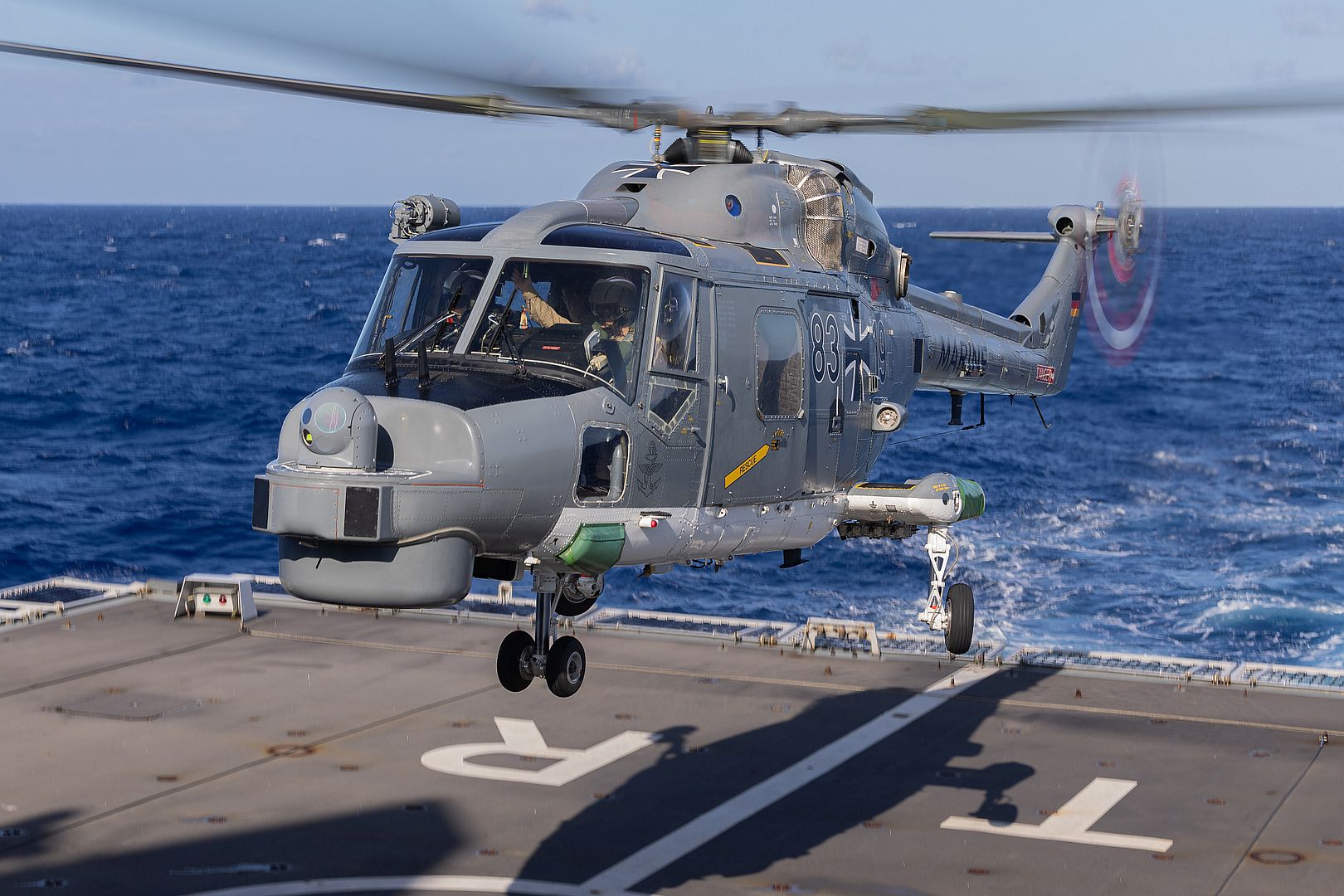
An Italian Leonardo AW101 (EH101) Merlin helicopter approaches the flight deck of Nimitz-class aircraft carrier USS Carl Vinson (CVN 70) as the ship participates in the at-sea phase of Exercise Rim of the Pacific (RIMPAC) 2024, July 17. Twenty-nine nations, 40 surface ships, three submarines, 14 national land forces, more than 150 aircraft and 25,000 personnel are participating in RIMPAC in and around the Hawaiian Islands, June 27 to Aug. 1. The world’s largest international maritime exercise, RIMPAC provides a unique training opportunity while fostering and sustaining cooperative relationships among participants critical to ensuring the safety of sea lanes and security on the world’s oceans. RIMPAC 2024 is the 29th exercise in the series that began in 1971. (U.S. Navy photo by Mass Communication Specialist 2nd Class Isaiah Goessl)_Merlin_helicopter_approaches_the_flight_deck_of_Nimitz-class_aircraft_carrier_USS_Carl_Vinson.jpg?width=1920&height=1080&fit=bounds)
F-15E Strike Eagles deployed from the 335th Expeditionary Fighter Squadron from North Carolina’s Seymour Johnson Air Force Base take off during Sky Shield 9 from an undisclosed location within the U.S. Central Command area of responsibility, July 15, 2024. Sky Shield 9 is intended to increase the air component operability between the U.S., Qatar and partner nations, the pilots practice collaborative inflight training scenarios and combat search and rescue (CSAR) regional tactics, techniques, and procedures in defense of regional airspace. (U.S. Air Force photos by 1st Lt. Peyton Craven)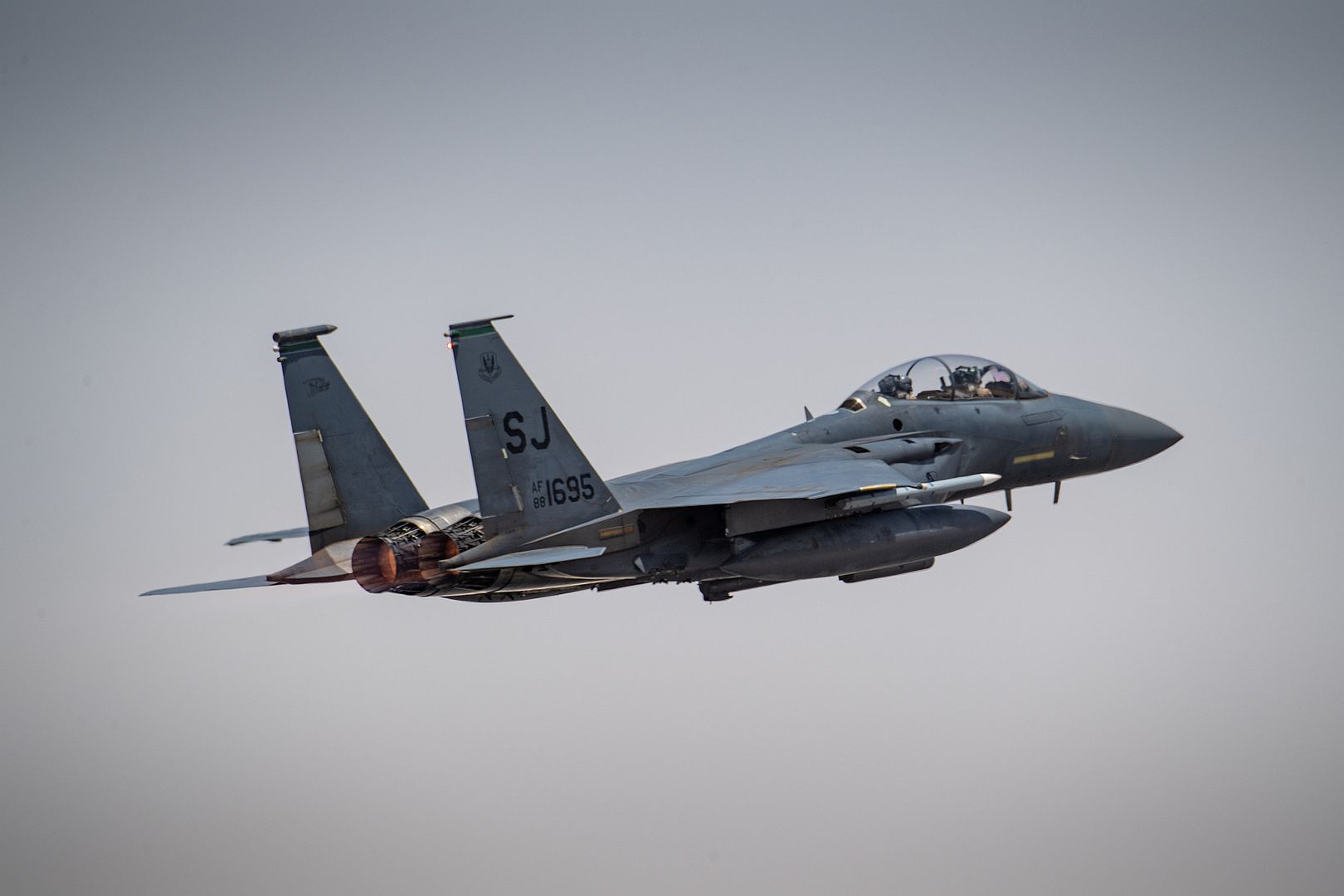
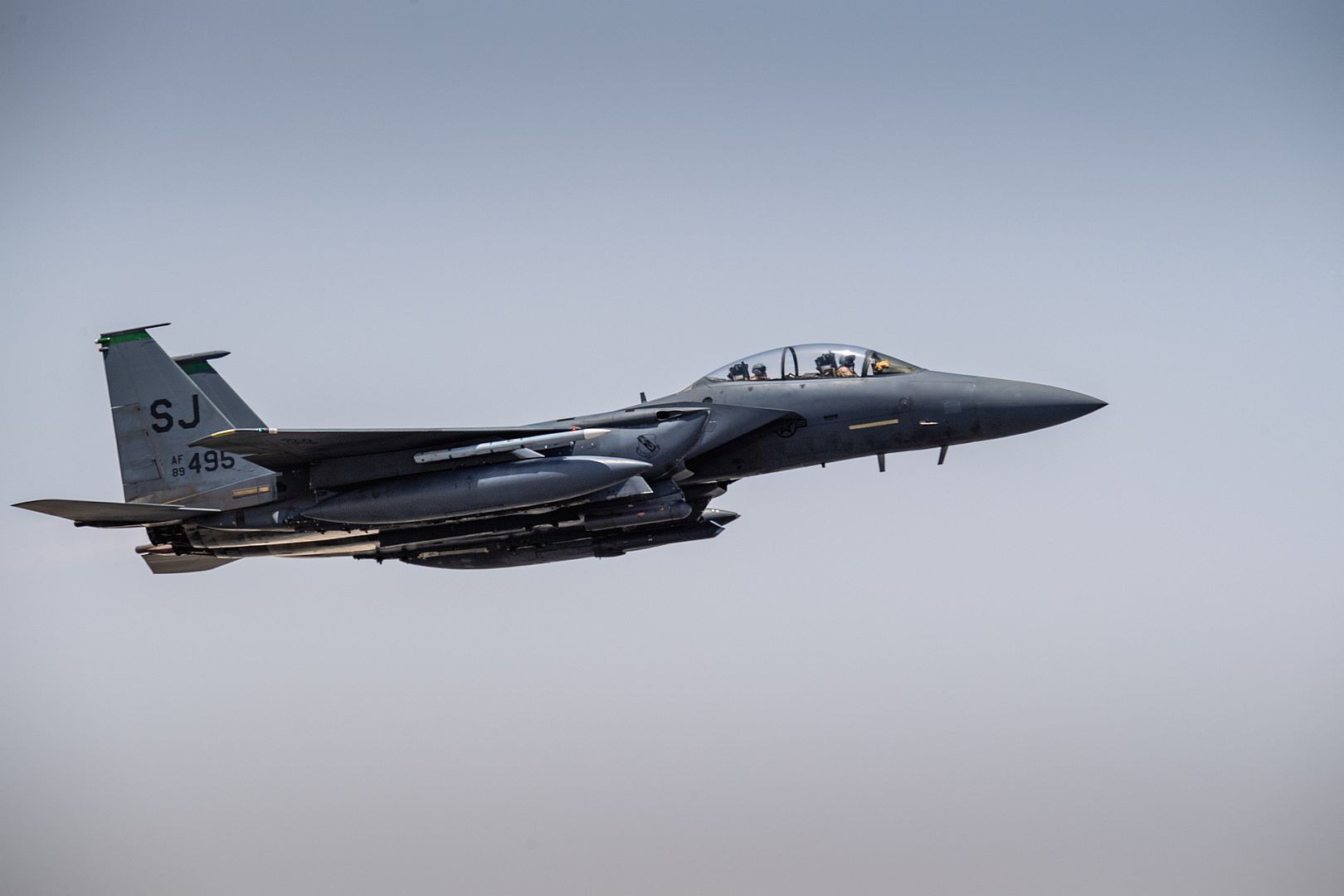
Airmen from the 36th Fighter Generation Squadron park a U.S. Air Force F-16 Fighting Falcon at Osan Air Base, Republic of Korea, July 9, 2024. Nine F-16s are temporarily being reassigned to the 51st Fighter Wing at Osan AB, from the 8th FW at Kunsan AB, to form a "Super Squadron" as part of a year-long force generation assessment. The test will evaluate the Super Squadron's impact on the sortie generation, maintenance, manpower, and logistic requirements, to optimize combat capability and increase readiness in support of the ROK-U.S. alliance. (U.S. Air Force photos by Airman 1st Class Chase Verzaal)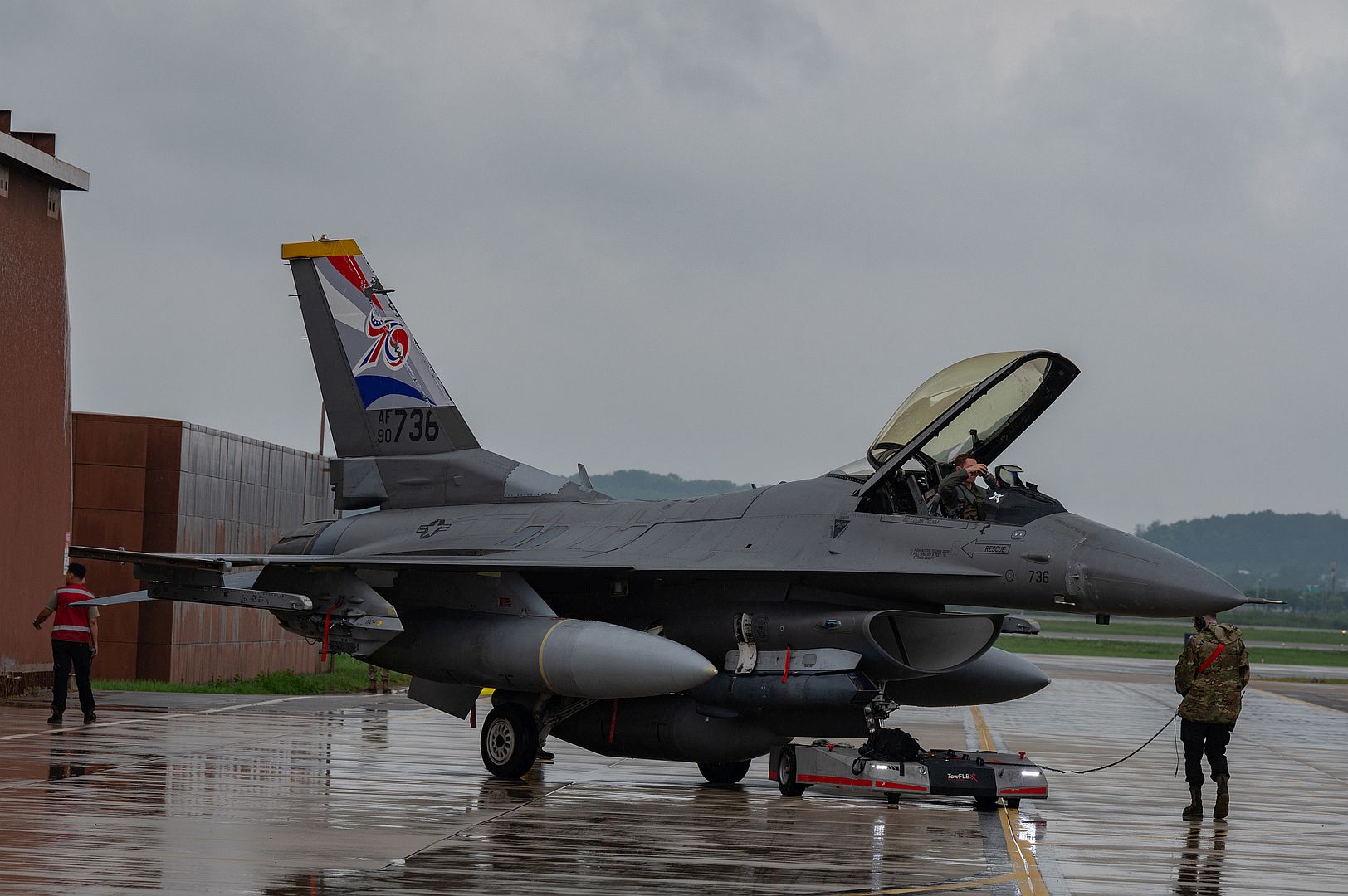
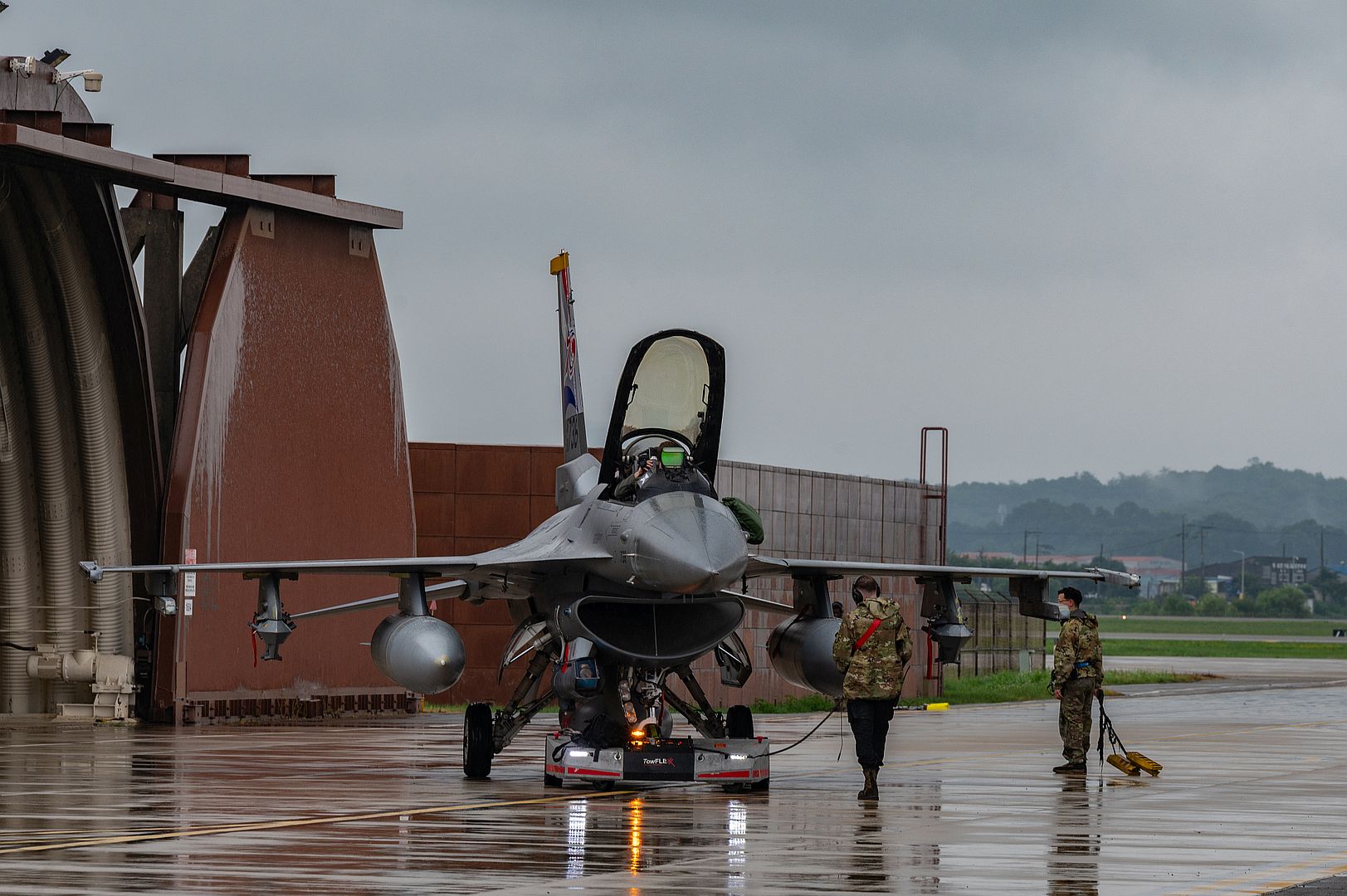
Cologne/Toulouse, 19th July 2024 – The Airbus A321XLR powered by CFM LEAP-1A engines has received its Type Certification from the European Union Aviation Safety Agency (EASA), preparing the way for the entry-into-service of the new aircraft at the end of the summer. The Type Certificate was handed over by Florian Guillermet, Executive Director of EASA to Isabelle Bloy, A321XLR Chief Engineer. Certification of the Pratt & Whitney engine version is slated for later in 2024.
"Here comes the A321XLR, a differentiated product that brings new value to the market, expanding the possibilities for our airline customers and passengers. With its long range, the A321XLR enables a host of new direct routes, offering natural growth opportunities to our customers and the travelling public. It provides airlines with the efficiency of commonality inside the A320/A321 product range and its versatile cabin a range of service possibilities that are just unique. It is quintessential Airbus!”, says Christian Scherer, CEO of the Commercial Aircraft business of Airbus. “With the certification, we have reached a key milestone. The next step is to prepare the aircraft for its first commercial missions with customers worldwide. We look forward to working with XLR customers to support the integration of the aircraft in their fleets.”
The A321XLR sits side by side with widebodies in an airline’s fleet. It introduces the flexibility to add capacity, to open new routes, or even to continue operating existing ones when demand is variable. All while burning 30% less fuel per seat than previous generation competitor aircraft, and at roughly half the trip cost of modern widebodies. The A321XLR’s new Airspace cabin will provide passengers long haul comfort in all classes.
The first A321XLR completed its maiden flight in June 2022. This was followed by an extensive test programme involving three test aircraft. So far more than 500 Airbus A321XLRs have been ordered.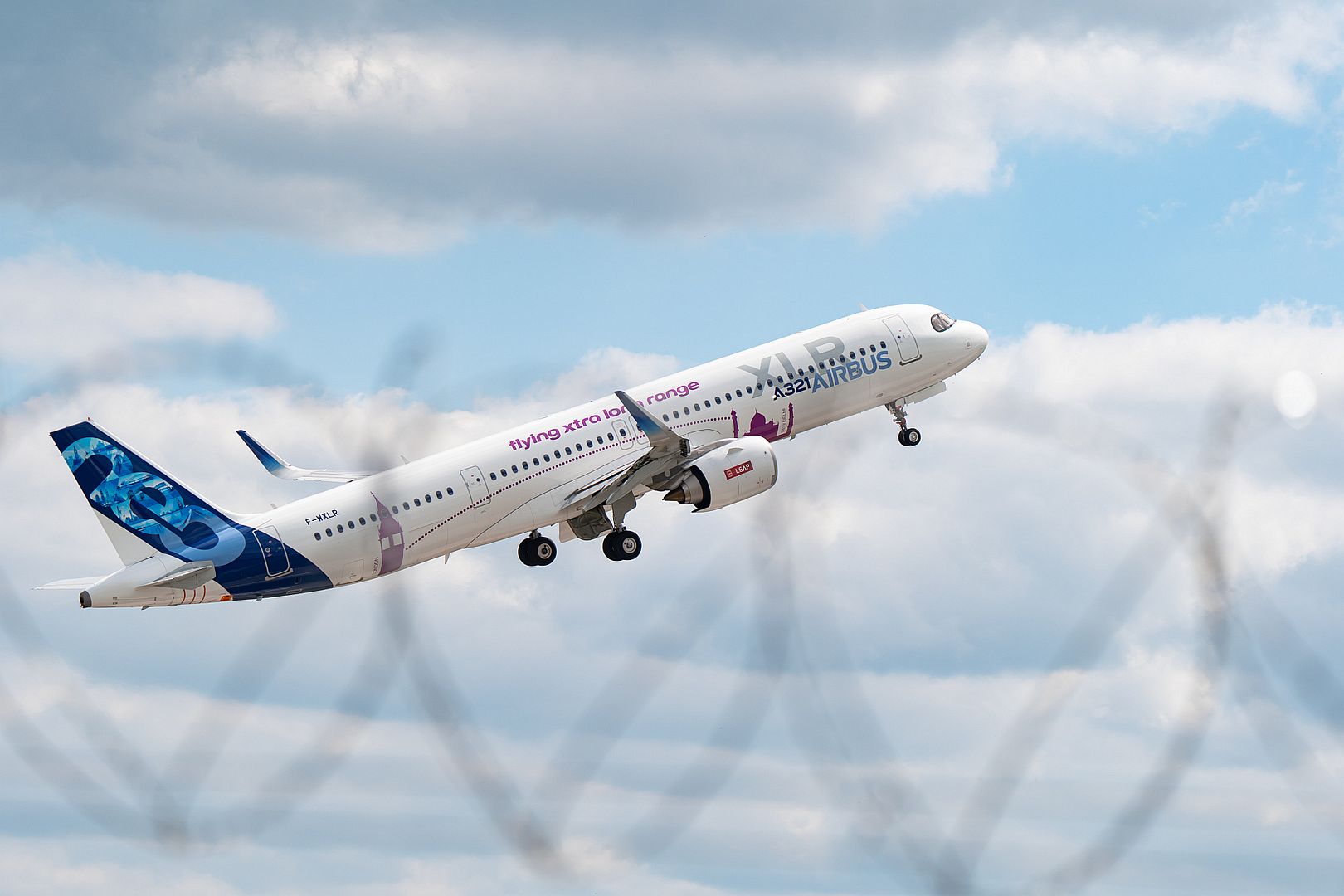
SAN DIEGO – 19 July 2024 – General Atomics Aeronautical Systems, Inc. (GA-ASI) flew a company-owned MQ-9B SkyGuardian® Remotely Piloted Aircraft on July 15, 2024, with a PT6 E-Series model turboprop engine supplied by Pratt & Whitney Canada. Representatives from GA-ASI and Pratt & Whitney witnessed the first flight of the PT6 engine on MQ-9B, which lasted 44 minutes and demonstrated exemplary handling and acceleration.
“We’re excited to see the PT6 engine on our MQ-9B aircraft,” said GA-ASI President David R. Alexander. “We’ve worked with Pratt & Whitney for years, specifically on our jet-powered Avenger®, and we’ve enjoyed a very productive partnership. The first flight marks an important milestone for MQ-9B SkyGuardian and SeaGuardian® customers and missions that require additional power. In addition, customers who choose the Pratt & Whitney engine will benefit from low sustainment costs from best-in-class Time Between Overhauls, as well as 50+ maintenance and overhaul facilities around the globe.”
The PT6 E-Series is a reliable and versatile turboprop engine family that delivers key performance enhancements applicable to future MQ-9B missions. PT6 delivers a 33 percent increase in power over MQ-9B’s current engine, with a highly mature dual-channel Full Authority Digital Engine Controller.
MQ-9B is GA-ASI’s next generation RPA, delivering exceptionally long endurance and range, with auto takeoff and landing under SATCOM-only control, and will be able to operate in unsegregated airspace using the GA-ASI-developed Detect and Avoid system.
Deliveries of MQ-9B have begun for the United Kingdom, with contracts in place with Belgium, Canada, Taiwan, and the U.S. Air Force in support of the Special Operations Command. The Japan Coast Guard is currently operating MQ-9B for maritime operations, and the Japan Maritime Self-Defense Force (JMSDF) selected MQ-9B for its Medium-Altitude, Long-Endurance (MALE) Remotely Piloted Aircraft System Trial Operation Project. MQ-9B has also supported various U.S. Navy exercises, including Northern Edge, Integrated Battle Problem, and Group Sail.
About GA-ASI
General Atomics Aeronautical Systems, Inc. (GA-ASI), an affiliate of General Atomics, is a leading designer and manufacturer of proven, reliable RPA systems, radars, and electro-optic and related mission systems, including the Predator® RPA series and the Lynx® Multi-mode Radar. With more than eight million flight hours, GA-ASI provides long-endurance, mission-capable aircraft with integrated sensor and data link systems required to deliver persistent situational awareness. The company also produces a variety of sensor control/image analysis software, offers pilot training and support services, and develops meta-material antennas.
For more information, visit www.ga-asi.com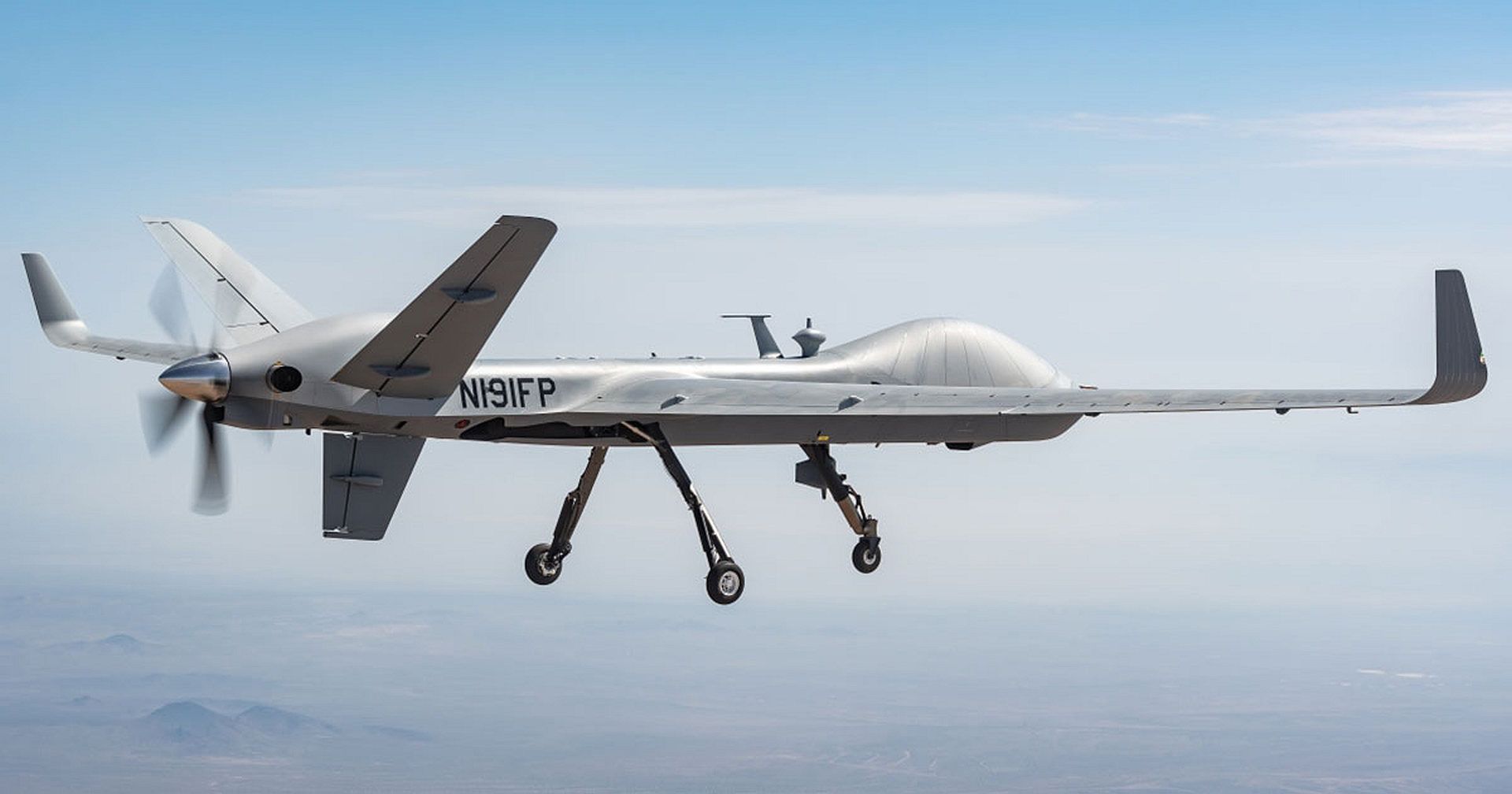
Arriving in Australia on July 10, the Aviators of the Pegasus mission are now engaged in exercise "Pitch Black 2024", organized by Royal Australian Air Force (RAAF). Fight's on!
(Photos courtesy of the Armée de l'Air et de l'Espace)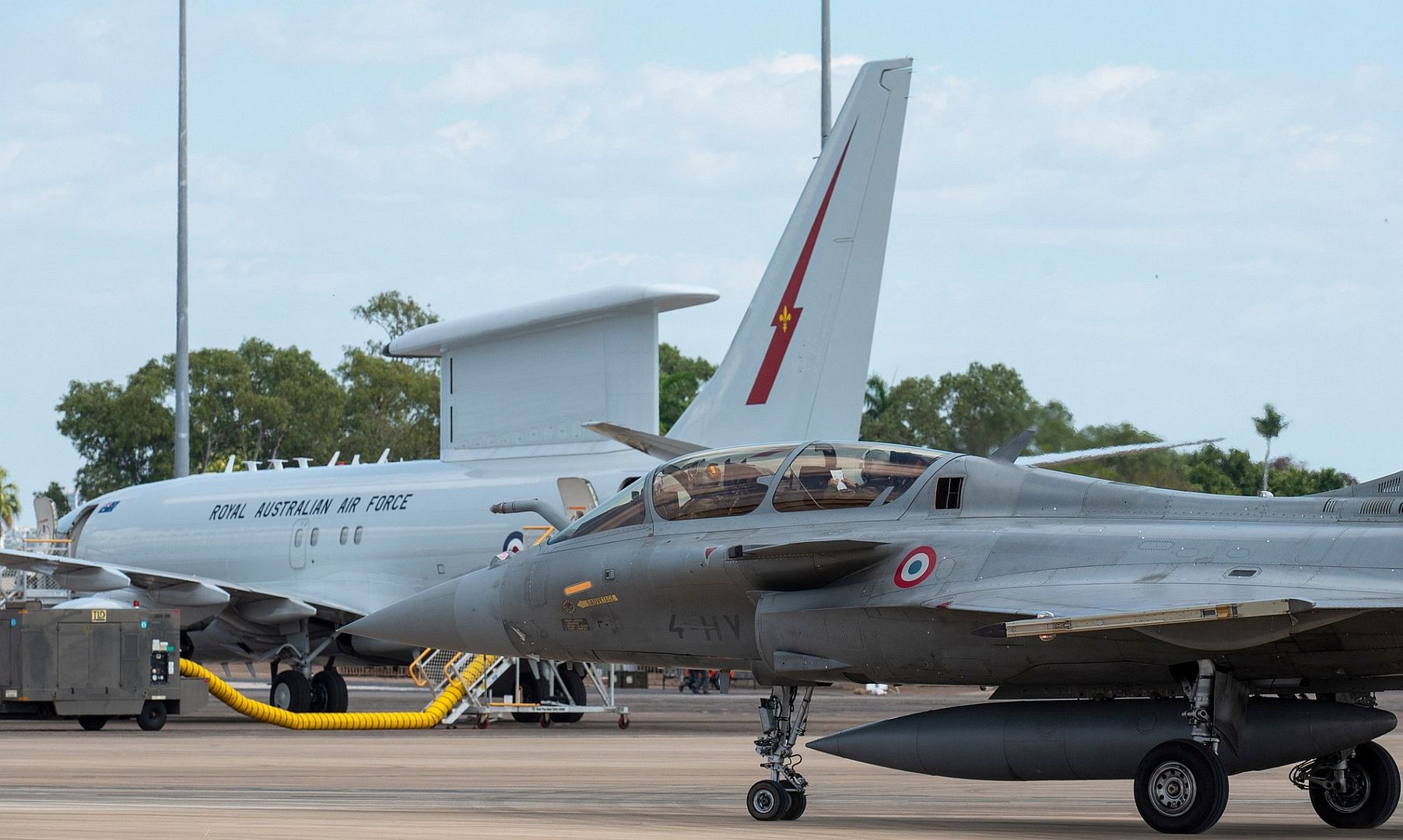

-
11 months ago
 Main AdminA U.S. Marine Corps AH-1Z Viper helicopter with Marine Medium Tiltrotor Squadron 262 (Rein.), 31st Marine Expeditionary Unit, prepares to land aboard the amphibious transport dock ship USS Green Bay (LPD 20), off the coast of Okinawa, July 20, 2024. VMM-262 (Rein.) conducted the fly on to prepare for future missions as part of the 24.2 patrol. The 31st MEU is operating aboard ships of the USS America Amphibious Ready Group in the 7th Fleet area of operations, the U.S. Navy’s largest forward-deployed numbered fleet, and routinely interacts and operates with allies and partners in preserving a free and open Indo-Pacific region. (U.S. Marine Corps photo by Lance Cpl. Peter J. Eilen)
Main AdminA U.S. Marine Corps AH-1Z Viper helicopter with Marine Medium Tiltrotor Squadron 262 (Rein.), 31st Marine Expeditionary Unit, prepares to land aboard the amphibious transport dock ship USS Green Bay (LPD 20), off the coast of Okinawa, July 20, 2024. VMM-262 (Rein.) conducted the fly on to prepare for future missions as part of the 24.2 patrol. The 31st MEU is operating aboard ships of the USS America Amphibious Ready Group in the 7th Fleet area of operations, the U.S. Navy’s largest forward-deployed numbered fleet, and routinely interacts and operates with allies and partners in preserving a free and open Indo-Pacific region. (U.S. Marine Corps photo by Lance Cpl. Peter J. Eilen)_31st_Marine_Expeditionary_Unit_prepares_to_land_aboard_the_amphibious_transport_dock_ship_USS_Green_Bay.jpg?width=1920&height=1080&fit=bounds)
Two U.S. Navy E/A 18-G Growlers and one Japanese Air Self-Defense Force F-2 fly in formation during a French PEGASE mission for an aerial interaction, July 19, 2024. U.S. 7th Fleet is the U.S. Navy's largest forward-deployed numbered fleet, and routinely interacts and operates with allies and partners in preserving a free and open Indo-Pacific region. (Courtesy Photo)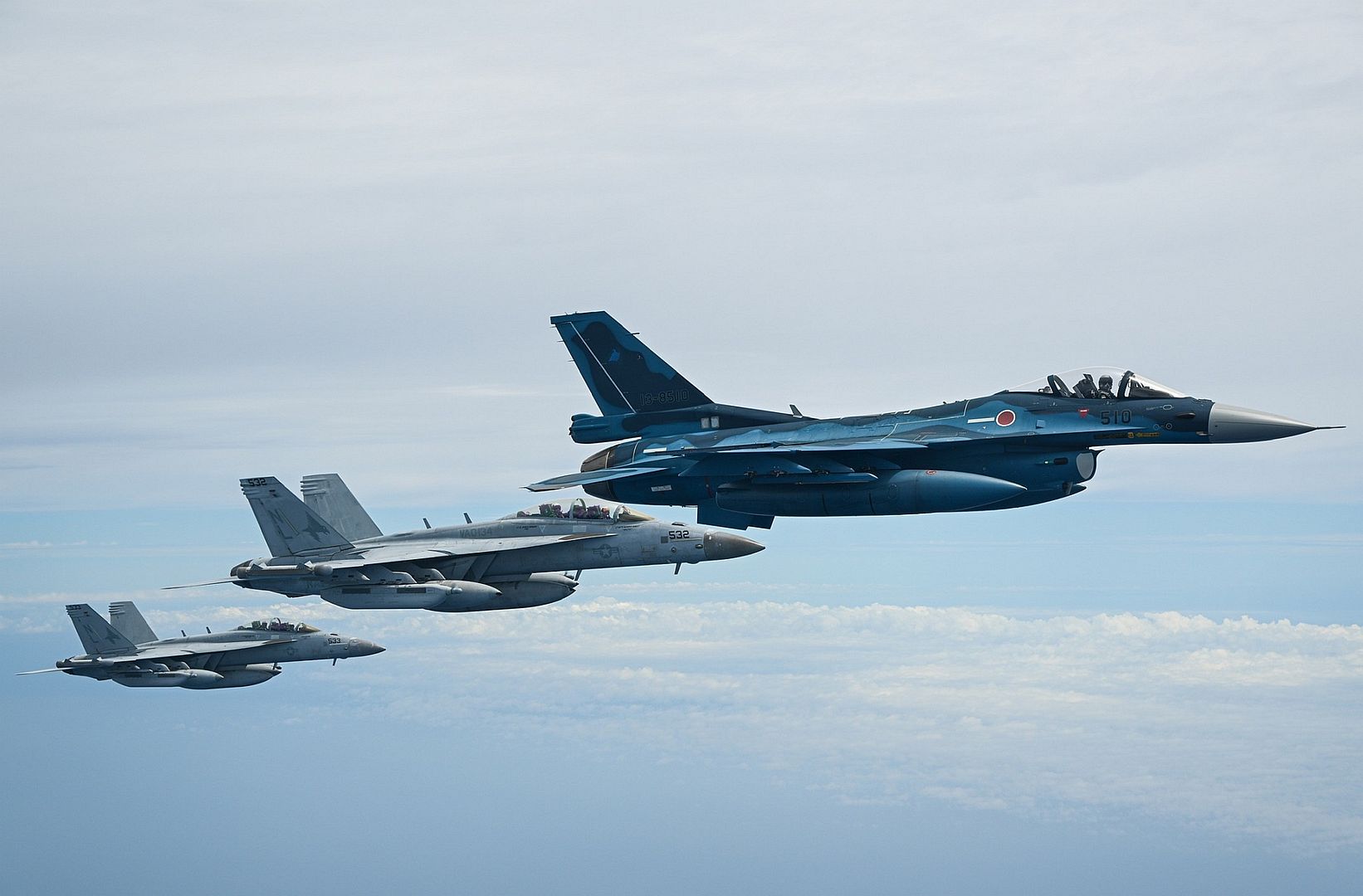
An F-35A Lightning II assigned to the 187th Fighter Wing taxis on the runway at Dannelly Field, Ala. on July 19. 2024. The first jet from Lockheed Martin with Technology Refresh 3 software arrives at the 187th Fighter Wing, home of the Red Tails.
(Photos by Capt. Michael Luangkhot)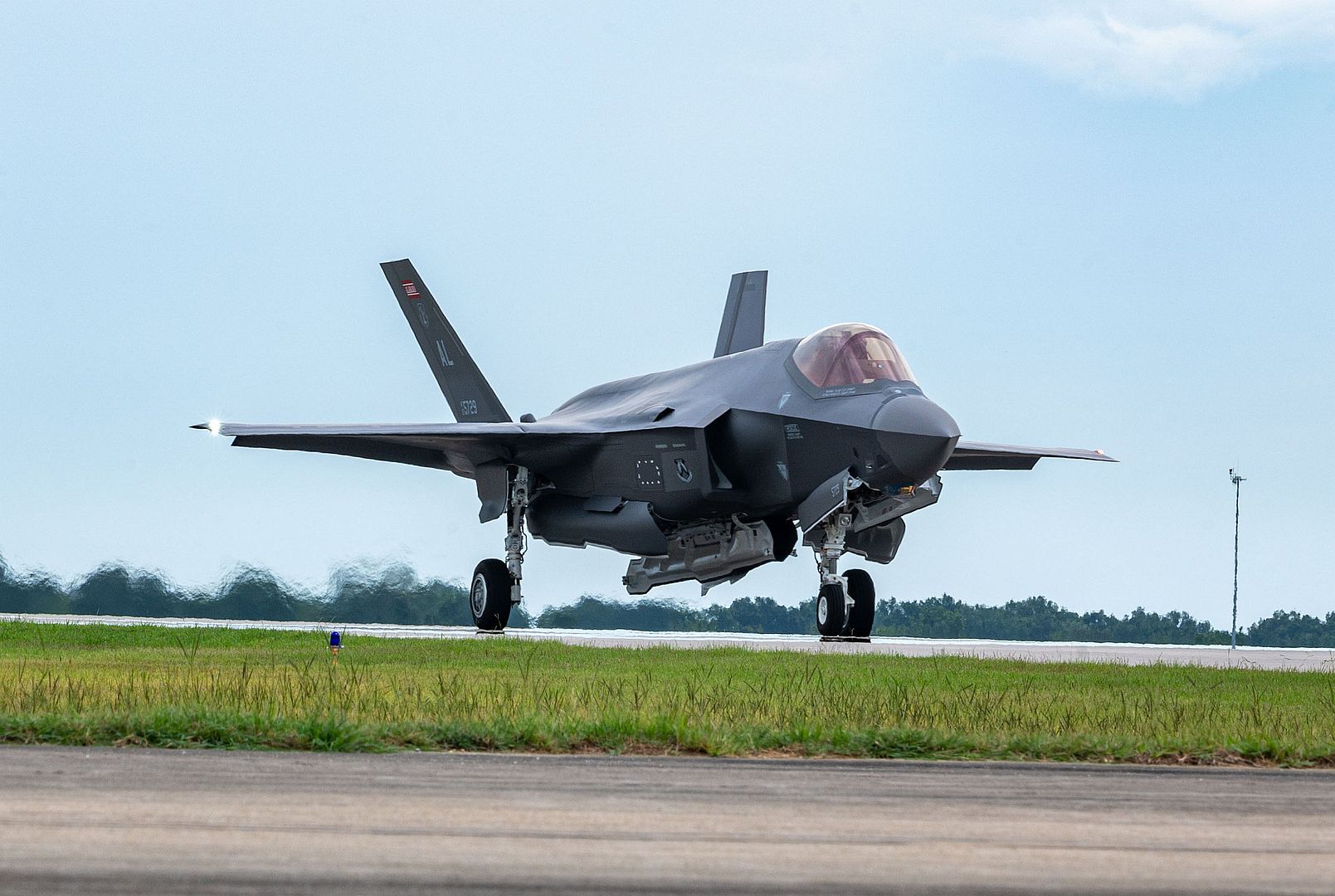
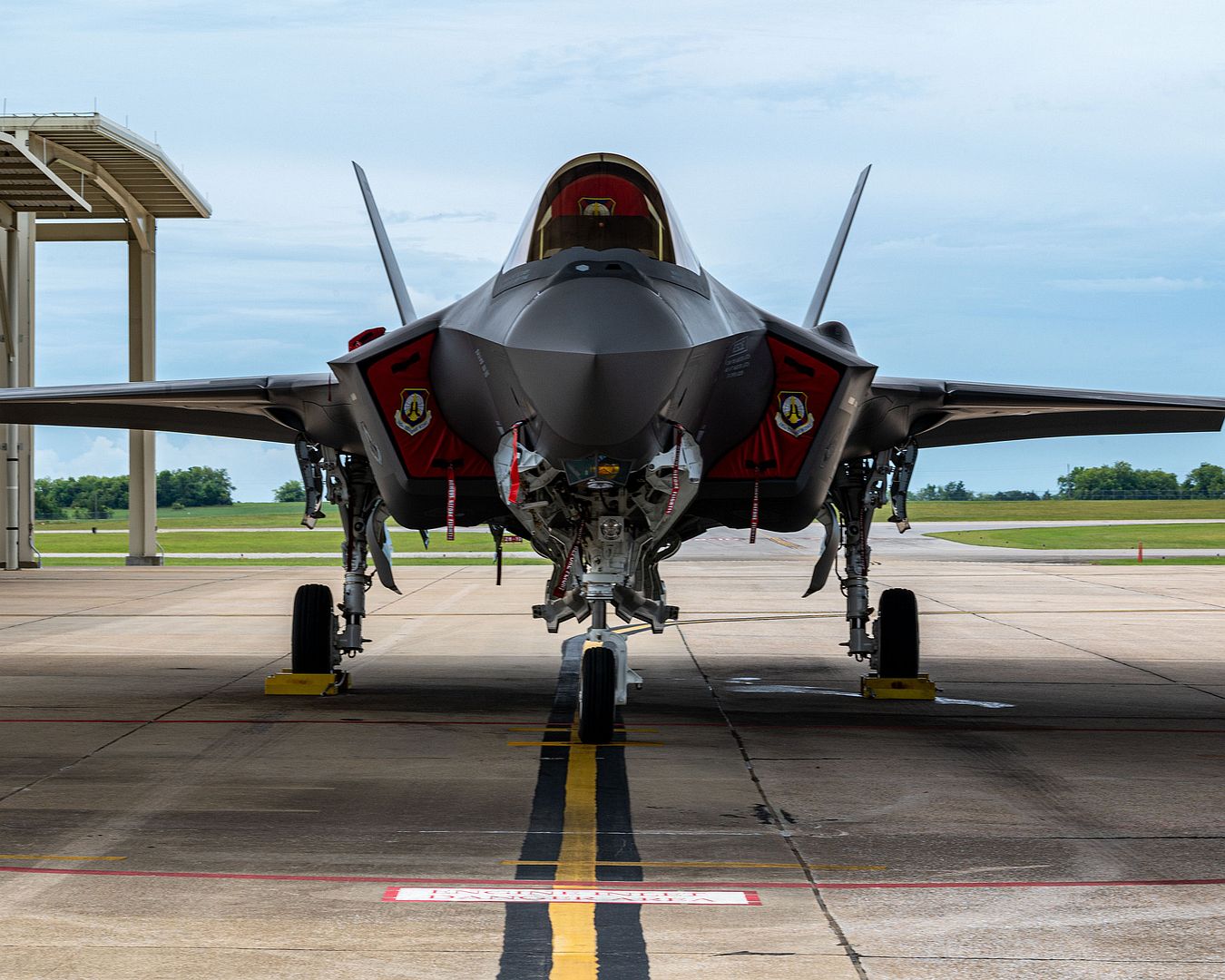
A German PA-200 Tornado takes off during the Arctic Thunder Open House at Joint Base Elmendorf-Richardson, Alaska, July 19, 2024. The German aircraft demonstrates its agile close combat capabilities in a show of international joint force power along various other acts. (U.S. Air Force photo by Airman Eli A. Rose)
The U.S. Air Force F-22 Raptor Demonstration Team from Joint Base Langley-Eustis, Va., performs a practice demonstration over the flightline during the Arctic Thunder Open House at Joint Base Elmendorf-Richardson, Alaska, July 20, 2024. The F-22 Raptor is a multi-capable aircraft with the ability to perform air-to-air and air-to-ground missions, harnessing the full potential of the 5th generation aircraft. (U.S. Air Force photo by Airman Moises Vasquez)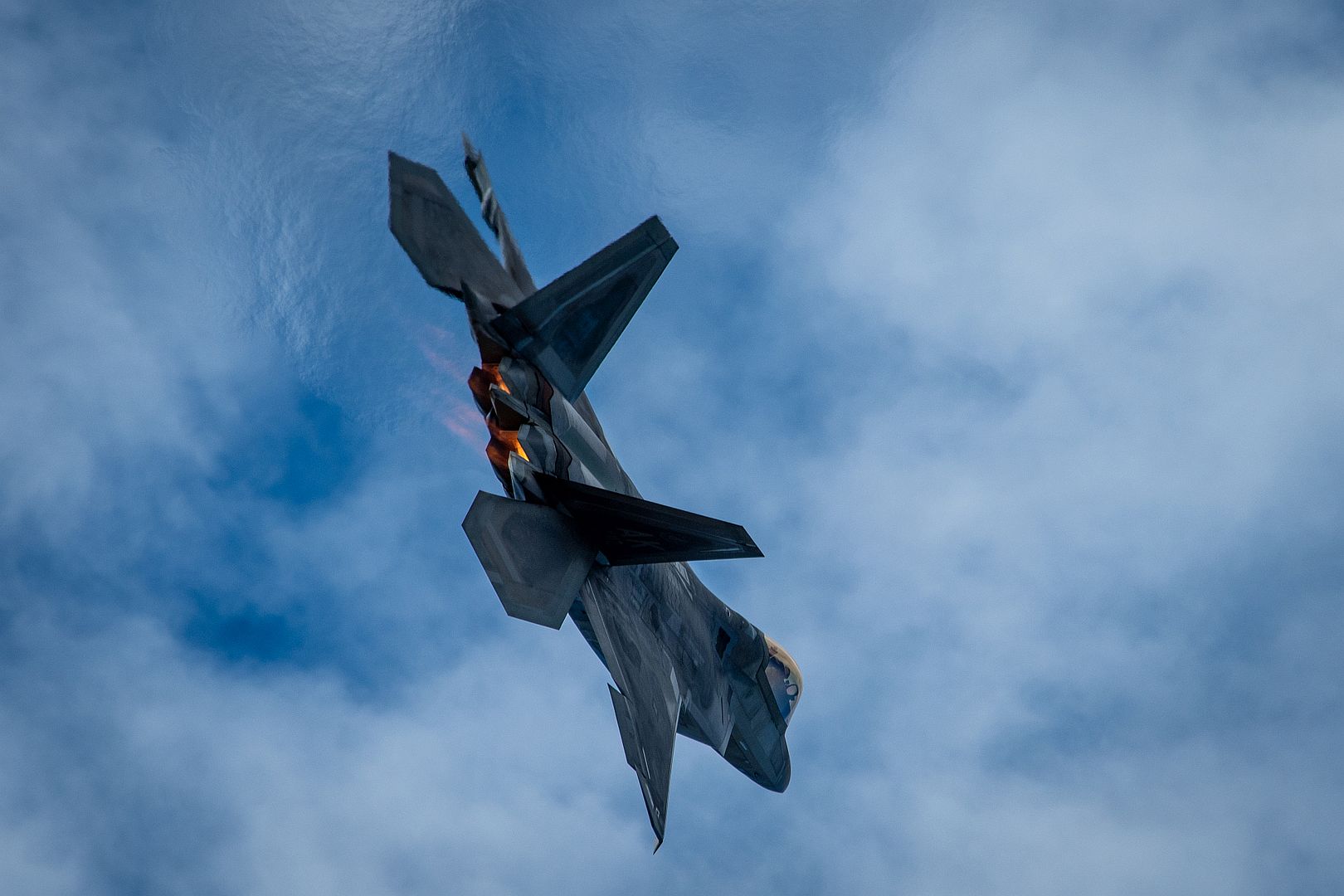
A U.S. Air Force B-52 Stratofortress from the 2nd Bomb Wing, Barksdale Air Force Base, La., receives fuel from a KC-135 Stratotanker from the 100th Air Refueling Wing, Royal Air Force Mildenhall, England, to receive fuel during Bomber Task Force 24-4 over Finland, July 21, 2024. Allies and partner nations take every opportunity to train together to refine tactics, techniques, and procedures to improve military readiness, tactical proficiency, and interoperability. (U.S. Air Force photo by Senior Airman Christopher Campbell)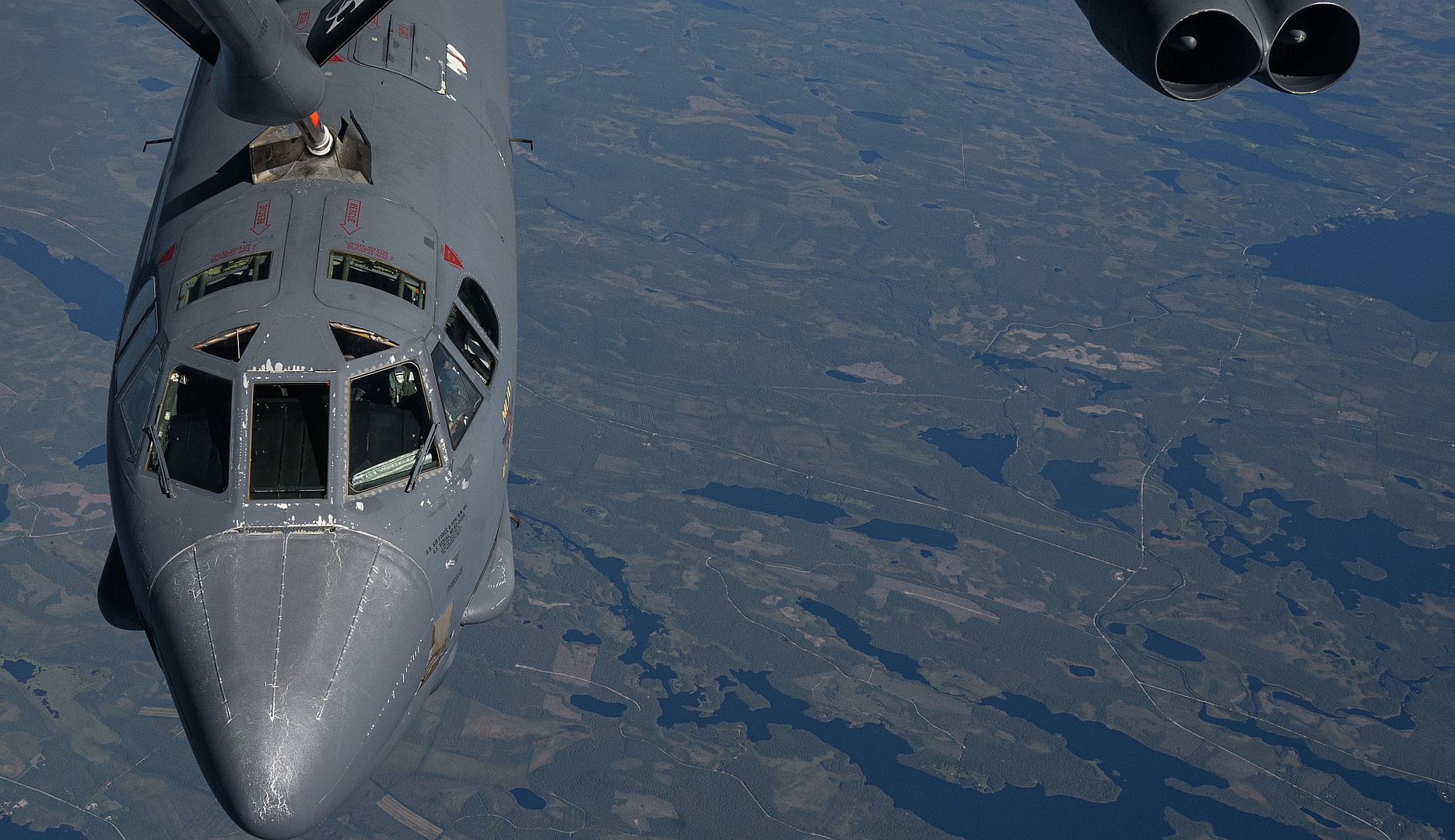
A B-52H Stratofortress from the 20th Bomb Squadron, Barksdale Air Force Base, La., makes its initial landing at Mihail Kogălniceanu Air Base, Romania, in support of Bomber Task Force Deployment 24-4, July 21, 2024. The lethal, long-range strike capabilities provided by strategic bombers influence the decision making of our nation’s competitors and adversaries by ensuring they know that the cost of military aggression would be outweighed by any potential gain. (U.S. Air Force Photo by Senior Airman Seth Watson)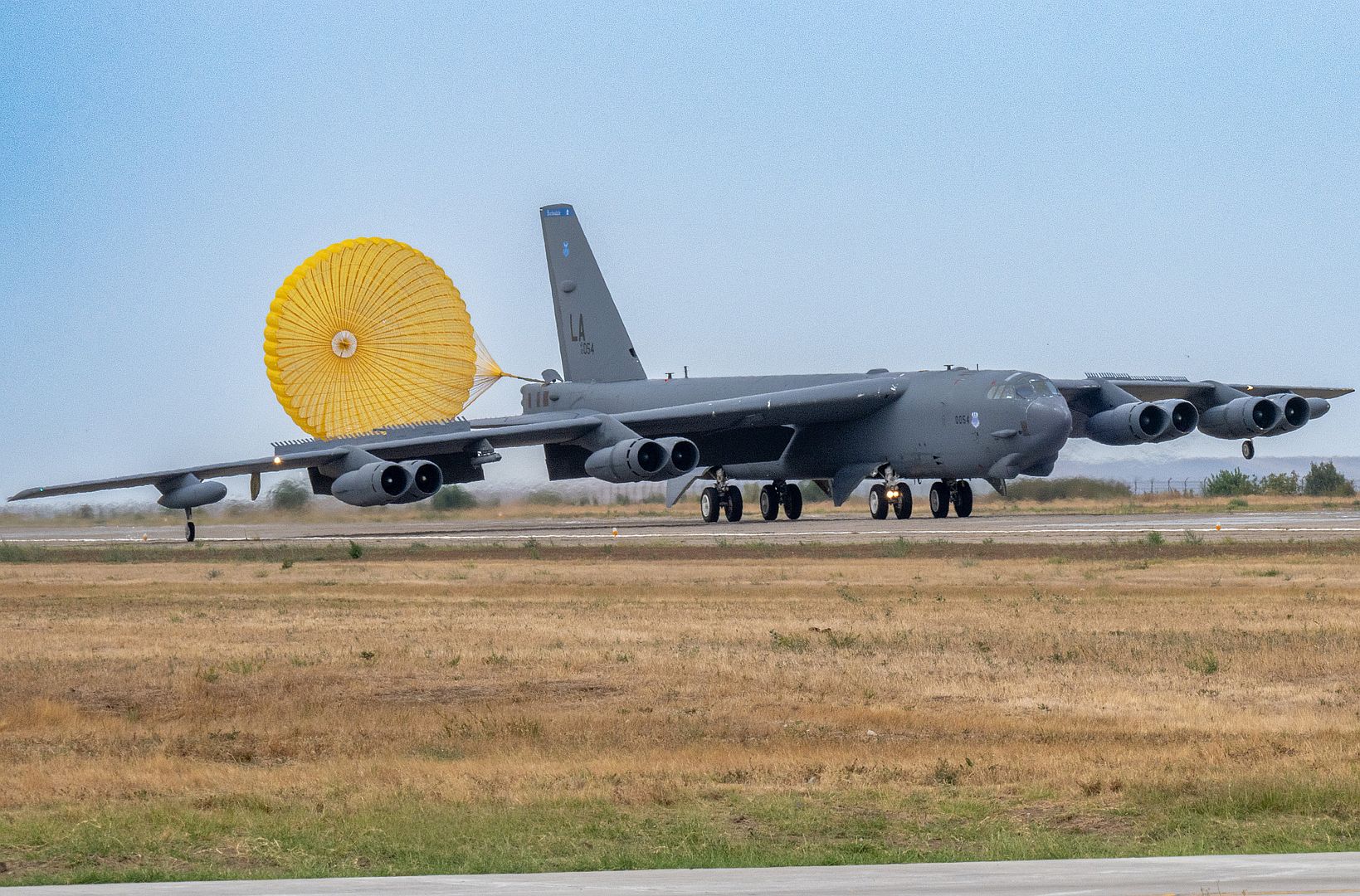
The Royal Air Force Red Arrow aeronautical team fly past viewers during the Royal International Air Tattoo (RIAT) the world’s largest international airshow at RAF Fairford, England, July 21, 2024. This year RIAT commemorated the 75th anniversary of NATO and the 50th anniversary of the F-16 Fighting Falcon. U.S. military participation in RIAT highlights the value of U.S. force presence in Europe, demonstrates U.S. commitment to Europe and reinforces NATO strength and unity. (U.S. Air Force photo by Tech. Sgt. Jessica Avallone)_the_world_s_largest_international_airshow_at_RAF_Fairford_England_July_21_2024..jpg?width=1920&height=1080&fit=bounds)
A Royal Danish Air Force F-16AM Fighting Falcon lands on the runway during the Royal International Air Tattoo (RIAT) the world’s largest international airshow at RAF Fairford, England, July 19, 2024. This year RIAT commemorated the 75th anniversary of NATO and the 50th anniversary of the F-16 Fighting Falcon. U.S. military participation in RIAT highlights the value of U.S. force presence in Europe, demonstrates U.S. commitment to Europe and reinforces NATO strength and unity. (U.S. Air Force photo by Tech. Sgt. Jessica Avallone)_the_world_s_largest_international_airshow_at_RAF_Fairford_England_July_19_2024..jpg?width=1920&height=1080&fit=bounds)
A Qatari Emiri Air Force F-15QA Ababil conducts an aerial demonstration during the Royal International Air Tattoo (RIAT) the world’s largest international airshow at RAF Fairford, England, July 19, 2024. This year RIAT commemorated the 75th anniversary of NATO and the 50th anniversary of the F-16 Fighting Falcon. U.S. military participation in RIAT highlights the value of U.S. force presence in Europe, demonstrates U.S. commitment to Europe and reinforces NATO strength and unity. (U.S. Air Force photo by Tech. Sgt. Jessica Avallone)_the_world_s_largest_international_airshow_at_RAF_Fairford_England_July_19_2024..jpg?width=1920&height=1080&fit=bounds)
U.S. Air Force Maj. Lindsay “MAD” Johnson, A-10C Thunderbolt II Demonstration Team commander and pilot, flies in formation with Steve “Steve-o” Hinton, a civilian airshow performer with the Air Force Heritage Flight Foundation P-47 Thunderbolt at the Battle Creek Field of Flight, July 4, 2024. This was the first time in the 2024 season that the A-10 Demo Team was able to fly with the A-10’s predecessor. (U.S. Air Force photos by Senior Airman Devlin Bishop)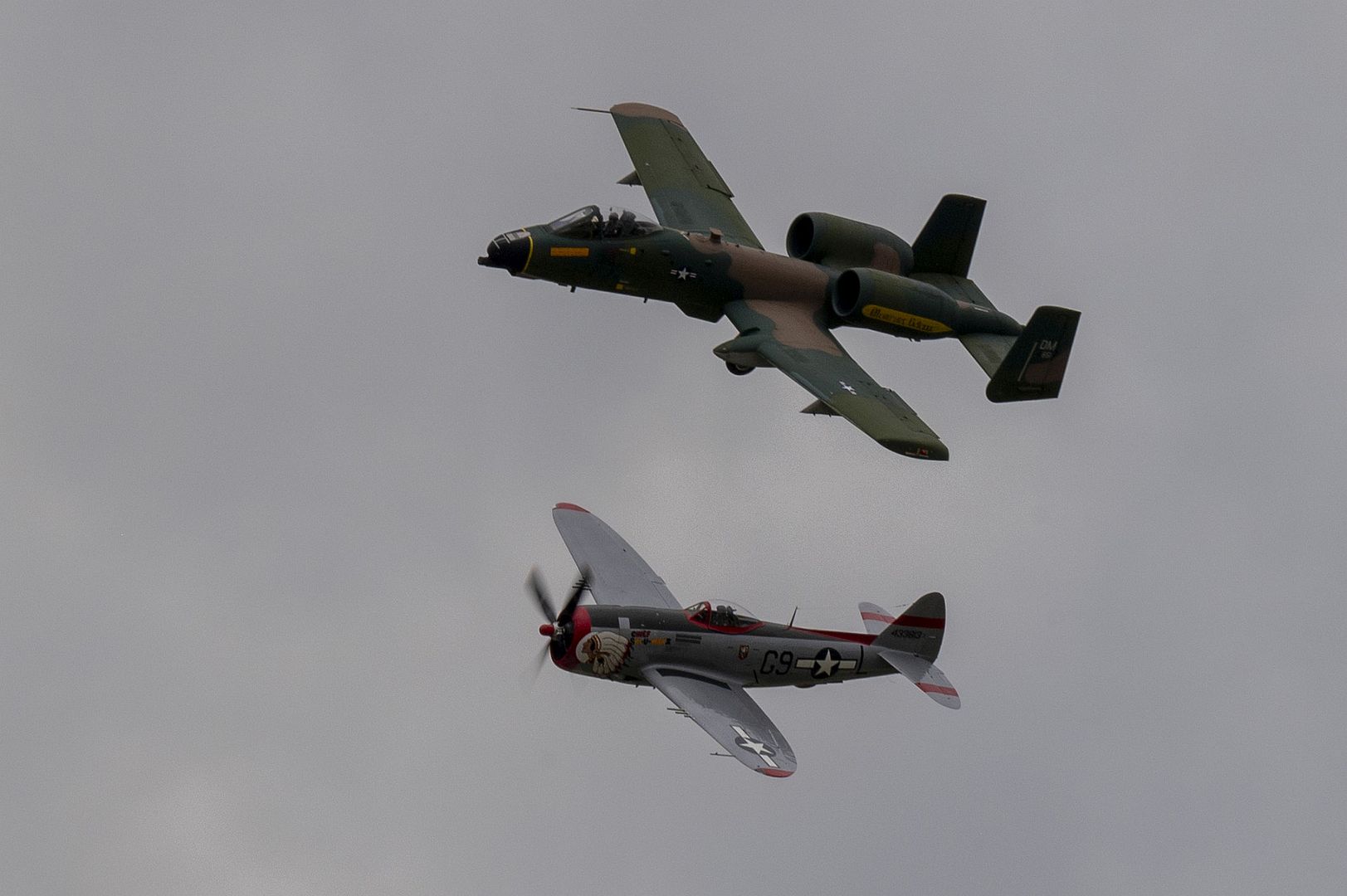
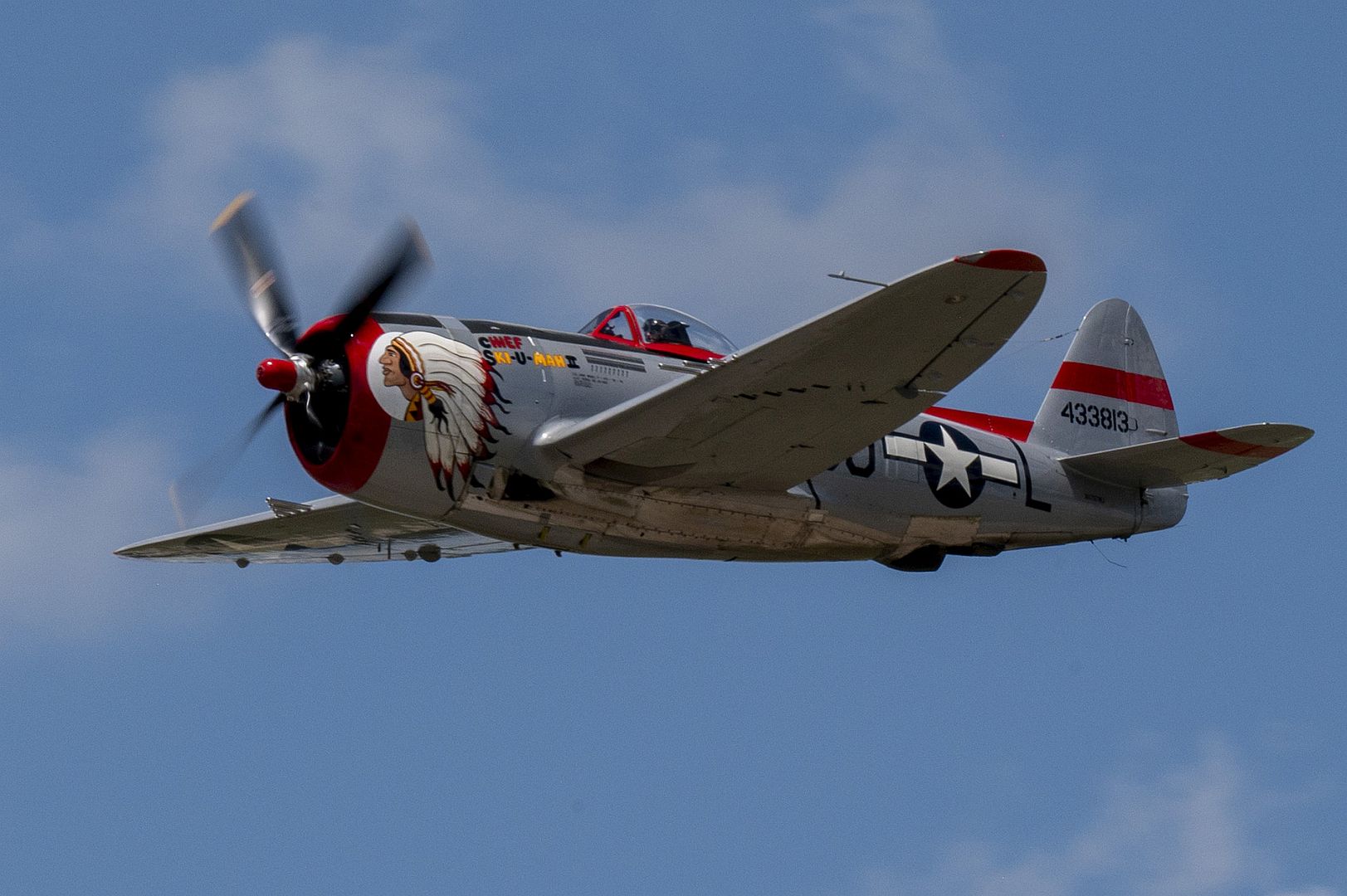
FARNBOROUGH, United Kingdom, July 22, 2024 /PRNewswire/ -- Boeing [NYSE: BA] and National Airlines announced today the global carrier has committed to place its first order for four 777 Freighters. Currently the longest-range twin-engine freighter with unrivaled payload capacity, the 777 Freighter will help maximize the airline's commercial cargo service and boost market share across its global operations.
"We are elated by this remarkable order of four Boeing 777 Freighters. This demonstrates our commitment to offering efficient, resourceful, and modern air freight services to support our global customers' increasing transportation demands," said Christopher Alf, chairman of National Airlines. "The order affirms our fleet growth plan as we enter into the next chapter of National. We sincerely appreciate the support by Boeing and all its associated teams in this journey ahead."
Once finalized, National Airlines' first direct purchase of Boeing airplanes will be posted to Boeing's Orders & Deliveries website.
The 777 Freighter can fly farther (9,200 km / 4,970 nmi) and carry more freight (107 tonnes) than any other twin-engine cargo jet today. This capability enables operators to fly more freight on more nonstop routes with better operating economics.
"We appreciate National Airlines for its trust in Boeing and the 777 Freighter to grow the carrier's global fleet and deliver greater value for its customers," said Stephanie Pope, president and CEO of Boeing Commercial Airplanes. "With its cargo capacity, range and reliability, operators continue to rely on the 777 Freighter to build their future fleets, making it the best-selling freighter of all time."
The 777 Freighters will join National Airline's expanding fleet of nine 747-400 freighters. Designed to integrate seamlessly with existing 747 operations, the 777 Freighter allows carriers to easily transfer cargo between the two airplanes to streamline ground logistics and leverage additional cost savings through fleet commonality.
Boeing has delivered more than 270 777 Freighters to date. As the market leader in freighter airplanes, Boeing provides more than 90% of the worldwide dedicated freighter capacity, including production and converted airplanes. Over the next 20 years, Boeing's 2024 Commercial Market Outlook predicts an additional 2,845 freighters will enter service to meet growing global trade and e-commerce.
As a leading global aerospace company, Boeing develops, manufactures and services commercial airplanes, defense products and space systems for customers in more than 150 countries. As a top U.S. exporter, the company leverages the talents of a global supplier base to advance economic opportunity, sustainability and community impact. Boeing's diverse team is committed to innovating for the future, leading with sustainability, and cultivating a culture based on the company's core values of safety, quality and integrity. Join our team and find your purpose at boeing.com/careers.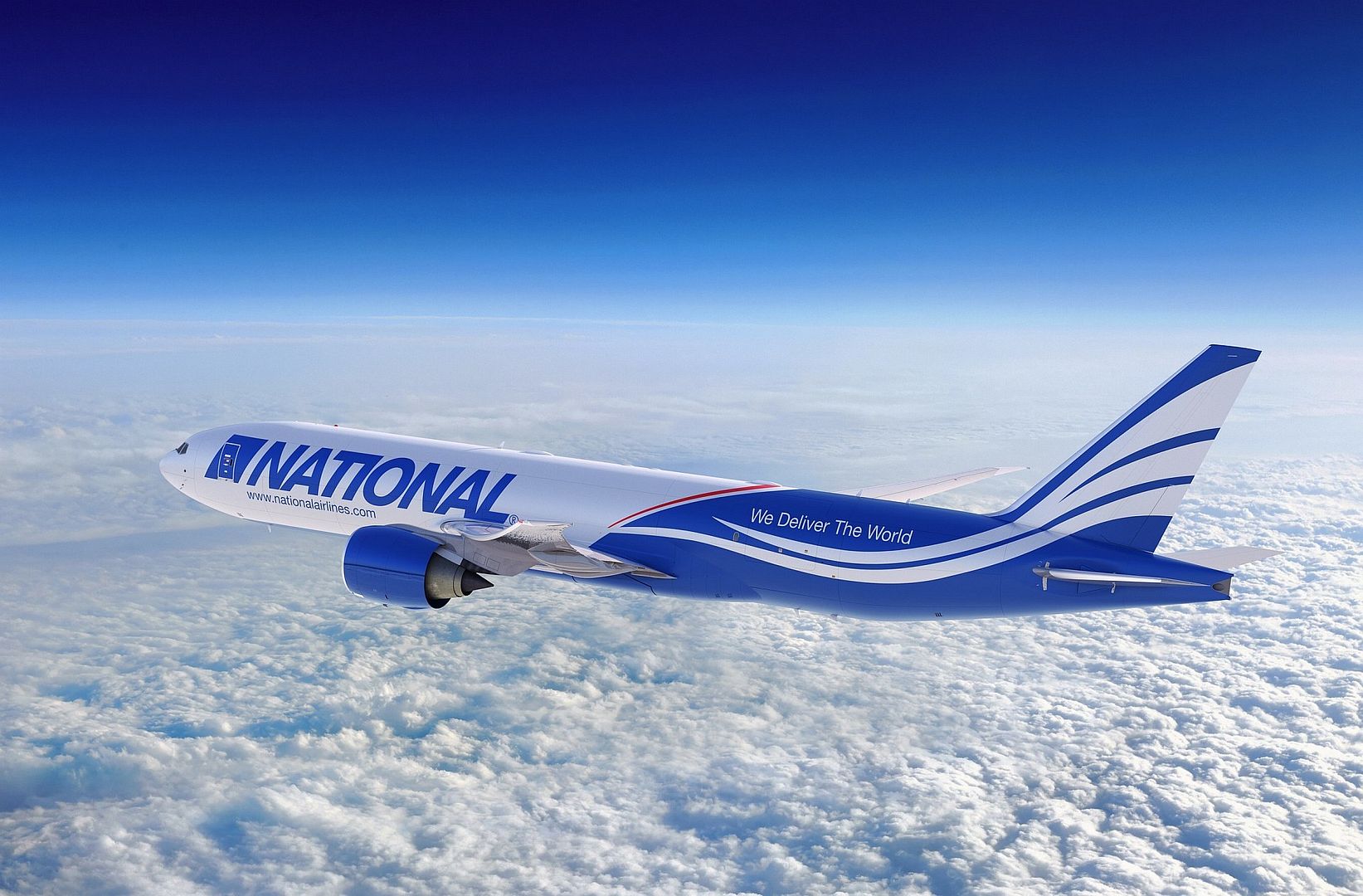
FARNBOROUGH, United Kingdom, July 22, 2024 /PRNewswire/ -- Boeing [NYSE: BA] and Korean Air announced today the airline's intent to purchase up to 50 of Boeing's highly fuel-efficient widebody airplanes, including 20 777-9s and 20 787-10s with options for 10 more of the largest 787 Dreamliner variant.
Korean Air's selection of the 777-9 and 787-10 supports planned growth and renewal of its fleet in size, range and capacity to reach high-demand markets in Europe and North America, as well as popular regional routes within Asia. The carrier will leverage the market-leading efficiency and versatility of these widebody jets to enhance its fleet while adding flexibility to its global network ahead of its anticipated merger with Asiana Airlines.
"The addition of the Boeing 777-9 and 787-10 aircraft marks a significant milestone in our strategic objective to expand and upgrade our fleet," said Walter Cho, Chairman and CEO of Korean Air. "This investment underscores our commitment to providing a best-in-class flying experience. These new airplanes will elevate passenger comfort and enhance operational efficiency, while significantly reducing carbon emissions, supporting our long-term commitment to sustainable aviation."
When finalized and posted to Boeing's Orders & Deliveries website, Korean Air will be the latest customer to purchase the world's largest and most fuel-efficient twin engine jet.
The 777-9 can seat 426 passengers in a two-class configuration with a range of 13,500 km (7,285 nautical miles) and the 787-10 can carry up to 336 passengers with a range of 11,730 km (6,330 nautical miles).
"We are honored Korean Air has selected our largest, most efficient widebody airplanes to add capacity to its global network," said Stephanie Pope, president and CEO of Boeing Commercial Airplanes. "Boeing airplanes have played an integral role with Korean Air over the past 50 years, and the 777X and 787 Dreamliner will continue to support the airline's long-term goals for sustainability and continued growth."
The 777-9 features advanced technologies from the 787 Dreamliner family, including new carbon-fiber composite wings and engines that will enable the airplane to achieve 10% better fuel efficiency, CO2 emissions and operating costs than the competition. Meanwhile, the fuel efficiency of the 787 has helped operators avoid more than 169 billion pounds in CO2 emissions since entering service.
Recently rated the #2 airline in the world by airlineratings.com, Korean Air continues to optimize its global route network and looks to maintain its status as a leading global carrier. The airline will feature new business class suites and Wi-Fi capability onboard its new 787-10s, further enhancing its award-winning onboard service.
Korean Air's Aerospace Division currently supplies components for the 787 program, including the model's unique raked wing-tip. The supplier also produces parts for a number of Boeing airplanes including the 737 MAX, 767 and 777.
As a leading global aerospace company, Boeing develops, manufactures and services commercial airplanes, defense products and space systems for customers in more than 150 countries. As a top U.S. exporter, the company leverages the talents of a global supplier base to advance economic opportunity, sustainability and community impact. Boeing's diverse team is committed to innovating for the future, leading with sustainability, and cultivating a culture based on the company's core values of safety, quality and integrity. Join our team and find your purpose at boeing.com/careers.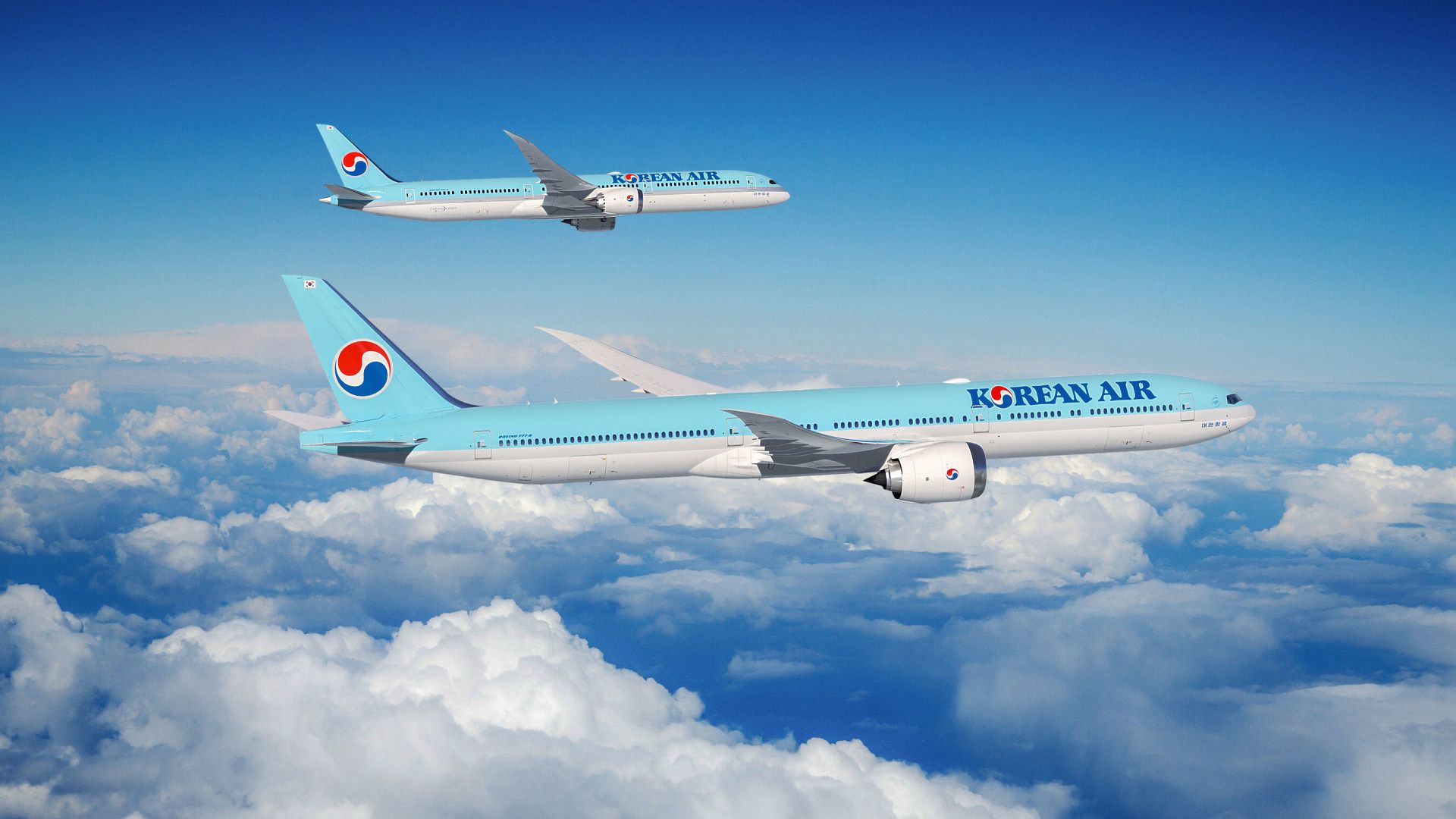
FARNBOROUGH, United Kingdom, July 22, 2024 /PRNewswire/ -- Boeing [NYSE: BA] and Luxair announced today the European regional carrier is again ordering a new member of the 737 MAX family to power its sustainable growth. A year after purchasing the 737-7 and 737-8 models, Luxair has now placed an order for two 737-10 airplanes with options for two more. The 737-10 is the largest model in the MAX family and provides the best economics of any single-aisle jet.
"The purchase of the 737-10 is another step towards Luxair positioning for its future with the investment in the latest airplane technology that will support Luxair's growth plans and the decarbonization of our fleet. There is high commonality between the 737 MAX models, and this allows for significant operational savings for the airline," said Gilles Feith, Luxair CEO.
"In addition to reducing overall fuel use and emissions, the 737 MAXs will help create a 50 percent smaller noise footprint by reducing noise generated by takeoffs and landings at Luxembourg Airport."
The 737 MAX family reduces fuel use and carbon emissions 20 percent compared to the airplane it replaces, providing operators greater efficiency along with fleet commonality. With the 737-10's size, operators can carry more passengers and realize the lowest cost per seat of any single-aisle airplane.
Luxair plans to operate its new 737-10s to offer passengers a minimum of 30-inch seat pitch. In this configuration, the airline can fly up to 213 passengers on routes stretching 5,740 km (3,100 nautical miles), resulting in more capacity and range to capitalize on growing leisure travel.
"With three members of the 737 MAX family in its fleet, Luxair will have the flexibility to use the right-size airplane according to the market demand," said Brad McMullen, Boeing senior vice president of Commercial Sales and Marketing. "We appreciate Luxair for choosing the 737-10 to support its growth and improve the passenger experience, while realizing the benefits of operating an increasingly fuel-efficient fleet."
Luxair currently operates a regional fleet of 21 airplanes, including two leased 737-8s and eight Next-Generation 737s. Luxair has expanded its route network by 30% in the past two years, serving 94 destinations.
Founded in 1961, Luxair is a key player in the economy of the Grand Duchy of Luxembourg and the surrounding Greater Region. Passenger air transport is probably the most well-known activity of the general public. Luxair offers fast air service to most major cities, business centres and international hubs in Europe. The airline offers maximum flexibility to its business customers and quality travel to its leisure customers. Luxair's tour operator offers a wide range of packages and themed holidays through its tourism division. Luxair is also the provider of airport services at Luxembourg Airport and its air cargo division handles all kinds of goods with ease and efficiency.
As a leading global aerospace company, Boeing develops, manufactures and services commercial airplanes, defense products and space systems for customers in more than 150 countries. As a top U.S. exporter, the company leverages the talents of a global supplier base to advance economic opportunity, sustainability and community impact. Boeing's diverse team is committed to innovating for the future, leading with sustainability, and cultivating a culture based on the company's core values of safety, quality and integrity. Join our team and find your purpose at boeing.com/careers.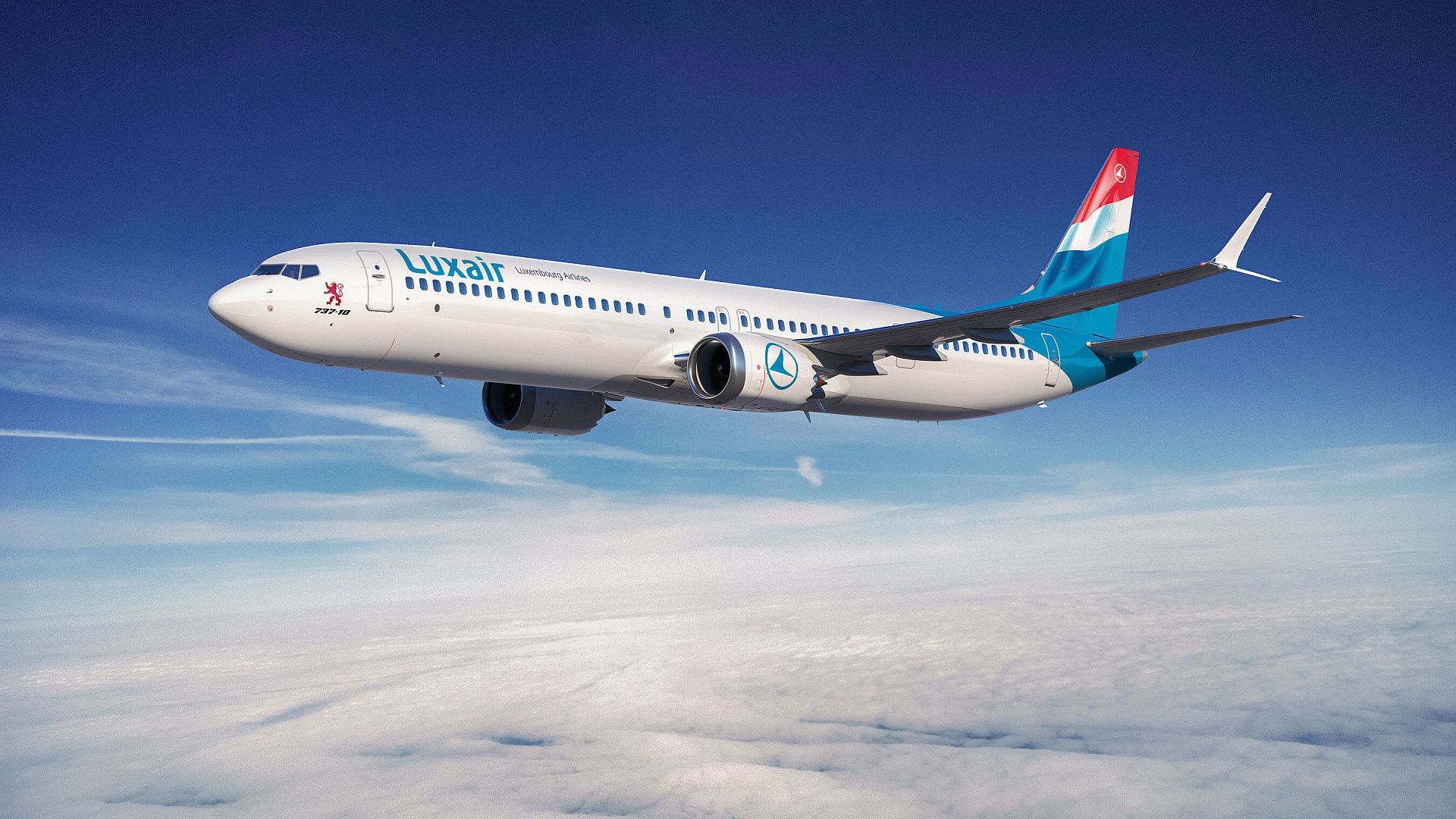
FARNBOROUGH, United Kingdom, July 22, 2024 /PRNewswire/ -- Boeing [NYSE:BA] and Japan Airlines (JAL) today announced an agreement for up to 20 more 787 Dreamliners, as the 787's market-leading efficiency and range are valued on international routes to North America, Asia and India. The deal includes 10 787-9s with options for 10 more, adding to JAL's current fleet of more than 50 of the popular widebody jet.
"We are delighted to announce the addition of 787 Dreamliners to our fleet. This order underscores our commitment to accelerating the introduction of the modern and more fuel-efficient aircraft to deliver unparalleled service to our customers and further reduce CO₂ emissions. We greatly appreciate the strong relationship and support from Boeing, which has been instrumental in our efforts to modernize our fleet and expand our international routes," said Yukio Nakagawa, JAL Executive Officer of Procurement.
Once this order is finalized and posted to Boeing's Orders & Deliveries website, the carrier will have 10 787s and 21 737 MAX jets on order.
In recent years, JAL has leveraged the versatility of the 787 to open new point-to-point markets from Tokyo to San Diego, Boston and Bangalore. With a range of up to 7,565 nautical miles (14,010 km), the 787-9 possesses the longest-range capability within the 787 Dreamliner family, enabling JAL to open new routes and adding flexibility to its existing network.
"Japan Airlines continues to be a global ambassador for the 787 Dreamliner and this latest agreement is a testament to the versatility and efficiency of the 787-9 for the airline's key long-haul routes," said Brad McMullen, Boeing senior vice president of Commercial Sales and Marketing. "We value our long-standing partnership with Japan Airlines and are pleased that they have re-selected the 787 Dreamliner as they continue to modernize their world-class fleet."
Since revenue service began in 2011, the 787 family has opened more than 400 new nonstop routes around the world and received more than 1,900 orders from 87 customers – more than half from repeat customers, like Japan Airlines which operates both the 787-8 and 787-9.
As a leading global aerospace company, Boeing develops, manufactures and services commercial airplanes, defense products and space systems for customers in more than 150 countries. As a top U.S. exporter, the company leverages the talents of a global supplier base to advance economic opportunity, sustainability and community impact. Boeing's diverse team is committed to innovating for the future, leading with sustainability, and cultivating a culture based on the company's core values of safety, quality and integrity. Join our team and find your purpose at boeing.com/careers.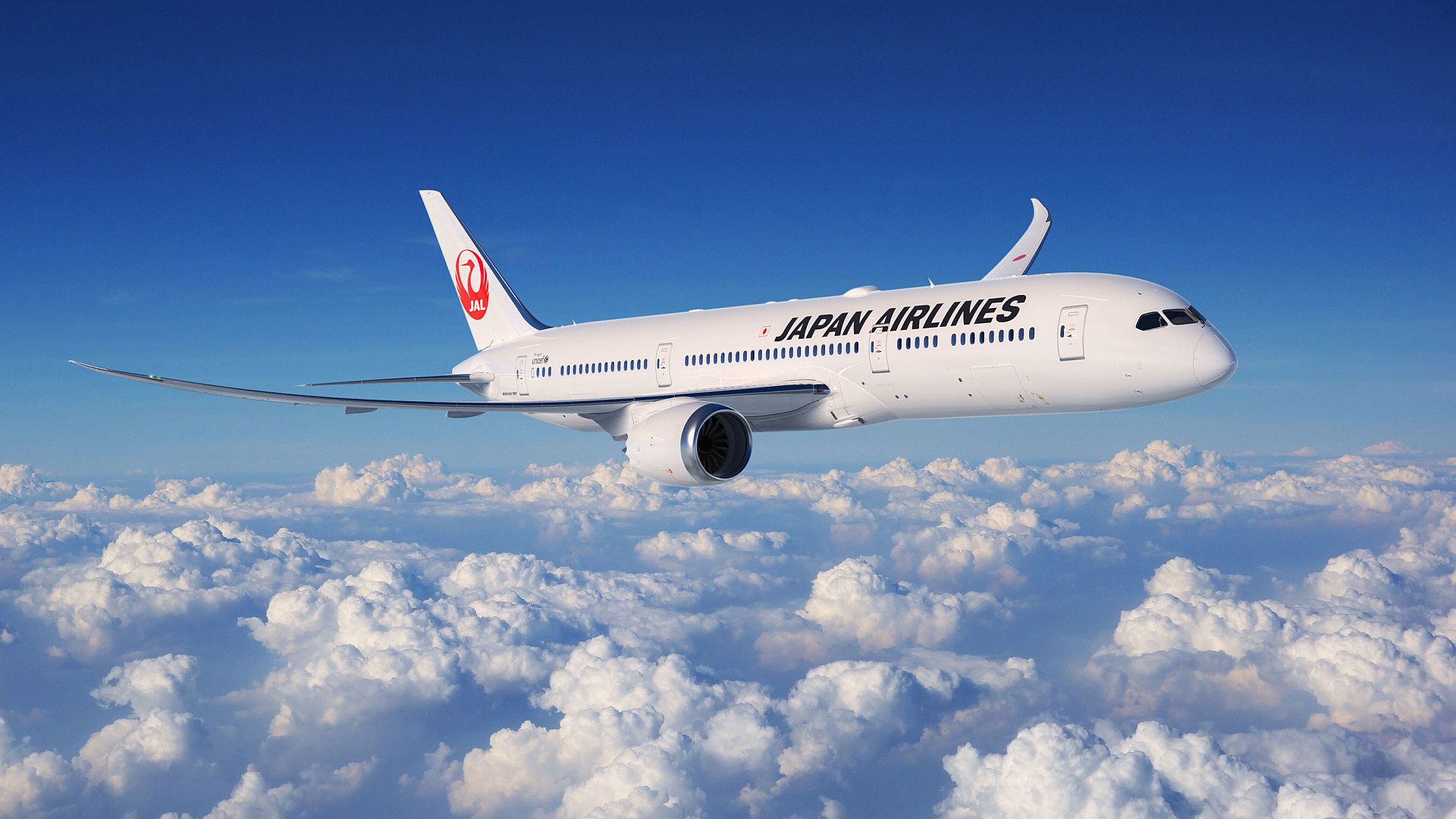
Farnborough, United Kingdom, 22 July 2024 - Drukair - Royal Bhutan Airlines, the national flag carrier of the Kingdom of Bhutan, a fully owned subsidiary of the state holding company Druk Holding and Investments Limited (DHI) has signed a Memorandum of Understanding (MoU) with Airbus for 3 A320neo and 2 A321XLR aircraft to expand its international network.
The new aircraft are anticipated to start delivery in 2030. The airline plans to fly these aircraft out of Paro International Airport and the new airport at Gelephu Mindfulness City (GMC), envisioned to become Bhutan’s futuristic economic hub. From here, Drukair will expand its connectivity to Europe, South East Asia and Australia.
Drukair already operates four Airbus A320 Family aircraft consisting of three A319s and one A320.
Based on His Majesty Jigme Khesar Namgyel Wangchuck’s vision, GMC, located in the southern plains of Bhutan, is emerging as a new economic engine for the Kingdom. As the national carrier, Drukair plays a pivotal role in enabling the prosperity of GMC and Bhutan by efficiently and reliably meeting growing transportation and logistics needs.
Tandi Wangchuk, Drukair CEO said, “We are thrilled to embark on this new chapter in Drukair’s history, which dovetails perfectly with development of the Gelephu Mindfulness City and work to expand the Gelephu airport. Our investment in these state-of-the-art aircraft underscores our dedication to supporting Bhutan’s vision of holistic and mindful development.”
Executive Vice President Sales of Airbus Commercial Aircraft business Benoît de Saint-Exupéry said: “We are grateful to Drukair for reaffirming their trust in Airbus to power their next phase of growth. Airbus has been a long-standing partner of Bhutan and we are extremely proud that our latest generation aircraft will be a part of the Kingdom’s next chapter of development, connecting the Gelephu Mindfulness City to the rest of the world.”
Drukair is headquartered in Paro, Bhutan, and operates scheduled flights to 10 international destinations, including five countries in the South Asian region. Drukair also operates to three domestic destinations.
The A321neo is the largest member of Airbus’ best-selling A320neo Family, offering unparalleled range and performance. By incorporating new generation engines and Sharklets, the A321neo brings a 50% noise reduction and more than 20% fuel savings and CO₂ reduction compared to previous generation single-aisle aircraft, while maximising passenger comfort in the widest single-aisle cabin in the sky. To date more than 6,400 A321neos have been ordered by more than 90 customers across the globe.
The A321XLR is the next evolutionary step from the A320neo which responds to market needs for even more range and payload, creating more value for the airlines. It will deliver an unprecedented Xtra Long Range of up to 4,700nm – 15% more range than the A321LR and with 30% lower fuel burn per seat compared with previous generation competitor aircraft, as well as reduced NOx emissions and noise. For passengers, the A321XLR’s new Airspace cabin will provide the best travel experience, while offering seats in all classes with the same high-comfort as on a long-haul wide-body, with the low costs of a single-aisle aircraft. So far, Airbus has secured more than 500 orders for the aircraft.
As with all Airbus aircraft, the A320 family is already able to operate with up to 50% Sustainable Aviation Fuel (SAF). The manufacturer is targeting to have its aircraft up to 100% SAF capable by 2030.
Farnborough, England, July 22, 2024 – The Dutch Ministry of Defense signed the contract today for the acquisition of nine Embraer C-390 Millennium aircraft during a ceremony at the Farnborough Airshow. As part of the project ‘Replacement of Tactical Airlift Capacity’, the contract is a joint purchase, in cooperation with Austria – five aircraft for the Royal Netherlands Air Force and four aircraft for the Austrian Air Force.
With this joint order, both countries aim at increasing their ability to rapidly deploy or evacuate equipment and personnel worldwide, even under difficult operational conditions. The enhanced tactical airlift capacity provided by the C-390 increases operational flexibility and responsiveness, provides logistical support in various missions and operations, and enables a wide range of humanitarian and medical tasks.
The joint purchase will also allow both nations – as well as current and future operators – to cooperate and benefit from synergies in areas like training, logistics and future growth of the platform, together with the other C-390 operators in NATO nations. The C-390 Millennium provides maximum operational readiness enabling interoperability and connectivity in networked environments and multiple domains.
The C-390 will improve operational capacity by offering better performance, greater reliability, and higher transport capacity. Additionally, the choice for the C-390 ensures that the Royal Dutch and Austrian Air Forces are equipped with state-of-the-art technology to meet the mission demands of the future.
“It is great that we can sign this agreement for both Austria as the Netherlands. I'm happy to see that we can buy these planes with the same specifications. This is a good example of collaboration in Europe between countries. The constructive support of Embraer has played a crucial role in the successful realization of this agreement. We appreciate the contribution of Embraer and look forward to a successful cooperation”, said Vice-Admiral Jan Willem Hartman, National Armaments Director of the Netherlands.
“We welcome the Netherlands and Austria as the newest members of the growing group of nations that have ordered the C-390 Millennium, the most efficient and modern military tactical transport currently in operation”, said Bosco da Costa Jr, President and CEO, Embraer Defense & Security. “This aircraft is the best choice in the market, offering an unbeatable combination of high performance, advanced technology and low life cycle costs.”
Since entering operation with the Brazilian Air Force in 2019 and the Portuguese Air Force in 2023, the C-390 has proven its capacity, reliability, and performance. The current fleet of aircraft in operation has accumulated more than 13,000 flight hours, with mission capable rate of 93% and mission completion rates above 99%, demonstrating exceptional productivity in the category.
The C-390 can carry more payload (26 tons) compared to other medium-sized military transport aircraft and flies faster (470 knots) and farther, being capable of performing a wide range of missions such as transporting and dropping cargo and troops, medical evacuation, search and rescue, firefighting, and humanitarian missions, operating on temporary or unpaved runways. The aircraft configured with air-to-air refueling equipment, with the designation KC-390, can operate both as a tanker and as a receiver, in this case also by receiving fuel from another KC-390 using pods installed under the wings.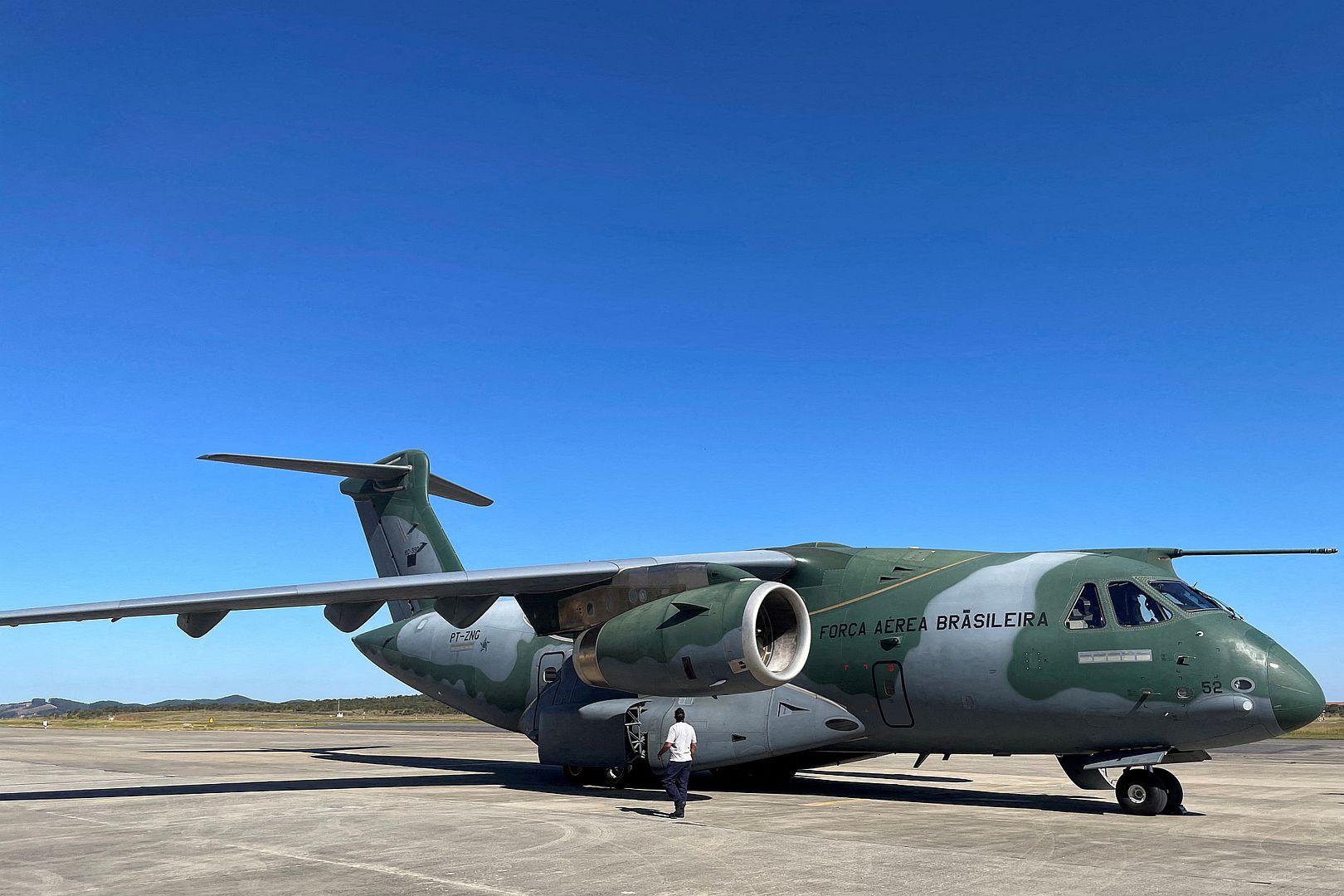
SAN DIEGO – 22 July 2024 – The United Kingdom’s Royal Air Force (RAF) now has two Protector RG Mk1 Remotely Piloted Aircraft (RPA) operating at RAF Waddington. The second Protector has started its ground trial at RAF Station Waddington with first flight expected in August. Protector is based on the MQ-9B SkyGuardian® RPA developed by General Atomics Aeronautical Systems, Inc. (GA-ASI), and is specially configured for the RAF. The RAF has taken delivery of 10 of their total order of 16 Protectors from GA-ASI, with eight aircraft currently undergoing RAF crew training, test, and evaluation in the United States.
“We’re thrilled to see a second Protector operating at Waddington,” said Chris Dusseault, GA-ASI’s vice president of MQ-9B in Europe. “The Royal Air Force is a great partner for GA-ASI, and we look forward to additional MQ-9B aircraft operating in the U.K. and more broadly across Europe.”
Simon Holford, Uncrewed Air Systems Delivery Team Leader at Defence Equipment & Support, said: “Seeing delivery and assembly of the second Protector aircraft in the UK is yet another measure of the significant progress on this project and testament to the hard work of everyone involved. Together with the three aircraft we have already taken delivery of in the US (which remain in the US for use in trials and/or training), we have now taken delivery of five of the sixteen aircraft we have ordered.”
Officer Commanding 31 Sqn, Wing Commander Maccoll said, “I’m delighted to see another RAF Protector assembled at RAF Waddington, thanks to the hard work of our Programme team, Defence partners, contractors, and the skill of 31 Squadron personnel. This Summer, Protector will undertake further test and evaluation and we expect more aircraft arrivals before the end of the year. “
In another program milestone, the first of four cadres of RAF aircrew completed training on April 29, 2024, at GA-ASI’s Flight Test and Training Center (FTTC) in Grand Forks, North Dakota. The GA-ASI training involved RAF Operational Conversion Units (OCUs), which are comprised of eight crews, including pilots, sensor operators (SOs), and mission intelligence coordinators (MICs) from 31, 54, or 56 Squadrons.
The scope of the training is focused on foundational skills required to operate the Protector air vehicle and its equipment, including the Multi-Spectral Targeting System (MTS), Synthetic Aperture Radar (SAR), Mission Intelligence Station (MIS), and System for Tasking and Real-Time Exploitation (STARE). Training involves building solid foundations for both normal and emergency operations in Intelligence, Surveillance, and Reconnaissance (ISR) systems, instrument flying, and Automatic Takeoff and Landing Capability (ATLC).
With the completion of the Protector Technicians course at GA-ASI facilities in Southern California on May 16, 2024, Number 31 Squadron now has another 21 qualified maintainers. As part of their training course, the RAF maintainers were able to directly support the training flights for their aircrew counterparts who were completing the live flying element of their Operational Conversion course from North Dakota.
MQ-9B is GA-ASI’s next-generation RPA System (RPAS), delivering exceptionally long endurance and range, with auto takeoff and landing under SATCOM-only control, and will be able to operate in unsegregated airspace using the GA-ASI-developed Detect and Avoid system. In addition to the RAF, contracts have been signed with Belgium, Canada, Taiwan and the U.S. Air Force in support of the Special Operations Command. The Japan Coast Guard is currently operating the MQ-9B for maritime operations, which the Japan Maritime Self-Defense Force (JMSDF) also selected for its Medium-Altitude, Long-Endurance (MALE) Remotely Piloted Aircraft System Trial Operation Project. MQ-9B has additionally supported various U.S. Navy exercises, including Northern Edge, Integrated Battle Problem, and Group Sail.
About GA-ASI
General Atomics Aeronautical Systems, Inc. (GA-ASI), an affiliate of General Atomics, is a leading designer and manufacturer of proven, reliable RPA systems, radars, and electro-optic and related mission systems, including the Predator® RPA series and the Lynx® Multi-mode Radar. With more than eight million flight hours, GA-ASI provides long-endurance, mission-capable aircraft with integrated sensor and data link systems required to deliver persistent situational awareness. The company also produces a variety of sensor control/image analysis software, offers pilot training and support services, and develops meta-material antennas.
For more information, visit www.ga-asi.com
-
11 months ago
 Main AdminCol. Michael 'Shot' Glass, 104th Fighter Wing Operations Group Commander, flew F-15C aircraft 85-101 from Barnes Air National Guard Base, Westfield, Massachusetts, to Bradley Air National Guard Base, East Granby, Connecticut, for its final flight before being retired and donated to the New England Air Museum, July 22, 2024. Donating the F15 to the museum ensures the preservation of the F-15's accomplished history and air superiority since 1979.
Main AdminCol. Michael 'Shot' Glass, 104th Fighter Wing Operations Group Commander, flew F-15C aircraft 85-101 from Barnes Air National Guard Base, Westfield, Massachusetts, to Bradley Air National Guard Base, East Granby, Connecticut, for its final flight before being retired and donated to the New England Air Museum, July 22, 2024. Donating the F15 to the museum ensures the preservation of the F-15's accomplished history and air superiority since 1979.
(U.S Air National Guard Photos by Jay Hewitt)
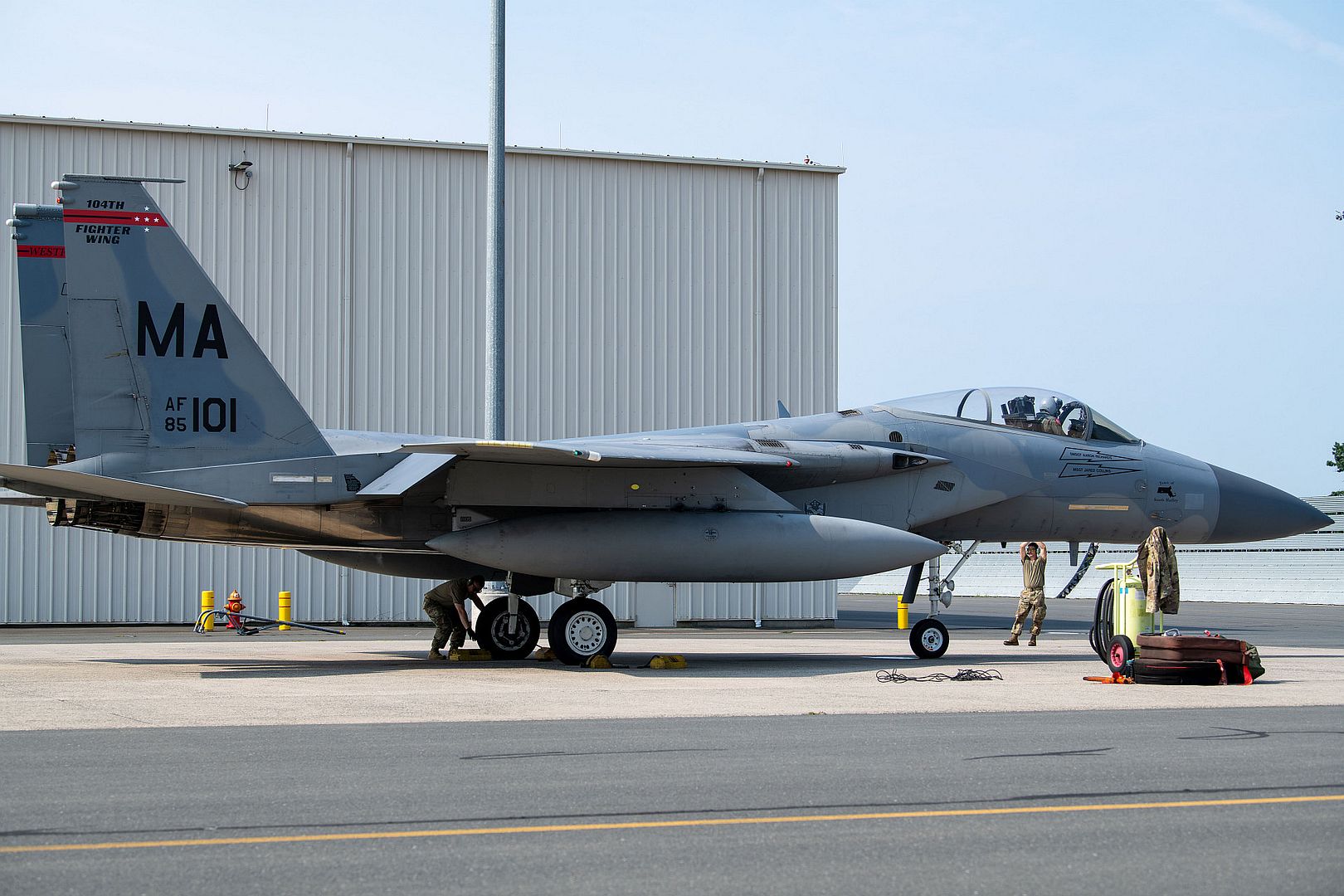
The U.S. Air Force F-22 Raptor Demonstration Team from Joint Base Langley-Eustis, Virginia., performs a practice demonstration over the flight line during the Arctic Thunder Open House at Joint Base Elmendorf-Richardson, Alaska, July 21, 2024. The F-22 Raptor is a multi-capable aircraft with the ability to perform air-to-air and air-to-ground missions, harnessing the full potential of the 5th generation aircraft. (U.S. Air Force photo by Senior Airman Julia Lebens)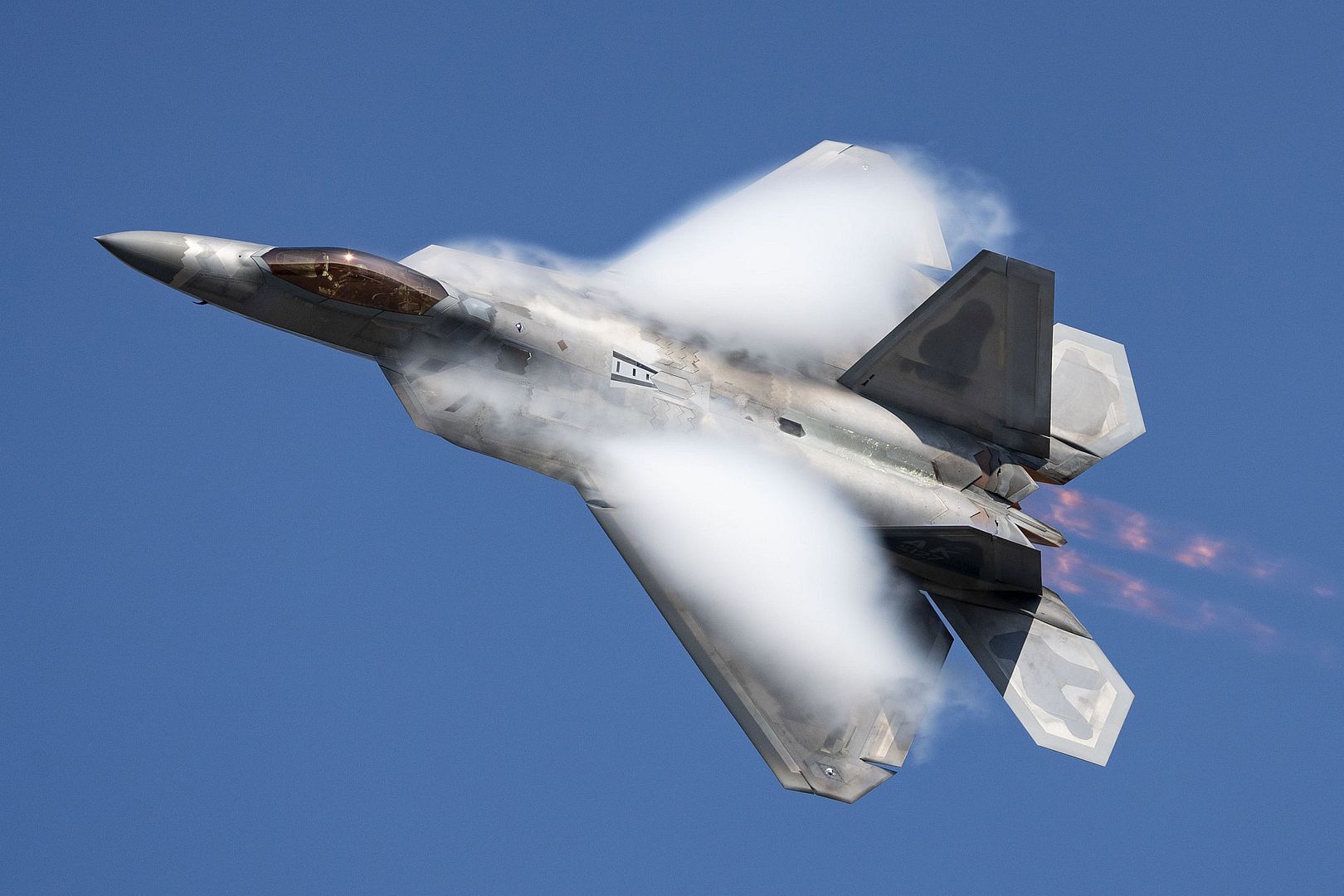
An F-35 Lightning II waits to take off for a night mission during Red Flag-Nellis 24-3 at Nellis Air Force Base, Nevada, July 17, 2024. The 414th Combat Training Squadron at Nellis conducts Red Flag exercises to provide aircrews the experience of multiple, intensive air combat sorties in the safety of a training environment. (U.S. Air Force photo by William R. Lewis)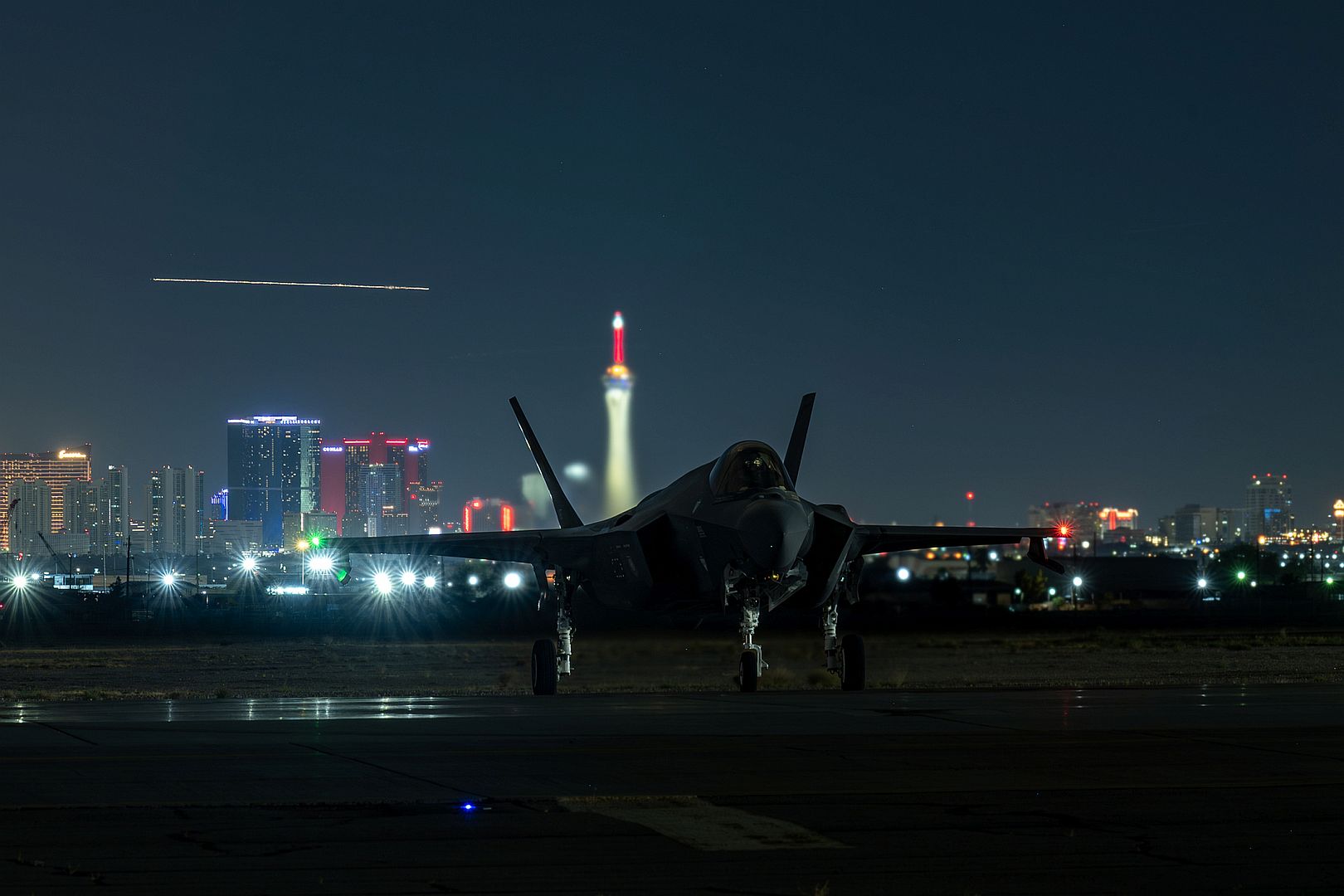
U.S., U.K., and Romanian Airmen pose for a group photo in front of a B-52H Stratofortress at Mihail Kogălniceanu Air Base, Romania, during Bomber Task Force Deployment 24-4, July 23, 2024. BTF 24-4 demonstrates NATO Allies and partners’ ability to seamlessly operate together and maintain a stable and prosperous Black Sea region. (U.S. Air Force Photo by Senior Airman Seth Watson)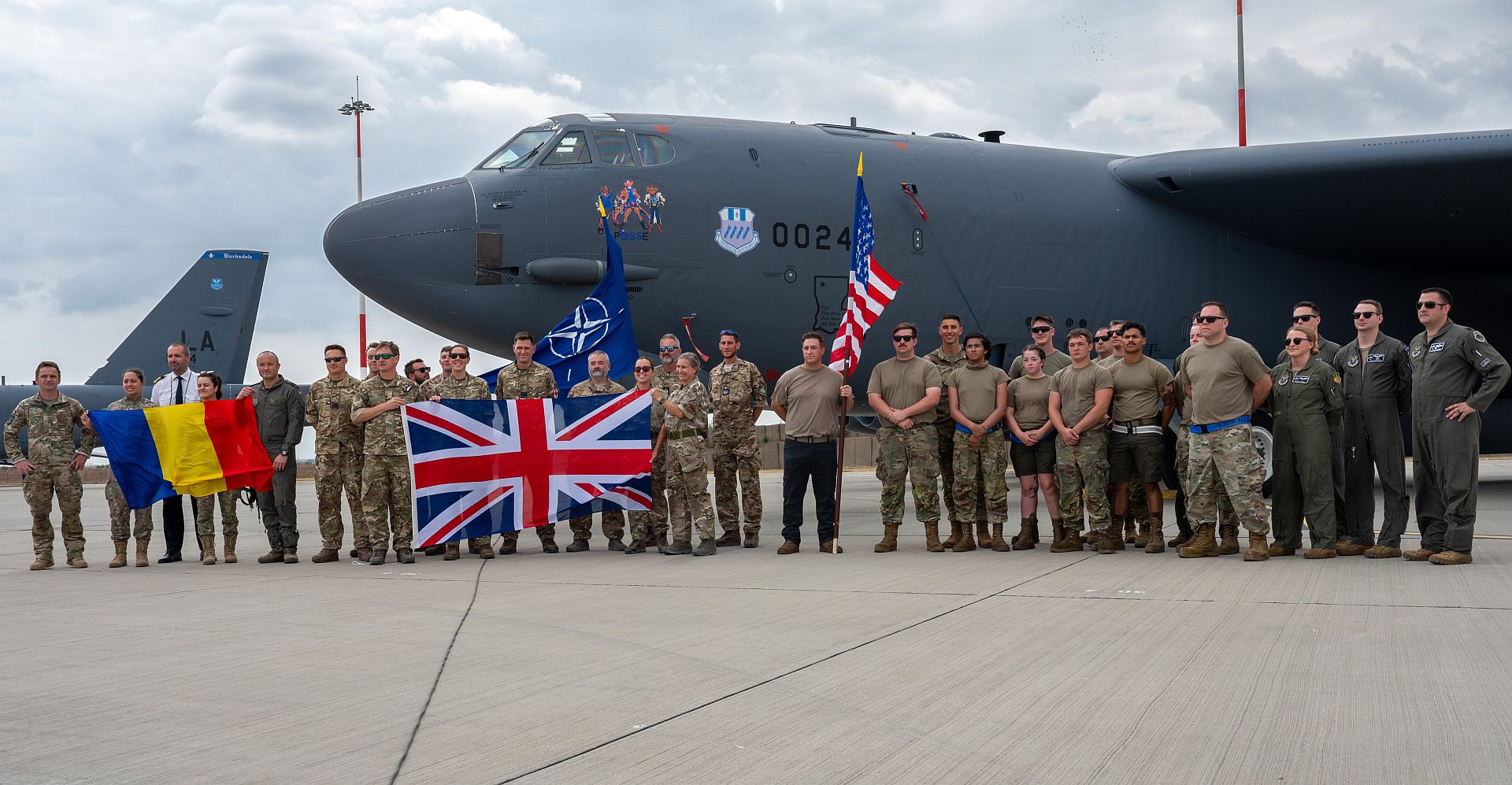
DENVER, July 23, 2024 — Boom Supersonic, the company building the world’s fastest airliner, today announced milestones across its Overture airliner and Symphony engine programs at the Farnborough International Airshow. Boom is reinventing the cockpit with an all-new flight deck, designed around pilots with safety at the forefront. Boom is making rapid progress on its Symphony engine, with hardware testing underway and the first full-scale engine core to be operational in just 18 months. Additionally, Boom announced that Symphony will be assembled in San Antonio, Texas through an expanded agreement with StandardAero.
Today’s announcements come on the heels of accelerating momentum for Boom. In March, the company conducted the historic first flight of its XB-1 supersonic demonstrator and in June completed construction on the Overture Superfactory in Greensboro, North Carolina.
“Passengers and airlines are hungry for supersonic flight,” said Blake Scholl, founder and CEO of Boom Supersonic. “Following XB-1’s successful test flight, we’re accelerating. Overture features an all-new flight deck, incorporating extensive pilot feedback, resulting in a flying experience that is both innovative and instantly familiar. Our Symphony engine has quickly progressed through design into hardware rig testing, and with a fully operational engine core on track for next year, our rapid development approach is pacing ahead of schedule.”
Boom continues to partner with airlines and best-in-class industry suppliers. Overture’s flight deck builds on the next-generation Honeywell Anthem avionics suite. An advanced head-worn vision system from Universal Avionics, who joins the Overture program today, is integrated into the flight deck. Boom worked with BAE Systems to integrate Active Control Sidesticks into the Overture flight deck simulator displayed at the Farnborough International Airshow.
Boom reinvents the cockpit with an all-new flight deck
Overture’s flight deck builds upon years of learning in aviation safety and is the result of extensive feedback from airline, business, and military pilots. Incorporating the Honeywell Anthem avionics suite, Overture offers pilots unprecedented situational awareness and ease of control, providing passengers with the safest possible flight experience.
Boom’s flight deck offers pilots the benefits of advanced automation and envelope protection, together with a force-feedback system that allows pilots to feel how the airplane is flying. With key airplane features accessible through high-definition touch screens, Overture can benefit from ongoing over-the-air software upgrades. Overture flight deck capabilities include:
Force-feedback sidesticks. For the first time on an airliner, force-feedback sidesticks allow pilots to control the plane while physically feeling both aircraft response and inputs made by the co-pilot or autopilot.
Autoland and augmented reality. Building on the system flown on XB-1, Overture has an advanced augmented reality vision system for takeoff and landing, eliminating the need for the droop nose used on Concorde. Pilots can safely land using autoland or augmented reality views provided on a head-worn device and on the pilot’s primary flight display.
Large 17-inch touchscreens. High-definition touchscreens eliminate the hundreds of breakers and buttons found in legacy cockpits. Every airplane function is accessible through software while physical controls—such as stick, throttle, and landing gear—are offered for safety-critical functions.
Over-the-air upgrades. Overture will receive over-the-air software upgrades, meaning new features and improvements will arrive regularly. Airlines can control how upgrades are rolled out across fleets.
Boom recently completed a series of flight deck tests with commercial pilots from leading airlines, including Mike Bannister, former Chief Concorde Pilot for British Airways.
“I’ve long believed that Overture is the rightful successor to Concorde,” said Mike Bannister, former Chief Concorde Pilot for British Airways. “After experiencing Overture’s flight deck, which is incredibly well designed and delightful to fly, my excitement and enthusiasm for this aircraft has only intensified.”
Boom revealed in June that it is already building and rig-testing Symphony hardware, starting with a full-scale test of combustor aerodynamics. The first 3D-printed parts have been produced for Symphony, including fuel nozzles and turbine center frames.
These hardware tests began just 18 months after the initial announcement of Symphony, demonstrating Boom’s rapid development approach. As part of this strategy, the company will conduct more than 30 engine hardware rig tests, allowing for validation and optimization of all key engine components, ranging from fan and nozzle acoustics to combustor fuel efficiency.
Boom also announced that it has accelerated development of a full-scale engine core, which will be operational in late 2025. Engine core testing will analyze performance of the compressor, combustor, and turbine section. Data gathered will further refine engineering and expedite production of a fully certified engine. Following this rapid development approach, Boom expects to build and test multiple iterations before certifying the final refined engine.
Boom also expanded its existing MRO partnership with StandardAero to include the production of Symphony. StandardAero will assemble and test Symphony engines at its facility in San Antonio, Texas. The Symphony assembly line will scale to produce 330 engines annually within a footprint projected to total over 100,000 square feet of production space.
“We are excited to expand our role to include the assembly and testing of Symphony engines, further supporting the development of next-generation flight with Boom,” said Russell Ford, Chairman and CEO of StandardAero. “Our collaboration is a testament to StandardAero’s world-class engineering capabilities and dedication to delivering solutions that power the future of air travel.”
Additionally, Boom announced it is teaming with aerospace leader ATI, Inc. for advanced high-temperature materials and components for Symphony’s high pressure compressor integrated blade and disk stages and for its turbine assembly. These advanced nickel-based superalloys will enable Symphony to achieve high performance and reliability in sustained supersonic operation.
Overture remains on target to achieve FAA and EASA certification by the end of the decade.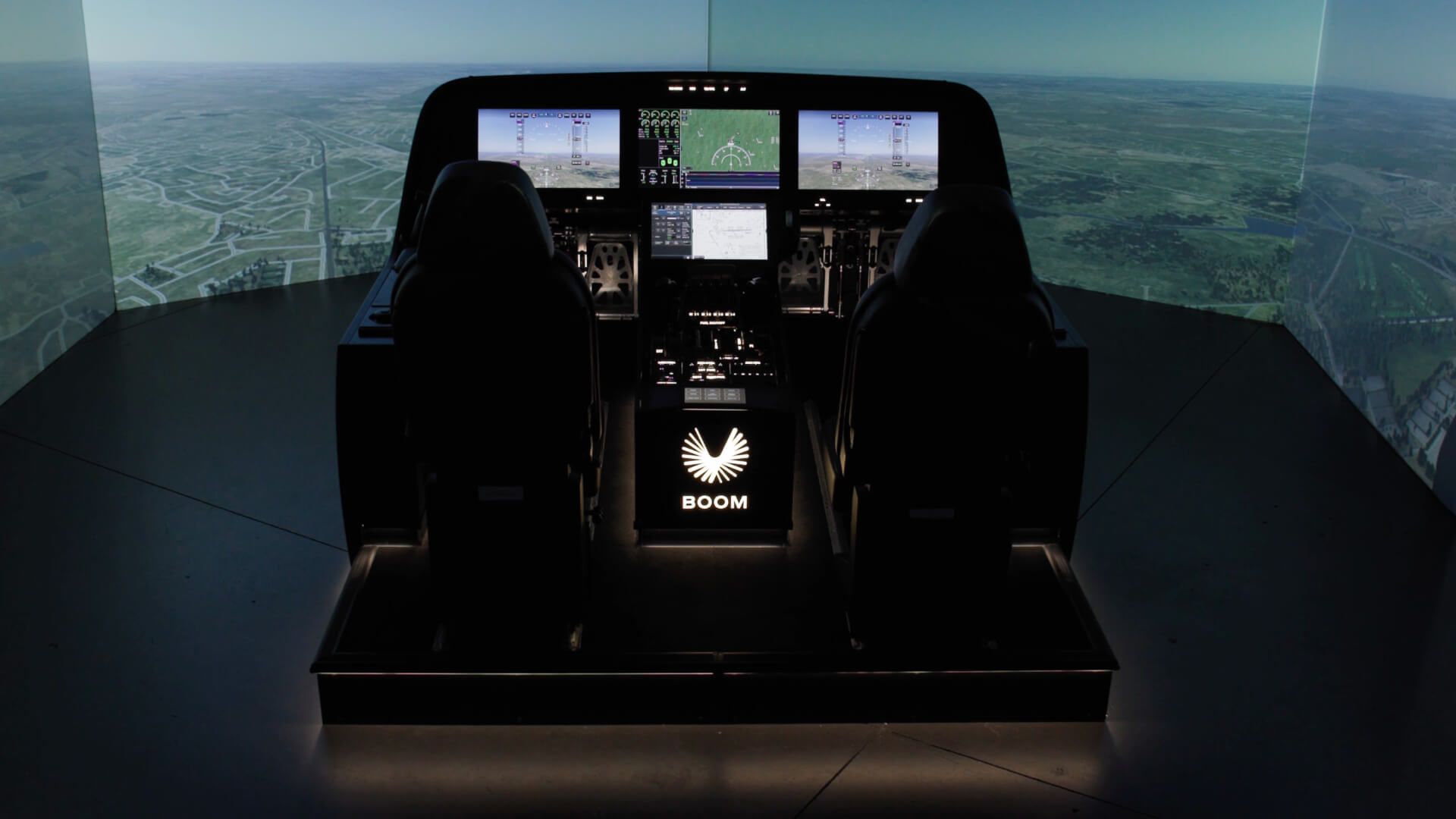
FARNBOROUGH, United Kingdom, July 23, 2024 – An innovation by Lockheed Martin (NYSE: LMT) will deliver unprecedented interoperability to F-35 Lightning II and F-16 fighters, ground-based artillery systems such as HIMARS, and the MLRS family of munitions. For NATO partners, the interoperability could extend to other 4th Generation jets as well as new mobile rocket launchers built in Europe.
The innovation: Lockheed Martin engineers are transforming the combat-proven Sniper® targeting pod — a staple on 4th Generation fighters worldwide — into an edge communications and computing node to enable combined joint all domain command and control.
While the F-35 comes equipped for interoperability, two technical enhancements in this new Sniper Networked Targeting Pod will keep 4th Generation fighters and other legacy platforms in sync. An advanced datalink compatible with the F-35 will allow seamless sharing of target and surveillance information between aircraft. A Mobile Ad-hoc Network (MANET) radio, meanwhile, will support a decentralized but highly secure mesh network of multiple air, ground and sea platforms ready to share and act on that information.
The rapid development of Sniper is a direct response to NATO defense forces that seek closer collaboration between new F-35s and existing fleets of 4th Generation fighters, which they expect to fly another 40 years. Customers also want continuous target-tracking data from aircraft sensors to improve ground-based precision fires’ capabilities and strike targets that relocate after being discovered.
"To deliver unprecedented interoperability, we’ve evolved Sniper to do what’s never been done before,” said Stacy Kubicek, Vice President, Sensors & Global Sustainment, Lockheed Martin. “The Sniper Networked Targeting Pod connects the battlespace, enabling seamless data sharing across platforms and systems—a capability in high demand by U.S. and allied forces and a powerful force multiplier for joint operations.”
Lockheed Martin’s investment in the Sniper Networked Targeting Pod is part of the company’s vision for 21st Century Security®, which aims to integrate networking capabilities and edge computing across customers’ aircraft, sensor systems and weapons.
The enhanced Sniper will enable missions in which F-35 multirole fighters and their advanced sensors serve as forward observers that identify and track targets while sharing precise coordinates with F-16s and ground-based Command and Control Systems that allow the employment of MLRS family of munitions from either HIMARS or M270.
“The F-35 is the aircraft of choice for allies across NATO. By 2035, there will be more than 600 F-35s in the European region,” said J.R. McDonald, vice president of F-35 Business Development. “The enhanced capabilities the Sniper targeting pod can bring will serve to further enhance the connectivity and interoperability the F-35 brings to current and future customers.”
Lockheed Martin has proven interoperability through a series of ongoing tests and demonstrations. Recent tests, using HIMARS and GMLRS, have shown Sniper’s ability to connect air and ground forces in new ways. The company plans to conduct more-complex flight testing and live missile shots in cooperation with the U.S. military.
Core to 21st Century Security, Lockheed Martin engineers have speeded the development and testing of Sniper by harnessing the latest digital technologies such as simulated missile shots directed by real-world inputs from the targeting system.
Lockheed Martin chose the Sniper pod to facilitate communication between 5th and 4th Generation jets for two reasons:
Upgrading a “plug-and-play” external pod with a datalink compatible with 5th Generation fighters provides more flexibility than modifying the aircraft.
The Sniper pod is widely integrated, easy to upgrade, and trusted by air forces around the world.
The electro-optical sensor system has been successfully integrated on the F-16, as well as most other types of military jets deployed in Europe. U.S. and allied air forces have put nearly 2,000 Sniper pods through more than 4 million operational hours worldwide including combat and nontraditional intelligence, surveillance and reconnaissance missions.
Now, besides linking F-35s, F-16s, rocket launchers, and command and control systems, the Sniper Networked Targeting Pod could enhance capabilities of other Lockheed Martin-built systems. Those include the United Kingdom’s SkyKeeper air-defense system and Lockheed Martin’s new low-observable hypersonic missile, Mako.
About Lockheed Martin
Lockheed Martin is a global defense technology company driving innovation and advancing scientific discovery. Our all-domain mission solutions and 21st Century Security vision accelerate the delivery of transformative technologies to ensure those we serve always stay ahead of ready. More information at Lockheedmartin.com.
FARNBOROUGH, United Kingdom, July 23, 2024 /PRNewswire/ -- Boeing [NYSE: BA] and Macquarie AirFinance announced today that the lessor has made its first direct order for Boeing airplanes. The purchase of 20 737-8s doubles Macquarie AirFinance's existing 737-8 order book, which it acquired from ALAFCO Aviation Lease and Finance Co. in 2023.
By expanding its 737 MAX portfolio, Macquarie AirFinance will scale-up its fleet of fuel-efficient, new generation airplanes to meet the growing demand of its airline customers.
"The continued expansion and renewal of our fleet underscores our confidence in the strong future growth prospects of global commercial air transport. This order increases our existing OEM order book to 86 firm aircraft and will enable our airline partners to access the most modern, fuel-efficient aircraft," said Eamonn Bane, CEO of Macquarie AirFinance.
Known for its versatility, the 737-8 can carry up to 210 passengers based on configuration with a range of up to 3,500 nautical miles (6,480 km). The 737 MAX family is well-suited to support airline fleet modernization plans by reducing fuel use and carbon emissions by 20% compared to the airplanes they replace.
"As single-aisle fleet renewals gain momentum, Macquarie AirFinance's choice of the 737-8 will allow its customers to phase out older airplanes and operate the industry's most fuel-efficient jets," said Stephanie Pope, president and CEO of Boeing Commercial Airplanes. "Lessors such as Macquarie AirFinance are key partners to Boeing and our airline customers, supporting airplane deliveries and offering financial solutions to carriers that want to renew or grow their fleets with the 737 MAX."
Boeing's 2024 Market Outlook indicates that nearly half of airplane deliveries through 2043 will replace older jets, improving fuel efficiency and sustainability.
Macquarie AirFinance is a leading provider of aircraft leasing and financing solutions with a portfolio of 236 aircraft leased to 85 airlines across 49 countries and a firm orderbook of 86 new technology Boeing and Airbus aircraft. With offices in Dublin, London, San Francisco and Singapore, Macquarie AirFinance is owned by Macquarie Asset Management, PGGM Infrastructure Fund and Australian Retirement Trust.
As a leading global aerospace company, Boeing develops, manufactures and services commercial airplanes, defense products and space systems for customers in more than 150 countries. As a top U.S. exporter, the company leverages the talents of a global supplier base to advance economic opportunity, sustainability and community impact. Boeing's diverse team is committed to innovating for the future and living the company's core values of safety, quality and integrity. Learn more at www.boeing.com.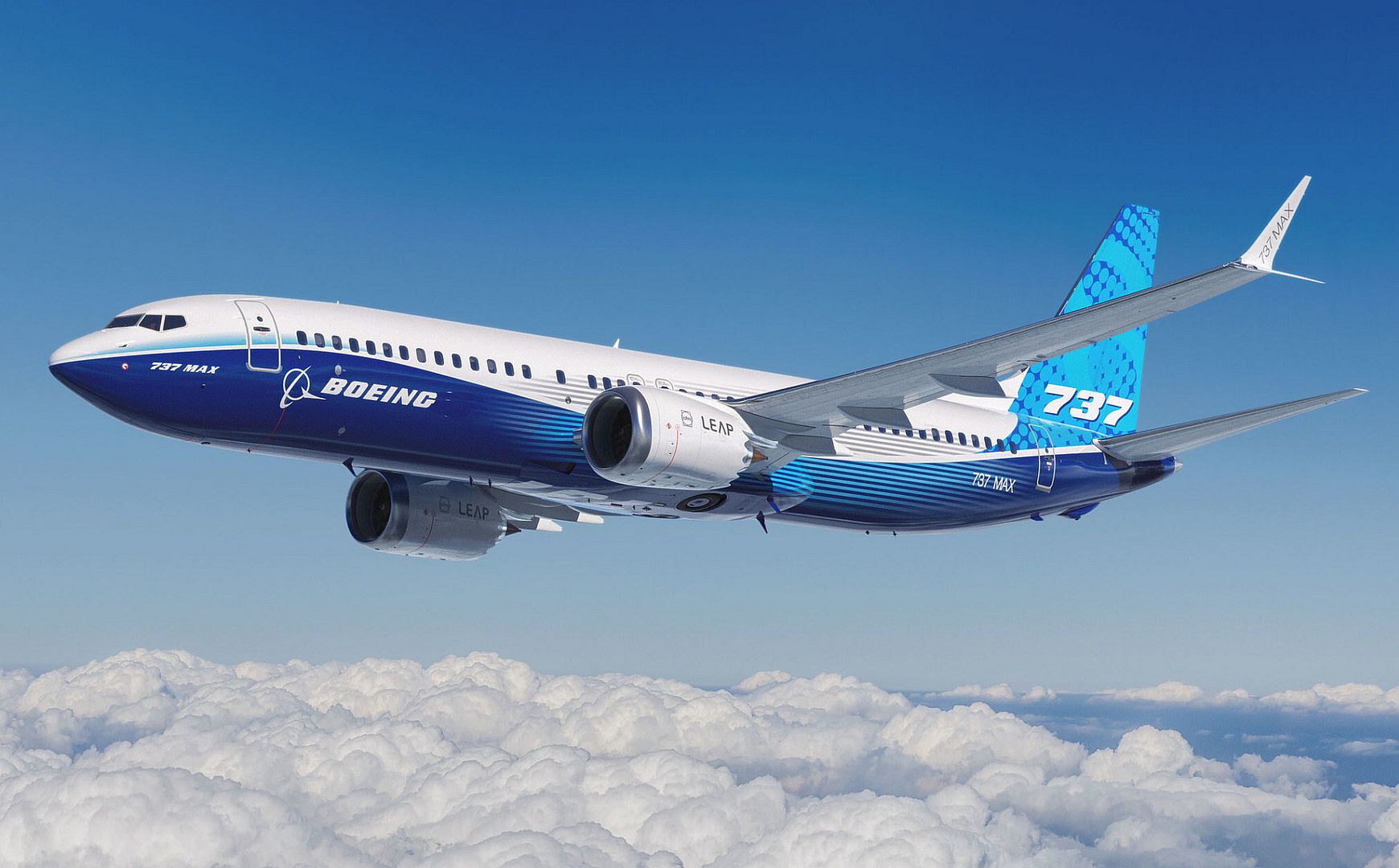
FARNBOROUGH, United Kingdom, July 23, 2024 /PRNewswire/ -- Boeing [NYSE: BA] and Qatar Airways announced today the Middle Eastern airline's order for 20 more 777-9 airplanes, which will be the world's largest and most fuel-efficient twin-engine jet. The order, which expands the carrier's 777X order book to nearly 100 airplanes, was finalized this year and listed as unidentified on Boeing's Orders & Deliveries website.
The award-winning airline helped launch the 777X program and now has on order 60 777-9 passenger airplanes. Qatar Airways is also the inaugural launch customer for the 777-8 Freighter and has 34 of the next generation cargo jet on order.
"Qatar Airways is proud to announce an expansion to the existing Boeing 777X aircraft order with an additional 20, totalling 94 Boeing 777X aircraft," said Qatar Airways Group Chief Executive Officer, Engr. Badr Mohammed Al-Meer. "We, as the World's Best Airline, are an industry leader and operate one of the youngest fleets, offering unparalleled innovation and quality. Keeping an eye on the future, we continue to ensure that all Qatar Airways passengers are only met with the best products and services available in the industry."
Based on the popular Boeing 777 family and with advanced technologies from the 787 Dreamliner, the 777X program is designed to set new standards of efficiency, environmental performance and passenger experience. The 777-9 is the largest in the family and will help operators open new growth opportunities with capacity for 426 passengers in a typical two-class configuration and a range of 7,295 nautical miles (13,510 km).
Earlier this month, Boeing began certification flight testing for the 777-9, which will offer a new level of passenger comfort with a spacious cabin, better humidity, a quiet environment and increased natural light.
"Qatar Airways is a leader in our industry, and we are honored the airline added 20 more 777-9 jets to its large Boeing order book," said Stephanie Pope, president and CEO of Boeing Commercial Airplanes. "We appreciate their confidence that Boeing's market-leading widebody family will provide outstanding fuel efficiency and a superior passenger experience for its global operations."
In addition to the 777X family, Qatar Airways has 12 787 Dreamliner and 25 737 MAX aircraft on order.
Boeing's 2024 Commercial Market Outlook forecasts that twin-aisle jets such as its 777X and 787 Dreamliner will make up 44% of the region's fleet across Middle Eastern operators over the next 20 years.
About Qatar Airways
A multiple award-winning airline, Qatar Airways won the 'World's Best Airline' for the unprecedented eighth time at the 2024 World Airline Awards, managed by the international air transport rating organisation, Skytrax. Qatar Airways has been the World's Best Airline in 2011, 2012, 2015, 2017, 2019, 2021, 2022, and 2024. The airline continues to be synonymous with excellence, also taking home, 'World's Best Business Class', 'World's Best Business Class Airline Lounge', and 'Best Airline in the Middle East'. As leaders in industry innovation and digital adoption, Qatar Airways was also recently voted the 'World's Best Airline Website' by World Travel Tech Awards.
Qatar Airways was the first Airline in the Middle East to be certified to the highest level of IATA's Environmental Assessment (IEnvA) programme, based on recognised environmental management system principles (such as ISO 14001). As an inaugural signatory to the Buckingham Palace Declaration in March 2016, Qatar Airways became the first airline globally to be certified to the industry standard for the prevention of illegal wildlife trafficking in aviation.
Qatar Airways currently flies to over 170 destinations worldwide, connecting through its Doha hub, Hamad International Airport, the 'World's Best Airport', as voted by Skytrax in 2021, 2022, and 2024. In 2024, Hamad International Airport also received the 'Best Airport in the Middle East' accolade for 10 consecutive years, as well as 'World's Best Airport Shopping' for the second year in a row.
About Boeing
As a leading global aerospace company, Boeing develops, manufactures and services commercial airplanes, defense products and space systems for customers in more than 150 countries. As a top U.S. exporter, the company leverages the talents of a global supplier base to advance economic opportunity, sustainability and community impact. Boeing's diverse team is committed to innovating for the future, leading with sustainability, and cultivating a culture based on the company's core values of safety, quality and integrity. Join our team and find your purpose at boeing.com/careers.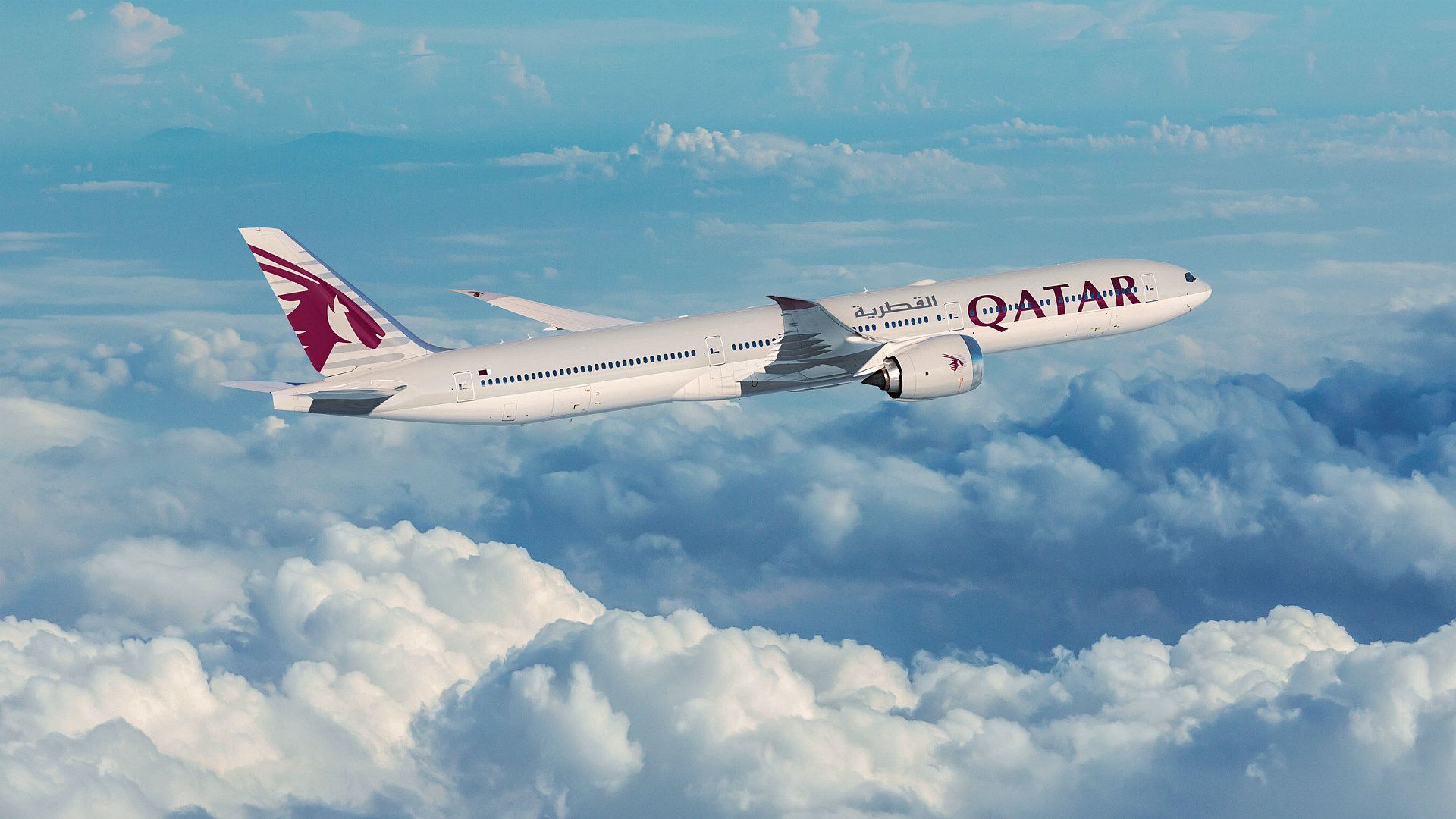
Farnborough, United Kingdom, 23 July 2024 – Japan Airlines (JAL) has signed a firm order with Airbus for 20 A350-900 widebody aircraft and 11 single-aisle A321neo, finalising a commitment announced earlier this year.
The order was announced at the Farnborough Air Show 2024 during a signing ceremony with Yukio Nakagawa, Executive Officer and Senior Vice President Procurement of Japan Airlines, and Christian Scherer, Chief Executive Officer of Airbus Commercial Aircraft business.
The new A350-900s will join the carrier’s A350 fleet serving international routes, while the A321neo will operate on domestic services within Japan. To date, JAL has ordered a total of 52 A350s, with 18 in service. The A321neo contract represents JAL’s first order for the Airbus single-aisle product line.
Executive Officer and Senior Vice President Procurement of Japan Airlines Yukio Nakagawa said, “We are delighted to have signed the firm order for the introduction of additional A350s and new A321s. We will accelerate the introduction of the state-of-the-art and fuel-efficient aircraft to provide our passengers with excellent service and to reduce CO₂ emissions. We believe that this additional introduction of Airbus aircraft will further deepen our partnership.”
Chief Executive Officer of the Commercial Aircraft business, Airbus, Christian Scherer said, “We thank Japan Airlines for placing its confidence once again in the A350. In addition, we celebrate a new milestone in our partnership with the airline following its order for the A321neo. We are committed to providing our full support to Japan Airlines as its growing fleet is deployed on more routes across its network, both domestically and internationally.”
The A350 is the world’s most modern and efficient widebody aircraft and the long-range leader in the 300-410 seater category. The A350’s all-new design includes state-of-the-art technologies and aerodynamics delivering unmatched standards of efficiency and comfort. By the end of June 2024, the A350 Family had won more than 1,300 firm orders from 60 customers worldwide, making it one of the most successful widebody aircraft ever.
The A321neo is the largest member of Airbus’ best-selling A320neo Family, offering unparalleled range and performance. By incorporating new generation engines and Sharklets, the A321neo brings a 50% noise reduction and more than 20% fuel savings and CO₂ reduction compared to previous generation single-aisle aircraft, while maximising passenger comfort in the widest single-aisle cabin in the sky. To da3te more than 6,400 A321neos have been ordered by more than 90 customers across the globe.
As with all Airbus aircraft, the A350 aircraft is already able to operate with up to 50% Sustainable Aviation Fuel (SAF). Airbus is targeting to have its aircraft up to 100% SAF capable by 2030.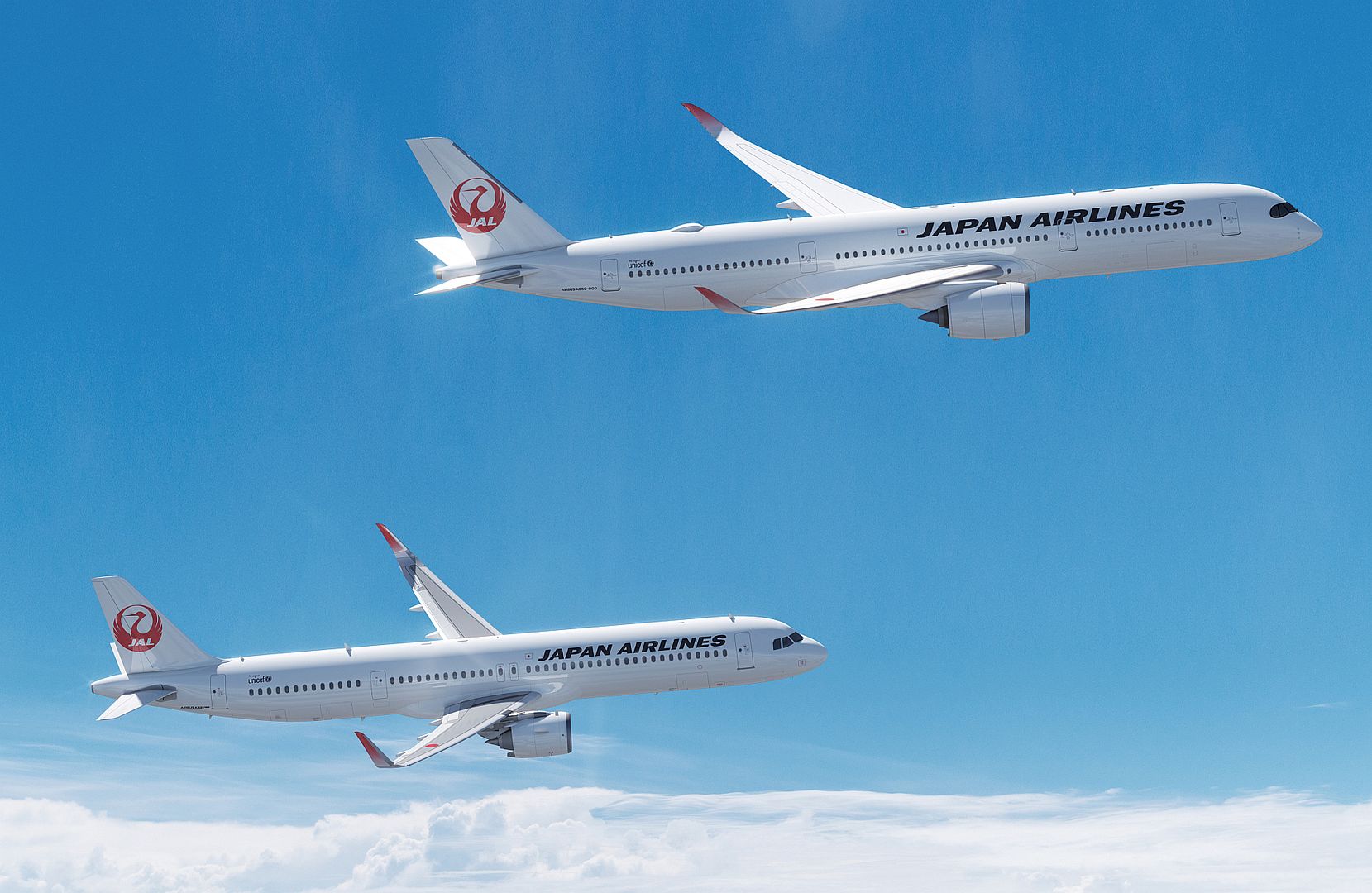
Farnborough, United Kingdom, 23 July 2024 – Virgin Atlantic has placed a firm order for seven A330neo aircraft as part of its wider fleet transformation. The agreement takes Virgin Atlantic’s commitment for the A330neo to 19 aircraft in total, providing improved economics.
The order was announced during the Farnborough Airshow onboard Virgin Atlantic’s A330neo, named ‘Ruby Rebel’, and registered as GB-VSRB after founder Sir Richard Branson, to celebrate the airline's 40th anniversary.
Shai Weiss, CEO, Virgin Atlantic said, “Today, we complete our multi-billion-dollar fleet transformation, with the purchase of seven additional A330-900s, which we know our customers and our people love to fly. Flying the youngest fleet is the most readily available and significant lever towards decarbonising long-haul aviation and we are proud to already operate one of the youngest and most fuel and carbon efficient fleets across the Atlantic.”
“Our special partnership with Airbus began with the arrival of ‘Lady in Red’ in 1993, with our most recent arrival, ‘Ruby Rebel’, arriving to mark our 40th birthday this year. Virgin Atlantic has flown more than 60 Airbus tails in the last three decades. While not first to the party, they’ve been our main dance partner, making our customers smile ever since.”
Airbus Chief Executive Officer, Commercial Aircraft, Christian Scherer said, “We are grateful for Virgin Atlantic’s decision to expand its A330neo fleet as part of its strategy to have the youngest fleet across the Atlantic. The A330neo not only delivers unbeatable operational seat mile cost and an exceptional passenger experience, it also greatly enhances Virgin Atlantic’s fleet efficiency and contributes to their sustainability journey. We look forward to continuing this smooth and successful collaboration for many years to come."
The A330neo features the award-winning Airspace cabin, which offers passengers a unique passenger experience, high level of comfort, ambience, and design. This includes more individual space, enlarged overhead bins, a new lighting system and access to the latest in-flight entertainment and connectivity systems.
Powered by the latest generation Rolls-Royce Trent 7000 engines, the A330-900 is capable of flying 7,200 nm / 13,300 km non-stop. At the end of June 2024, the A330 Family had accumulated 1,798 firm orders from more than 130 customers worldwide, including 319 A330neo from 30 customers.
As with all Airbus aircraft, the A330 family is already able to operate with up to 50% Sustainable Aviation Fuel (SAF). The manufacturer is targeting to have its aircraft up to 100% SAF capable by 2030.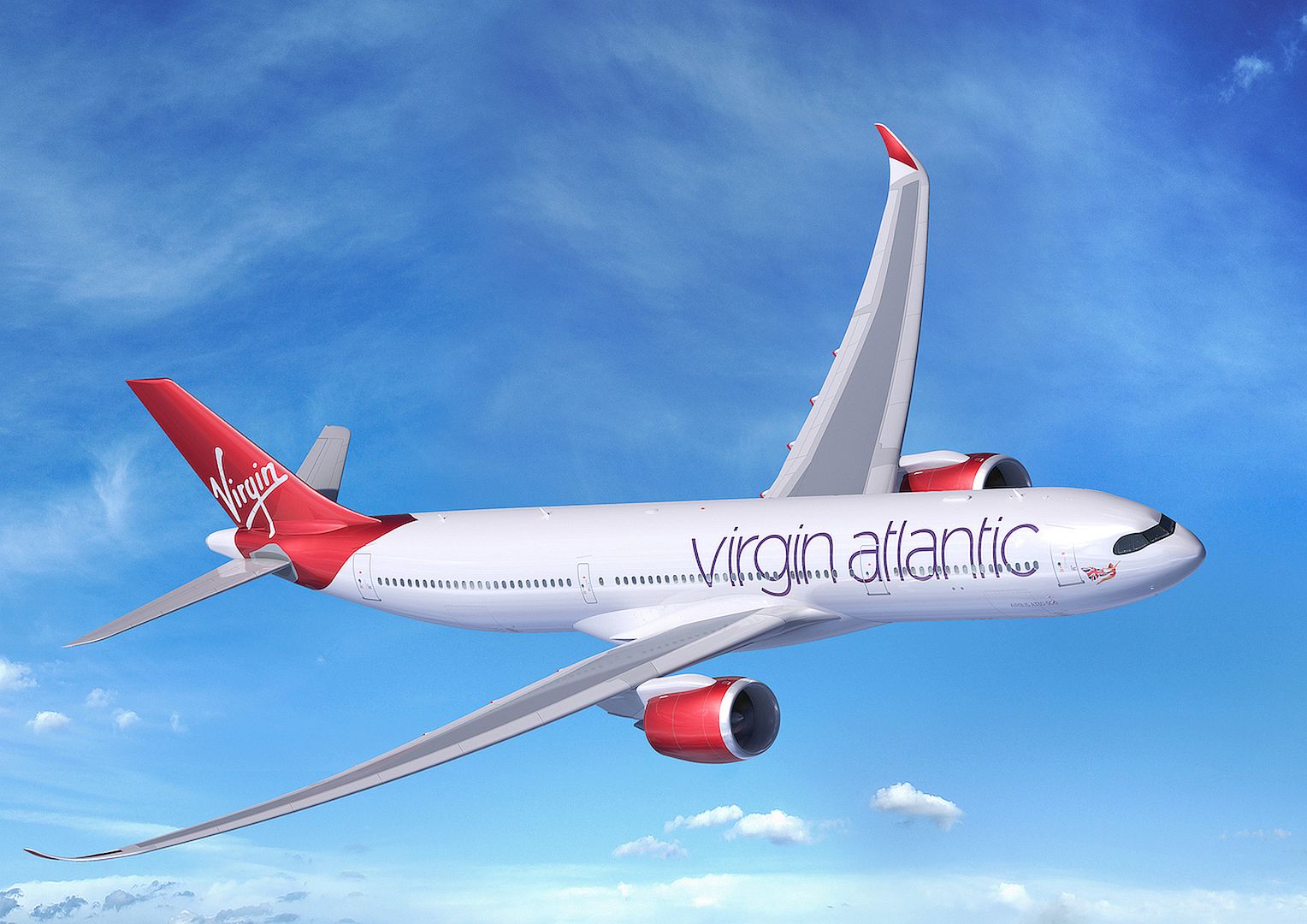
Farnborough Airshow, July 23, 2024 – Embraer announced today during the Farnborough International Airshow, the most important aerospace industry event of the year, the sale of six A-29 Super Tucano aircraft to the Paraguayan Air Force (FAP).
As a multi-mission aircraft, the A-29 provides the Air Forces with versatility for armed reconnaissance, close air support, light attack, and advanced training missions on a single platform, which exponentially increases the institutions' availability and operational flexibility. The operation, with deliveries scheduled from 2025, includes mission equipment and an integrated logistics services agreement.
“We are honored by the Paraguayan Air Force (FAP) decision and very pleased to be able to announce more A-29 Super Tucano sales, which is a leading aircraft in the international market in its segment. We are confident that the A-29 meets the current and future needs of the FAP”, says Fabio Caparica, Commercial Vice President for Latin America at Embraer Defense & Security.
“Defense is a pure public good because it provides society with a service that contributes solely and exclusively to the stability of the nation as an essential element for an integrated development of a country. This has a positive impact not only on issues related to national sovereignty but also on all areas of development. The Paraguayan Air Force (FAP) has the constitutional mission of safeguarding territorial integrity and, within its scope, exercising effective sovereignty over airspace, facing new threats, such as combating drug trafficking and transnational organized crime”, said Air General Júlio Rubén Fullaondo Céspedes, Commander of the Paraguayan Air Force. “To face emerging threats, we are in the process of modernizing our aerial and detection capabilities, and we intend to be up to the technological standards that allow us to correctly apply the measures established in the Law on Surveillance and Protection of Paraguayan Airspace in a to effectively contribute to the preservation of regional and international peace and security”.
The A-29 Super Tucano is the global leader in its category, boasting over 260 orders, surpassing 550,000 flight hours, with 60,000 of those in combat. The number of air forces operating the A-29 Super Tucano steadily expands due to its unmatched combination of features, making it the most cost-effective, accessible, and versatile choice.
For Air Forces seeking a proven, comprehensive, efficient, reliable, and cost-effective solution on a single platform, coupled with great operational flexibility, the A-29 Super Tucano offers a wide range of missions such as close air support, air patrol, special operations, air interdiction, JTAC, forward air controller (FAC), air and tactical coordinator (TAC), Armed ISR, border surveillance, reconnaissance, air escort, basic, operational and advanced training, transition to air superiority fighters, JTAC/LIFT and FAC training.
The A-29 Super Tucano is the most effective multi-mission aircraft in its category, equipped with state-of-the-art technology for precise target identification, weapons systems, and a comprehensive communications suite. Its capability is further enhanced by advanced HMI avionics systems integrated into a robust airframe capable of operating from unpaved runways, in austere environments and without infrastructure. Furthermore, the aircraft has a simple maintenance concept, which offers high levels of reliability, availability, and structural integrity with low life cycle costs.
Farnborough Airshow, UK, 23 July 2024 – Embraer’s latest aircraft, the 190F E-Freighter, passenger to full cargo conversion, has been certified by the National Civil Aviation Agency of Brazil (ANAC). The aircraft, which is making its public debut this week at the Farnborough Air Show, was developed to fill a gap in the air cargo market and to replace older less efficient models.
The E-Freighter is due to receive EASA and FAA certification later this year and for the Cargo Loading System shortly after.
The E190F, which performed its maiden flight earlier this year, is a passenger jet converted to cargo operations, and will be known as the E-Freighter. The E190F was launched in 2022 to meet the changing demands of e-commerce and modern trade, which require fast deliveries and decentralized operations driving the demand for faster delivery of shipments to secondary and tertiary markets.
Arjan Meijer, President and CEO, Embraer Commercial Aviation, said, “The E-Freighter marks Embraer´s first step into the cargo market. After celebrating the first flight in April, it’s a further boost to receive type certification for our newest program now. The aircraft has been very well received this week by potential customers seeing our E-Freighter for the first time in Farnborough. This is a segment that has tremendous potential, and gives a new life to the earliest E-Jets that are just now moving into the typical replacement phase.”
"We are very pleased with the ANAC certification for the E-Freighter. This important step shows that Embraer has the Engineering and MRO skills necessary to present an outstanding product and services for our customers. We are ready to support the operators interested in expanding their activities in the cargo market with the best-in-class service", says Carlos Naufel, CEO and President, Embraer Services & Support
E-Jets converted to freighters will have over 40% more volume capacity, three times the range of large cargo turboprops, and up to 30% lower operating costs than larger narrowbodies. If combining capacity under the floor and main deck, the maximum structural payload is 13,500 kg for the E190F.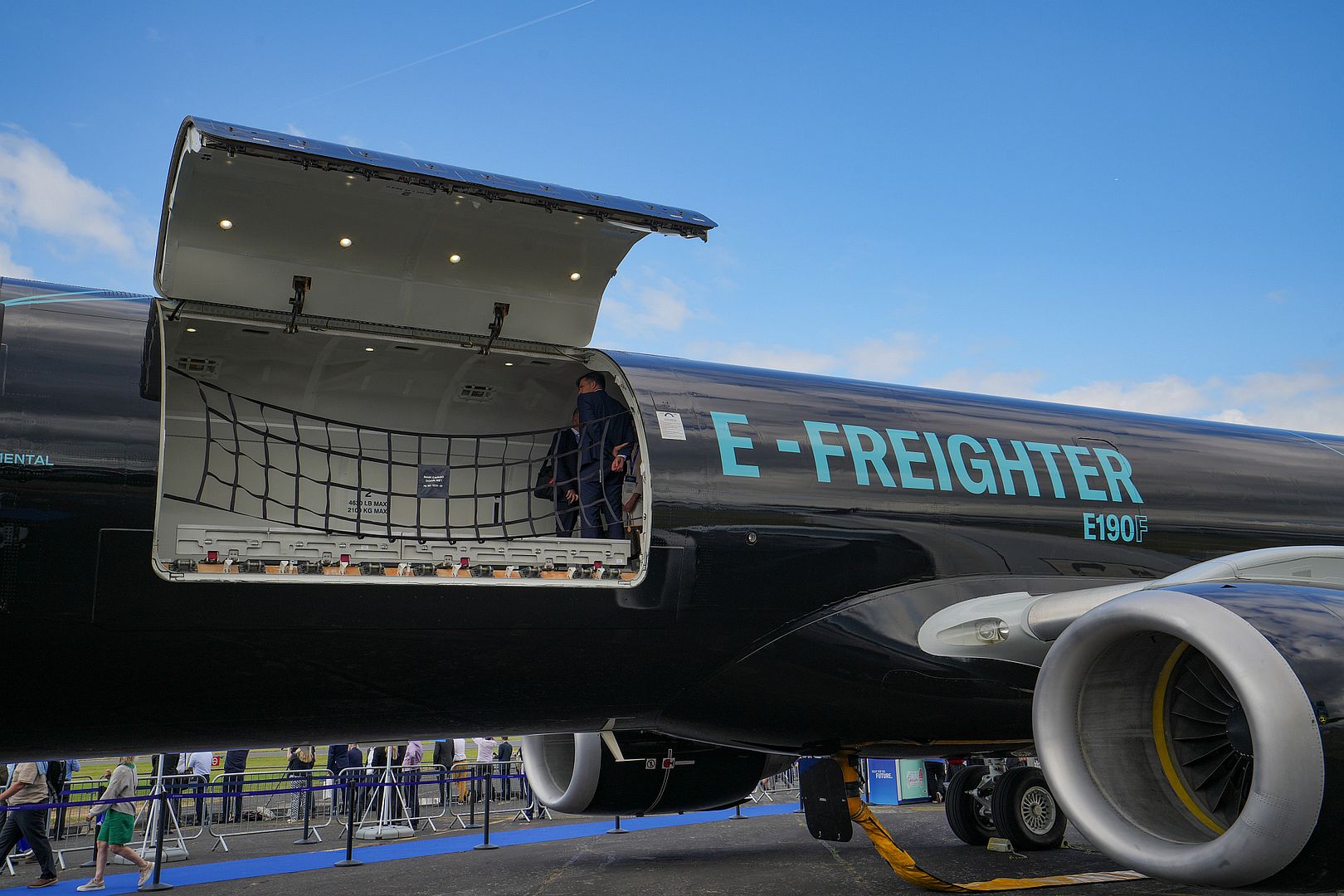
About Embraer
Embraer is a global aerospace company headquartered in Brazil. It manufactures aircraft for Commercial and Executive aviation, Defense & Security, and Agricultural customers. The company also provides after-sales services & support through a worldwide network of wholly owned entities and authorized agents.
Since it was founded in 1969, Embraer has delivered more than 8,000 aircraft. On average, about every 10 seconds, an aircraft manufactured by Embraer takes off somewhere worldwide, transporting over 145 million passengers a year.
Embraer is the leading manufacturer of commercial jets with up to 150 seats and is the leading exporter of high-value-added goods in Brazil. The company maintains industrial units, offices, service and parts distribution centers across the Americas, Africa, Asia, and Europe. Embraer’s APAC headquarters is in Singapore, and its China headquarters is in Beijing..jpg?width=1920&height=1080&fit=bounds)
At Farnborough International Air Show, Leonardo has announced the launch of a comprehensive capability enhancement package for the M-346 integrated training system including the aircraft’s core avionics, navigation/identification, mission equipment and ground training capabilities. The move reflects the training needs to align pilot’s skills to the evolution dictated by modern multi-domain battlefields, combat air technology, and information management.
This latest development leverages the inherent growth capability embedded into the M-346 design as well as ten years of proven in-service experience with leading air forces across geographies and is an integral part of the broader organisational digitization roadmap initiative, fully consistent with Leonardo’s longer-term strategy. As such, both training and fighter variants will benefit from these enhancements to deliver even greater capabilities to the market for a wide spectrum of applications, while implying significant margin for further developments in the future. The ‘M-346 T Block 20’ and ‘M-346 F Block 20’ are the designations for the new standard.
The new Block 20 standard will not be limited to the platform itself, but rather to the entire system including the ground based training system and shall be enabled by the widespread implementation of digitalization powered by AI.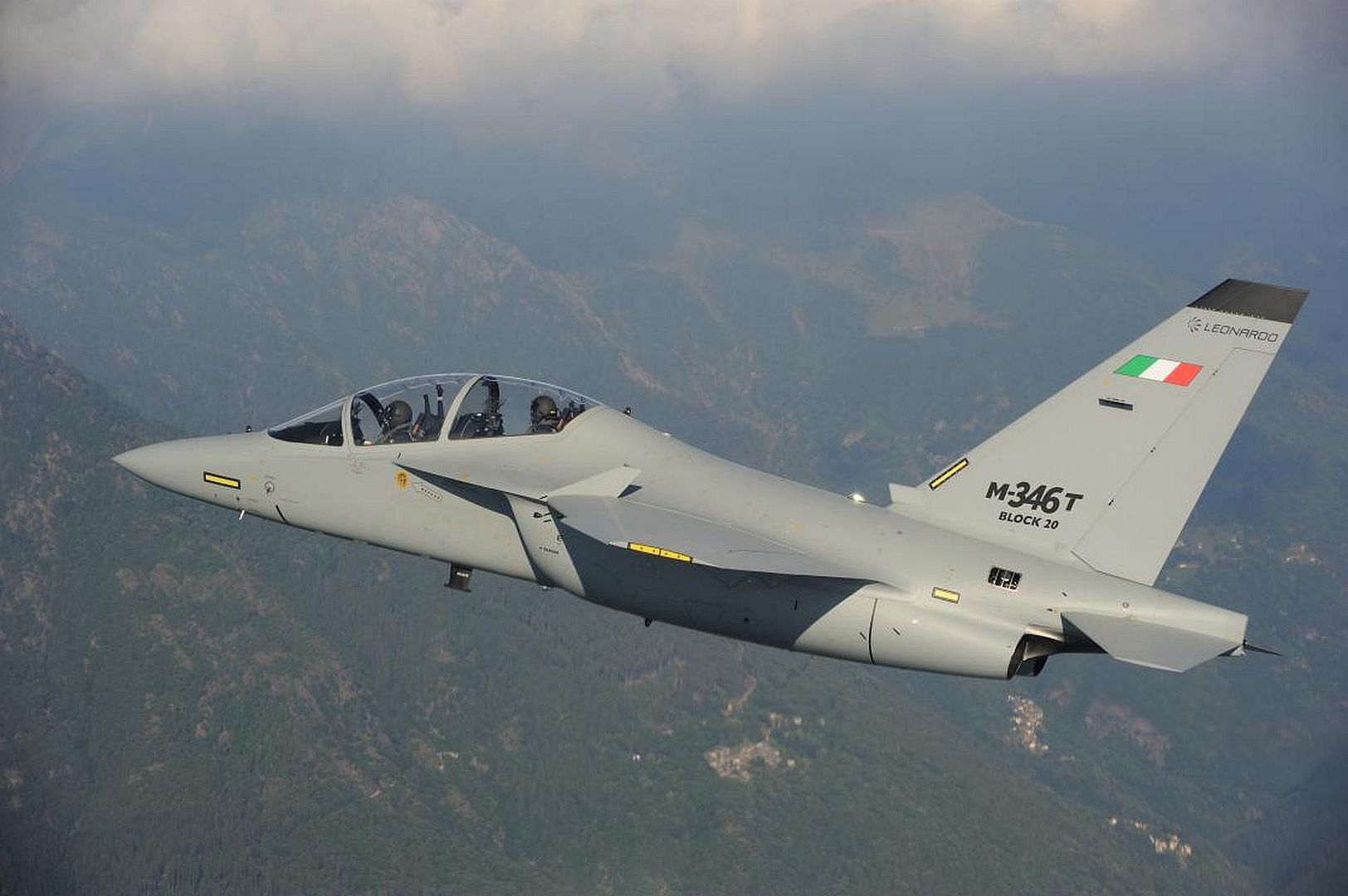
The Block 20 standard cockpit will feature two large area displays, one per each seat, replacing the existing six multi-functional displays, plus a low profile head-up display. These will be combined with a new digital video and data recorder and a new augmented reality helmet mounted display. The new cockpit will align the human-machine interface to those of the most sophisticated and future frontline combat air systems, with advantages in terms of quality training (i.e. look & feel plus a high fidelity immersive environment) and situational awareness in operational missions. The ‘M-346 Block 20’ will also benefit from new navigation, weapon management, flight management system, IFF - Identification of Friend or Foe - transponder.
Specifically for the M-346 F variant, further critical capability enhancements include an AESA (Active Electronically Scanned Array) radar featuring fire control radar capability, integration of new weapons for both air-to-air and air-to-ground roles in addition to a built-in missile datalink.
The whole Ground Based Training System (GBTS) holistic approach to training (multi-media and classroom course, flight/mission simulation, virtual and live/constructive training) will step up to the new standard via virtual reality support and AI applications.
Moreover, stronger digitization will also result into a key enabler for more efficient technical support thanks to the implementation of the virtual maintenance and the “connected fleet”, an extremely high performing infrastructure, which uses Advanced Data Analytics and High Performance Computing to enhance the Integrated Logistic Support services.
Lorenzo Mariani, Co-General Manager of Leonardo, said: “Training represents a core area of expertise at Leonardo and the M-346 integrated training system is the backbone of our value proposition to ensure fighter pilots are well prepared to face modern and complex air challenges, today and in the future. As we are fully involved into next generation combat air developments, this latest progress of the M-346 testifies that we’re making sure the most appropriate training solutions are thoroughly embedded in this commitment. We strongly believe the type’s constantly evolving features will continue to deliver second-to-none benefits for users in its market segment, both for training and operational / light fighter roles, making it an ideal candidate for the future of fighter training in Europe and in other geographies.”
Marco Zoff, Leonardo Aircraft MD, commented: “Delivering unending enhancements for the M-346 has been part and parcel of our DNA over years, and we’re excited with today’s announcement showing how the M-346 is and will stay at the forefront of technology. We’ve made significant investments into a 360° digital transformation to deliver state of the art products and services. These are also materialising into these greater capabilities the M-346 will bring. We look forward to demonstrating the advanced features and possibilities of the Block 20 standard for both training and combat missions, as we work to integrate the new solutions into this true training and operational ecosystem.”
With more than 100 aircraft delivered to major operators worldwide and over 120,000 flight hours logged in operational service with customers and through the unique training capabilities delivered by the International Flight Training School – IFTS in collaboration with the Italian Air Force, the M-346 has established itself as the most complete training system for fighter pilots and is meeting emerging needs for cost/effective combat operations. The latest advancements allow for its superior advantages and characteristics to evolve further to the benefit of existing and future operators.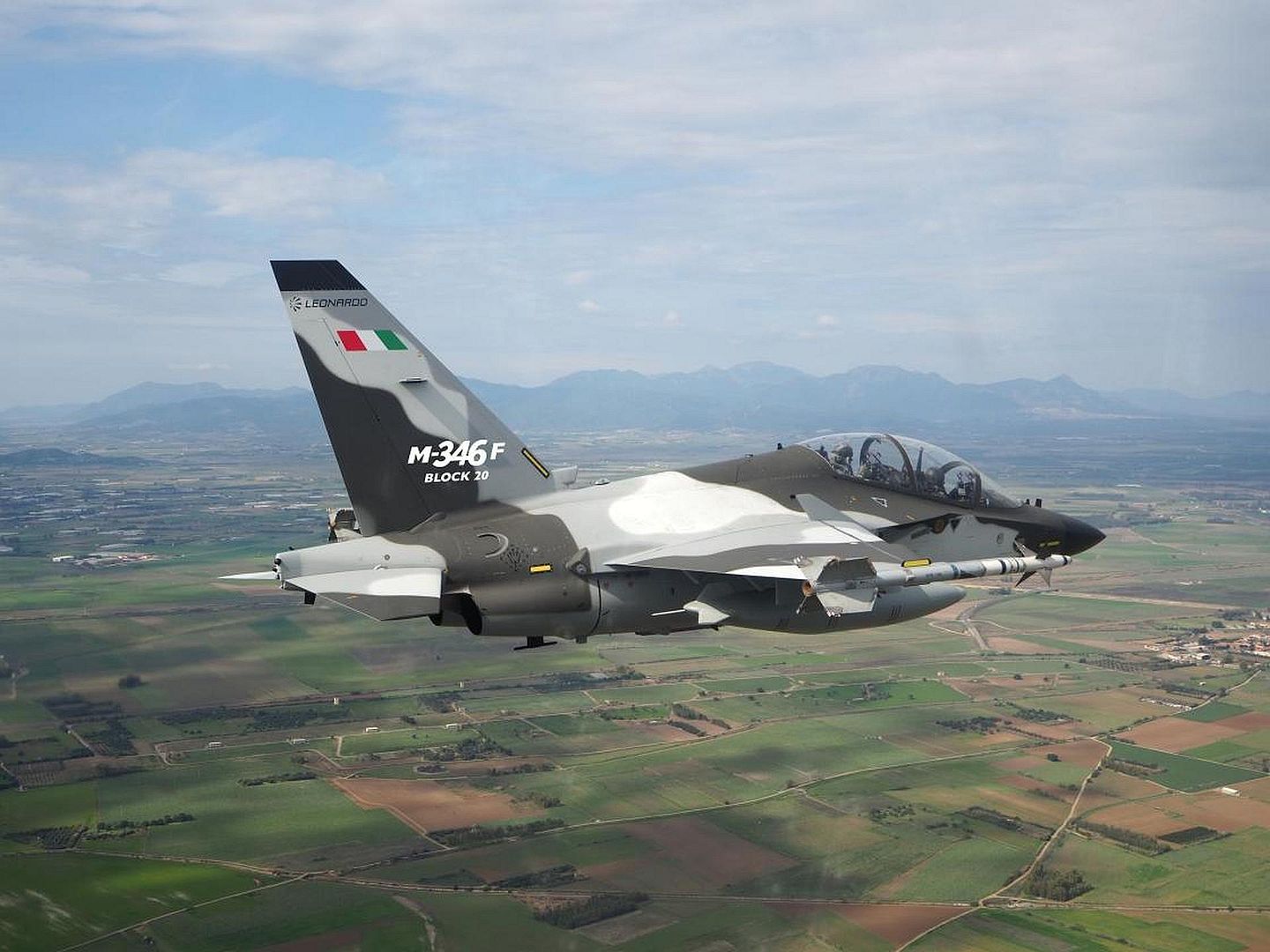
WICHITA, Kan. (July 23, 2024) – Textron Aviation Inc., a Textron Inc. (NYSE:TXT) company, today announced a special edition 60th anniversary option for the iconic Beechcraft King Air 260 and 360 turboprops to celebrate the aircraft’s proud history of being the best-selling business turboprop family in the world. The new “Crimson Edition” King Air features a striking new interior and a vibrant red and silver exterior paint scheme, inspired by six decades of legendary Beechcraft customers and operators. The order book is open for the special edition aircraft, with deliveries beginning in 2025.
“The Crimson Edition of the King Air provides customers with an immersive experience that pays tribute to the turboprop’s renowned legacy, while also featuring modern luxuries and upgrades that showcase the aircraft's ongoing evolution,” said Christi Tannahill, senior vice president, Customer Experience. “We’re honored to celebrate a prestigious aircraft that is beloved by so many customers around the world.”
The King Air series aircraft has long been a customer favorite since its introduction in 1964. The legendary turboprop is synonymous with unwavering reliability, exceptional performance and unparalleled versatility, earning the trust and preference of operators worldwide.
New Crimson exterior scheme
One of the first noticeable attributes of the new “Crimson Edition” King Air is the iconic Beechcraft “B” on the aircraft’s tail. The exterior paint scheme showcases a metallic-like crimson, silver and black paint scheme. The aircraft’s new boarding step has hidden fasteners that create a sleeker appearance for entry, and its graphite silver finish perfectly matches the new exterior and interior.
Stunning custom interior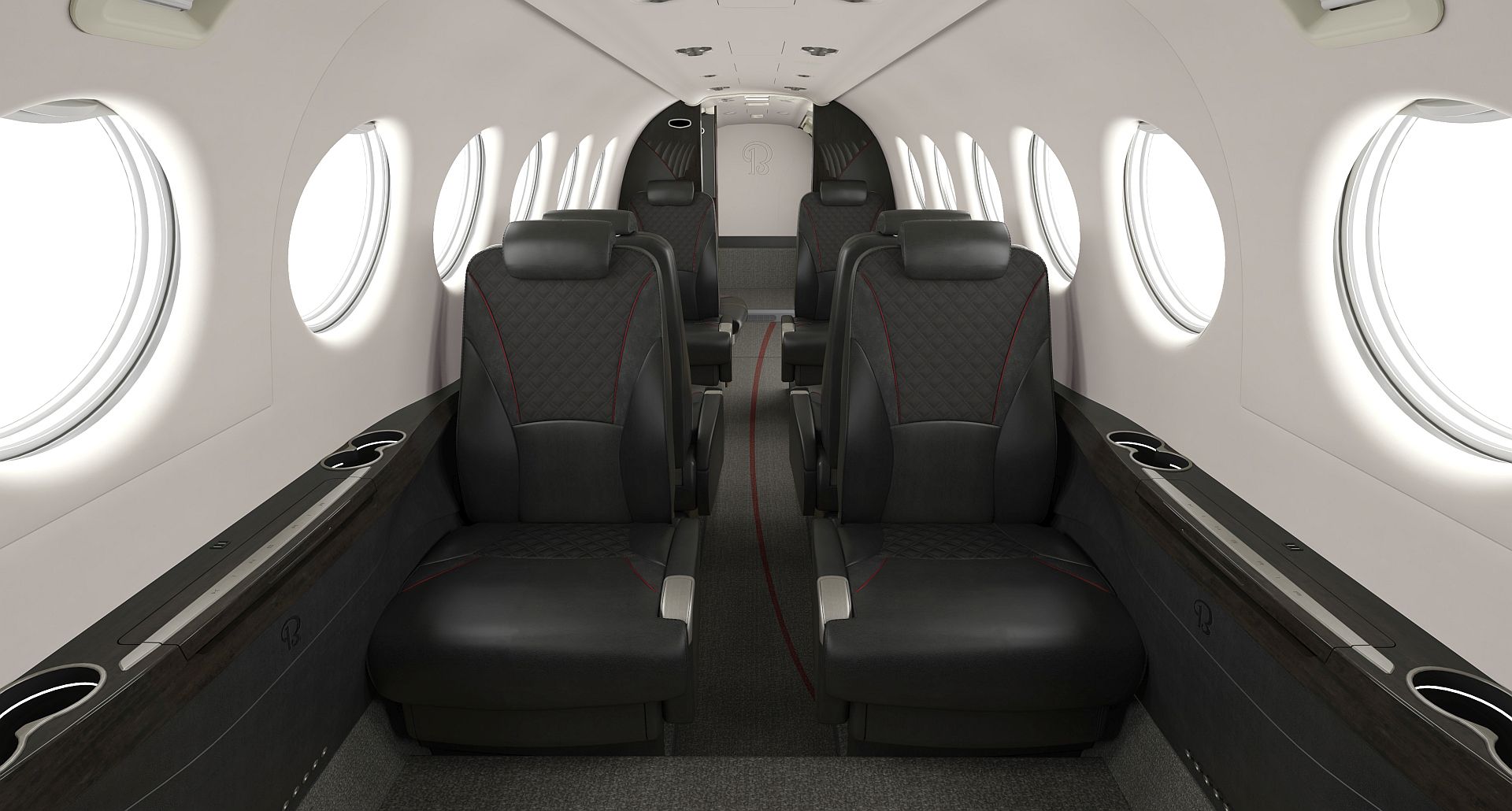
The special-edition interior is inspired by the King Air’s proud history, seamlessly integrating a number of Beechcraft elements like the familiar “B” logo on lower sidewalls and the aft cabin bulkhead panel. The dark leather seats feature Alcantara accent panels and crimson accent piping, while also bringing together subtle design elements to signal the aircraft’s diamond anniversary. Charcoal carpeting is highlighted by crimson arcs that complement the aircraft’s exterior striping, elevating its luxurious ambience.
“It’s a visually stunning design and one we believe will surpass customer expectations,” Tannahill said. “This edition offers customers the best flying experience they expect while paying homage to the King Air’s proud, successful history.”
-
11 months ago
 Main AdminA UH-60 Blackhawk Crew from 1st Battalion, 168th General Support Aviation, Washington Army National Guard prepare their helicopter for deployment to Eastern Washington in support of the wild land firefighting efforts at Joint Base Lewis-McChord, Wash., July 24, 2024. Aviation crews will provide support to the Washington State Department of National Resources crews that are fighting numerous fires in the state. (U.S. National Guard photo by Joseph Siemandel)
Main AdminA UH-60 Blackhawk Crew from 1st Battalion, 168th General Support Aviation, Washington Army National Guard prepare their helicopter for deployment to Eastern Washington in support of the wild land firefighting efforts at Joint Base Lewis-McChord, Wash., July 24, 2024. Aviation crews will provide support to the Washington State Department of National Resources crews that are fighting numerous fires in the state. (U.S. National Guard photo by Joseph Siemandel)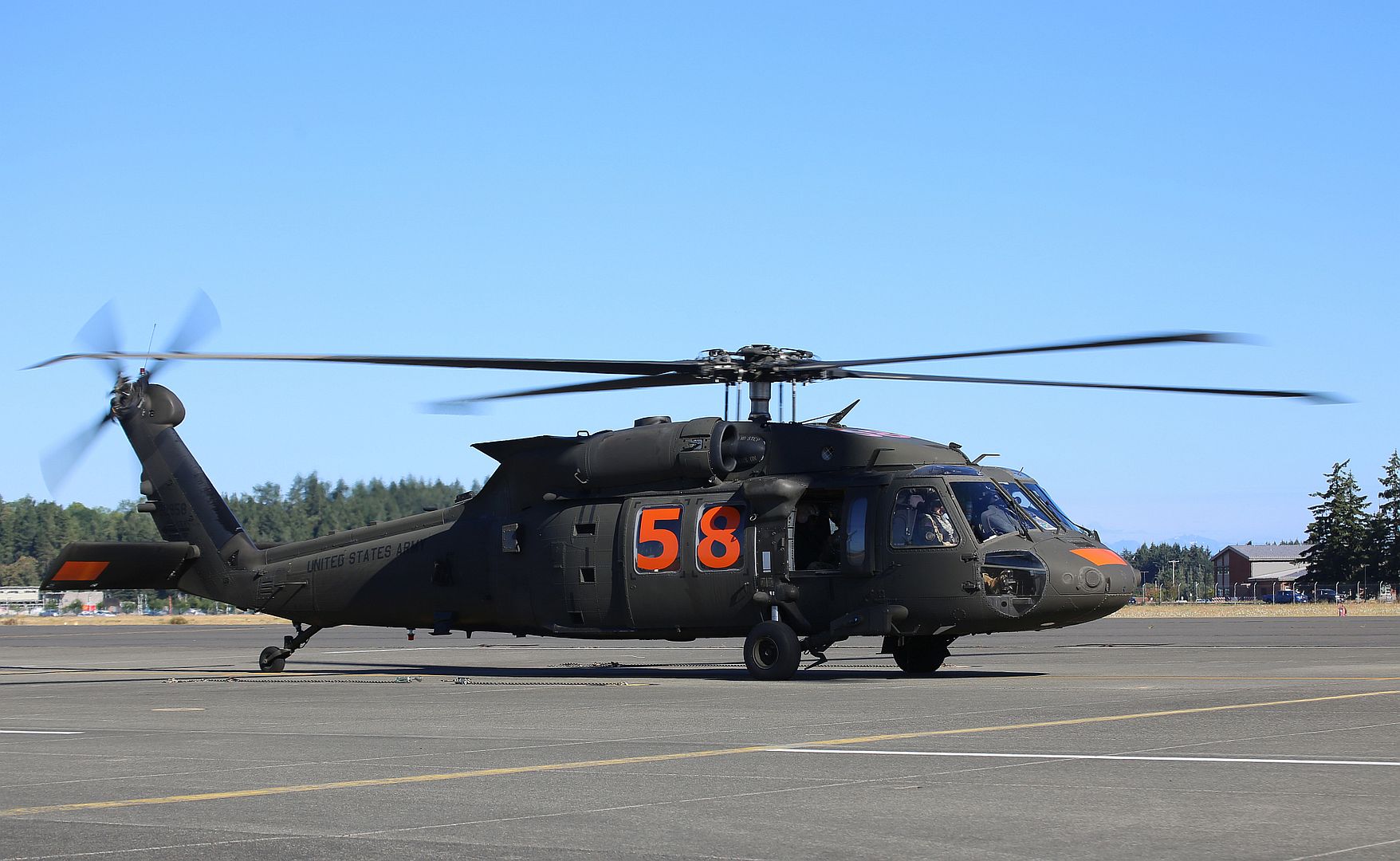
An RC-135 Rivet Joint assigned to Offutt Air Force Base, Nebraska, taxis prior to take off for a night mission during Red Flag-Nellis 24-3 at Nellis AFB, Nevada, July 23, 2024. Red Flag provides participants the opportunity to plan and employ together in the air, domain (supported by space, and cyber) in a contested, degraded and operationally limited environment. (U.S. Air Force photo by William R. Lewis)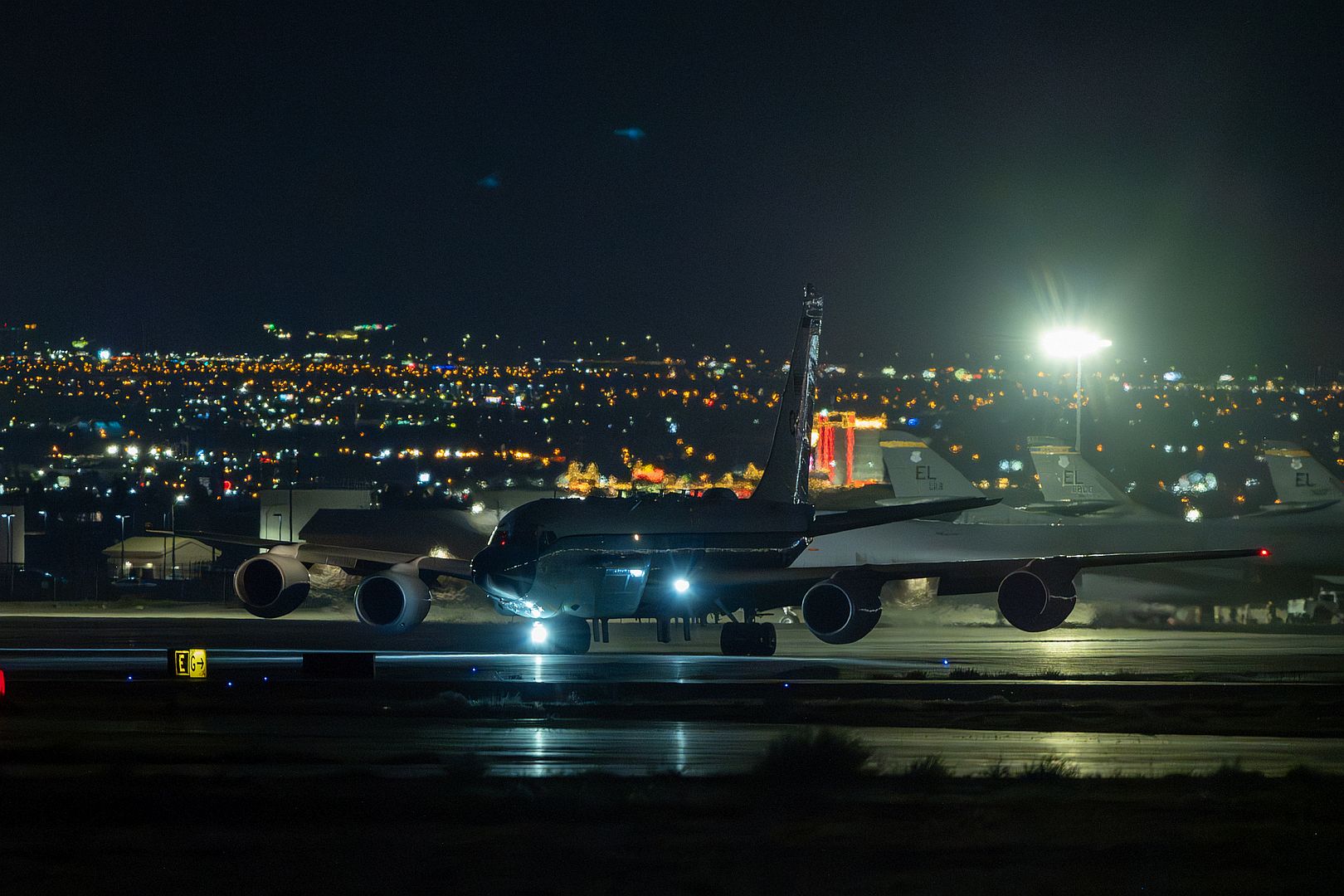
PHILIPPINE SEA (July 23, 2024) An MV-22B Osprey tiltrotor aircraft from Marine Medium Tiltrotor Squadron (VMM) 262 prepares to land on the flight deck of the forward-deployed amphibious assault ship USS America (LHA 6), while conducting routine operations in Philippine Sea, July 23. America, lead ship of the America Amphibious Ready Group, is operating in the U.S. 7th Fleet area of operations. U.S. 7th Fleet is the U.S. Navy’s largest forward-deployed numbered fleet, and routinely interacts and operates with allies and partners in preserving a free and open Indo-Pacific region. (U.S. Navy photo by Mass Communication Specialist 2nd Class Cole Pursley)._262_prepares_to_land_on_the_flight_deck_of_the_forward-deployed_amphibious_assault_ship_USS_America.jpg?width=1920&height=1080&fit=bounds)
NAVAL AIR STATION NORTH ISLAND, Calif. (July 23, 2024) Nimitz-class aircraft carrier USS Ronald Reagan (CVN 76) transits the San Diego Bay, as seen from Cabrillo National Monument, San Diego, Calif., July 23, 2024. Ronald Reagan and crew are in the process of completing a homeport change, with USS George Washington (CVN 73) replacing the carrier as the forward-deployed U.S. Naval Forces Japan aircraft carrier at Fleet Activities Yokosuka, Japan. (U.S. Navy photo by Mass Communication Specialist 1st Class Keenan Daniels)_transits_the_San_Diego_Bay_as_seen_from_Cabrillo_National_Monument_San_Diego_Calif._July_23_2024..jpg?width=1920&height=1080&fit=bounds)
An F/A-18 Hornet fighter jet from Finland's Air Force serves as a static display during a media event about Bomber Task Force deployment 24-4 at Mihail Kogalniceanu Air Base, Romania, July 23, 2024. Interoperability between the U.S. and our allies helps strengthen European security, and its purpose is to demonstrate the combat-ready capabilities of allied nations in Europe. (U.S. Army photo by Sgt. 1st Class Flor Gonzalez)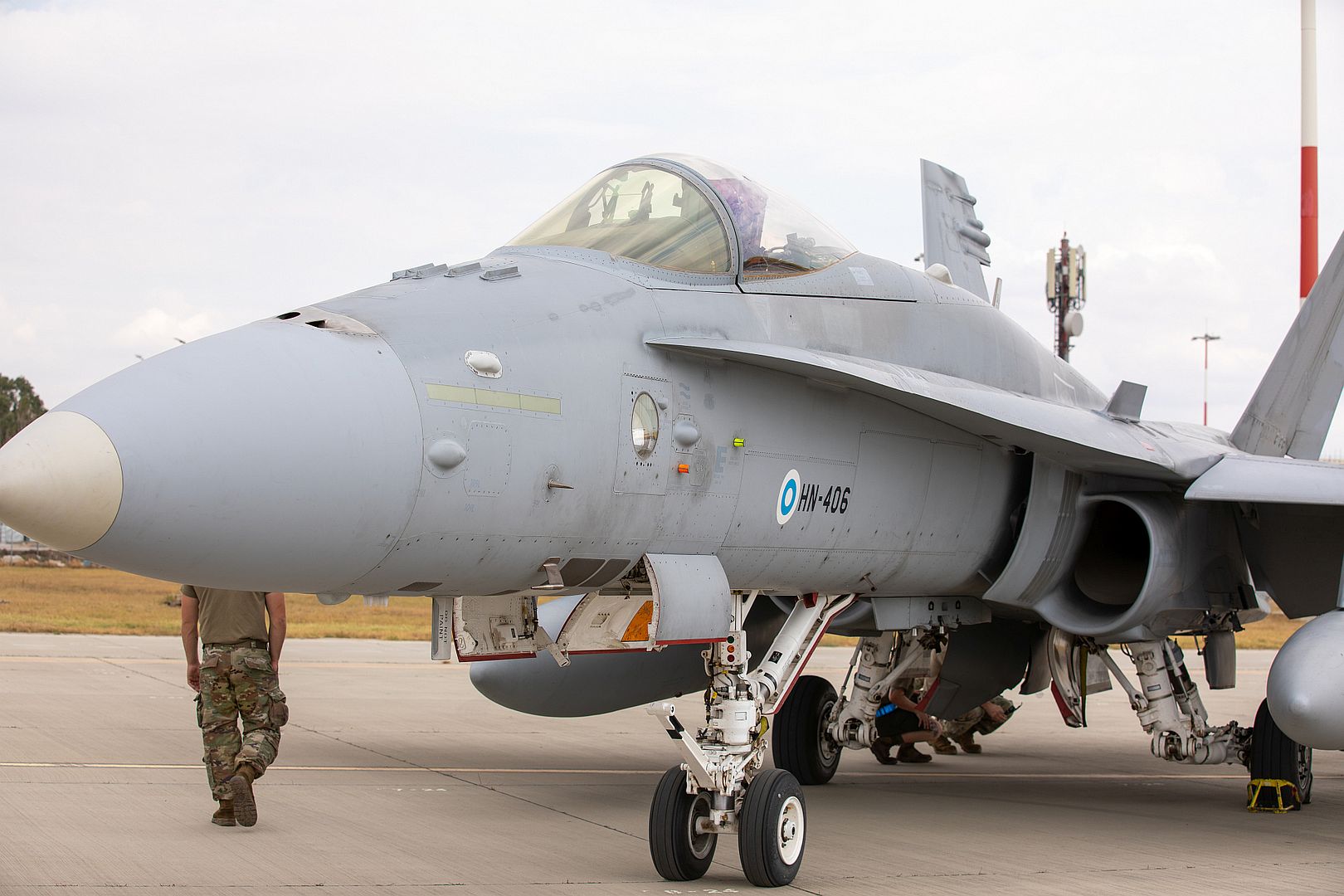
A U.S. Air Force KC-135 Stratotanker with the 927th Air Refueling Wing, Florida, lands for a hot-pit refuel at Joint Base Pearl Harbor-Hickam, Hawaii, July 18, 2024. The 735th Air Mobility Squadron, in conjunction with the 15th Wing and JBPHH support agencies supported hot-pit refueling for a single KC-135 Stratotanker in support of refueling operations for the Rim of the Pacific (RIMPAC) exercise. The hot-pit operations allowed a KC-135 to land, refuel, crew swap, and depart without shutting down engines; returning the tanker to the skies, supplying fuel to assets critical to mission objectives. (U.S. Air Force photo by Senior Airman Victoria Hommel)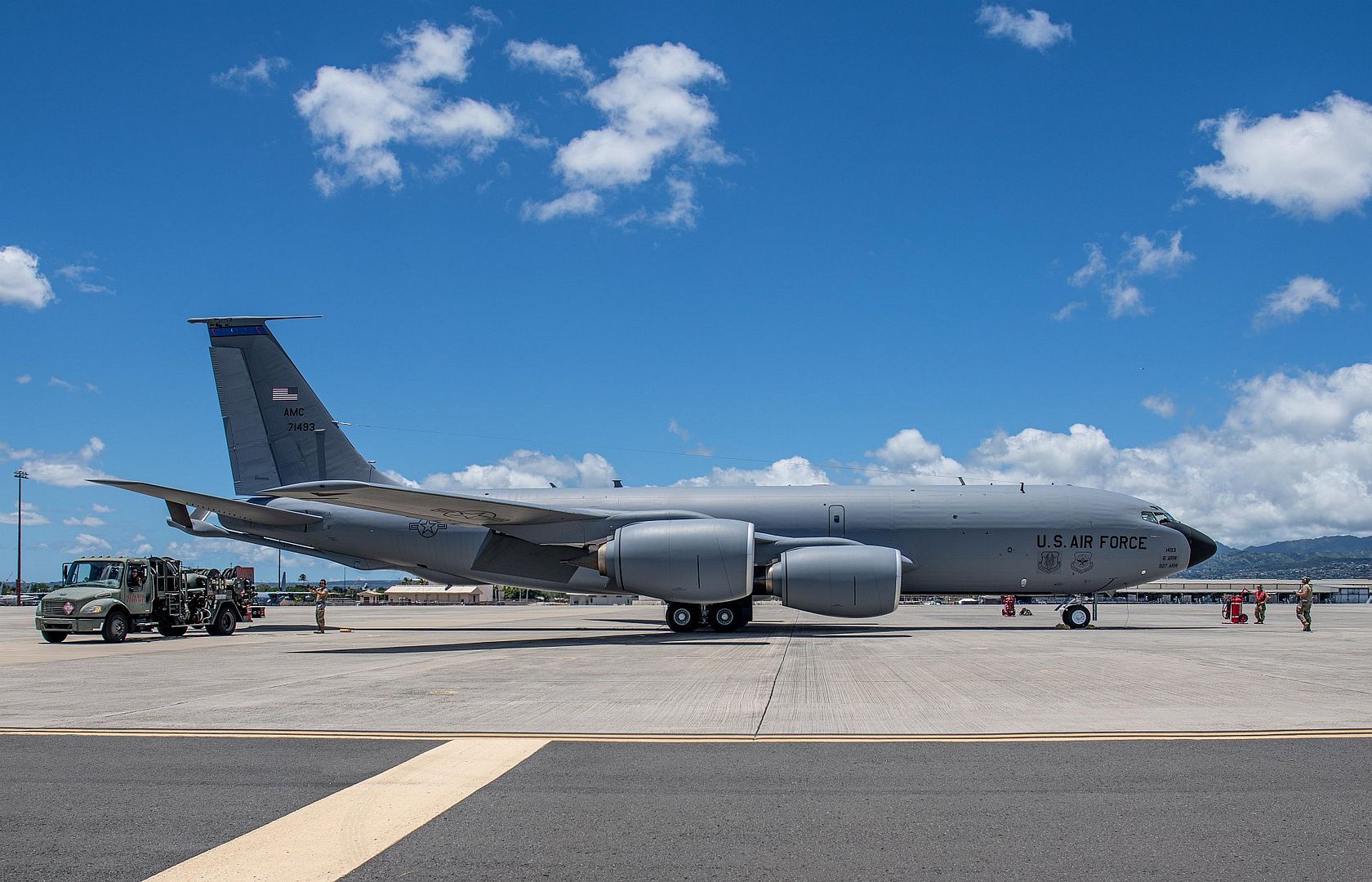
FARNBOROUGH, United Kingdom, July 24, 2024 /PRNewswire/ -- Boeing [NYSE: BA] and Ryanair, Europe's largest airline group, are elevating efficiency across Ryanair's fleet of primarily 737s with the addition of Boeing's Jeppesen FliteDeck Pro 5.0 electronic flight bag (EFB) solution.
This strategic multi-year agreement, providing support for the carrier's Next-Generation 737 and 737 MAX fleet, underscores Ryanair's dedication to continuous improvement and innovation in airline operations.
"We are excited to integrate Boeing's newest electronic flight bag into our operations. This advanced tool will optimize our flight operations, minimize disruptions, and enhance efficiency across our expanding fleet," said Neal McMahon, chief operations officer of Ryanair.
FliteDeck Pro will provide Ryanair with tailored route information and the latest technology, including Smart Airport Maps to optimize taxi routes, reduce fuel consumption and improve ground safety.
As a platform-agnostic EFB solution, FliteDeck Pro provides airport moving maps, customer-inserted content and tailored maps.
"Our latest version of FliteDeck Pro includes enhanced pilot briefings, route planning and traffic features. This technology enables Ryanair with real-time data and insights, enhancing decision making and flight operations," said Brad Surak, vice president of Boeing Digital Aviation Solutions.
As a leading global aerospace company, Boeing develops, manufactures, and services commercial airplanes, defense products and space systems for customers in more than 150 countries. As a top U.S. exporter, the company leverages the talents of a global supplier base to advance economic opportunity, sustainability and community impact. Boeing's diverse team is committed to innovating for the future, leading with sustainability, and cultivating a culture based on the company's core values of safety, quality and integrity. Join our team and find your purpose at boeing.com/careers.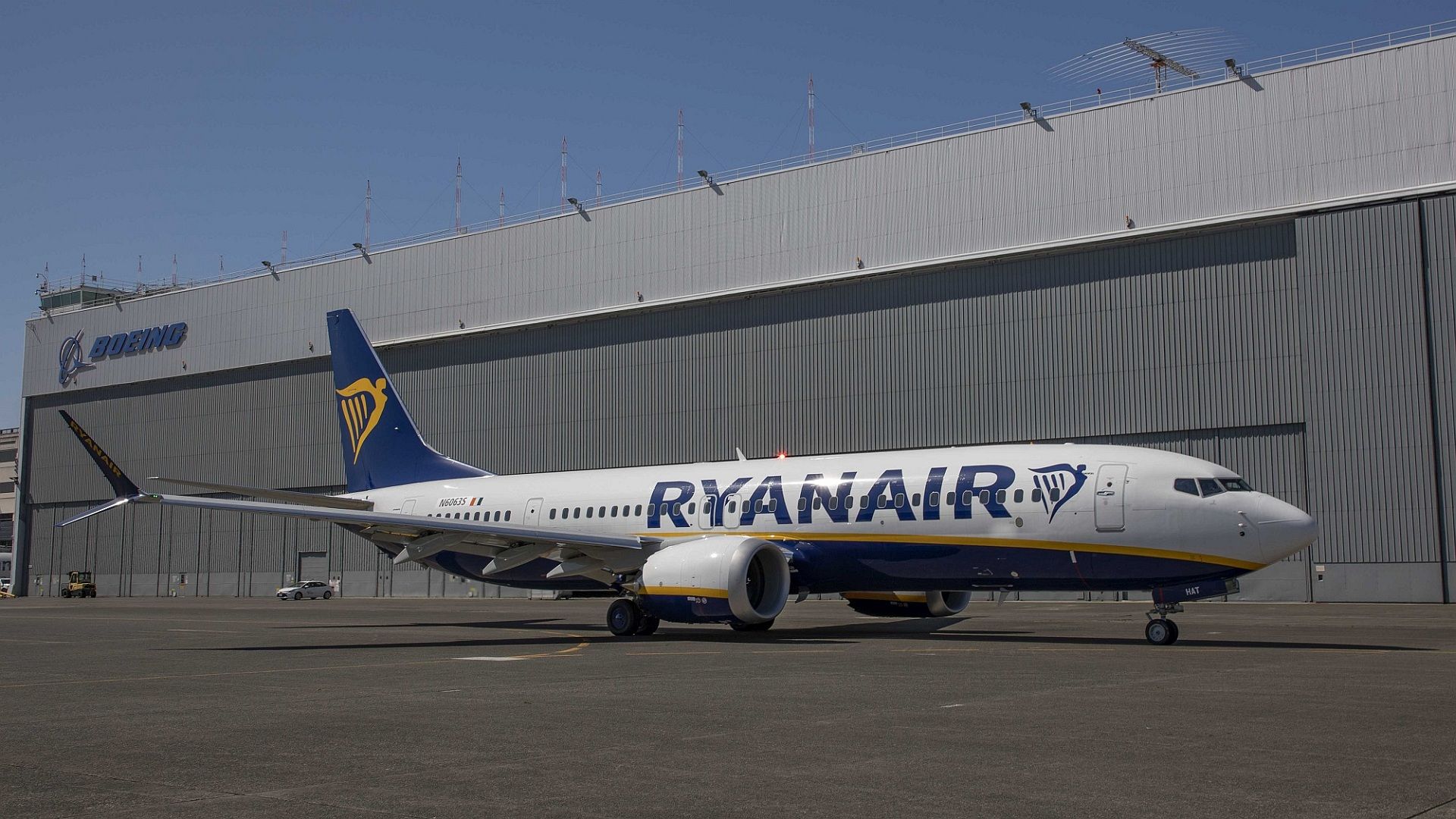
Farnborough International Airshow, UK, 23 July 2024 – Embraer has revealed wide ranging upgrades and performance improvements across its commercial jet product line up. The upgrades on the E195-E2, E190-E2, and E175, including fuel burn and range improvements, avionics and cabin upgrades, were announced at the Farnborough Air Show today. As well as improving operational effectiveness these measures also deliver a net present value of US$6million per aircraft over 15 years in cost reduction and additional revenue.
Arjan Meijer, President and CEO, Embraer Commercial Aviation, said, “We aim to continually improve our aircraft and these upgrades announced today – reducing fuel burn and emissions; increasing range; improving the passenger and cabin experience; and adding new technology and connectivity – is great news both for our customers and their guests. Embraer is committed to providing the safest, most efficient, most comfortable, and most commercially savvy jets to our customers.”
E175 improvements – adding E2 features
Larger overhead bins and mood lighting
Multi-band satellite connectivity
Recaro Seats
Next generation weather and data avionics
The E175 is also receiving a set of upgrades following its last update in 2016 which improved fuel burn by 6.4%. The improvements, available to customers upon request, focus on the cabin and passenger experience, as well as updating some avionics to be more in line with the E2’s.
The E175’s overhead luggage bin capacity will double in size to be similar to those on the E2, now fitting one bag ‘wheels first’ per customer as in the E2. Mood cabin lighting as seen on the E2 will also become available, as will new Recaro seats.
Satellite connectivity will soon be available for the first time on the E175, a major boost for business travelers and those that want to stay connected in the sky. Both Ku and Ka band satellite connectivity will be available for retrofit by 2026.
Finally, data transfer solutions and the weather radar will be upgraded to match the capabilities of the E2. This will enable digital transformation and wireless retrieval of flight data and will be available by Q4/2024The next generation weather radar provides turbulence detection and alert, predictive windsheer detection, and 3-D volumetric scanning and will be available by Q2/2026.
E2 Improvements
Fuel burn
Improved range
GTF time on wing improved
Enhanced take off system
Cabin optimisation
Fuel Burn – Reduced by 2.5%
E195-E2 12.5% more fuel efficient than competitor aircraft (was 10%)
Fuel burn on the both E2s is improved by 2.5%, making the E195-E2 12.5% more fuel efficient than the closest competitor aircraft. On entry into service the E2 was notably more fuel efficient than advertised. The better burn rates airlines experienced in real world operations have now been ratified. This is also helped by an improvement to the bleed management system which extracts less bleed, demanding less from the engine and therefore saving fuel. The improvement worth US$1 million per aircraft and reinforces a E2´s potion as the most sustainable aircraft in single aisle market.
Improved range – from 2600NM to 3000NM
Range on the E195-E2 has been boosted to 3000NM. The new Max Take Off Weight of 62,500kg was recently certified, which combined with the lower fuel burn provides this range improvement.
GTF time on wing – up 10%
Engine improvements on the E2s GTF engines will increase time on wing by 10%. This is achieved by optimizing climb thrust which demands less of the engine, therefore reducing engine degradation and increasing time on wing. It is expected this will save operators US$0.5million over 15 years.
Range/Payload improvements from challenging airports
Embraer also unveiled its E2 Enhanced Take Off System for the first time. This automatic take off system produces a more precise and efficient rotation moment and flight trajectory, reducing the required field length and pilot workload; meaning more payload and more range from challenging airports. This gives the E2 best in class performance from airports like London City, Florence, and Santos Dumont. Adding 350NM in range from LCY for example.
Cabin optimization– reducing gaps, adding one row, Recaro seats
Cabin optimization on the E195-E2 has allowed Embraer to fit in an extra row of four seats to most configurations. For example, an aircraft configured for 136 seats, would now be able to seat 140 passengers. Max seating remains 146. Recaro seats will now also be an available option. One extra row of seats can generate extra revenue to airlines equivalent to US$4.5m per aircraft over a period of 15 years.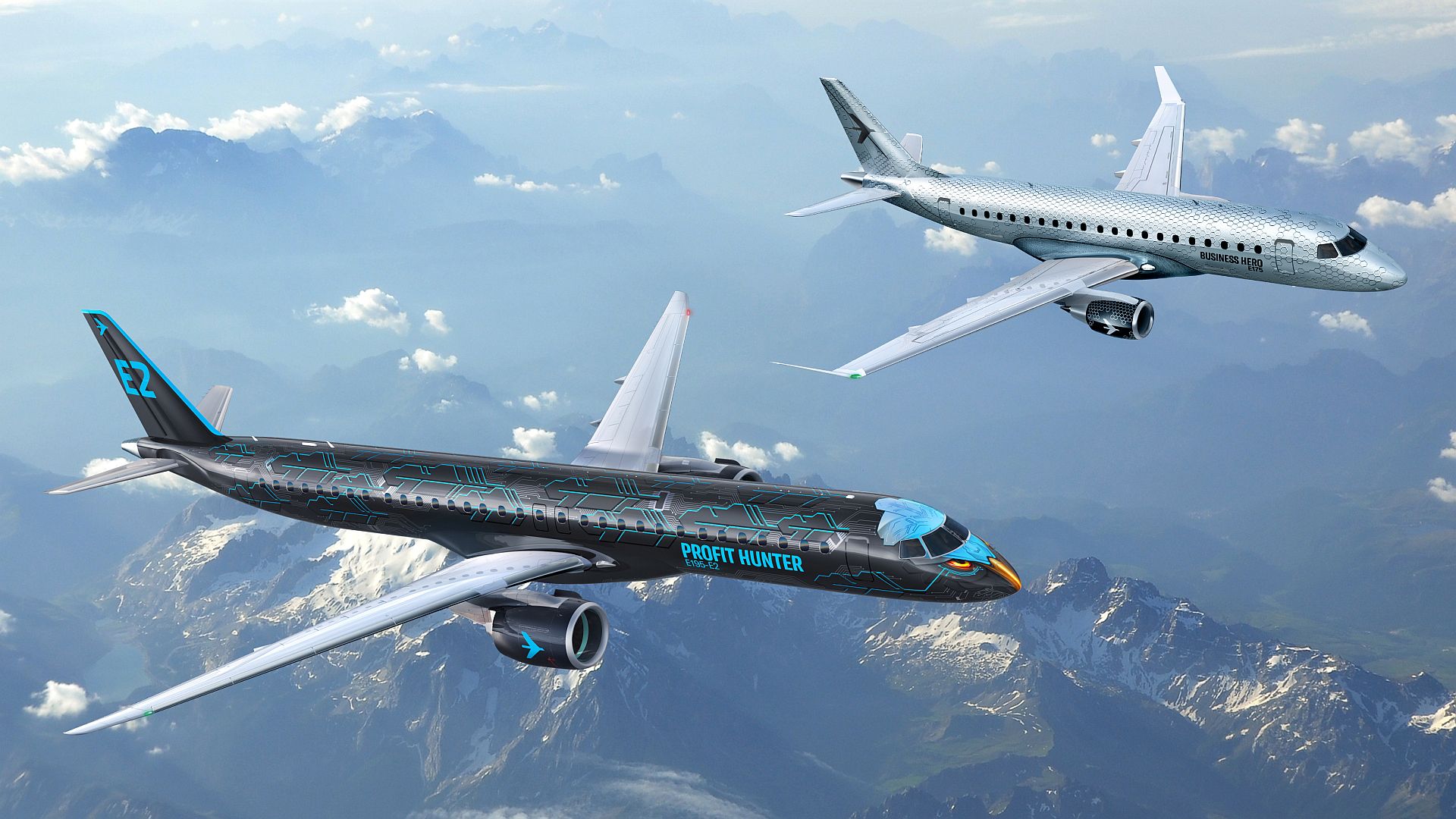
Farnborough International Airshow (July 24, 2024) – Bell Textron Inc., a Textron Inc. (NYSE: TXT) company, proudly announces the successful delivery of the remaining five Bell 505 aircraft to the Royal Jordanian Air Force (RJAF), completing the 10 Bell 505 fleet order. This significant milestone coincided with the graduation of the latest cohort of pilot cadets in a ceremony on June 24, 2024, attended by His Royal Highness, Crown Prince of the Hashemite Kingdom of Jordan, Al Hussein bin Abdullah II, underlining the RJAF’s ongoing commitment to excellence in aviation training and operational readiness.
“We are thrilled to have completed the delivery of the Bell 505 fleet to the Royal Jordanian Air Force,” said Danny Maldonado, chief commercial officer, Bell. “This partnership underscores our commitment to providing advanced, reliable, and efficient training solutions to our military partners in the region and serves as a true testament to the Bell 505’s capabilities as a military training platform.”
In a landmark event, presided over by the Crown Prince, the RJAF celebrated the graduation of its cadets, showcasing the Bell 505 aircraft that will be instrumental to the training of future generation of Jordan’s pilots.
Brig. Gen. Mohammad F. Hiyasat, Commander of the Royal Jordanian Air Force, expressed his satisfaction with the completed fleet and the successful training of the new pilots: “The delivery of the final Bell 505 helicopters represents a major milestone in our training program. These aircraft provide our cadets with the best possible training platform, ensuring they are well-prepared for future challenges. I congratulate our cadets on their graduation and commend their dedication and hard work.”
On July 6, 2022, the RJAF signed a purchase agreement for 10 Bell 505 helicopters, aimed at enhancing the RJAF’s training capabilities. Bell worked closely with regional partner, BGS, to support this initiative with RJAF and is grateful for its collaboration in expanding Bell’s fleet in the Middle East. The first five helicopters were delivered in November 2023, marking the beginning of a new era in rotorcraft training at the King Hussein Air College in Mafraq, Jordan.
As part of the program, later this year the customer will receive a flight training device and a comprehensive computer-based training package to support both basic and advanced rotorcraft flight training.
The Bell 505 is a versatile, five-seat aircraft designed for reliability and efficiency, equipped with the latest technology to meet the demands of modern flight training. The aircraft features a fully integrated Garmin G1000H NXi avionics suite and a Safran Arrius 2R engine with dual-channel FADEC, making it an ideal platform for military and commercial training.
To find out more about the Bell 505, please visit the Bell product page.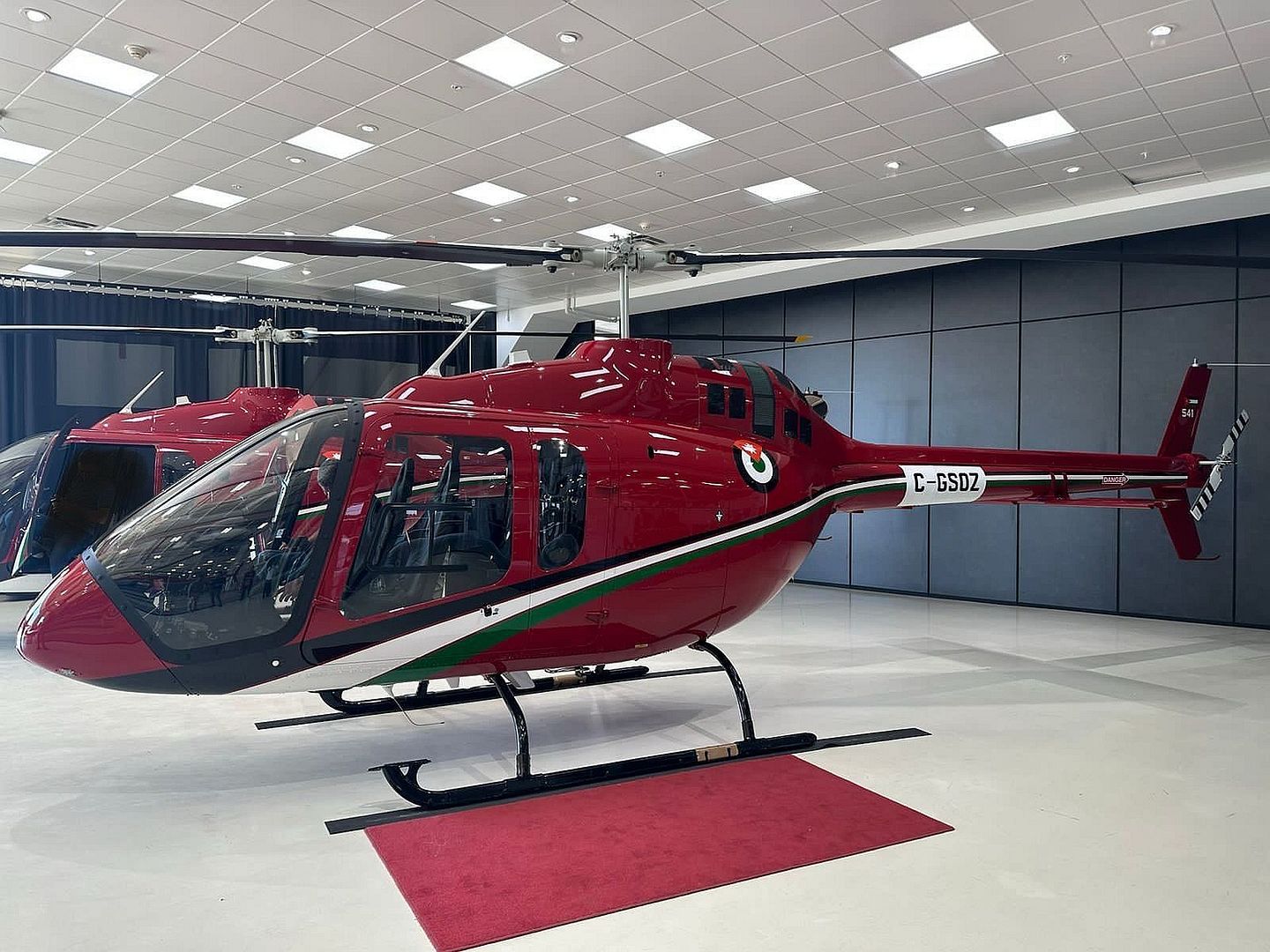
From Pitch Black 24.
RAAF F-35A Lightning II
Royal Thai Air Force JAS-39 Gripen C
Spanish Air and Space Force Eurofighter Typhoon
Republic of Korea Air Force F-15K Slam Eagle
Indonesian Air Force (TNI-AU) F-16 Fighting Falcon
Italian Air Force F-35A Lightning II
Royal Malaysian Air Force F/A-18D Hornet
Royal Air Force Eurofighter Typhoon
United States Air Force F-22A Raptor
(Photo courtesy of the RAAF)
-
11 months ago
 Main AdminTwo CF-18 Hornets, two F-35 Lighting II, and two F-16 Fighting Falcons fighter aircraft from NORAD positively identified and intercepted two Russian TU-95 and two PRC H-6 military aircraft operating in the Alaska Air Defense Identification Zone (ADIZ) on July 24, 2024. NORAD employs a layered defense network of satellites, ground-based and airborne radars and fighter aircraft in seamless interoperability to detect and track aircraft and inform appropriate actions. NORAD remains ready to employ a number of response options in defense of North America. (Department of Defense Photos)
Main AdminTwo CF-18 Hornets, two F-35 Lighting II, and two F-16 Fighting Falcons fighter aircraft from NORAD positively identified and intercepted two Russian TU-95 and two PRC H-6 military aircraft operating in the Alaska Air Defense Identification Zone (ADIZ) on July 24, 2024. NORAD employs a layered defense network of satellites, ground-based and airborne radars and fighter aircraft in seamless interoperability to detect and track aircraft and inform appropriate actions. NORAD remains ready to employ a number of response options in defense of North America. (Department of Defense Photos)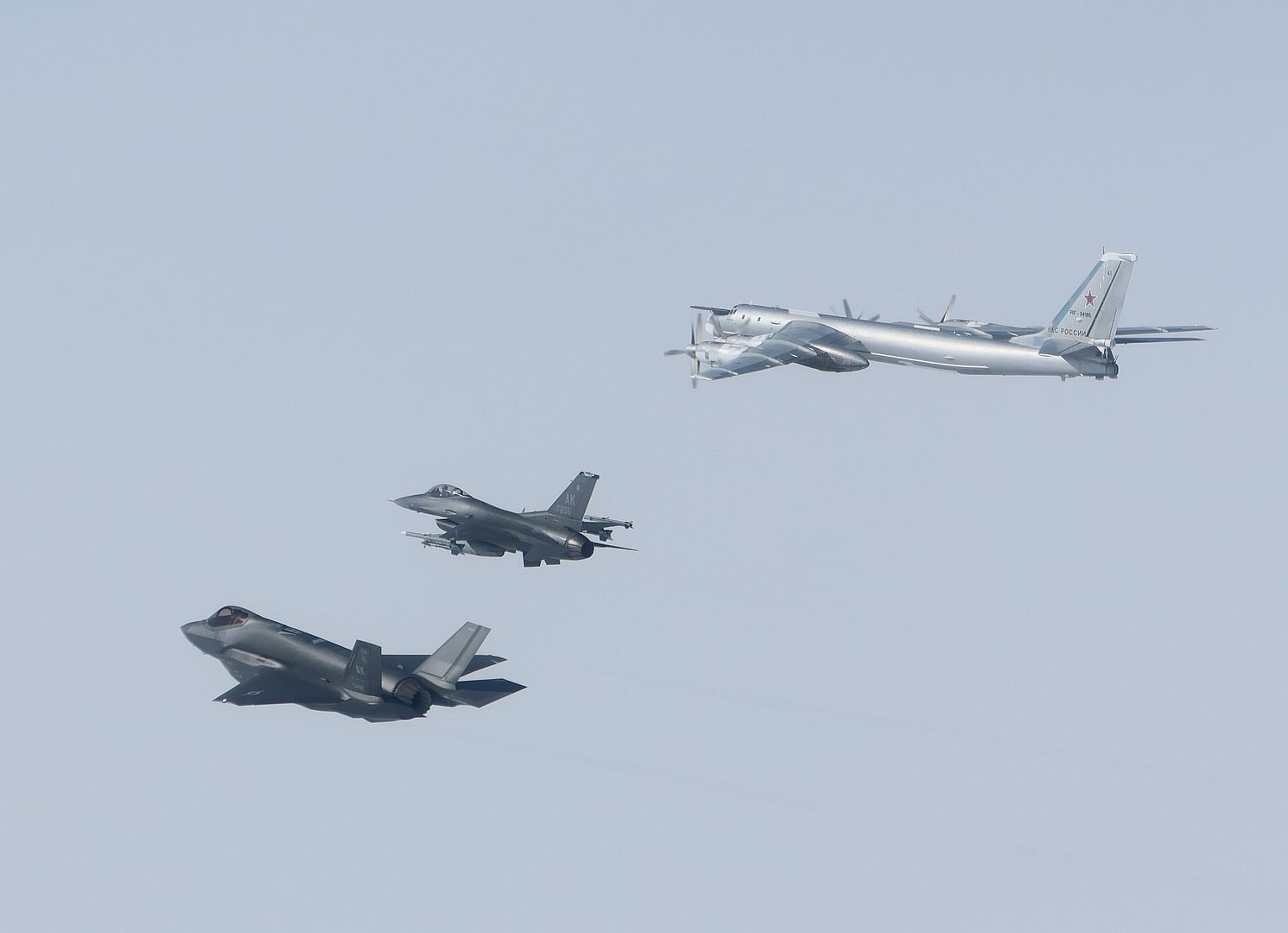
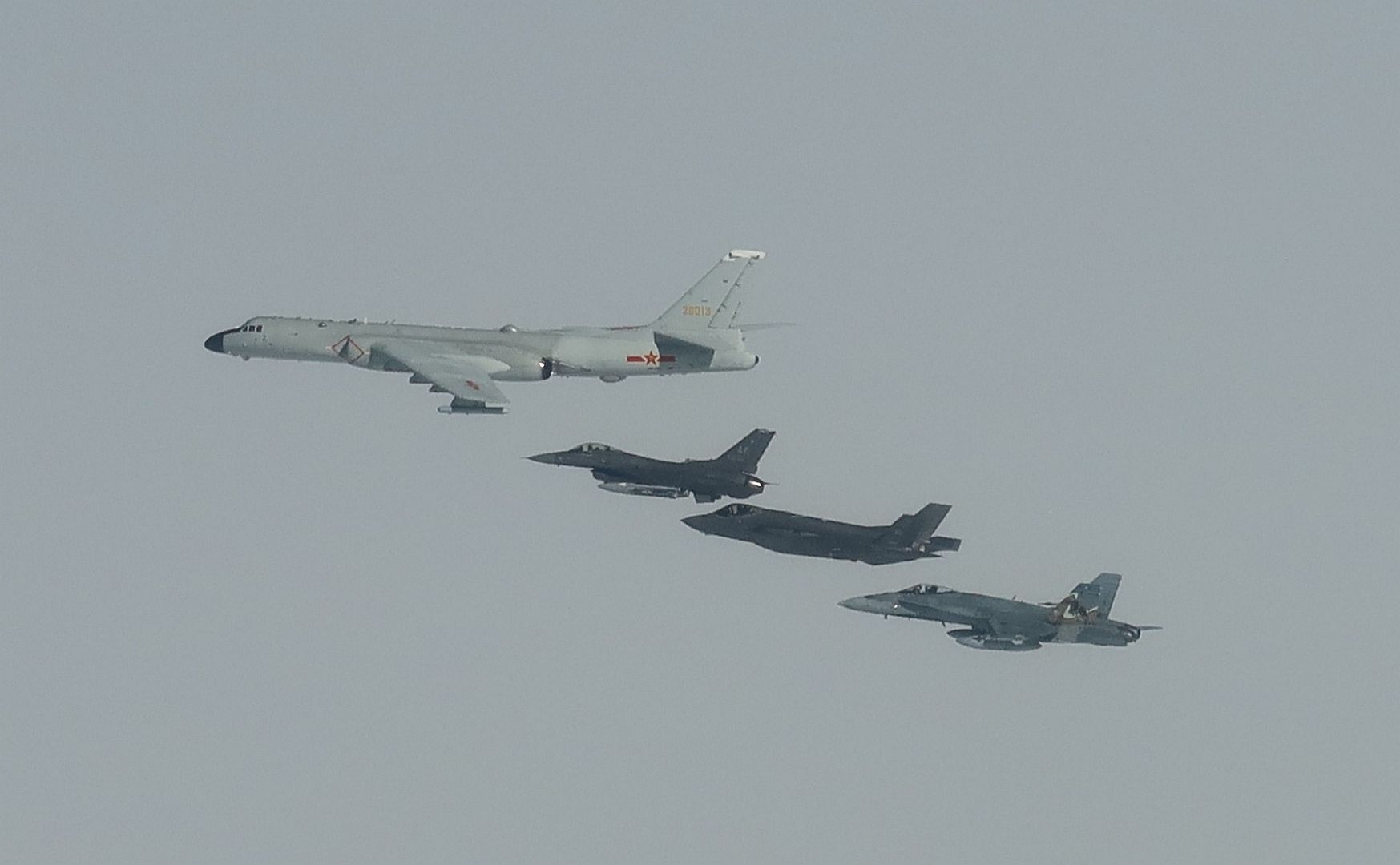
Avionics Airmen assigned to the 52nd Fighter Generation Squadron, Spangdahlem Air Base, Germany, work on an F-16CM before a night mission during Red Flag-Nellis, 24-3 at Nellis Air Force Base, Nevada, July 23, 2024. The 414th Combat Training Squadron at Nellis conducts Red Flag exercises to provide aircrews the experience of multiple, intensive air combat sorties in the safety of a training environment. (U.S. Air Force photos by William R. Lewis)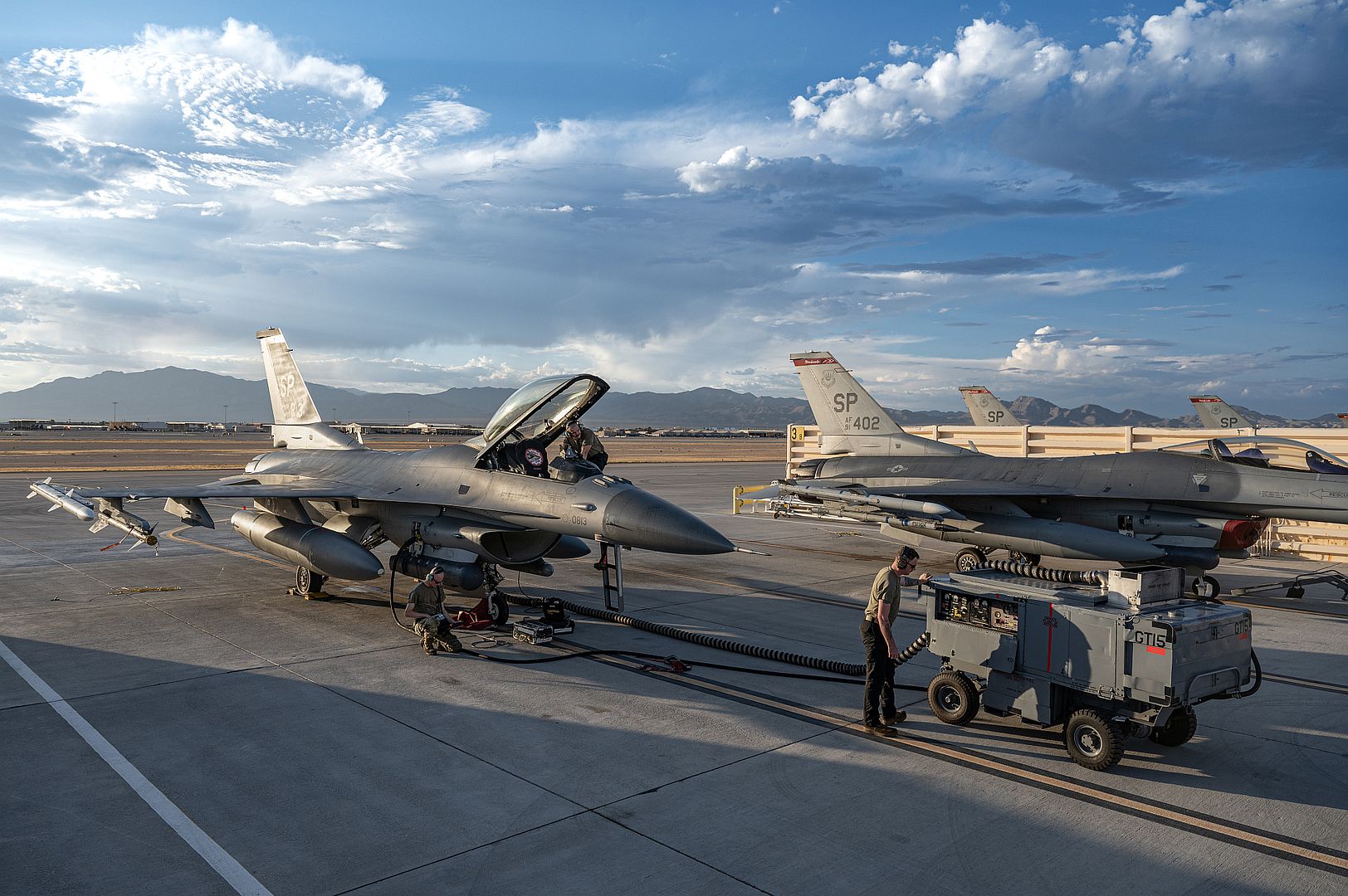
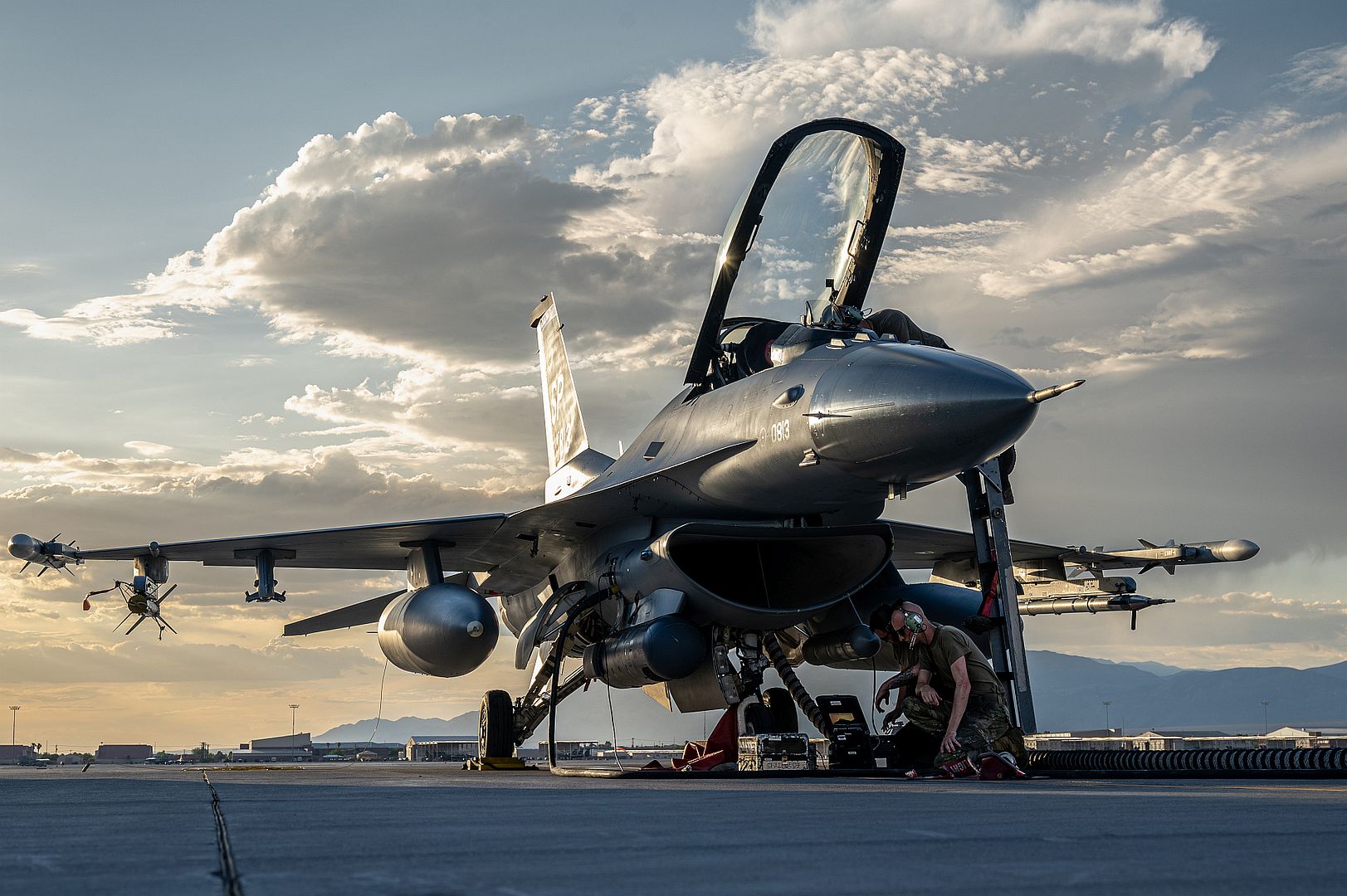
An F-16 Fighting Falcon fighter jet assigned to the 169th Fighter Wing, South Carolina Air National Guard, arrives at the 156th Wing airfield during exercise Caribbean Fox at Muñiz Air National Guard Base, Carolina, Puerto Rico, July 23, 2024. Caribbean Fox is designed to challenge participants in dynamic training scenarios during a two-week period along with offering tailored training for accomplishing critical Agile Combat Employment (ACE) readiness requirements. (U.S. Air National Guard photos by Airman 1st Class Gisselle Toro Caraballo)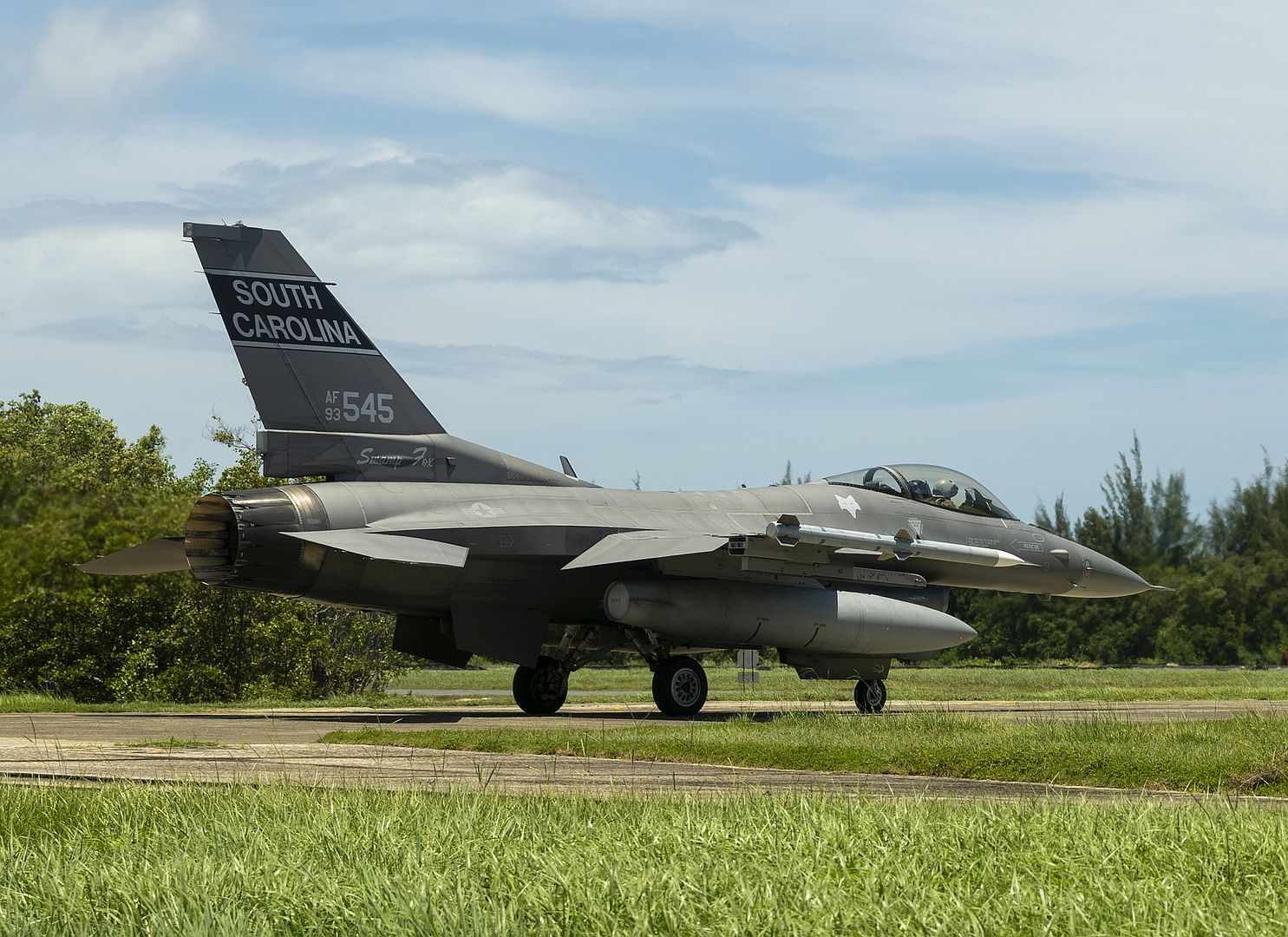
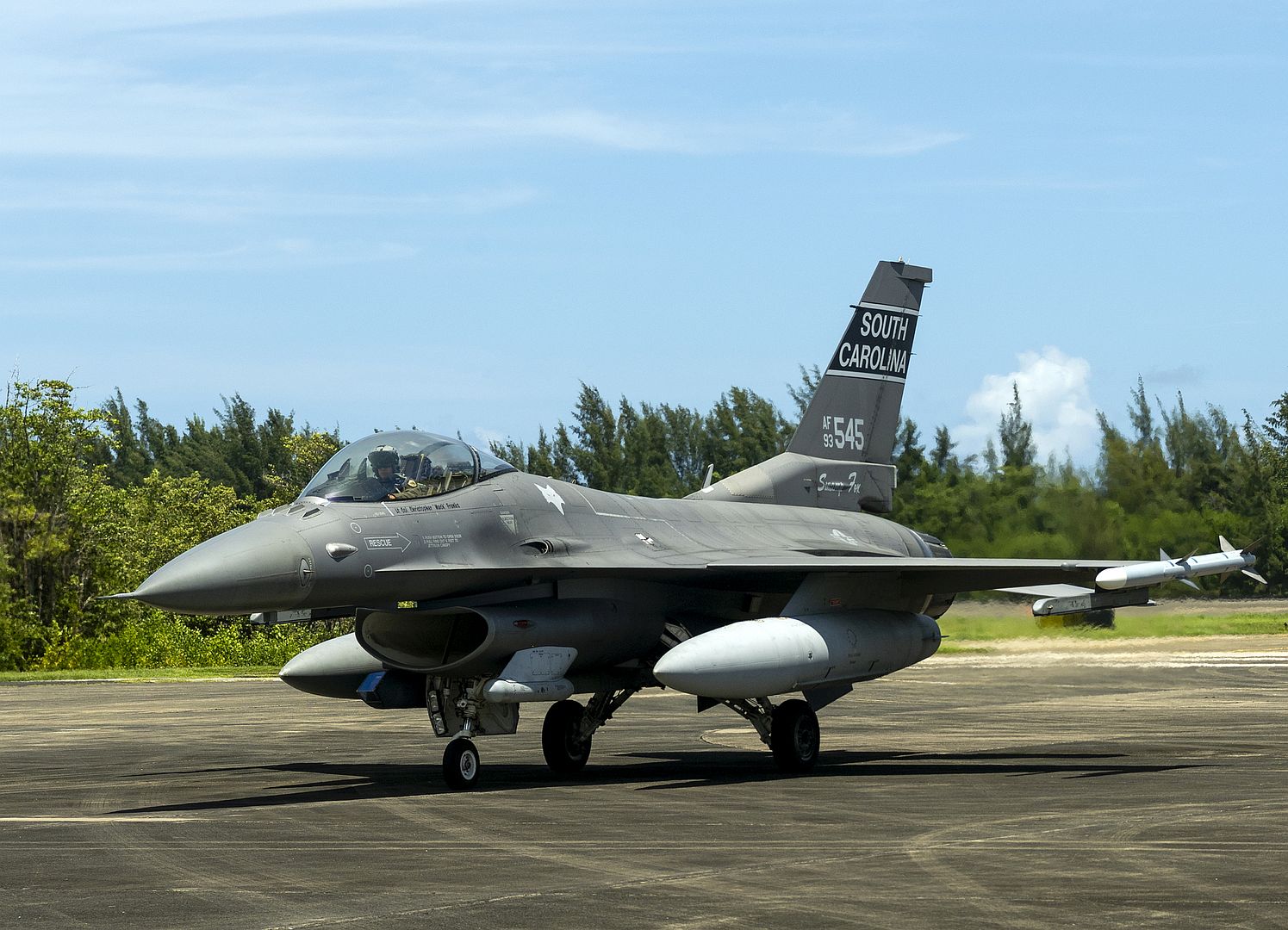
An F-22A Raptor sits on the flightline during Exercise Pitch Black 2024 at Royal Australian Air Force (RAAF) Base Tindal, Australia, July 18. Exercise Pitch Black 24 is a regular large-scale training activity that supports each participating nation’s own sovereign security objectives, and collectively contributes to the wider peace and stability of the Indo-Pacific. (U.S. Air Force photo by Tech. Sgt. Andrea Posey)_Base_Tindal_Australia_July_18..jpg?width=1920&height=1080&fit=bounds)
Leading Aircraftman Jan Isreal, No. 75 Squadron Avionics Technician with the Royal Australian Air Force, waves off an F-35A Lightning II after refueling it during Exercise Pitch Black 2024 at Base Tindal, Australia, July 22. Exercise Pitch Black 24 is a regular large-scale training activity that supports each participating nation’s own sovereign security objectives, and collectively contributes to the wider peace and stability of the Indo-Pacific. (U.S. Air Force photo by Tech. Sgt. Andrea Posey)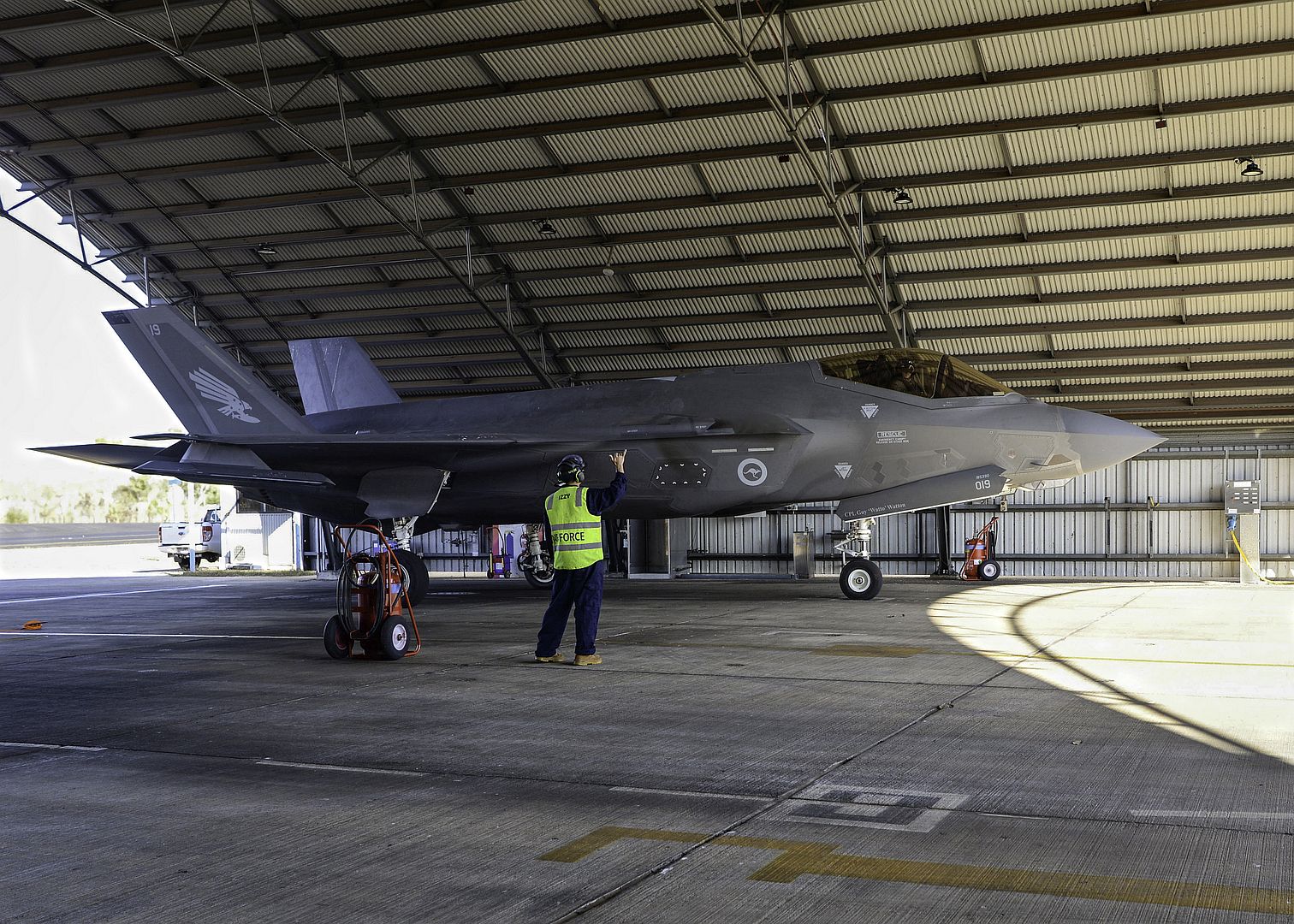
Farnborough, United Kingdom, July 25, 2024 – flynas, Saudi Arabia’s leading low-cost carrier, has signed a Memorandum of Understanding (MoU) with Airbus for 75 A320neo family aircraft and 15 A330-900. This strategic agreement will expand the airline's capacity, range and enhance its overall fleet capabilities.
Signed during Farnborough International Airshow in the presence of President of the General Authority of Civil Aviation (GACA) of Saudi Arabia, H.E. Abdulaziz bin Abdullah Al-Duailej, Chairman of the Board of NAS Holding Ayed Al Jeaid, flynas Chief Executive Officer & Managing Director Bandar Almohanna, and Airbus Chief Executive Officer, Commercial Aircraft, Christian Scherer.
The new aircraft will join the carrier’s all Airbus fleet serving international, domestic and regional routes. The new A330-900 aircraft will boast a two-class configuration, accommodating up to 400 passengers.
"We are excited to further strengthen our long-standing partnership with Airbus," said Bander Almohanna, CEO and Managing Director of flynas. "The A320neo Family provides exceptional operational performance and environmental benefits, allowing us to offer unique, low-cost travel experiences. Additionally, the A330neowill enhance our long-haul capabilities with its advanced technology and efficiency while supporting our growth plans and Saudi Arabia’s pilgrim program."
Airbus Chief Executive Officer, Commercial Aircraft, Christian Scherer said, "We are delighted to expand our partnership with flynas through this significant milestone for both A320neo and A330-900 aircraft. The A330neo will allow flynas to further grow into widebody markets by building on the A320, benefiting from Airbus’ unique commonality. Both aircraft types offer flynas the perfect versatility and economics to expand into new markets while offering their passengers the latest cabin experience and comfort. We look forward to continuing our successful collaboration with flynas as they embark on this exciting new chapter."
The addition of the A330-900 aircraft will support flynas' ambitious growth plans. The airline anticipates significant operational efficiency gains by combining the new widebody aircraft with its existing A320neo fleet. The A330-900 offers increased capacity and range at unrivalled seat costs, ensuring flynas can compete effectively in the growing regional market, a key focus area for the airline.
The A330neo delivers unbeatable operating economics, powered by the latest-generation Rolls-Royce Trent 7000 engines, featuring new wings and a range of aerodynamic innovations resulting in a 25 percent reduction in fuel consumption and CO₂ emissions compared to previous generation competitor aircraft. The A330neo is capable of flying 8,150 nm / 15,094 km non-stop, providing ultimate comfort with more passenger space, a new lighting system, latest in-flight entertainment systems and full connectivity throughout the cabin.
As with all Airbus aircraft, the A330 family is already able to operate with up to 50% Sustainable Aviation Fuel (SAF). The manufacturer is targeting to have its aircraft up to 100% SAF capable by 2030.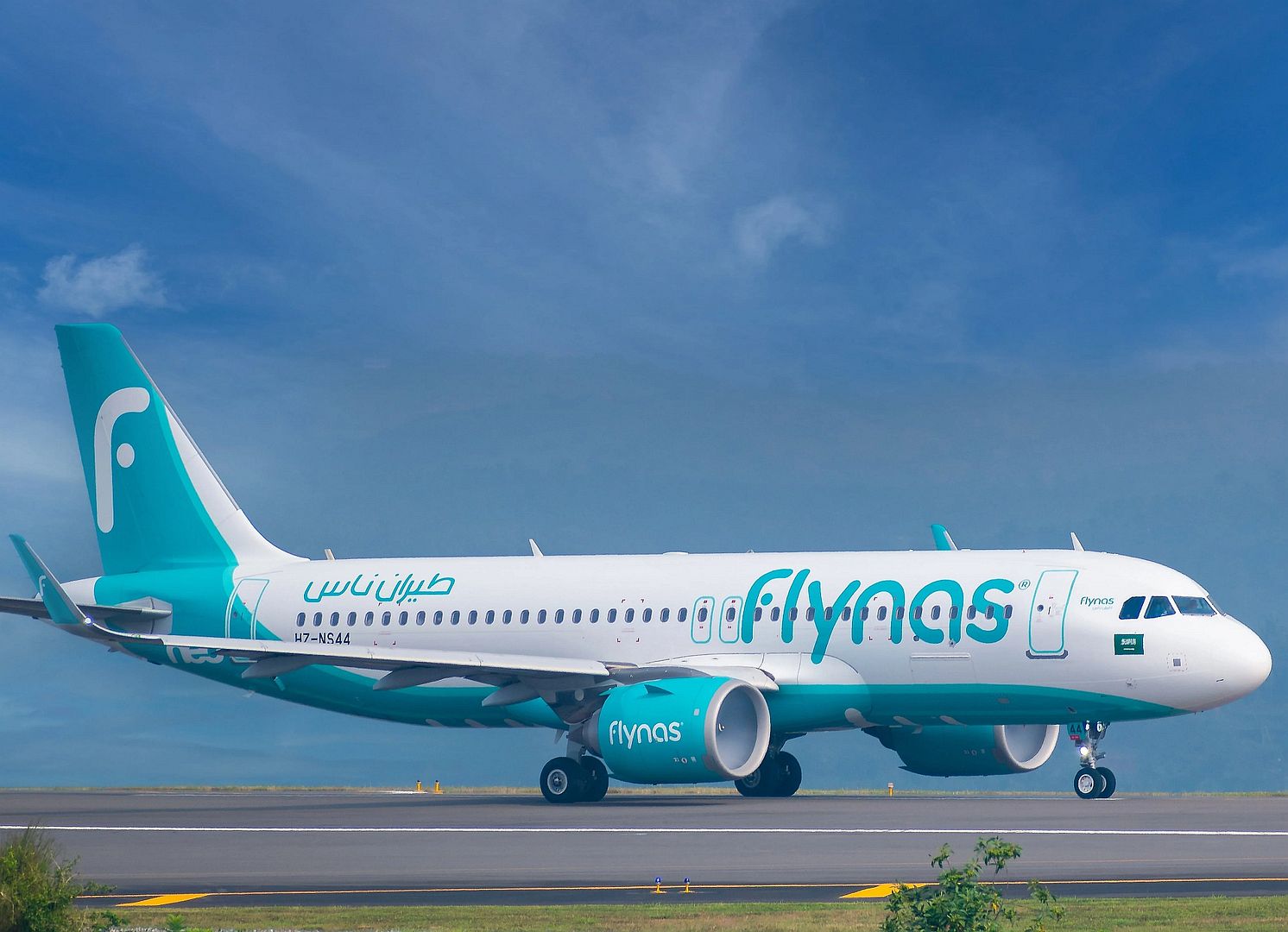
Farnborough, United Kingdom, 25 July 2024– Abra Group has signed a Memorandum of Understanding (MOU) for five A350-900s to further expand its international long-haul operations and increase capacity. This is in line with the Group's strategic plans to offer millions of passengers greater connectivity to new destinations on long-range routes.
Adrian Neuhauser, CEO of Abra Group said, “We are delighted to announce this agreement with Airbus. We believe the arrival of these five A350s, which offer a best-in-class passenger experience, are more fuel efficient and have a lower cost per seat than competitor aircraft, will allow us to strengthen our commitment to make travel more accessible and responsible. This also means better prices for customers with better connectivity between our continent and Europe, and will further consolidate Abra as one of the largest and most competitive air transportation groups in Latin America. The aircraft selection is consistent with the strategic announcements we have done this year and further executes on our long term vision.”
Benoît de Saint-Exupéry, Executive Vice President Sales of the Commercial Aircraft business said, "We are delighted to see the Abra Group endorsing the A350 to continue its mission of strengthening air connectivity between Latin America and the rest of the world. The selection of the A350 reaffirms the aircraft as the undisputed leader in long-haul air travel.”
The A350 is the world’s most modern and efficient widebody aircraft and the long range leader in the 300-410 seater category, flying efficiently on any sector from short-haul to ultra-long-haul routes up to 9,700nm. Its clean sheet design includes state-of-the-art technologies, aerodynamics, lightweight materials and latest generation engines that together deliver 25% advantage in fuel burn, operating costs and CO₂ emissions, as well as 50% noise reduction compared to previous generation competitor aircraft.
Airbus has sold over 1,300 aircraft in Latin America and the Caribbean and has a leading market share of in-service passenger aircraft. Around 800 are in operation throughout the region, with close to 500 in the order backlog. Since 1994, Airbus has secured 75% of net orders in the region.
As with all Airbus aircraft, the A350 aircraft is already able to operate with up to 50% Sustainable Aviation Fuel (SAF). Airbus is targeting to have its aircraft up to 100% SAF capable by 2030.
In New Zealand yesterday many across the mid-lower North Island were treated to a Formation Thunder flight led by one C-130H(NZ) Hercules, and A400M transport aircraft from the French, German and Spanish Air Forces.
(Photos courtesy of the RNZAF)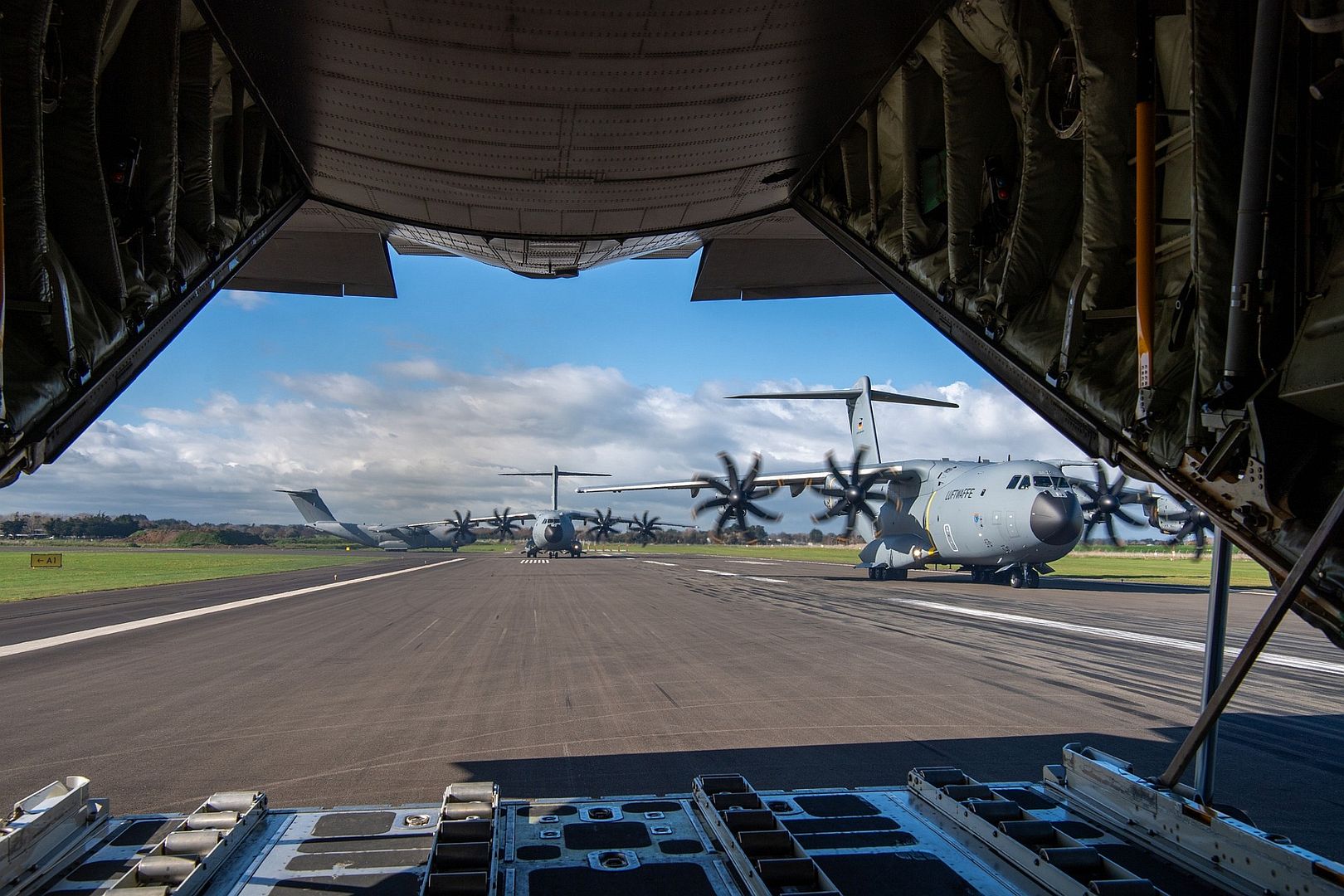
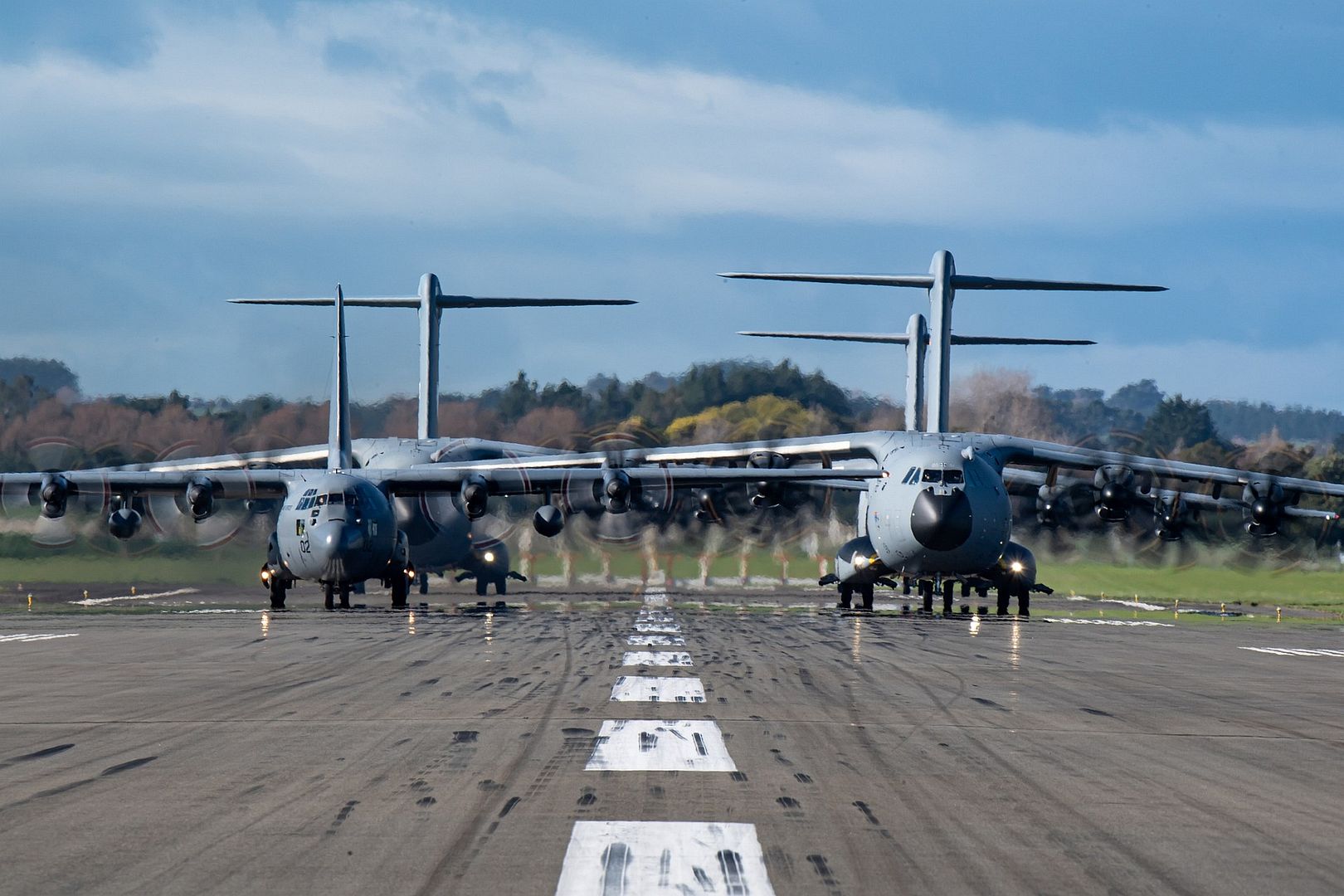

-
11 months ago
 Main AdminU.S. Marines with Marine Medium Tiltrotor Squadron 268 (Reinforced), Marine Rotational Force – Darwin 24.3, conduct a pre-flight inspection on an MV-22B Osprey in preparation for a night air assault during Exercise Predator’s Run 24 at Royal Australian Air Force Base Darwin, NT, Australia, July 24, 2024. Exercise Predator’s Run 24 is a littoral-focused, multilateral training exercise led by the Australian Army’s 1st Brigade, involving the Australian Defence Force, the United Kingdom Commando Force, the Republic of the Philippines Army, the U.S. Marine Corps and the U.S. Navy. MRF-D 24.3’s Aviation Combat Element, VMM-268 (Rein.), provided direct support as the primary air assault platform for MRF-D 24.3 conducting Expeditionary Advanced Base Operations, involving both day and night flight operations, incorporating digital interoperability assets, and long-range communication capabilities. (U.S. Marine Corps photo by Sgt. Cristian Bestul)
Main AdminU.S. Marines with Marine Medium Tiltrotor Squadron 268 (Reinforced), Marine Rotational Force – Darwin 24.3, conduct a pre-flight inspection on an MV-22B Osprey in preparation for a night air assault during Exercise Predator’s Run 24 at Royal Australian Air Force Base Darwin, NT, Australia, July 24, 2024. Exercise Predator’s Run 24 is a littoral-focused, multilateral training exercise led by the Australian Army’s 1st Brigade, involving the Australian Defence Force, the United Kingdom Commando Force, the Republic of the Philippines Army, the U.S. Marine Corps and the U.S. Navy. MRF-D 24.3’s Aviation Combat Element, VMM-268 (Rein.), provided direct support as the primary air assault platform for MRF-D 24.3 conducting Expeditionary Advanced Base Operations, involving both day and night flight operations, incorporating digital interoperability assets, and long-range communication capabilities. (U.S. Marine Corps photo by Sgt. Cristian Bestul)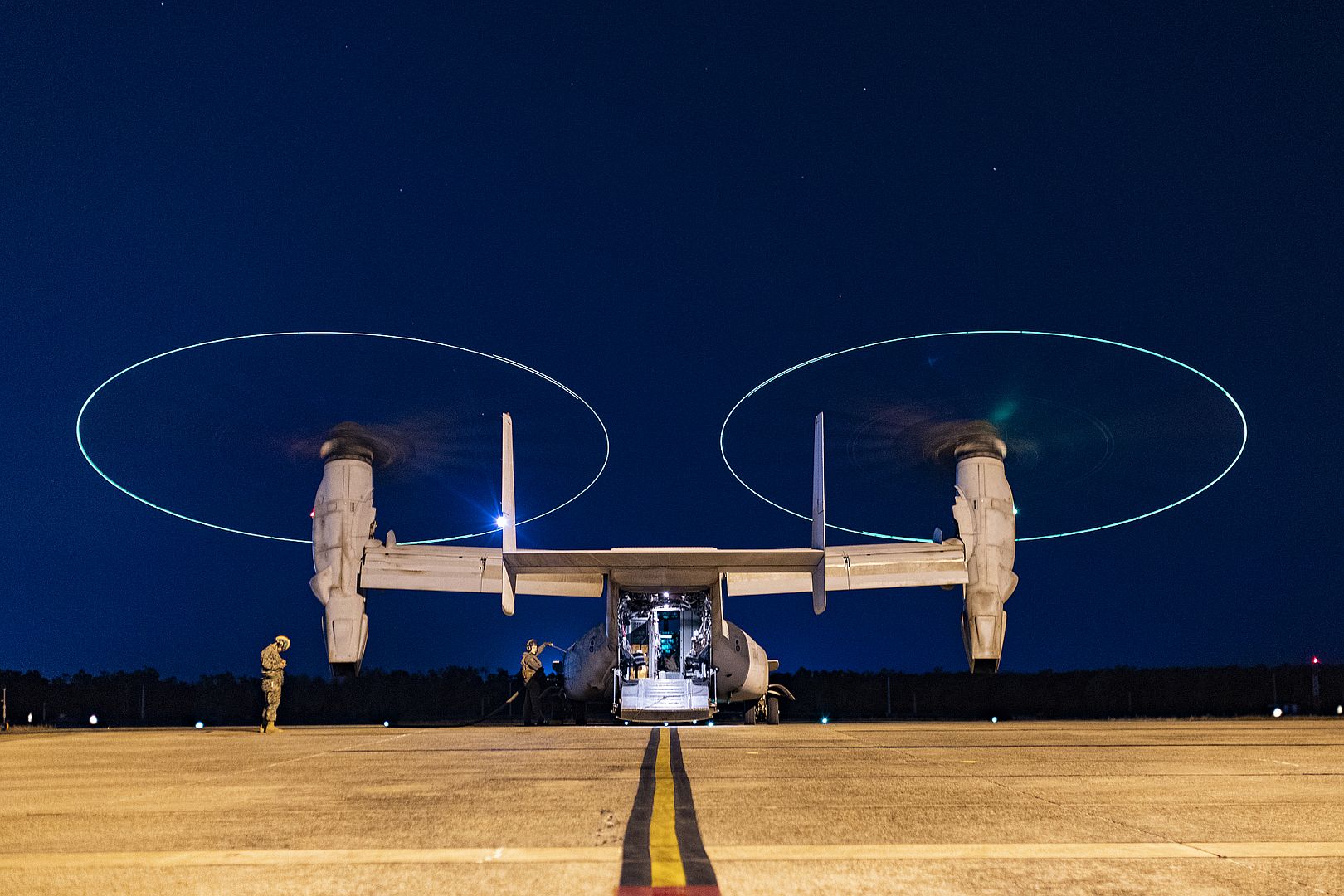
U.S. Marines with Marine Fighter Attack Squadron (VMFA) 121, 31st Marine Expeditionary Unit, unload a guided bomb unit 12 during F-35 ordnance pro-loading drills aboard the amphibious assault ship the USS America (LHA 6) July 25, 2024. ordnance pro-loading drills grant the opportunity for aviation ordnance technicians to practice loading payloads in a time effective manner. The 31st MEU is operating aboard ships of the USS America Amphibious Ready Group in the 7th Fleet area of operations, the U.S. Navy’s largest forward-deployed numbered fleet, and routinely interacts and operates with allies and partners in preserving a free and open Indo-Pacific region. (U.S. Marine Corps photo by Cpl. Juan Maldonado)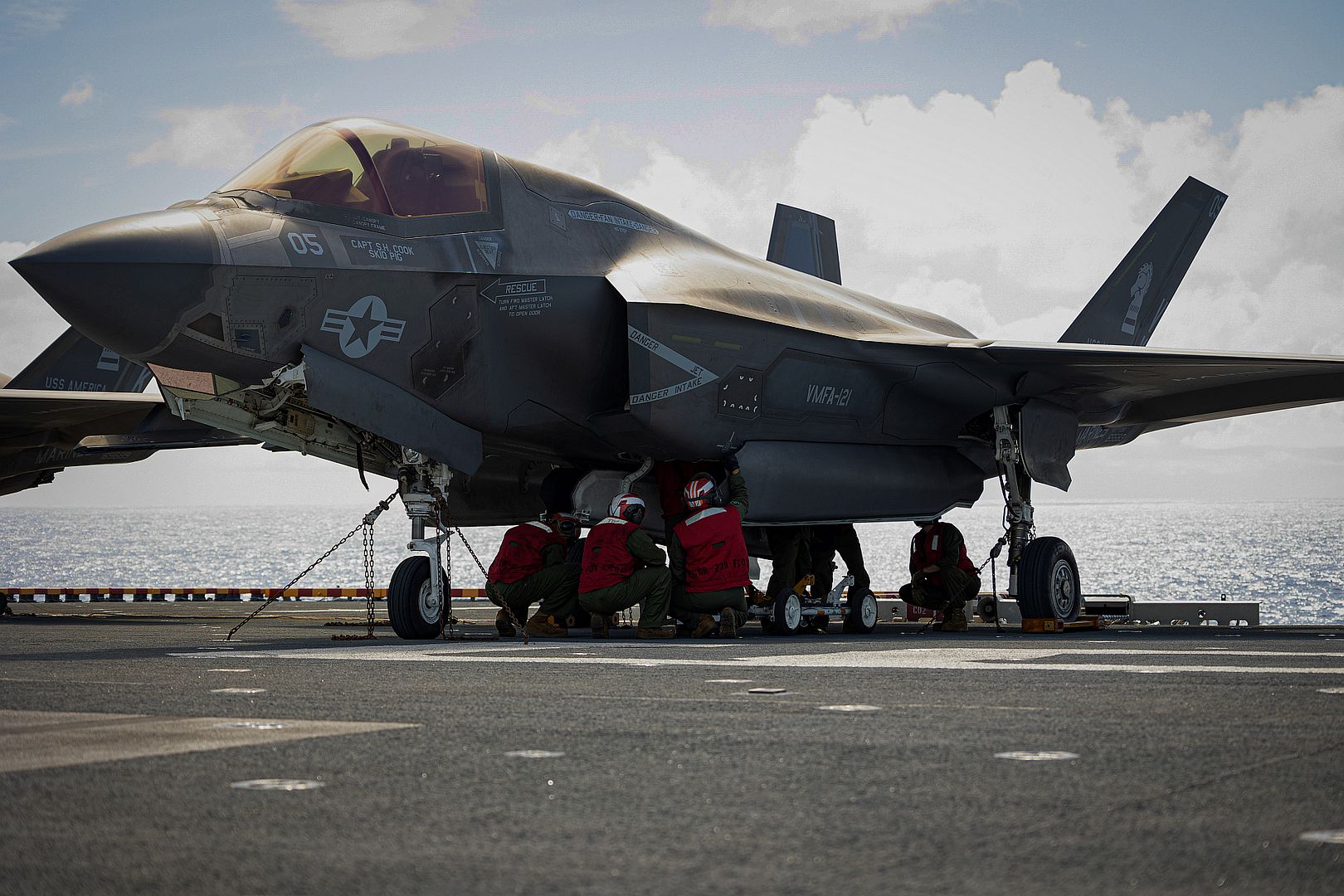
U.S. Marine Corps F-35B Lightning II aircraft assigned to Marine Fighter Attack Squadron (VMFA) 121, 31st Marine Expeditionary Unit, prepares to land during night flight operations aboard the amphibious assault ship USS America (LHA 6) on July 25, 2024. The F-35Bs conducted night flight operations to expand mission capabilities in support of the 31st MEU. The 31st MEU is operating aboard ships of the USS America Amphibious Ready Group in the 7th Fleet area of operations, the U.S. Navy’s largest forward-deployed numbered fleet, and routinely interacts and operates with allies and partners in preserving a free and open Indo-Pacific region. (U.S. Marine Corps photos by Gunnery Sgt. Devin M. Nichols)_121_31st_Marine_Expeditionary_Unit_prepares_to_land_during_night_flight_operations_aboard_the_amphibious_assault_ship_USS_America-1.jpg?width=1920&height=1080&fit=bounds)
_121_31st_Marine_Expeditionary_Unit_prepares_to_land_during_night_flight_operations_aboard_the_amphibious_assault_ship_USS_America.jpg?width=1920&height=1080&fit=bounds)
An F-16 Fighting Falcon aircraft performs a low pass over Malacky Air Base, Slovakia, July 22, 2024. The aircraft were flown by U.S. Air Force pilots and were the first F-16s to be delivered from Lockheed Martin to Slovakia. (U.S. Air National Guard photo by Tech. Sgt. David Sherman)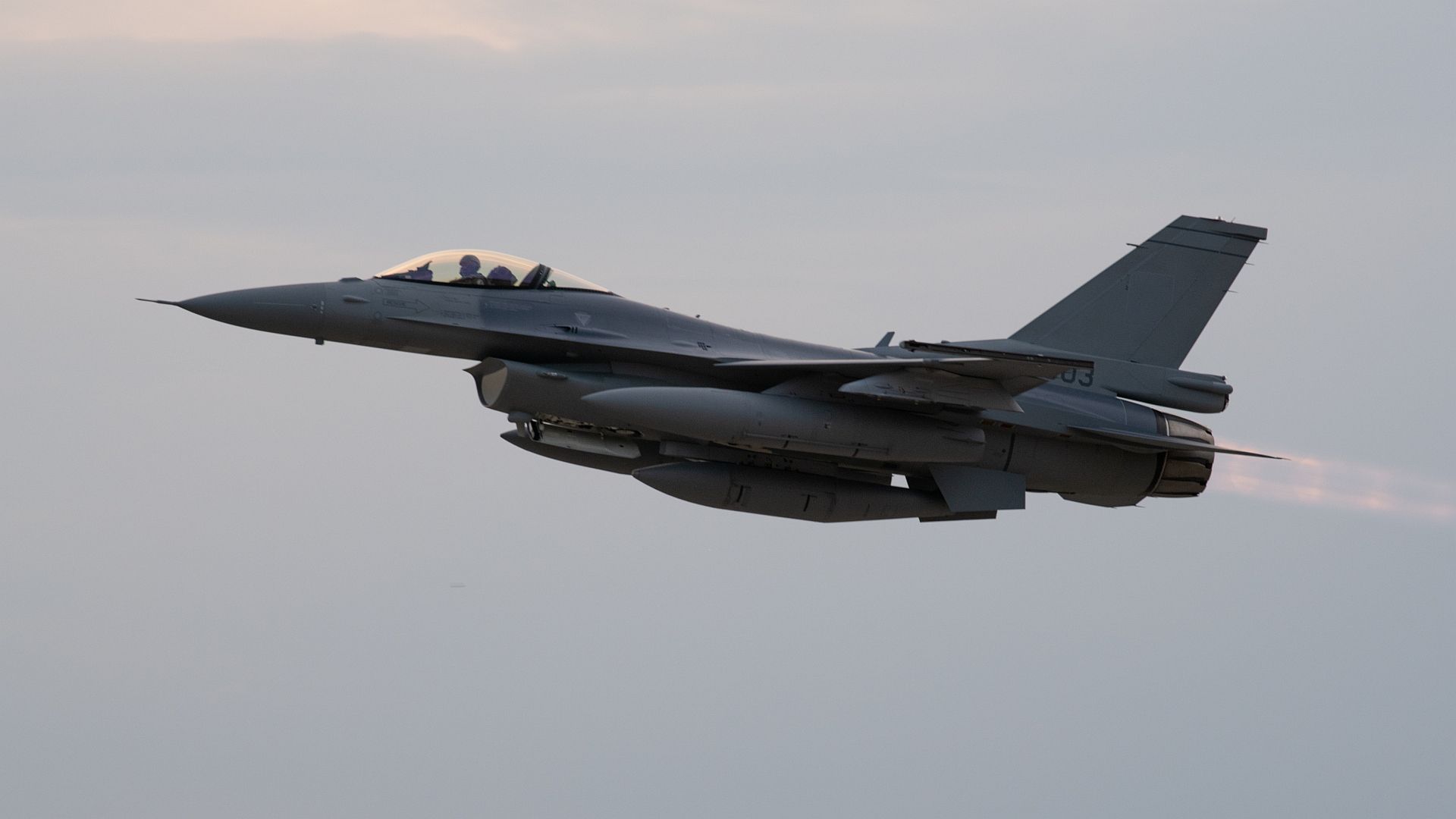
An F-16 Fighting Falcon aircraft lands on Malacky Air Base, Slovakia, July 22, 2024. The aircraft were flown by U.S. Air Force pilots and were the first F-16s to be delivered from Lockheed Martin to Slovakia. (U.S. Air National Guard photo by Tech. Sgt. David Sherman)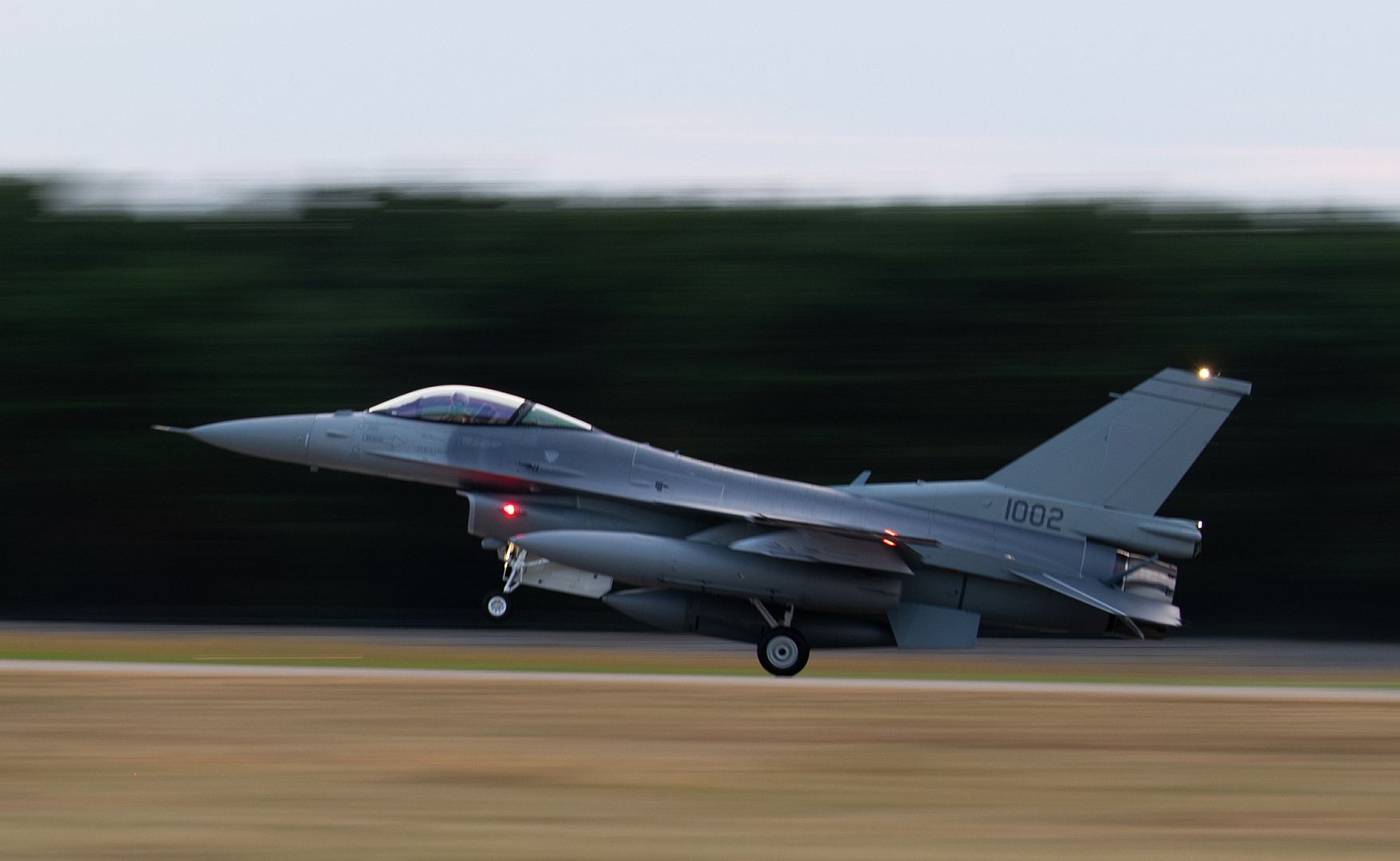
A B-1B Lancer assigned to the 37th Bomb Squadron, Ellsworth Air Force Base (AFB), South Dakota, lands at Nellis AFB, Nevada, July 22, 2024. Red Flag provides participants the opportunity to plan and employ together in the air, domain (supported by space, and cyber) in a contested, degraded and operationally limited environment. (U.S. Air Force photo by William R. Lewis)_South_Dakota_lands_at_Nellis_AFB_Nevada_July_22_2024..jpg?width=1920&height=1080&fit=bounds)
A B-1B Lancer assigned to the 37th Bomb Squadron, Ellsworth Air Force Base (AFB), South Dakota, taxis after returning from a mission during Red Flag-Nellis 24-3, at Nellis AFB, Nevada, July 22, 2024. Red Flag provides complex-realistic scenarios concentrated on warfighting in the Indo-Pacific theater. (U.S. Air Force photo by William R. Lewis)_South_Dakota_taxis_after_returning_from_a_mission_during_Red_Flag-Nellis_24-3_at_Nellis_AFB_Nevada_July_22_2024..jpg?width=1920&height=1080&fit=bounds)
Lt. Gen. Derek France, U.S. Air Forces Central Command commander, takes off flying a F-16 Fighting Falcon at an undisclosed location within the U.S. Central Command area of responsibility, July 24, 2024. This was France's first flight in AOR since taking command of AFCENT. (U.S. Air Force photo)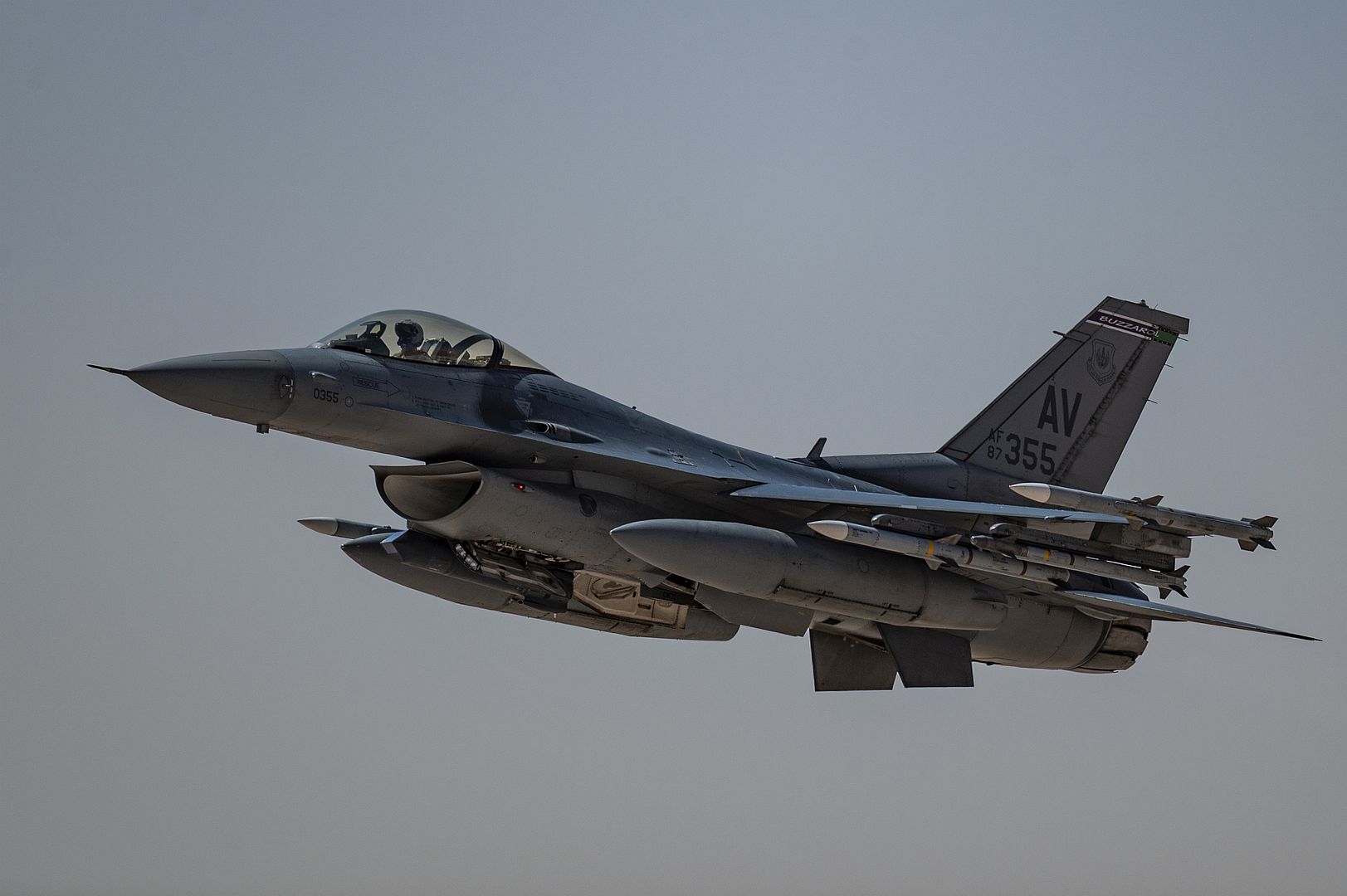
HMS Duncan and an RAF Typhoon successfully tracked and eliminated an aerial ‘threat’ during counter-drone training in the Mediterranean.
The Type 45 destroyer worked with a Typhoon FGR4 from RAF Akrotiri, in Cyprus, for the exercise which looked to see how both services can develop tactics and procedures against airborne threats.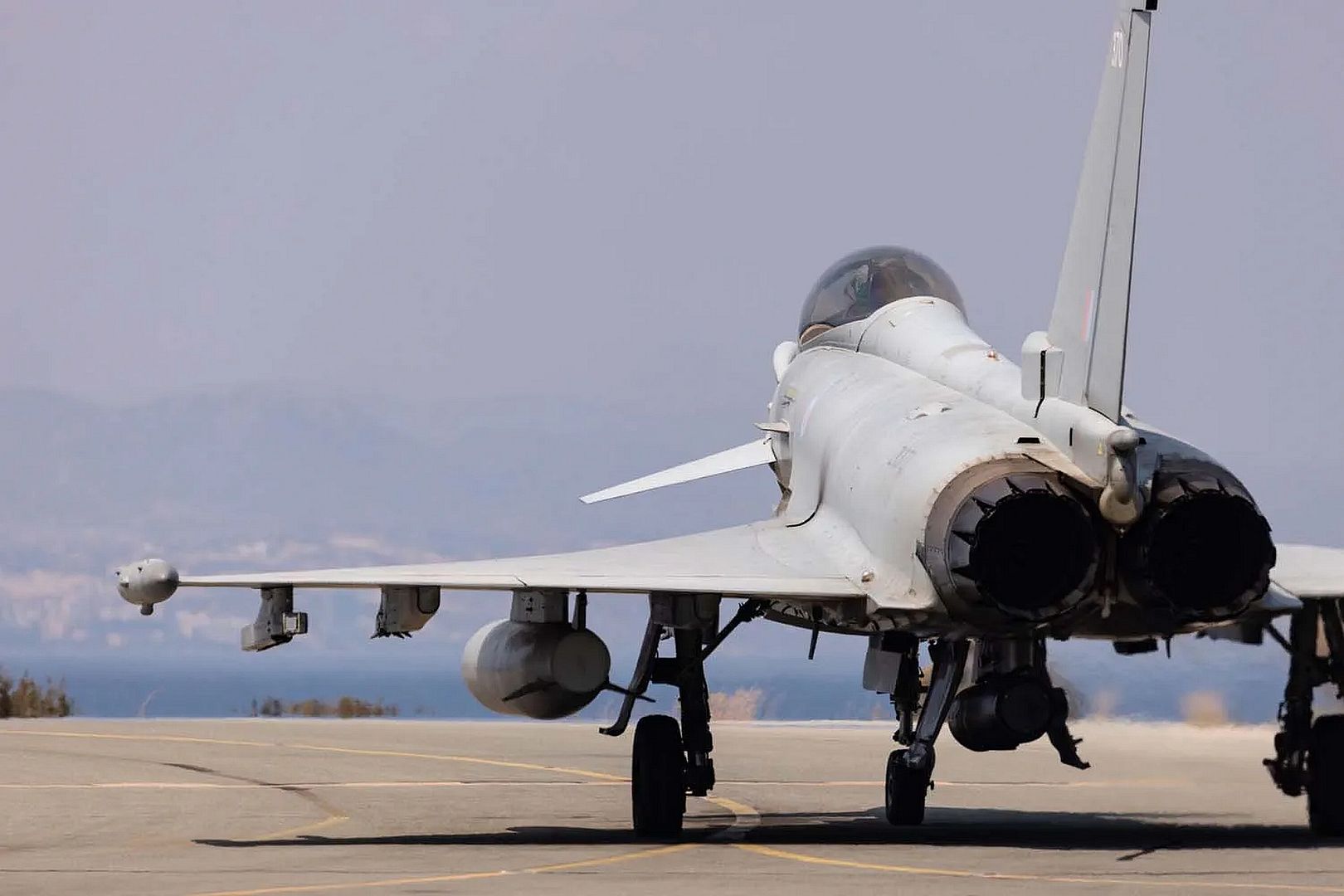
Duncan is one of six Daring-class destroyers who are the Royal Navy’s experts in air defence and Exercise Aphrodite Trident, held south of Cyprus, tested the ship against uncrewed aerial systems.
While Duncan and the Typhoon joined forces in the Med, the exercise saw the RAF’s 83 Expeditionary Air Group, hold strategic oversight and monitor its progress via satellite in a Combined Air Operations Centre (CAOC).
The exercise aimed to prepare and develop plans for defending any potential threat to UK sovereign bases. HMS Duncan’s Wildcat Helicopter took to the skies, simulating an enemy drone in attack mode, flying a pattern directly towards RAF Akrotiri.
After receiving an alert from the CAOC that the base was under imminent threat of attack, the RAF Typhoon Detachment based in Cyprus sprang into action. The Typhoon fighter jet scrambled to rendezvous with HMS Duncan, operating under the tactical guidance of one of the ship’s Fighter Controllers—affectionately known as ‘Freddies.’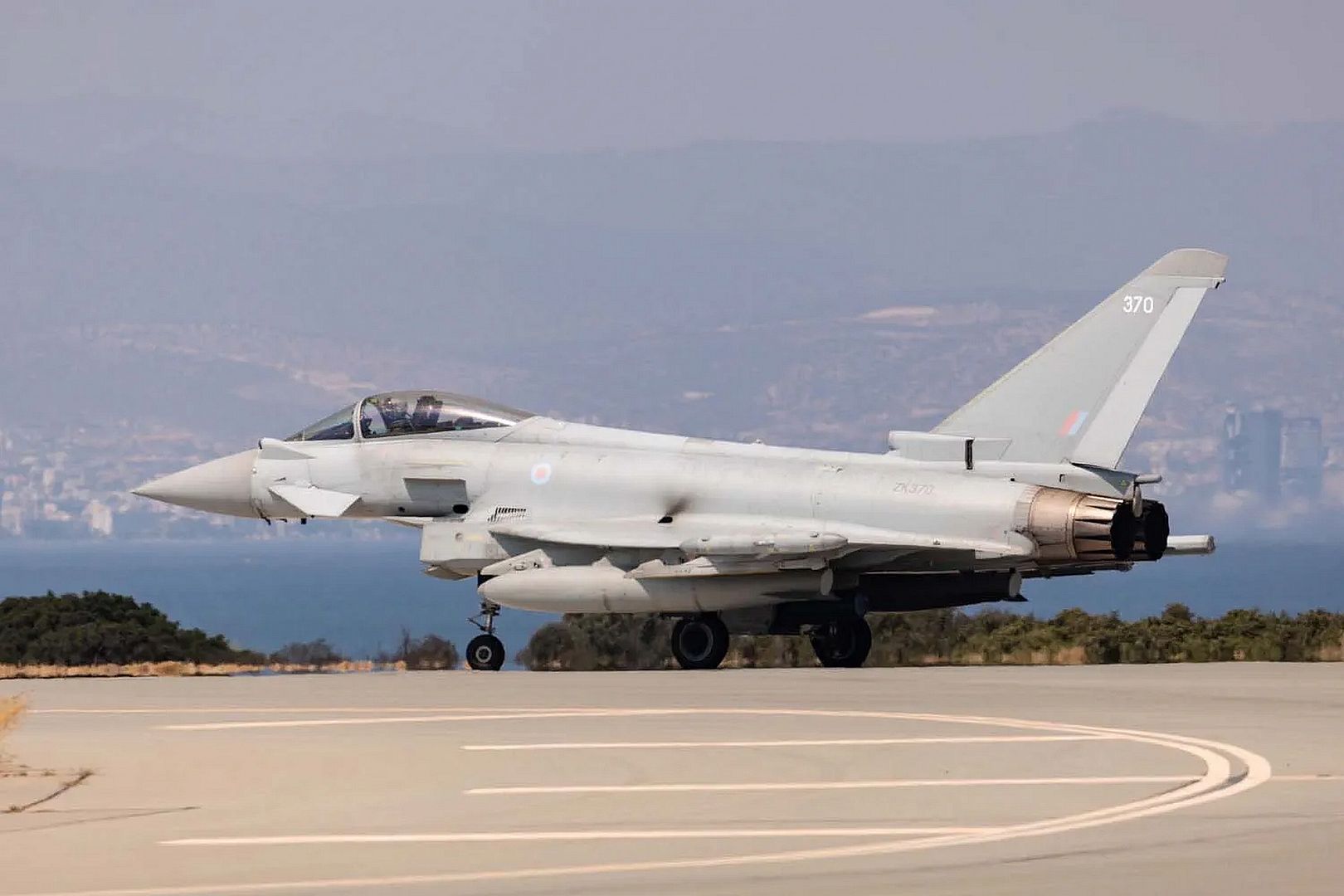
These RN Warfare Officers specialise in overseeing fast jet missions, ensuring they achieve their objectives from a safe distance, far away from vulnerable units or areas.
Using her Sampson radar (the spinning dome on top of her main mast), HMS Duncan was able to track the low-flying ‘drone’ as it sped towards its intended target and, after establishing a data link with the Typhoon, could transmit her radar’s target track to the jet’s on-board sensors.
The ability to transmit radar data allowed the jet to navigate on to the target and eliminate the threat well before it could reach its intended target.
Lieutenant Jonny Miller, a flight controller on HMS Duncan, said: “It is a very satisfying feeling to see the hours of preparation and planning that go into an exercise like this come to fruition, especially one as relevant and in tune with the real-life threat as Aphrodite Trident.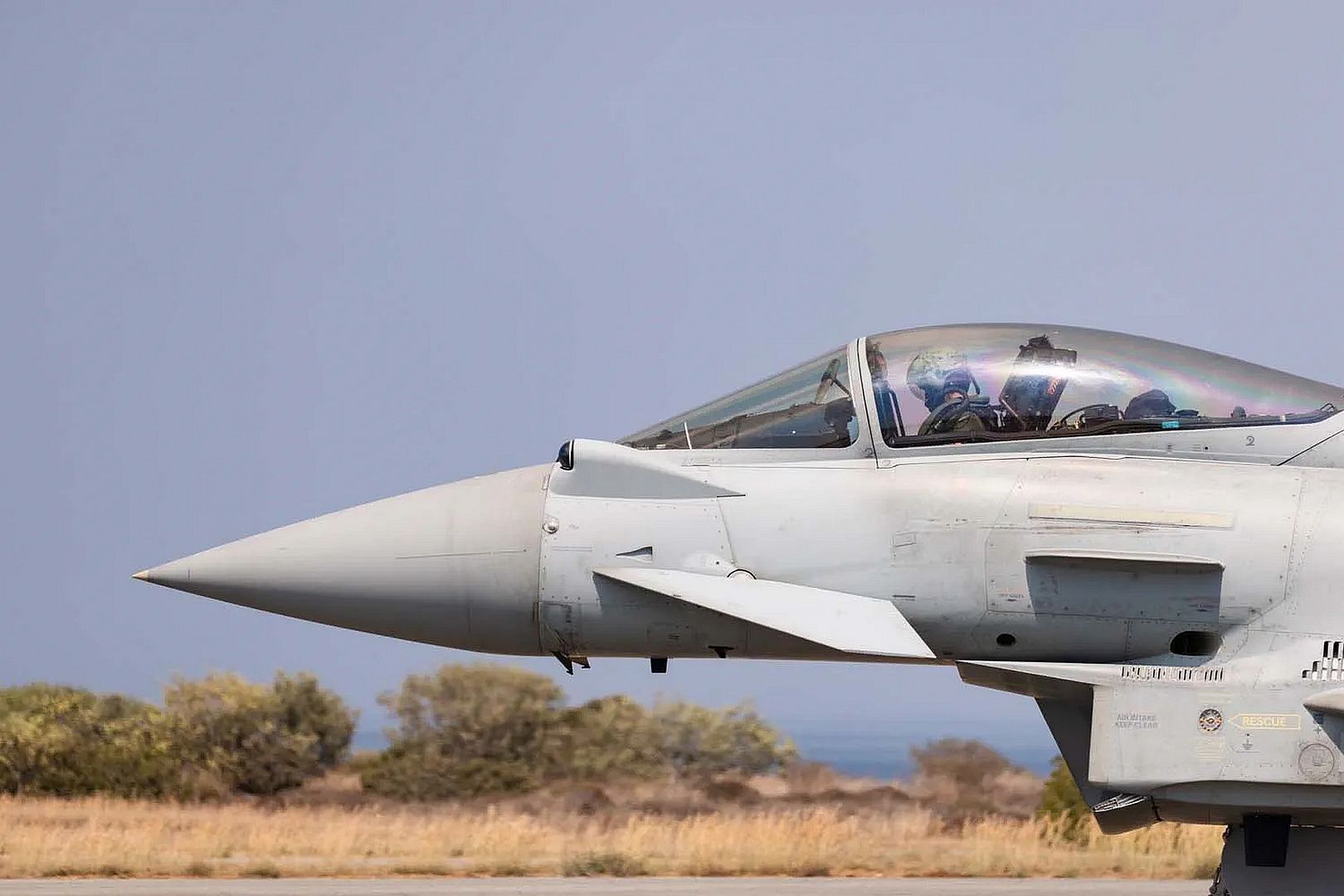
“This exercise has proven that we can defend ourselves, our colleagues and our allies from attack. It really shows why what we do matters.”
RAF Typhoon Detachment Commander Wing Commander Morris added: “A Typhoon pilot on a scramble has to deal with many dynamic tasks in a very short period of time. HMS Duncan’s capabilities provide us the ability to quickly meld voice comms with a digital picture in the cockpit thus reducing the time to identify and engage targets whilst maximising distance from the defended asset.
“This was a great opportunity to work with HMS Duncan and prove the Voice and Data communications for potential scenarios in the Eastern Mediterranean.”
(Photos courtesy of the RAF/RN)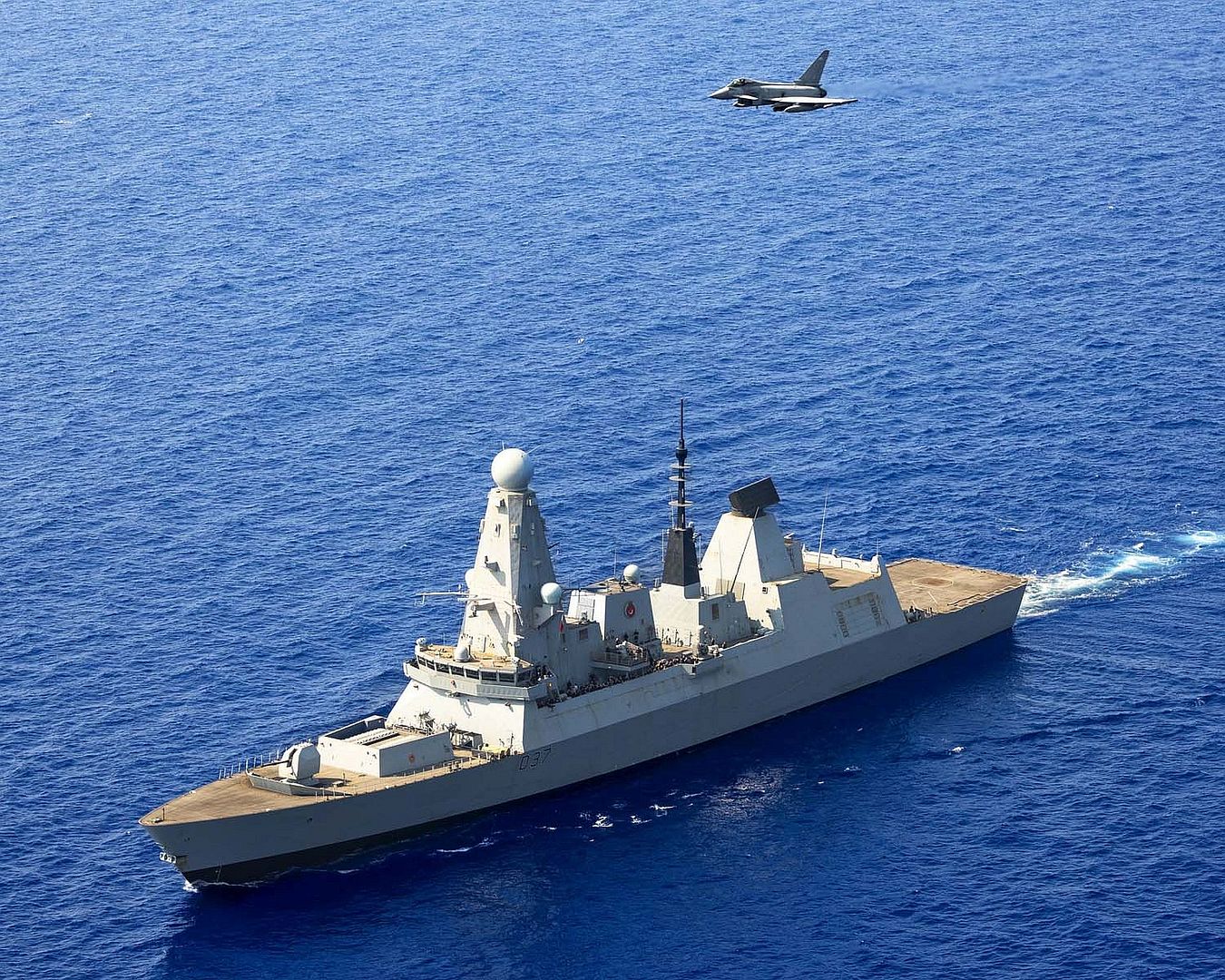
Some more action from Pitch Black 2024.
(Photos courtesy of the RAAF)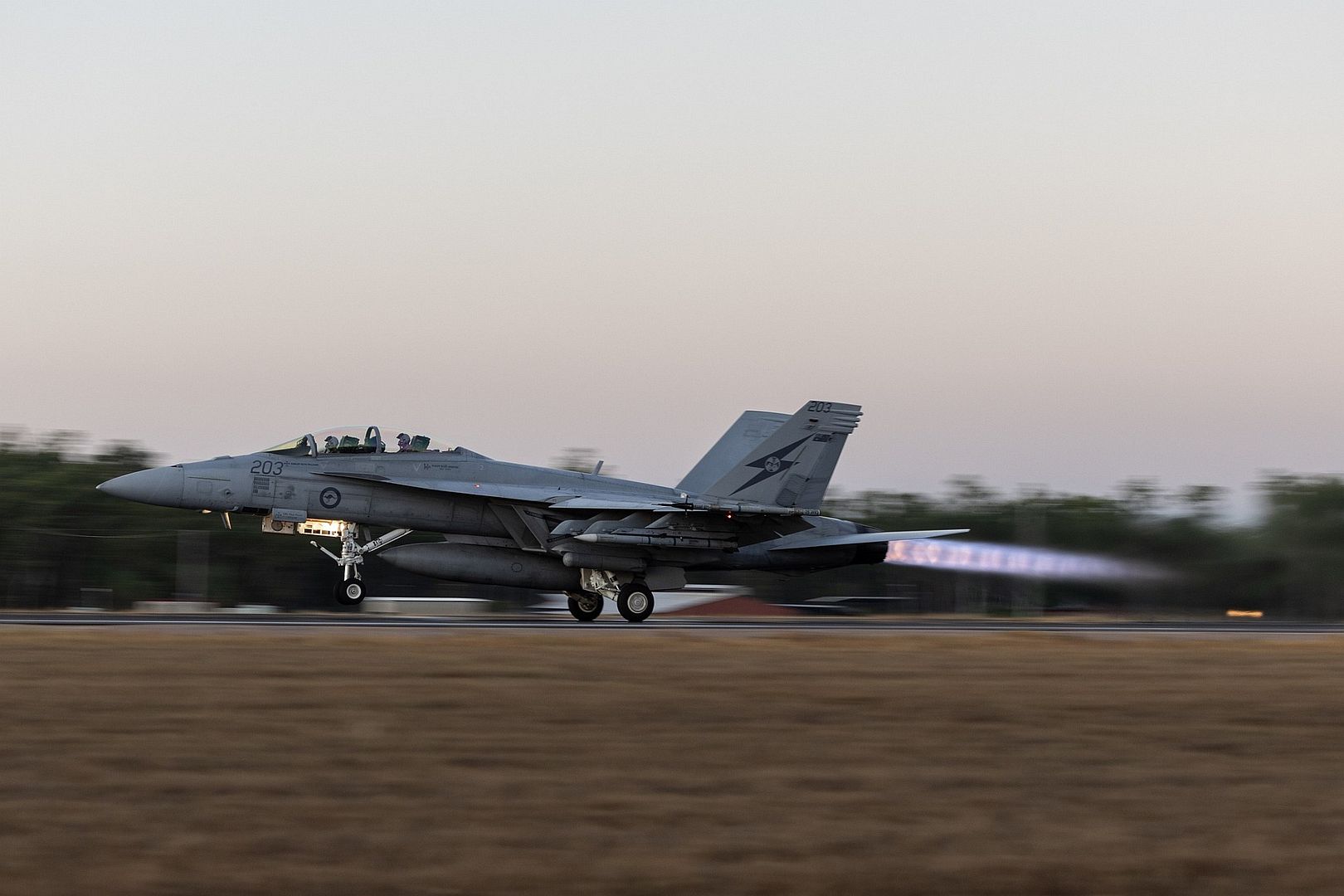
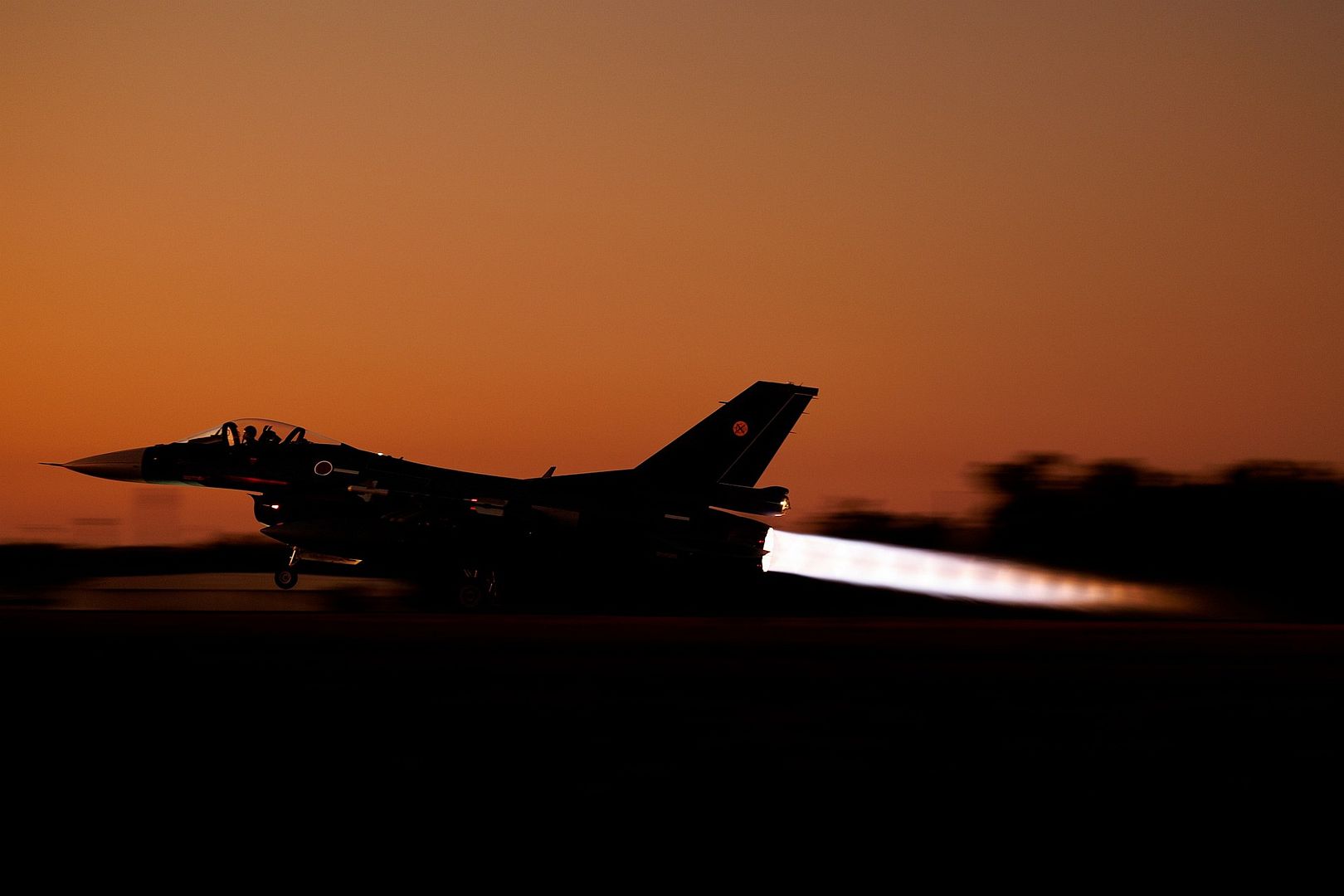
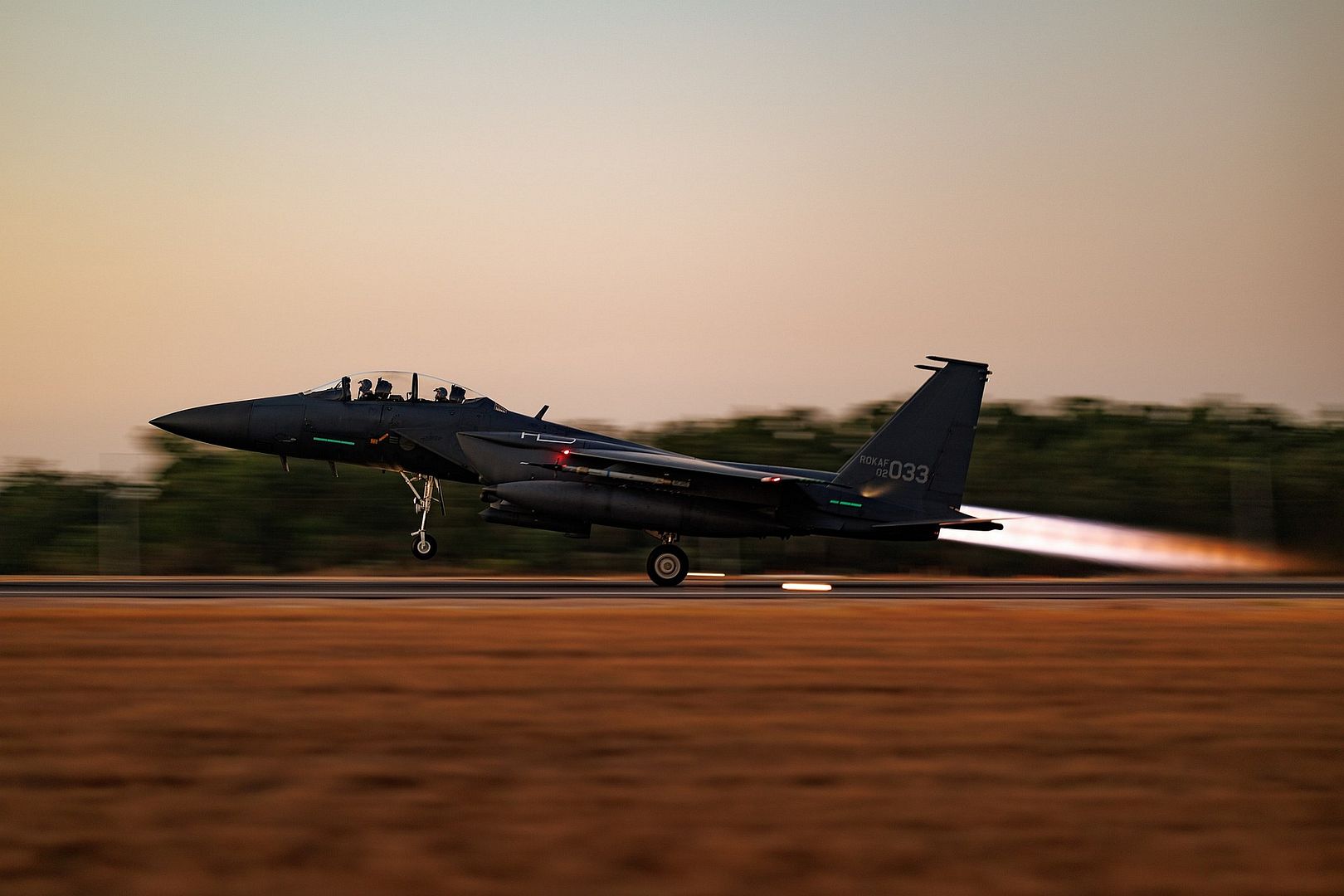
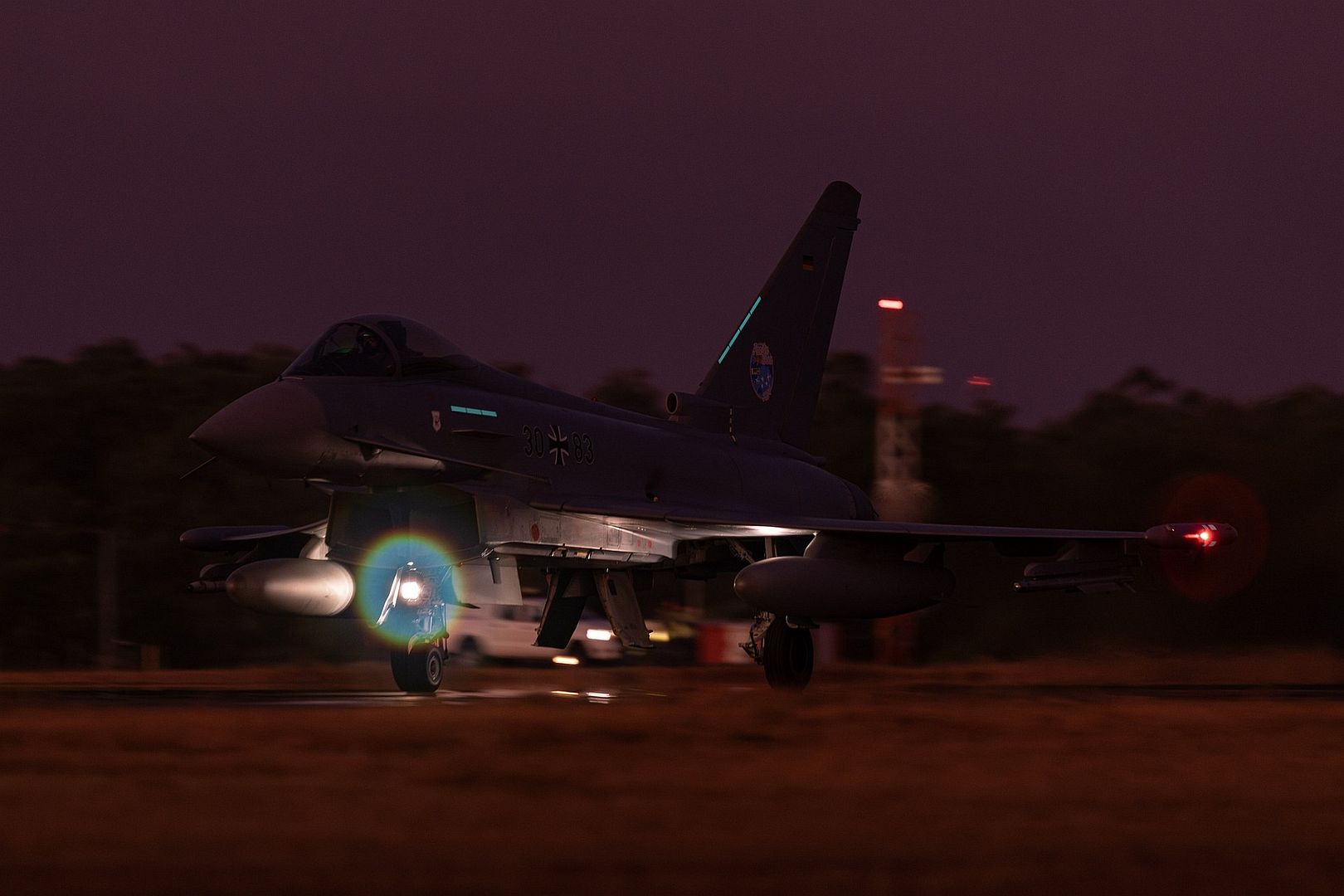
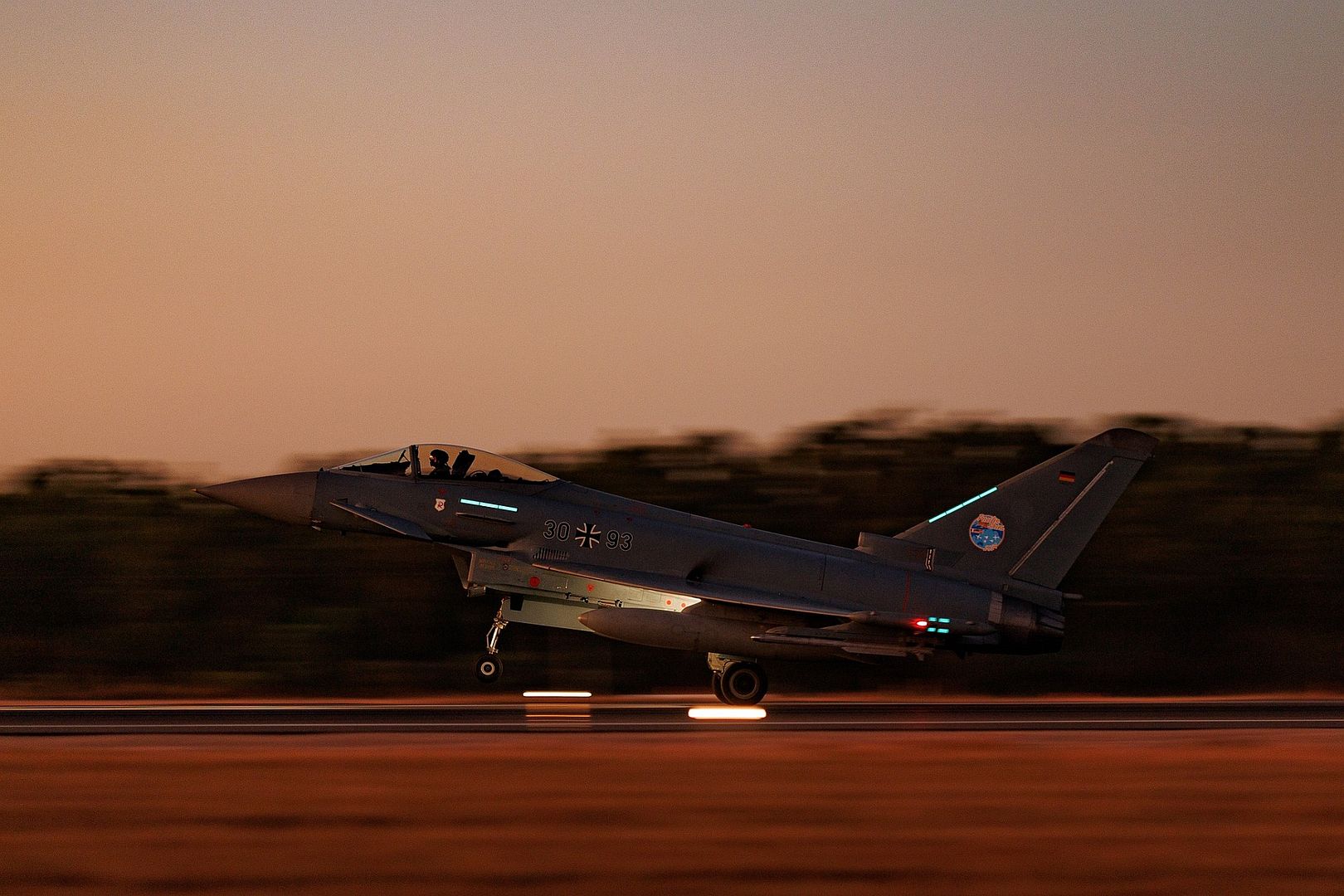
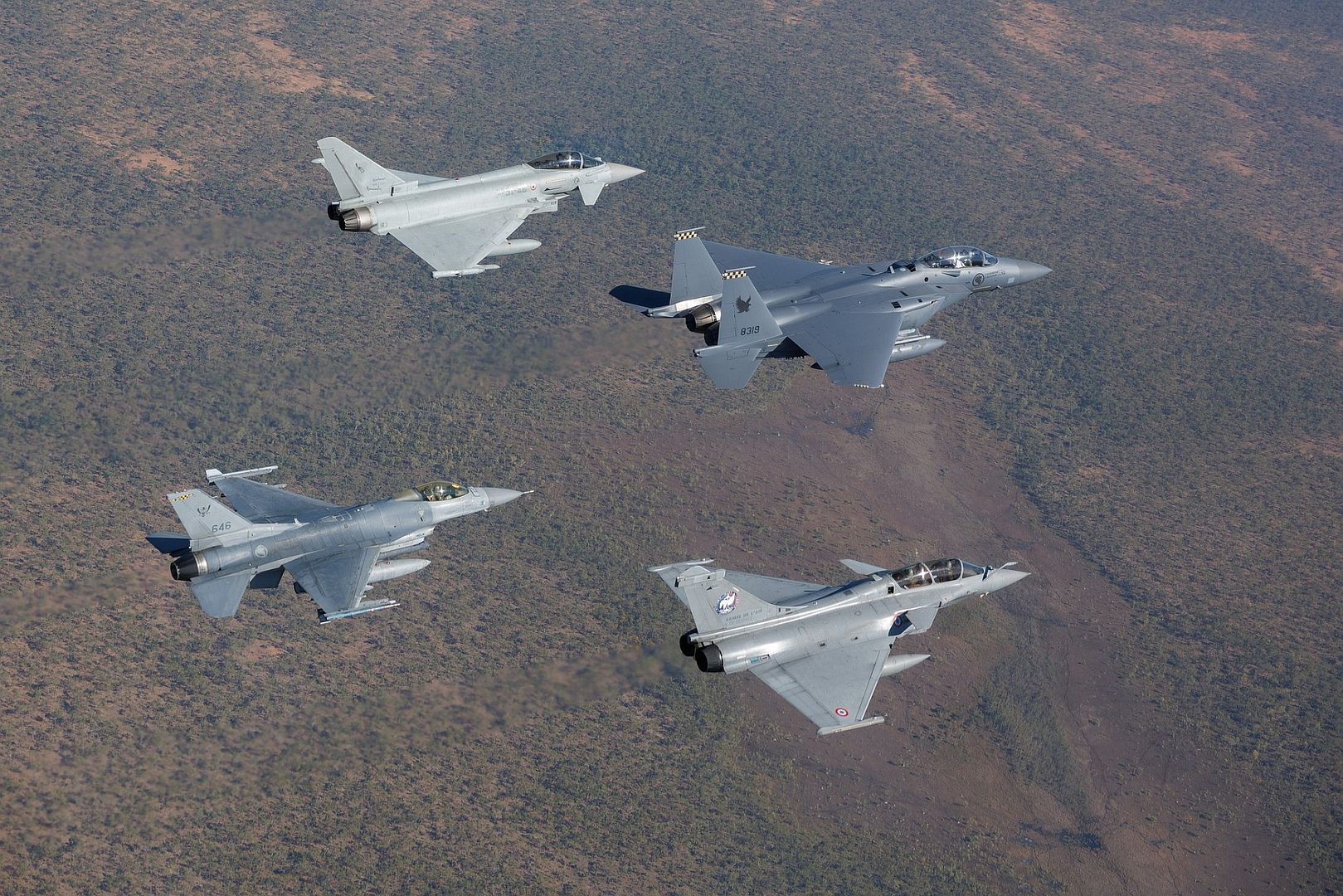
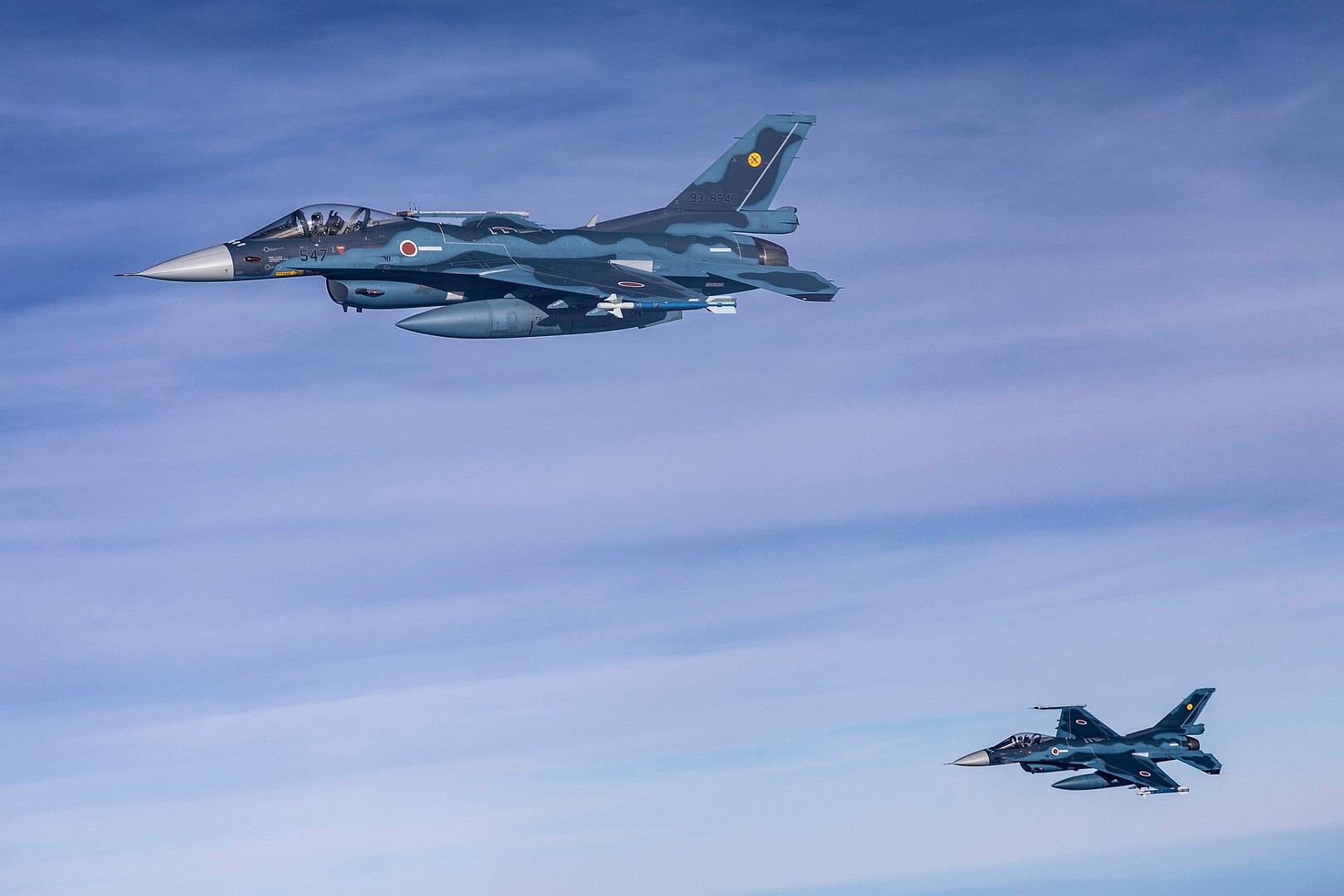

-
11 months ago
 Main AdminA B-52H Stratofortress from the 20th Bomb Squadron, Barksdale Air Force Base, La., takes off from Mihail Kogălniceanu Air Base, Romania, as part of Bomber Task Force Deployment 24-4, July 27, 2024. BTF 24-4 is a demonstration of cooperation, collaboration, interoperability, and solidarity to promote peace and security. (U.S. Air Force Photo by Senior Airman Seth Watson)
Main AdminA B-52H Stratofortress from the 20th Bomb Squadron, Barksdale Air Force Base, La., takes off from Mihail Kogălniceanu Air Base, Romania, as part of Bomber Task Force Deployment 24-4, July 27, 2024. BTF 24-4 is a demonstration of cooperation, collaboration, interoperability, and solidarity to promote peace and security. (U.S. Air Force Photo by Senior Airman Seth Watson)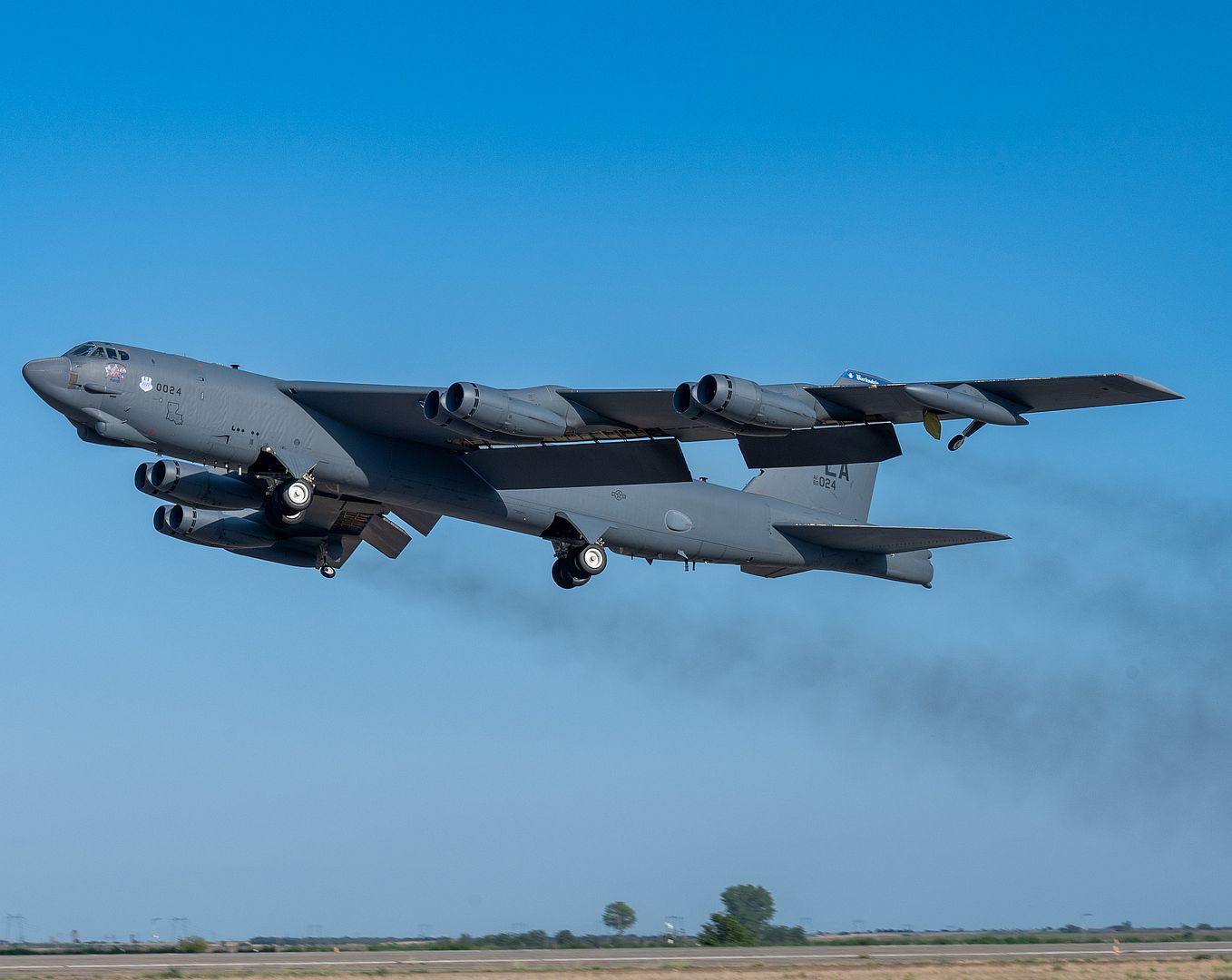
An F/A-18F Super Hornet from the "Gladiators" of Strike Fighter Squadron (VFA) 106 makes an arrested landing on the flight deck of the aircraft carrier USS Nimitz (CVN 68) in the Pacific Ocean, July 26, 2024. Nimitz is underway conducting routine operations. (U.S. Navy photo by Mass Communication Specialist 2nd Class Carson Croom)_106_makes_an_arrested_landing_on_the_flight_deck_of_the_aircraft_carrier_USS_Nimitz_(CVN_68)_in_the_Pacific_Ocean_July_26_2024..jpg?width=1920&height=1080&fit=bounds)
PHILIPPINE SEA (July 28, 2024) An F-35B Lightning II fighter aircraft from Marine Fighter Attack Squadron (VMFA) 121, taxies on the flight deck of the forward-deployed amphibious assault ship USS America (LHA 6), July 28. America, lead ship of the America Amphibious Ready Group, along with the 31st Marine Expeditionary Unit, are underway conducting routine operations in the U.S. 7th Fleet area of operations. U.S. 7th Fleet is the U.S. Navy’s largest forward-deployed numbered fleet, and routinely interacts and operates with allies and partners in preserving a free and open Indo-Pacific region. (U.S. Navy photos by Mass Communication Specialist Seaman Kenneth
Melseth)_121_taxies_on_the_flight_deck_of_the_forward-deployed_amphibious_assault_ship_USS_America-1.jpg?width=1920&height=1080&fit=bounds)
_121_taxies_on_the_flight_deck_of_the_forward-deployed_amphibious_assault_ship_USS_America.jpg?width=1920&height=1080&fit=bounds)
An F-35C Lightning II from the "Rough Raiders" of Strike Fighter Squadron (VFA) 125 prepares to launch from the flight deck of the aircraft carrier USS Nimitz (CVN 68) in the Pacific Ocean, July 26, 2024. Nimitz is underway conducting routine operations. (U.S. Navy photo by Mass Communication Specialist 2nd Class Carson Croom)_125_prepares_to_launch_from_the_flight_deck_of_the_aircraft_carrier_USS_Nimitz.jpg?width=1920&height=1080&fit=bounds)
An F-35C Lightning II from the "Sidewinders" of Strike Fighter Squadron (VFA) 86 performs a touch and go on the flight deck of the aircraft carrier USS Nimitz (CVN 68) in the Pacific Ocean, July 26, 2024. Nimitz is underway conducting routine operations. (U.S. Navy photo by Mass Communication Specialist 2nd Class Carson Croom)_86_performs_a_touch_and_go_on_the_flight_deck_of_the_aircraft_carrier_USS_Nimitz.jpg?width=1920&height=1080&fit=bounds)
Mirabel, Canada, 29 July 2024 – Croatia’s flag carrier and a member of Star Alliance, Croatia Airlines, has taken delivery of its first A220-300 at Airbus Mirabel site, in Canada. This delivery is part of the renewal of the airline's entire fleet with new-generation aircraft, the biggest project in the history of the company which is celebrating its 35th anniversary this year.
This is the first aircraft delivered to the airline from the committed 13 A220-300 and two A220-100. The A220 will bring a significant technological step forward for the airline, introducing greater efficiency with 25% lower fuel burn and CO2 emissions per seat compared to previous generation aircraft.
The A220 brings customers a 50% reduced noise footprint when compared to previous generation aircraft and around 40% lower NOx emissions than industry standards. As with all Airbus aircraft, the A220 is already able to operate with up to 50% Sustainable Aviation Fuel (SAF). Airbus aims for all its aircraft to be capable of operating with up to 100% SAF by 2030. The A220 will play an important role in helping decrease Croatia Airlines’ operating costs and environmental impact.
The A220 is the only aircraft purpose-built for the 100-150 seat market. The aircraft can fly non-stop up to 3,600 nautical miles or 6,700 kilometres making the A220 the ideal solution to facilitate Croatia Airlines’ gradual expansion of its network of flights and ensure that the service provided is of better quality and that passenger satisfaction is enhanced. Combining state-of-the-art aerodynamics, advanced materials and Pratt & Whitney’s latest-generation GTF™ engines, the A220 features an innovative cabin design for superior passenger comfort thanks to widest seats, largest windows and most spacious bins in its class.
As of the end of June 2024, around 30 customers have ordered more than 900 A220 aircraft confirming its leading position in the small single-aisle market. Over 340 A220s are currently flying on more than 1,400 routes and more than 440 destinations worldwide. To date, more than 100 million passengers have flown on the A220.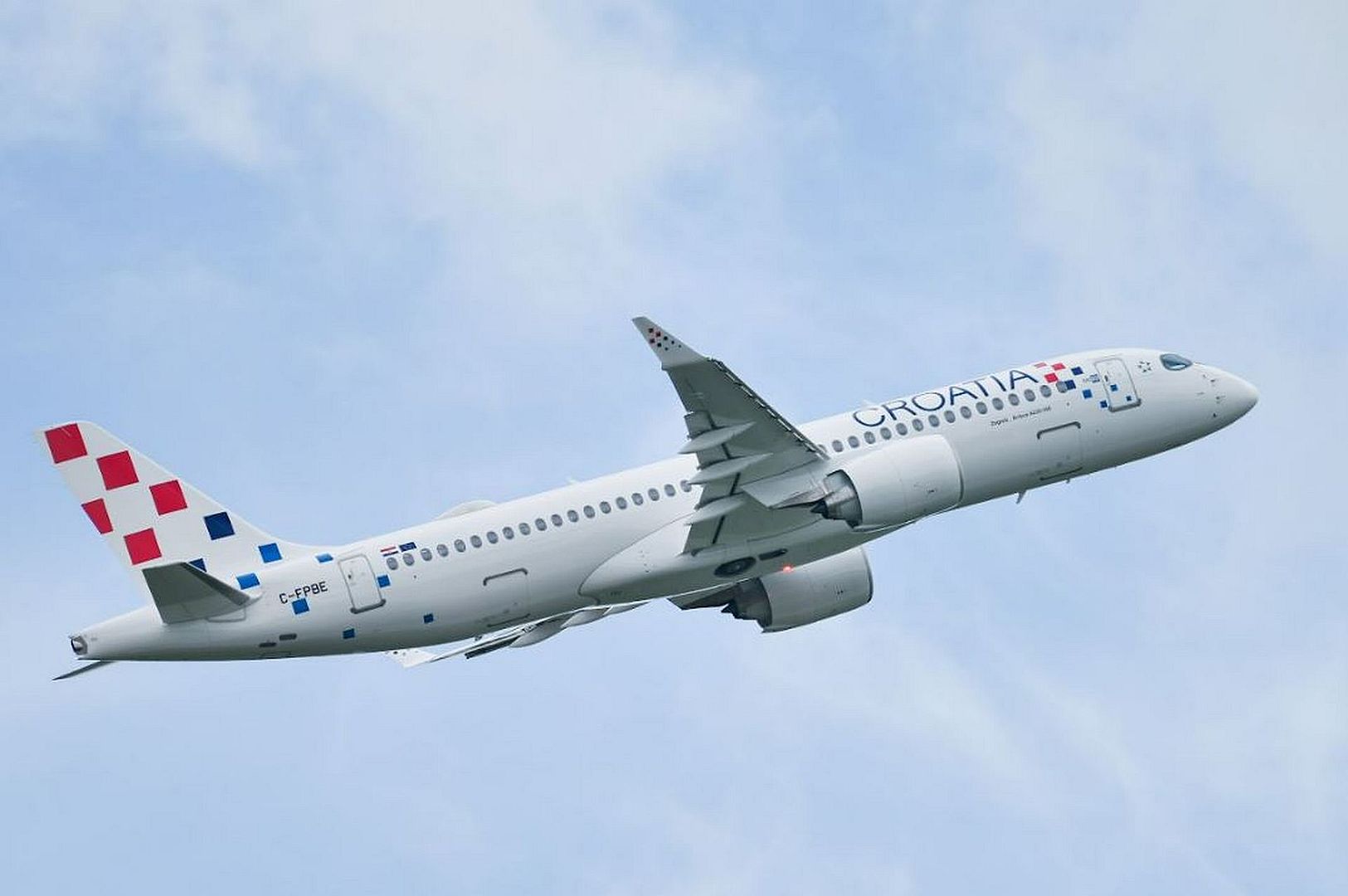
The RAF Poseidon Force is conducting its longest training detachment to date, both in terms of duration and distance.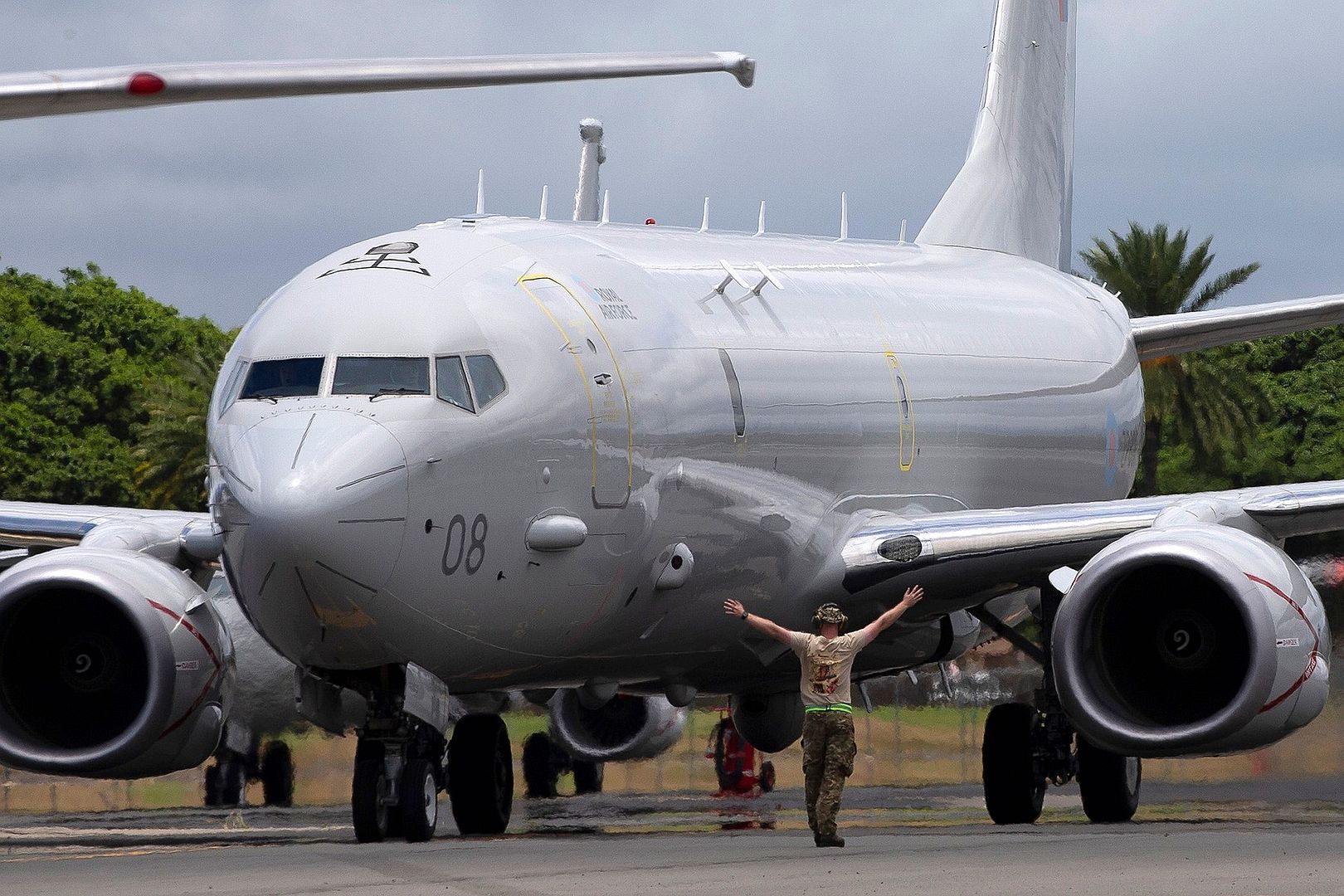
Rim of the Pacific 2024 (#RIMPAC2024 ????) is the largest maritime exercise in the Indo-Pacific region, and two Poseidon aircraft from RAF Lossiemouth based CXX and 201 Squadrons are flying as part of a multi-national Combined Task Force on anti-submarine warfare sorties.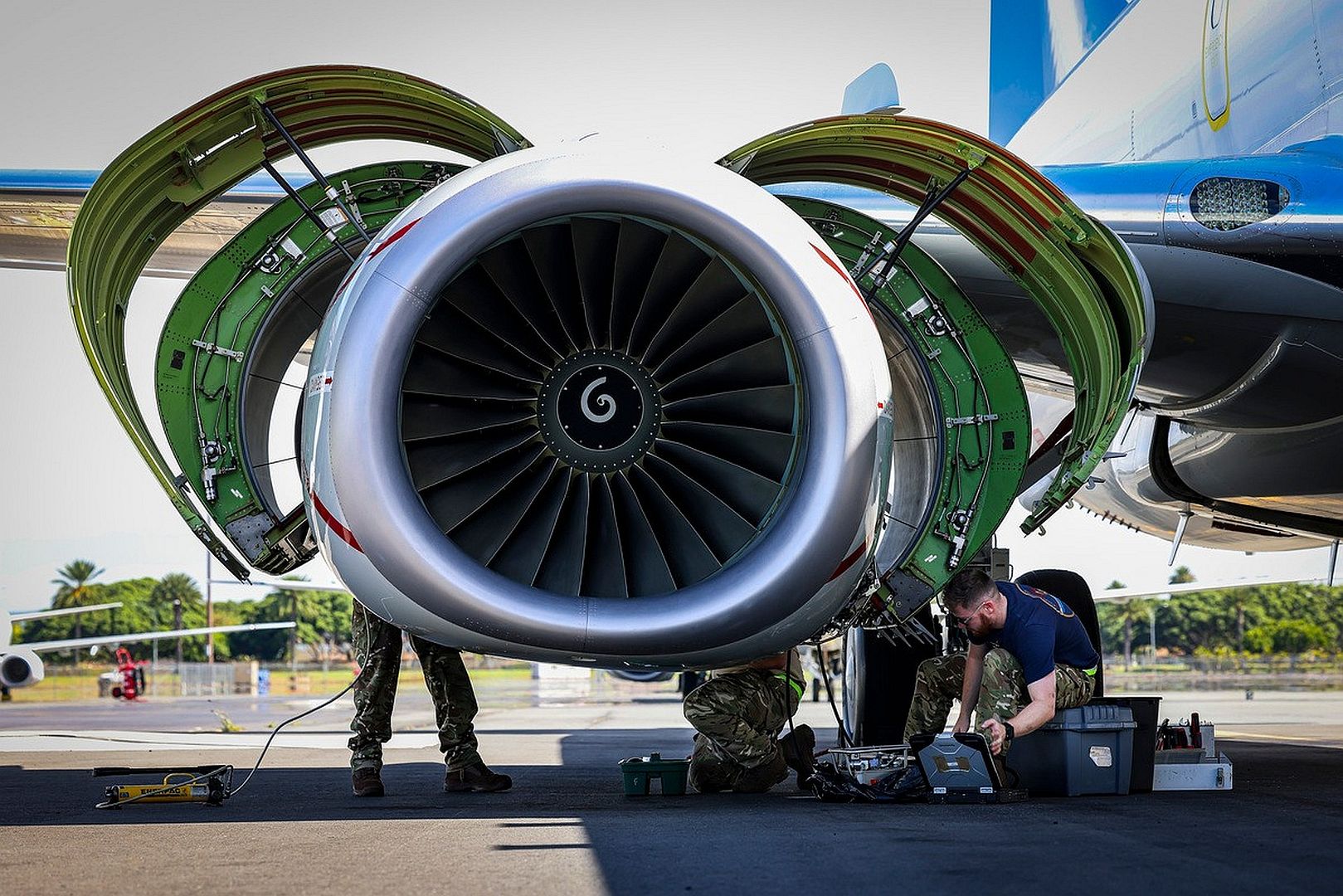
The exercise provides training on a scale & of a complexity unavailable in Europe, in unfamiliar waters and against both nuclear and diesel powered submarines. Operating at such long range from Lossiemouth and in high humidity is also providing training value to the engineering team that is also deployed to Hawaii.
(Photos courtesy of the RAF)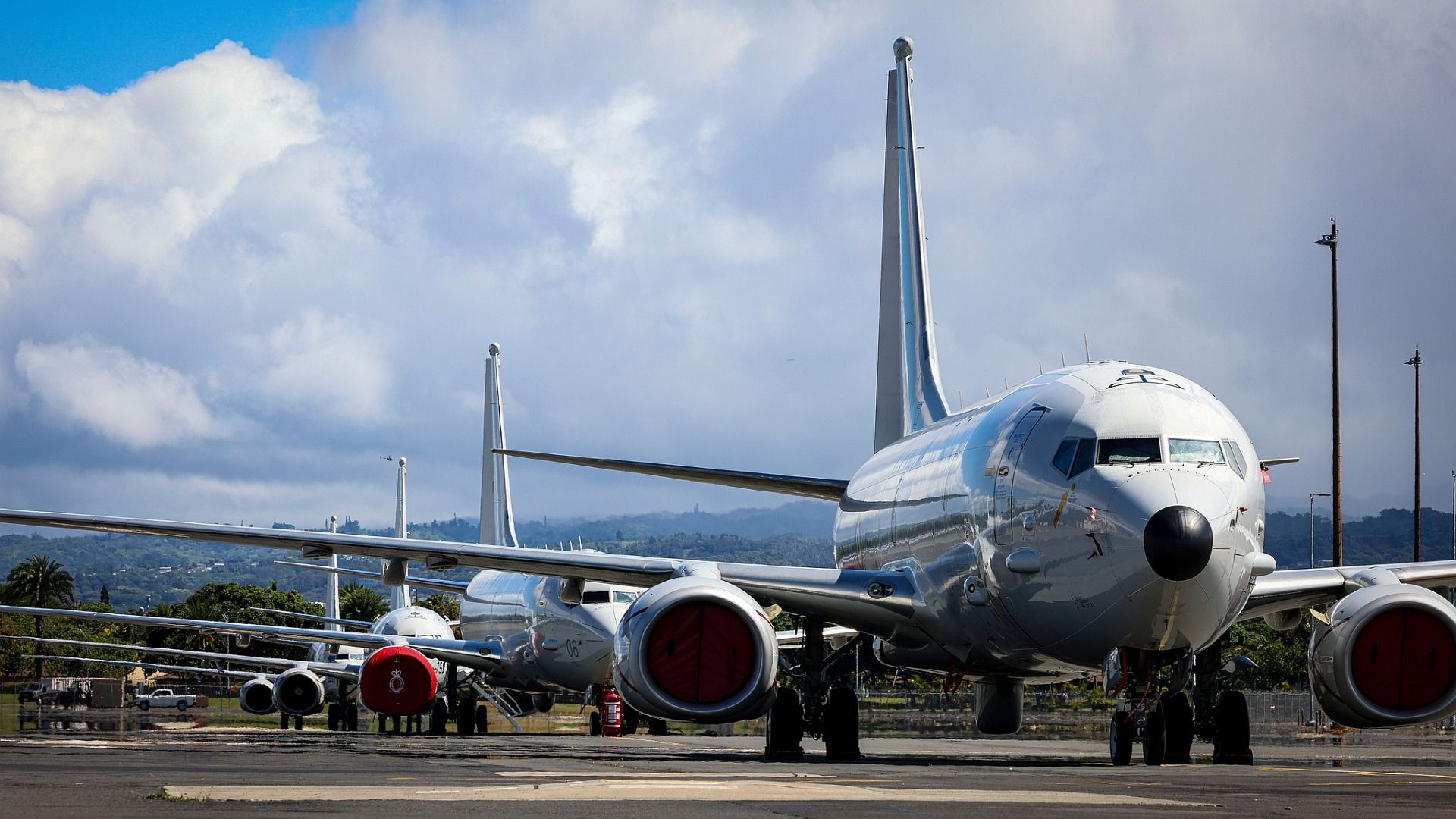
The Royal Navys flagship HMS Queen Elizabeth is scheduled to return home to HM Naval Base Portsmouth tomorrow following four months of repairs in Scotland and a short intensive spell at sea - after passing under the Forth Bridges, pictured - to test her systems.
The aircraft carrier will now prepare for deployment this autumn.
(Photo Courtesy of the RN)
Post a reply
- Go to Next topic
- Go to Welcome
- Go to Introduce Yourself
- Go to General Discussion
- Go to Screenshots, Images and Videos
- Go to Off topic
- Go to Works in Progress
- Go to Skinning Tips / Tutorials
- Go to Skin Requests
- Go to IJAAF Library
- Go to Luftwaffe Library
- Go to RAF Library
- Go to USAAF / USN Library
- Go to Misc Library
- Go to The Ops Room
- Go to Made in Germany
- Go to Campaigns and Missions
- Go to Works in Progress
- Go to Juri's Air-Raid Shelter
- Go to Campaigns and Missions
- Go to Works in Progress
- Go to Skinpacks
- Go to External Projects Discussion
- Go to Books & Resources
